Introduced in 2015, the McLaren 570S brought the British firm into a new era. Not only it completed a three-car lineup, a first for McLaren, but it also became the company's most affordable vehicle yet. Available in two versions with different outputs, the 570S also spawned a GT model with additional cargo space, softer suspension and improved insulation for touring enthusiasts. Come 2017, and the 570S had its roof chopped off (not literally, of course) to become the 570S Spider.
Unlike its siblings, the 570S Spider didn't benefit from a glamorous unveiling at an auto show, but the drop-top supercar is just as important as any other McLaren. With the 570S giving the British firm access to a new niche, one that includes the iconic Porsche 911, the Spider now gives McLaren a weapon against the 911 Cabriolet and the Audi R8 Spyder. We will see the sports car in the metal at the 2017 Frankfurt Motor Show, but until then let's have a closer look at the design and the spec sheet.
Updated 07/25/2017: McLaren dropped a series of new images for the new 570S Spider showing the car in three new colors: Curacao Blue, Sicilian Yellow and Vega Blue.
Continue reading to learn more about the 2018 McLaren 570S Spider.
2018 McLaren 570S Spider
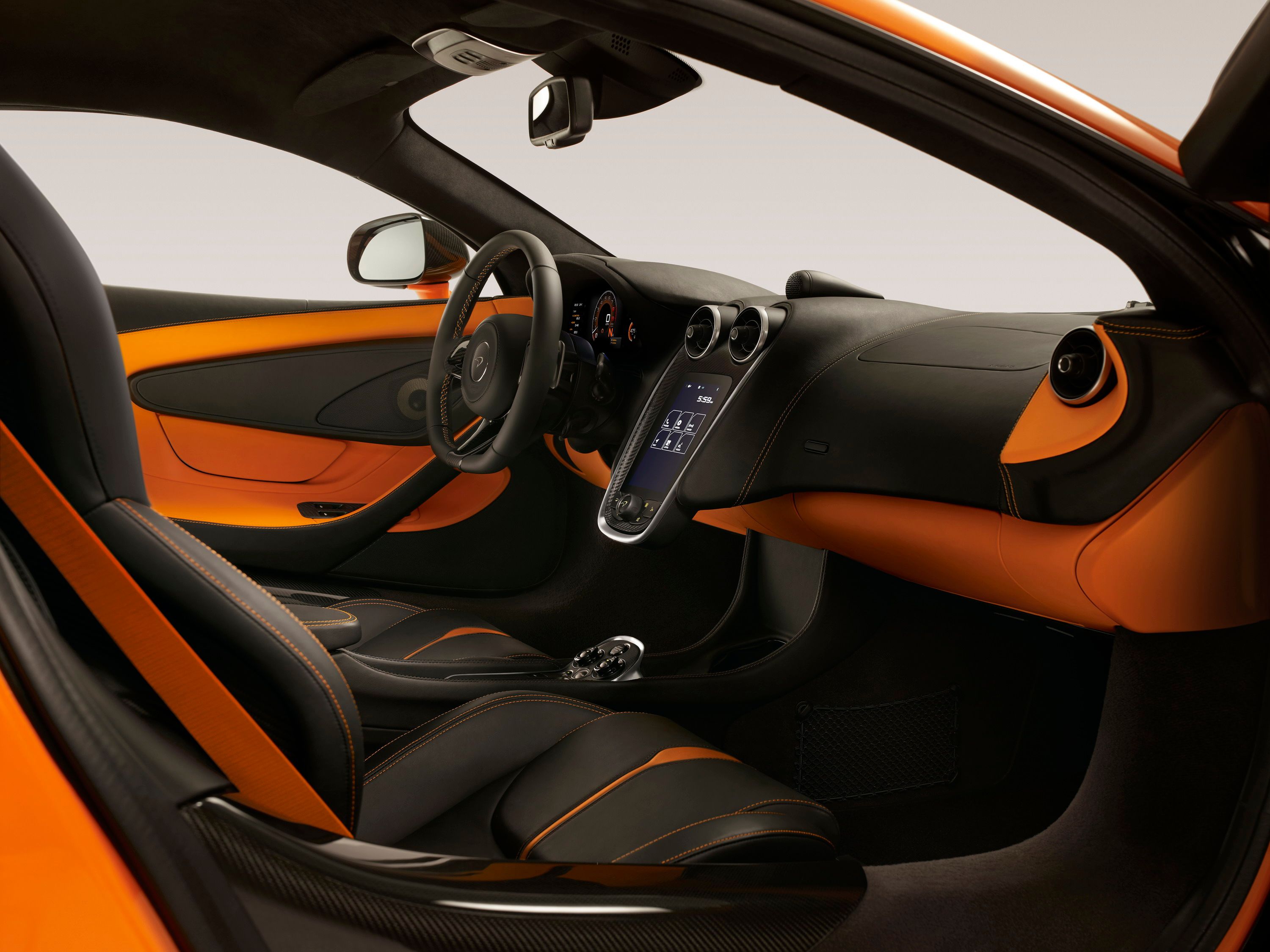

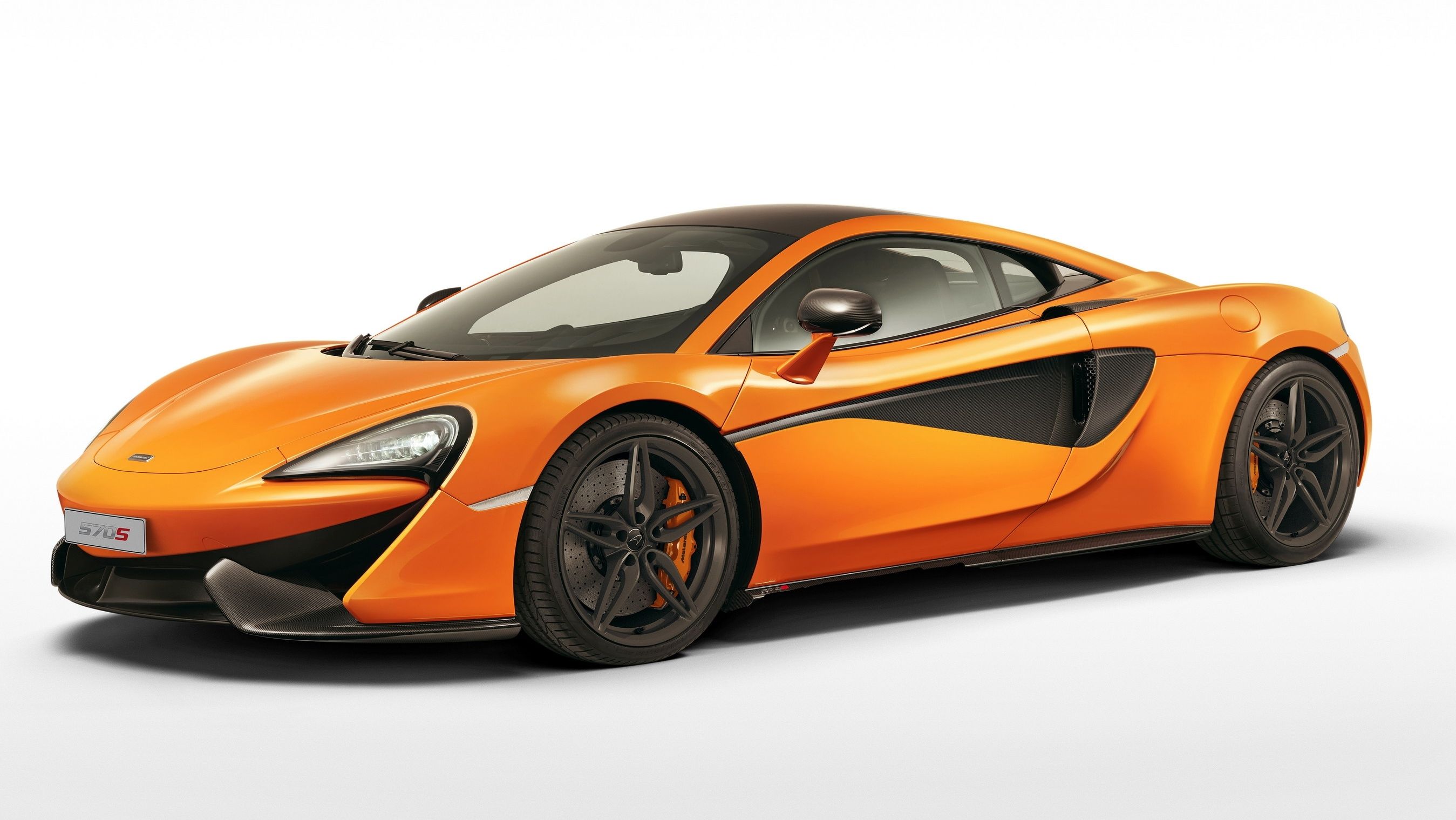
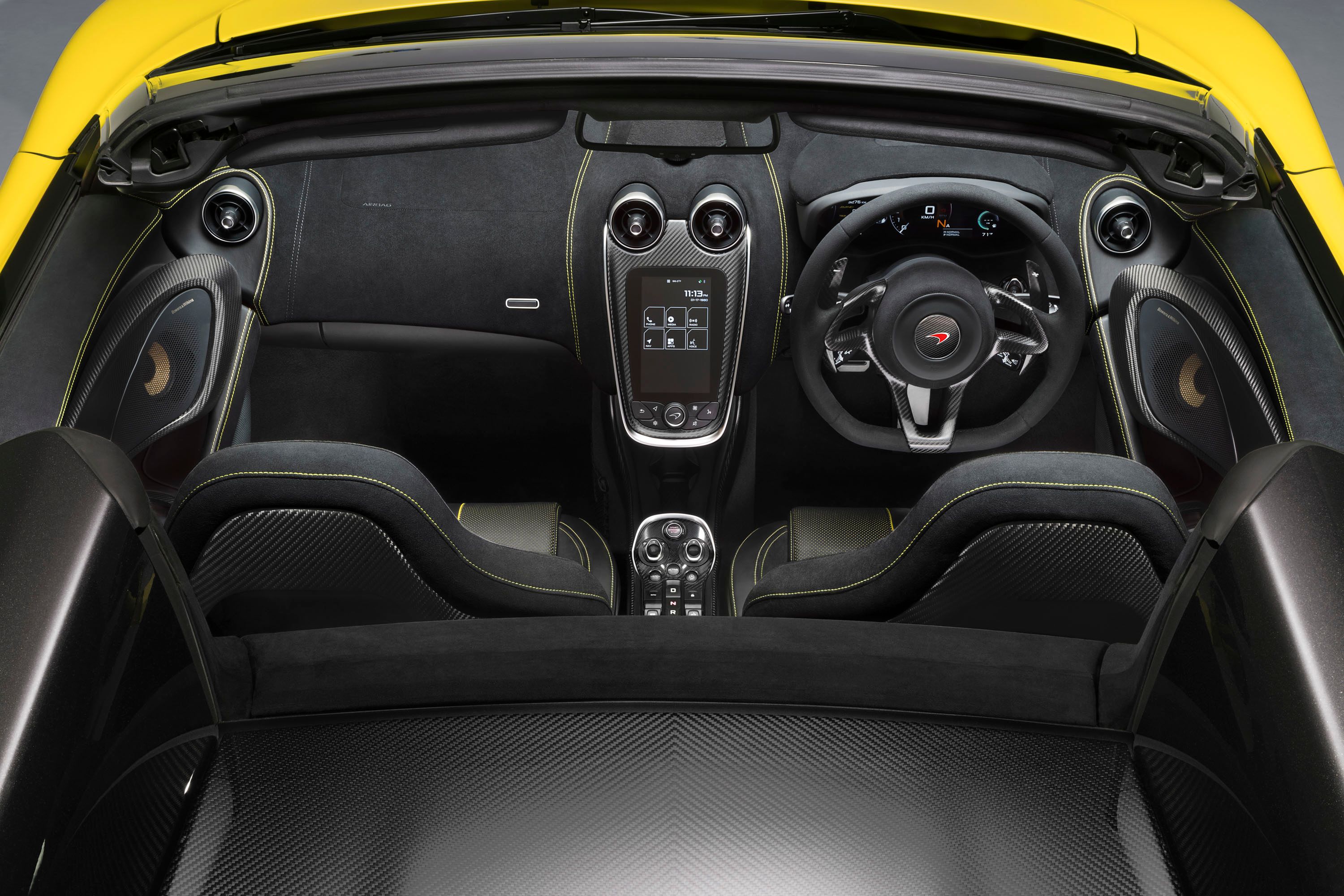
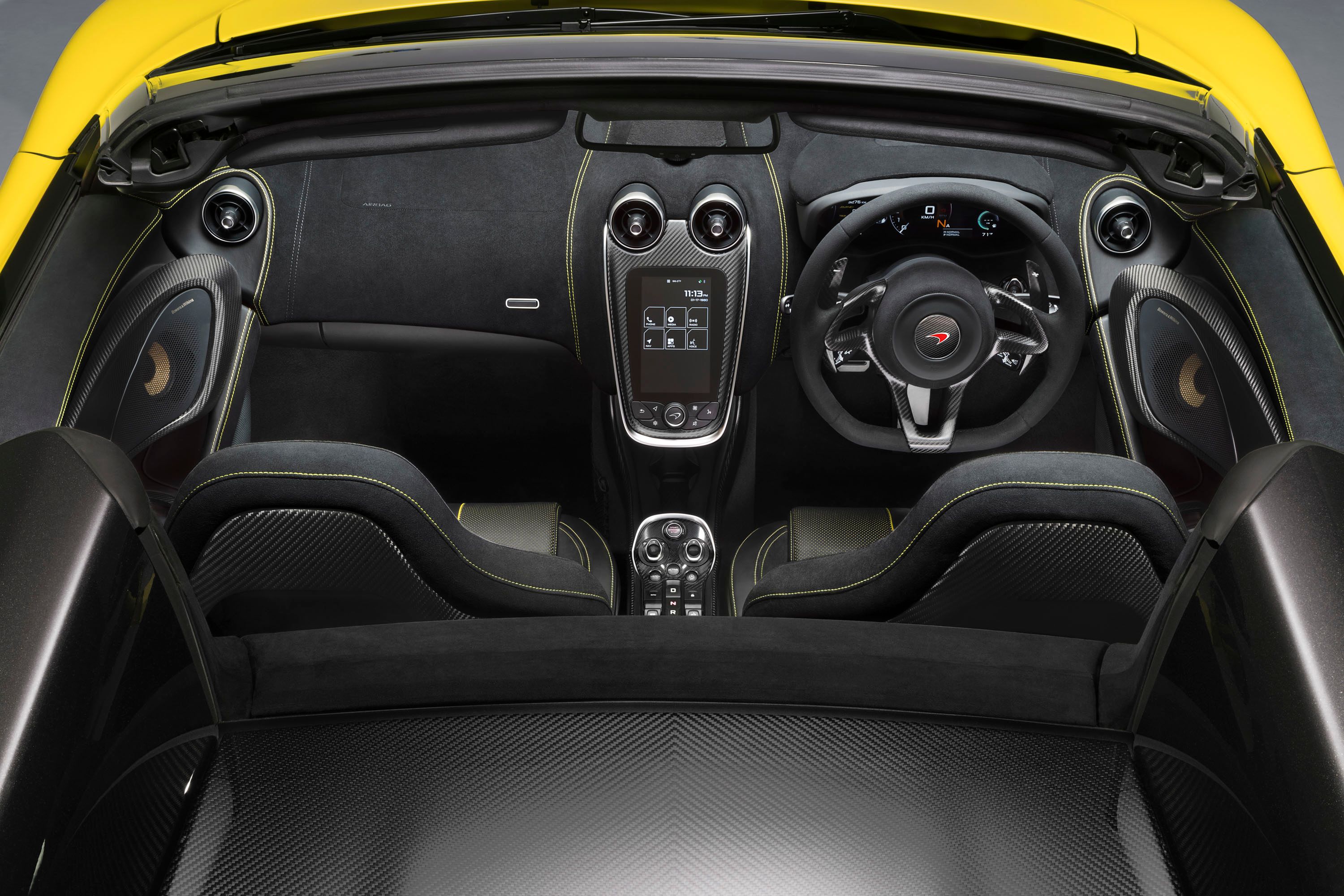
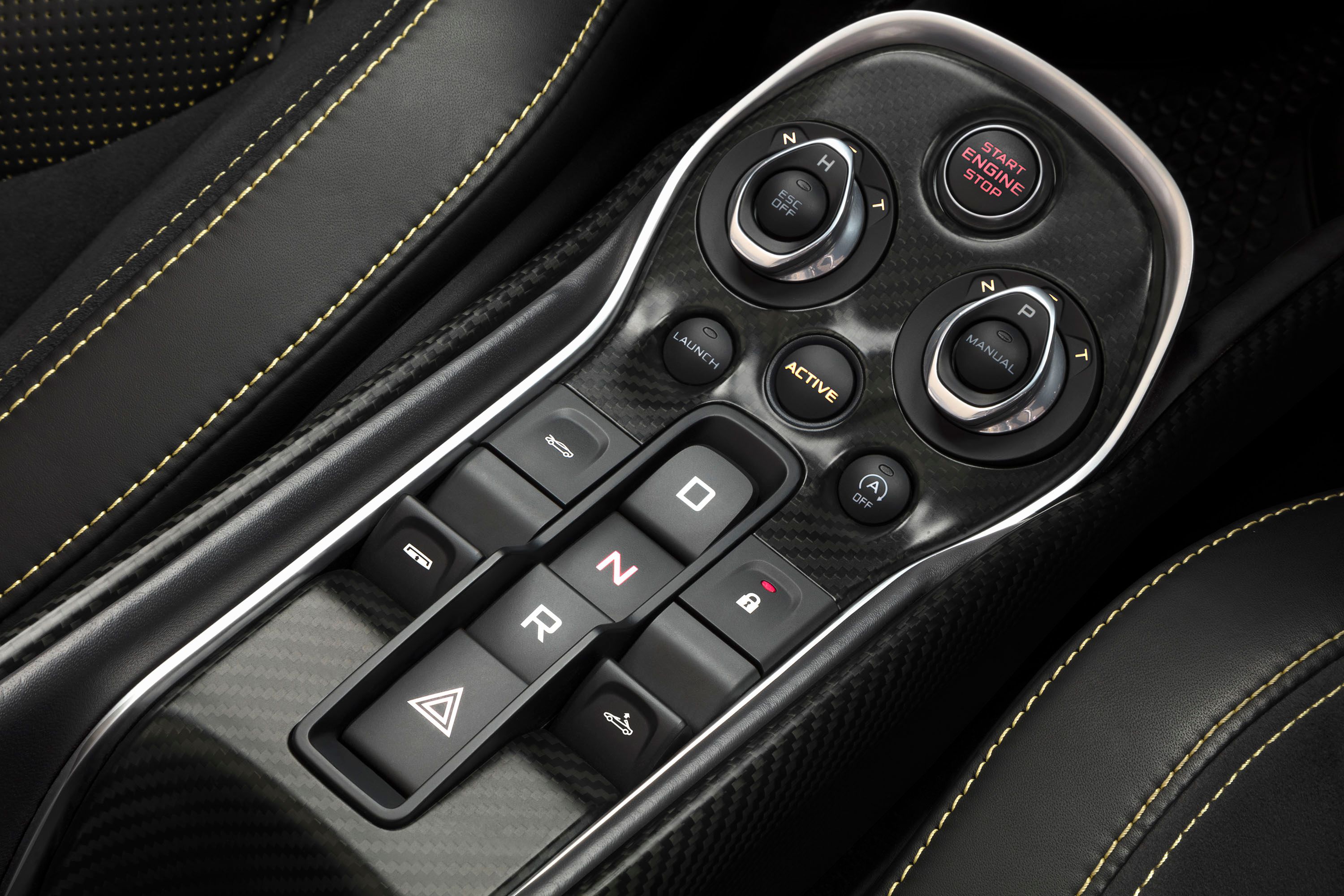
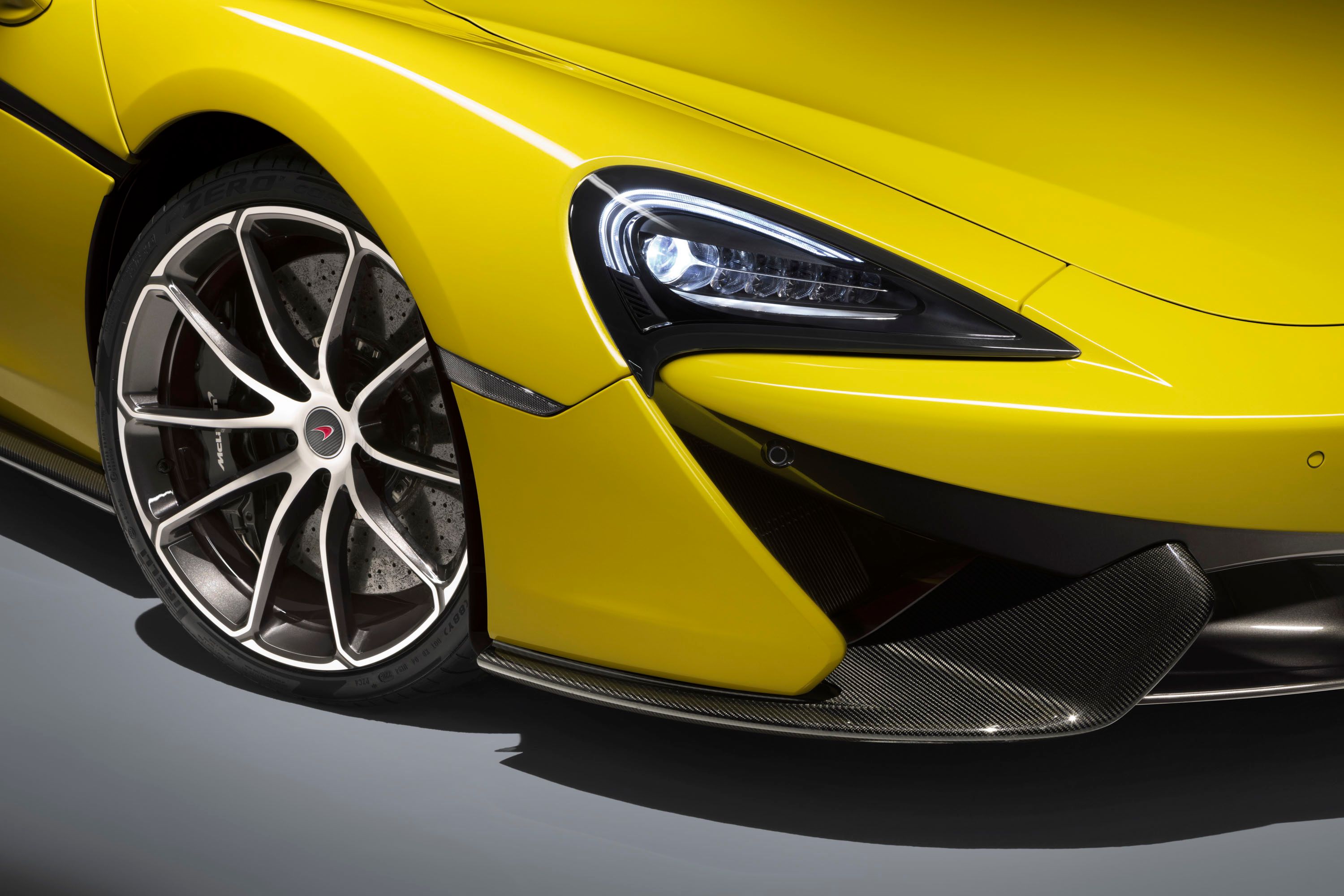
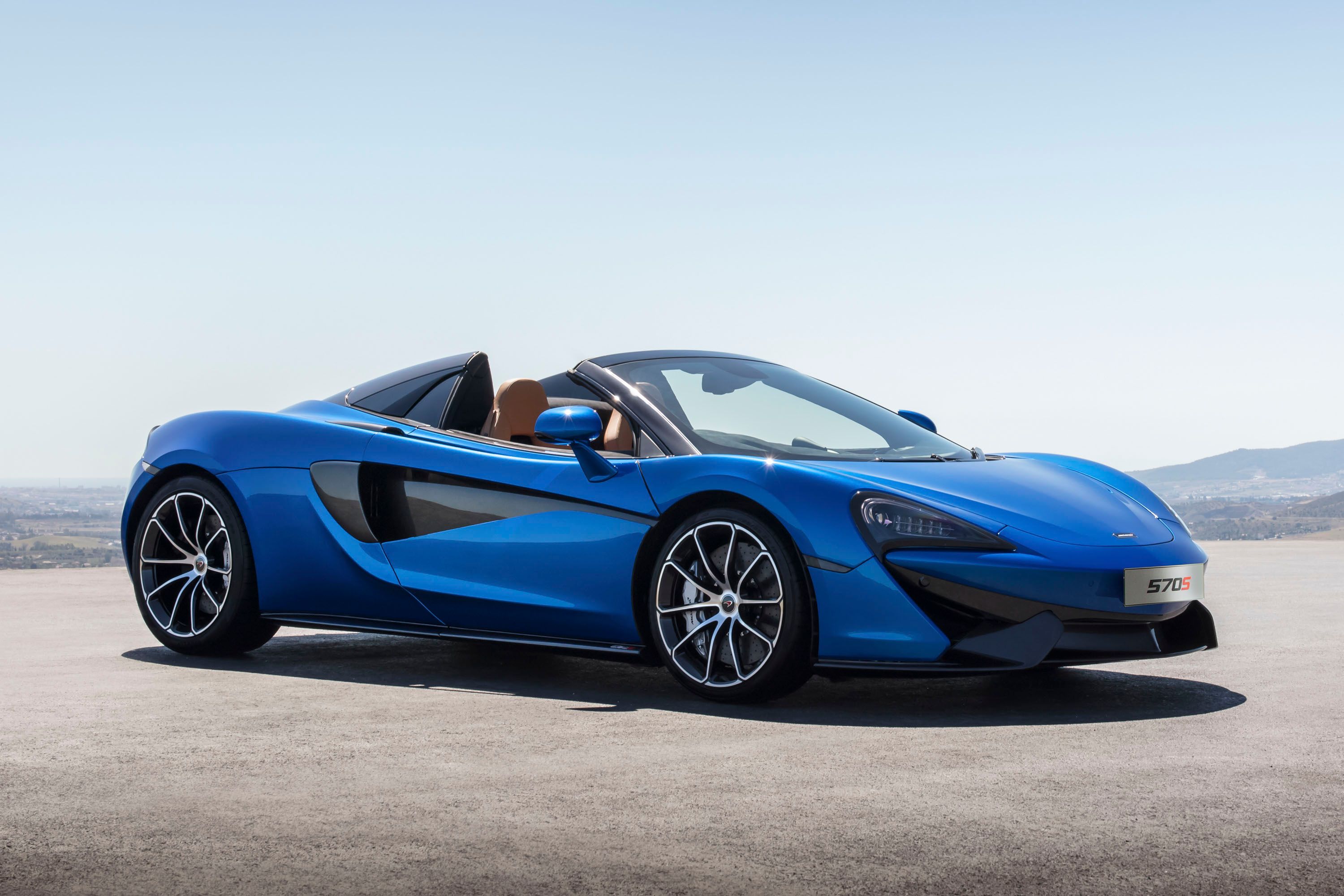
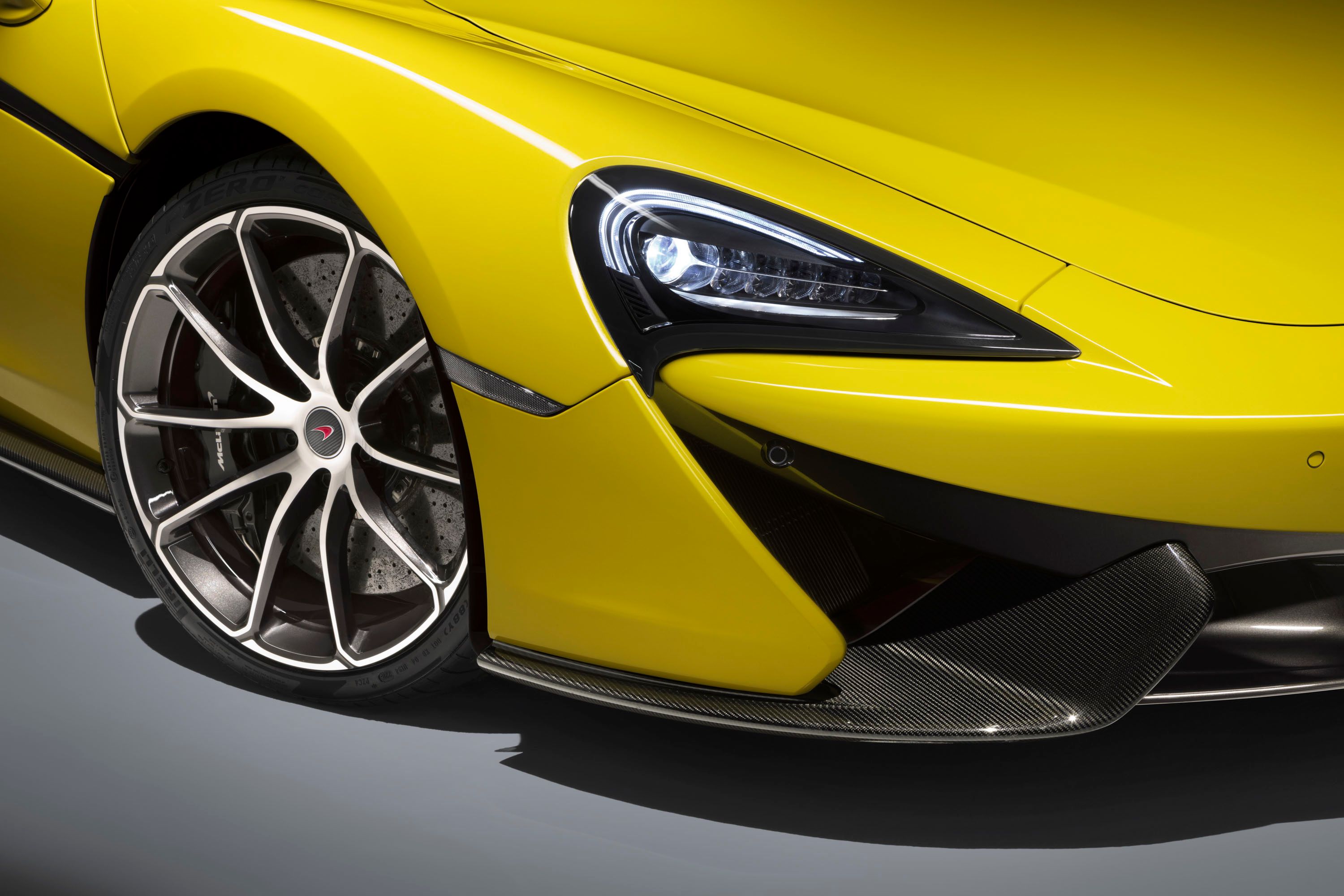
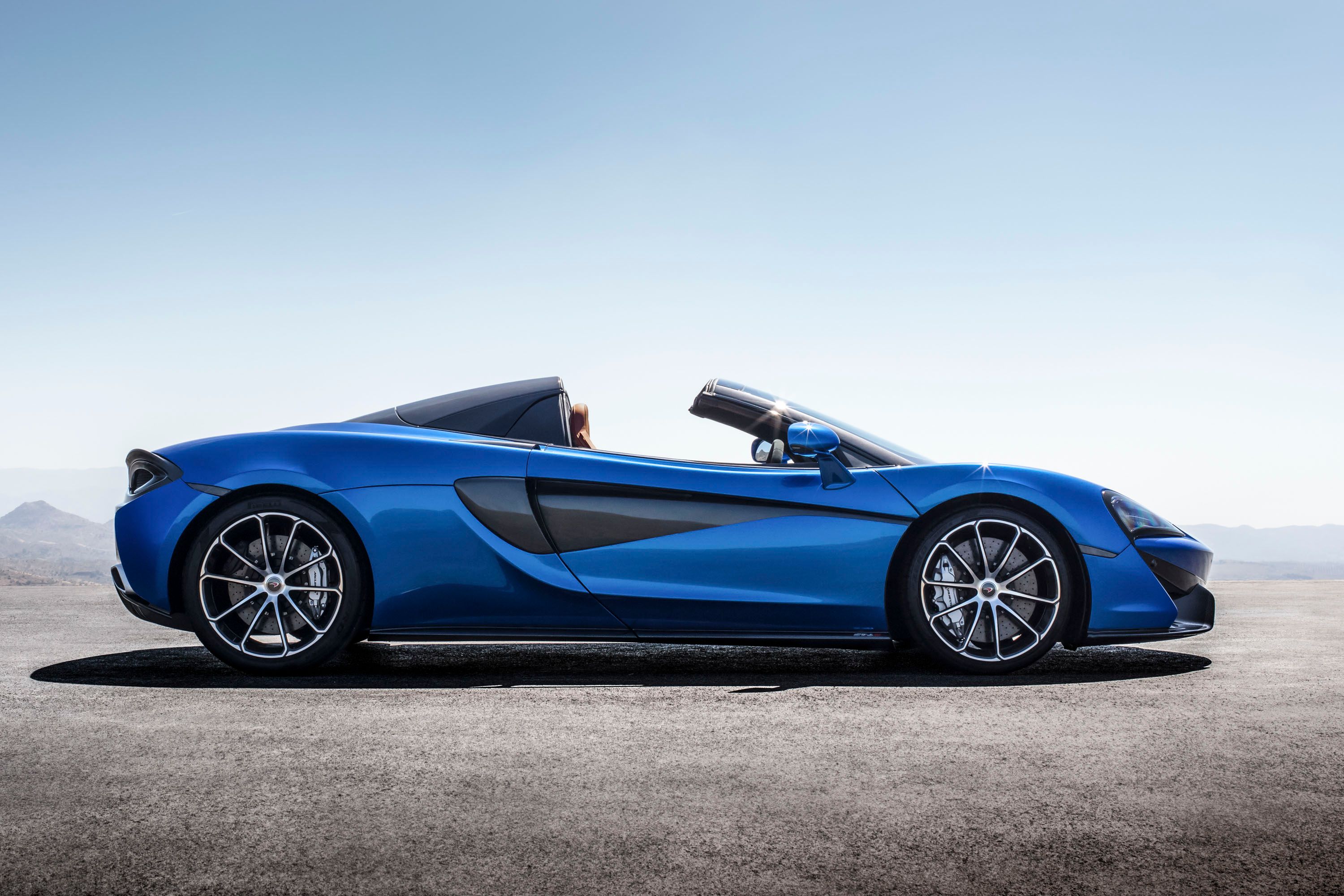
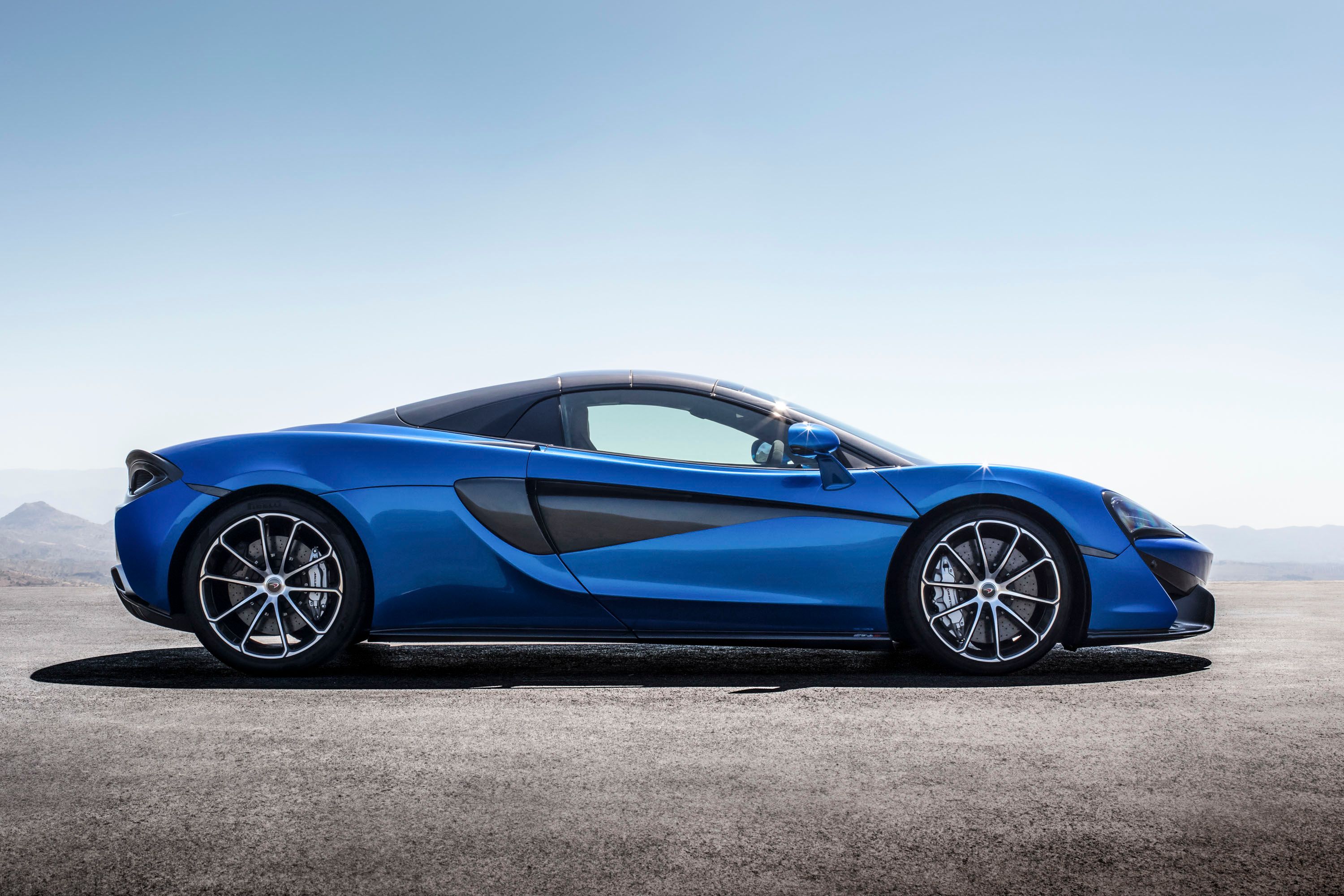
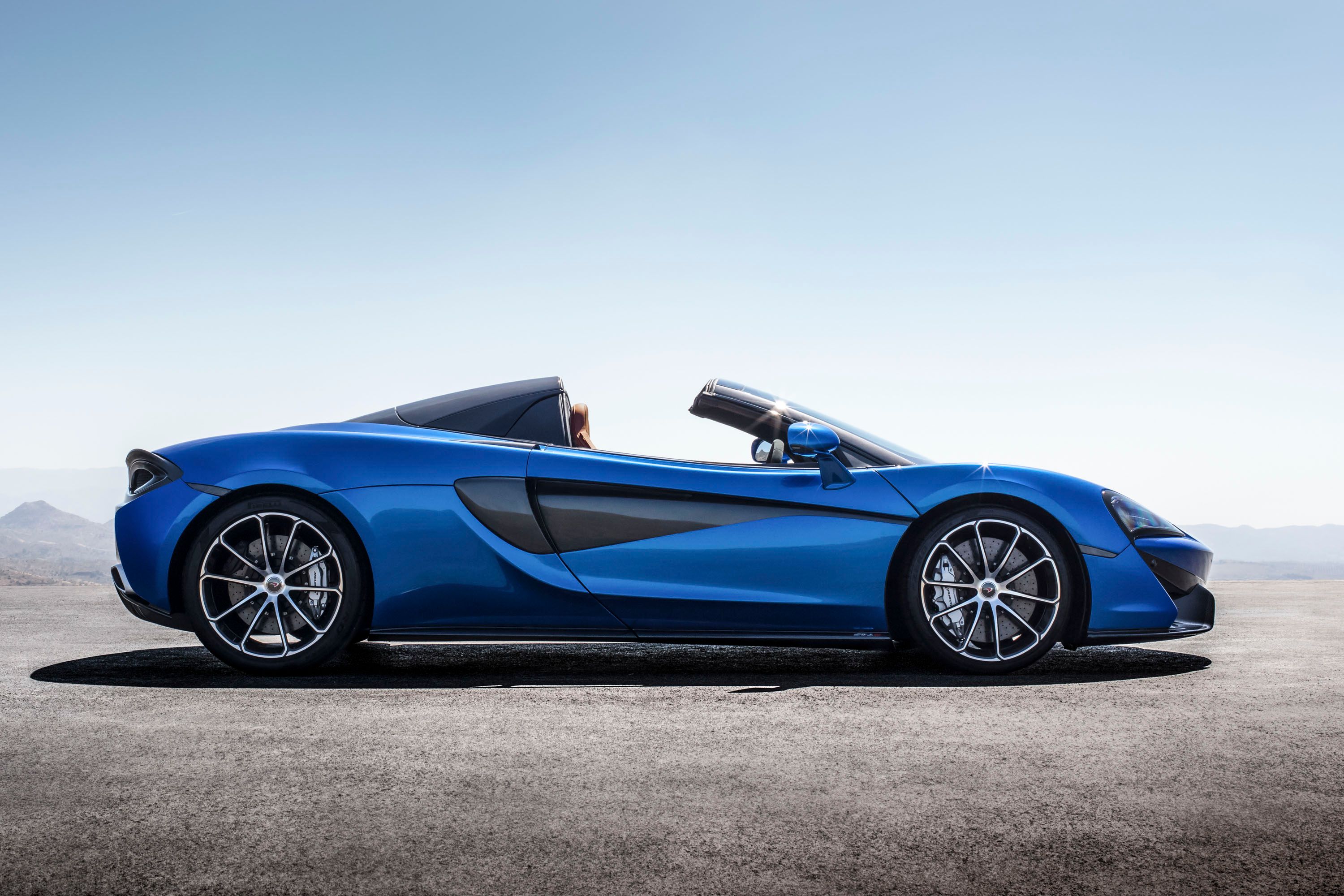
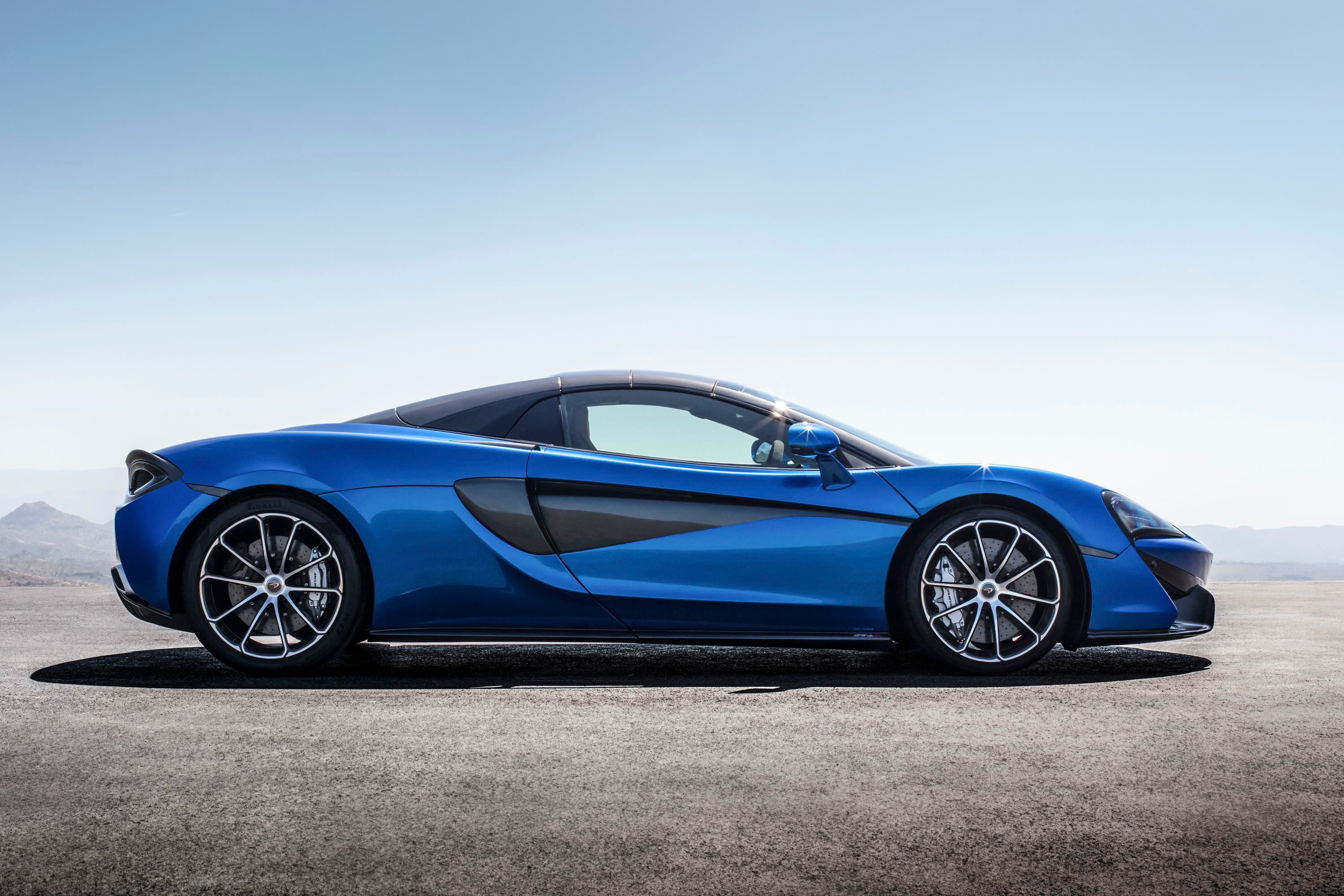
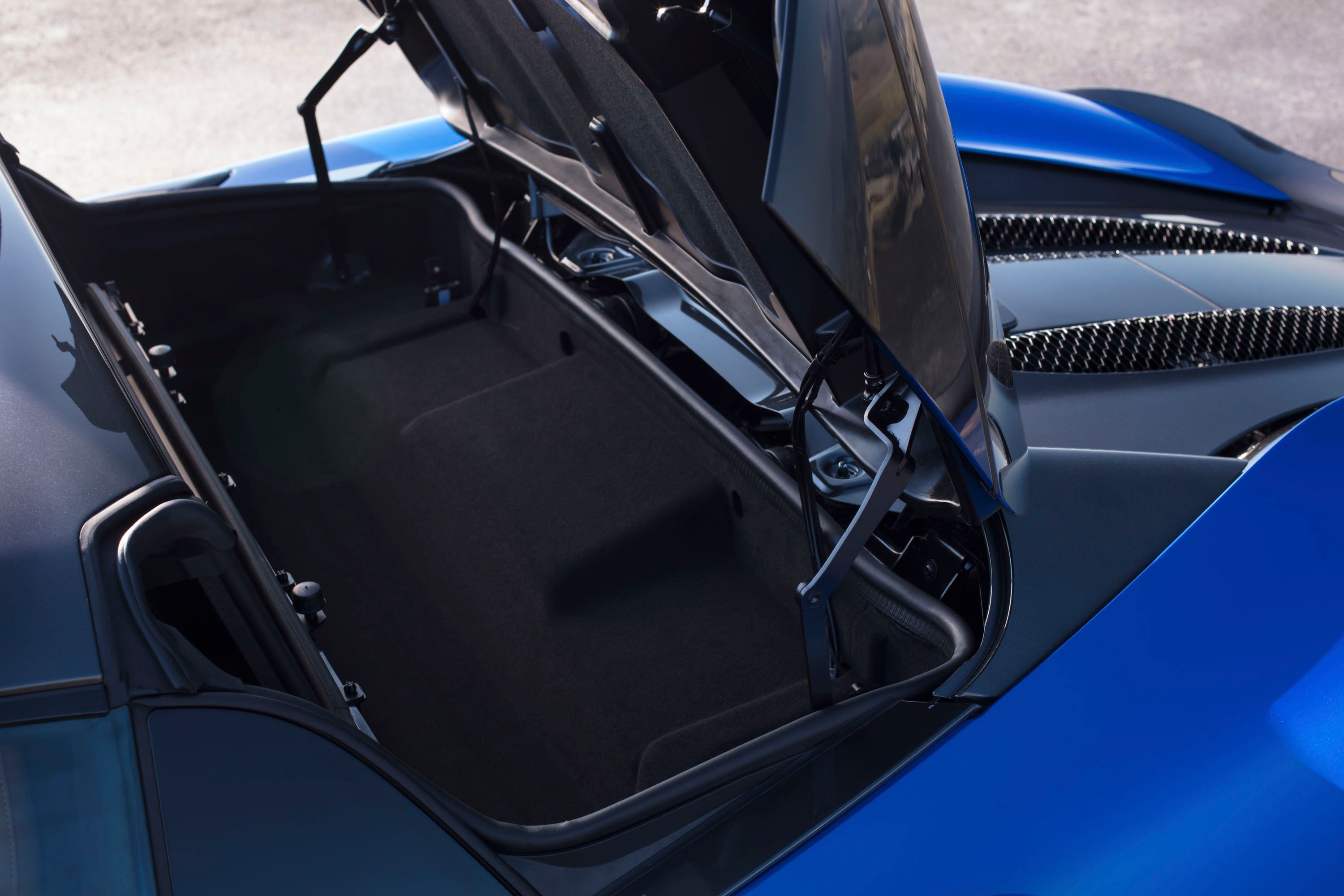
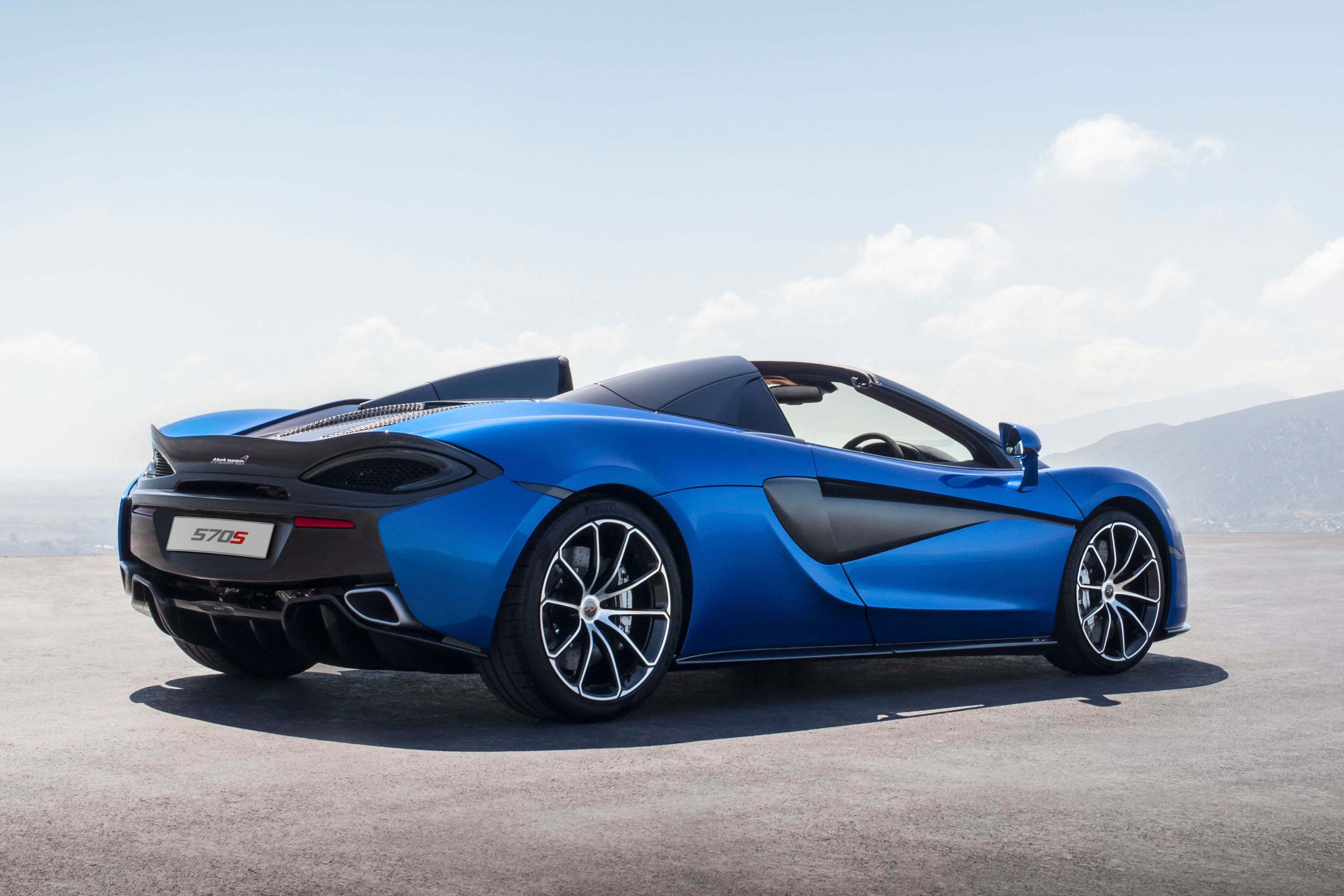
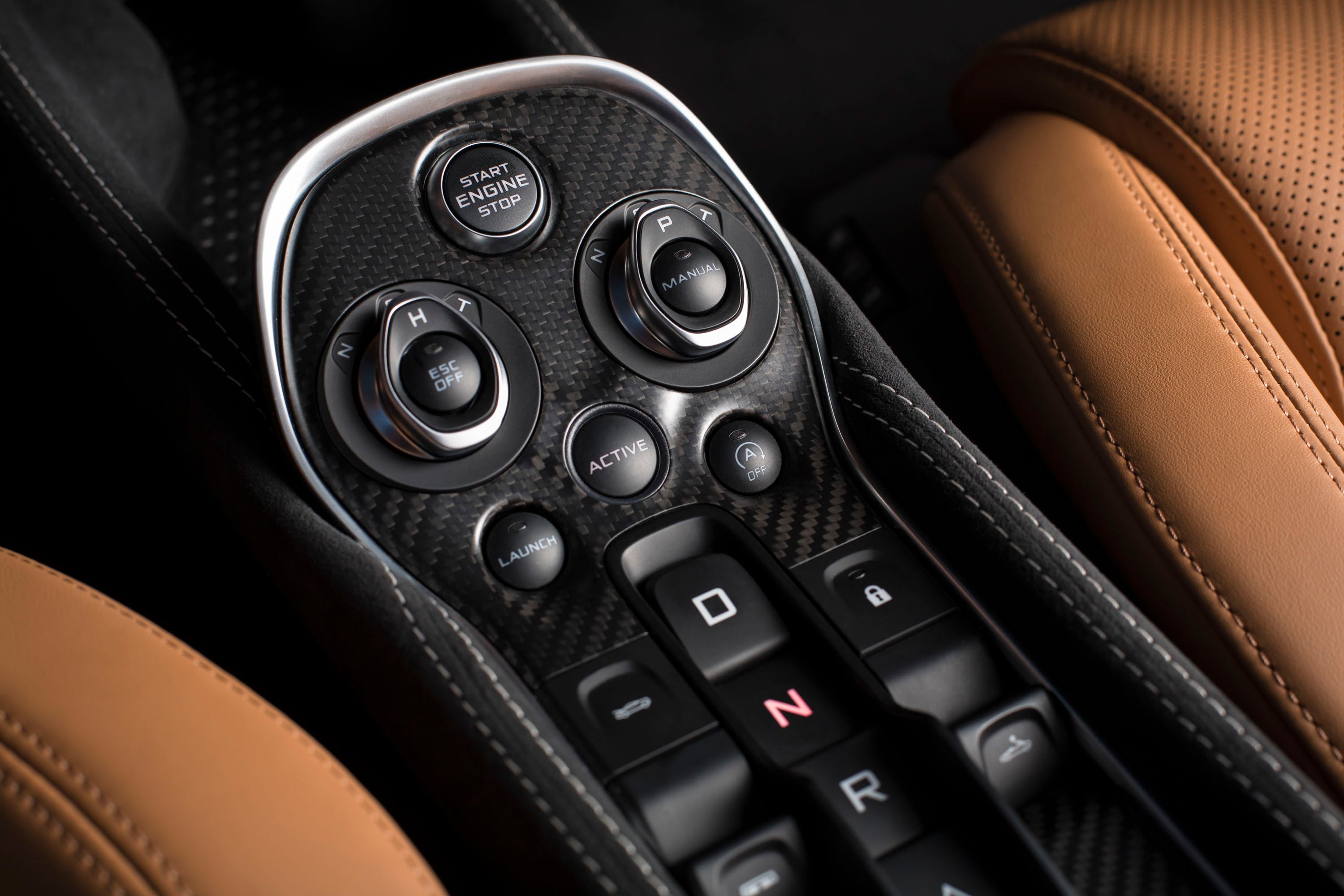
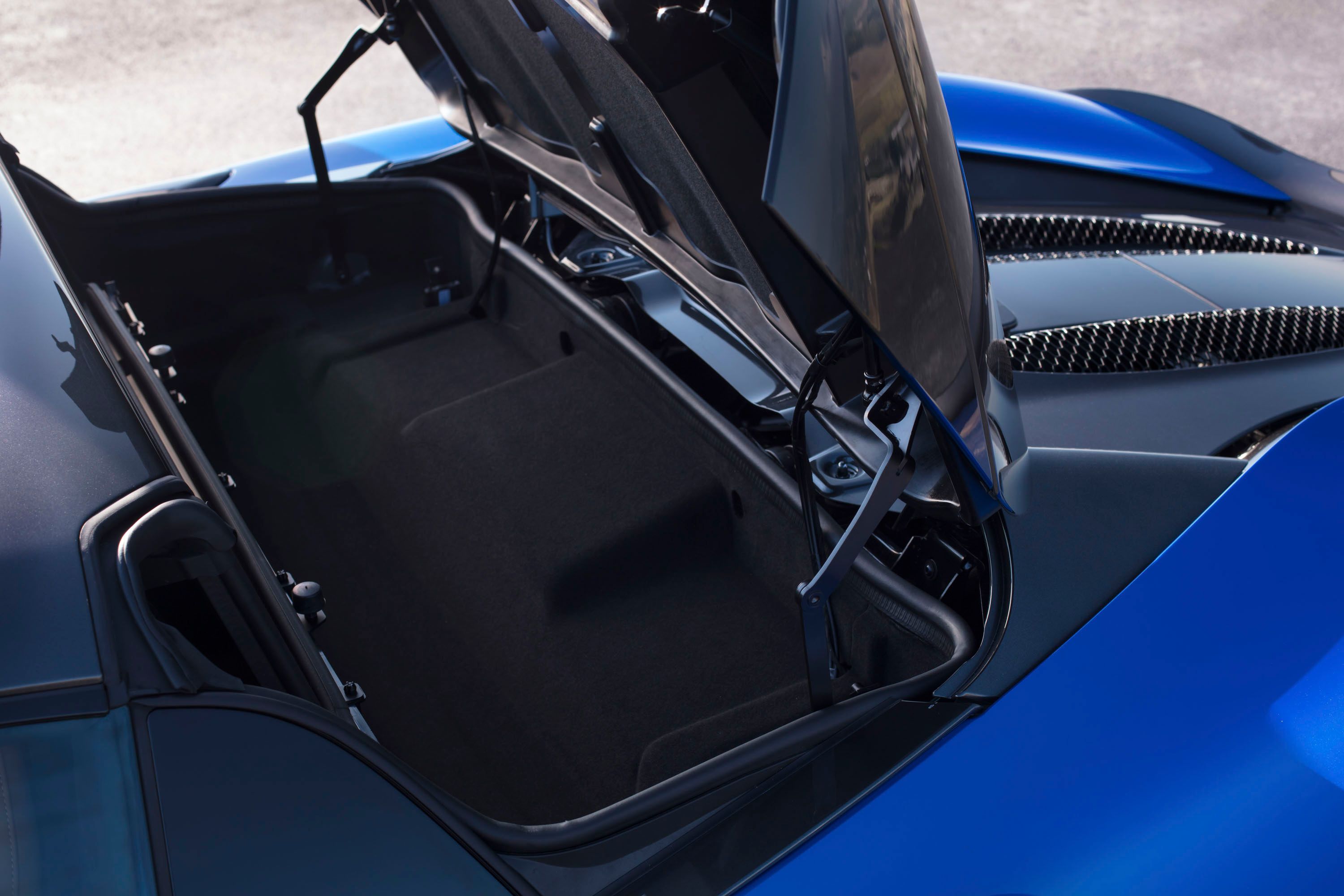
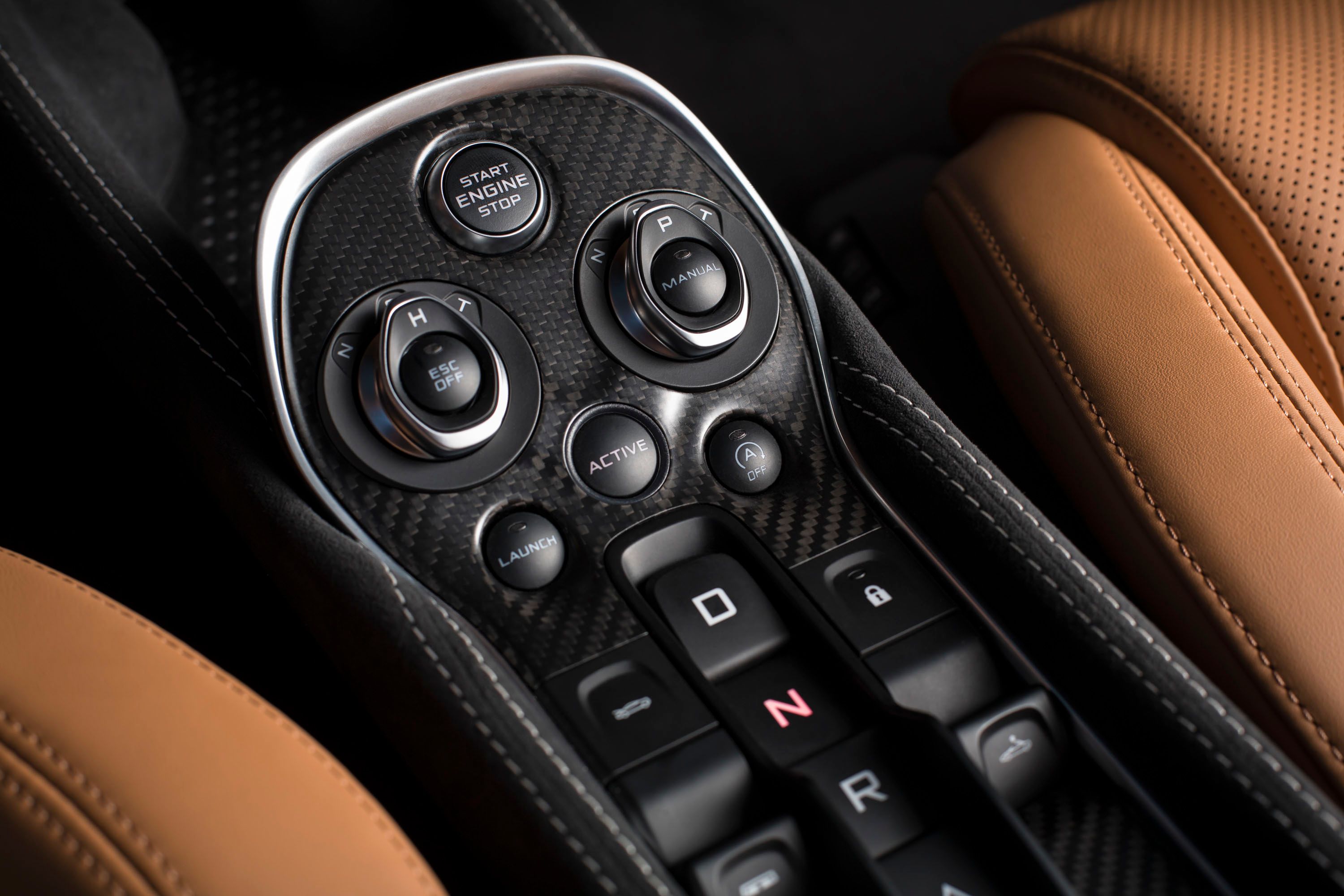
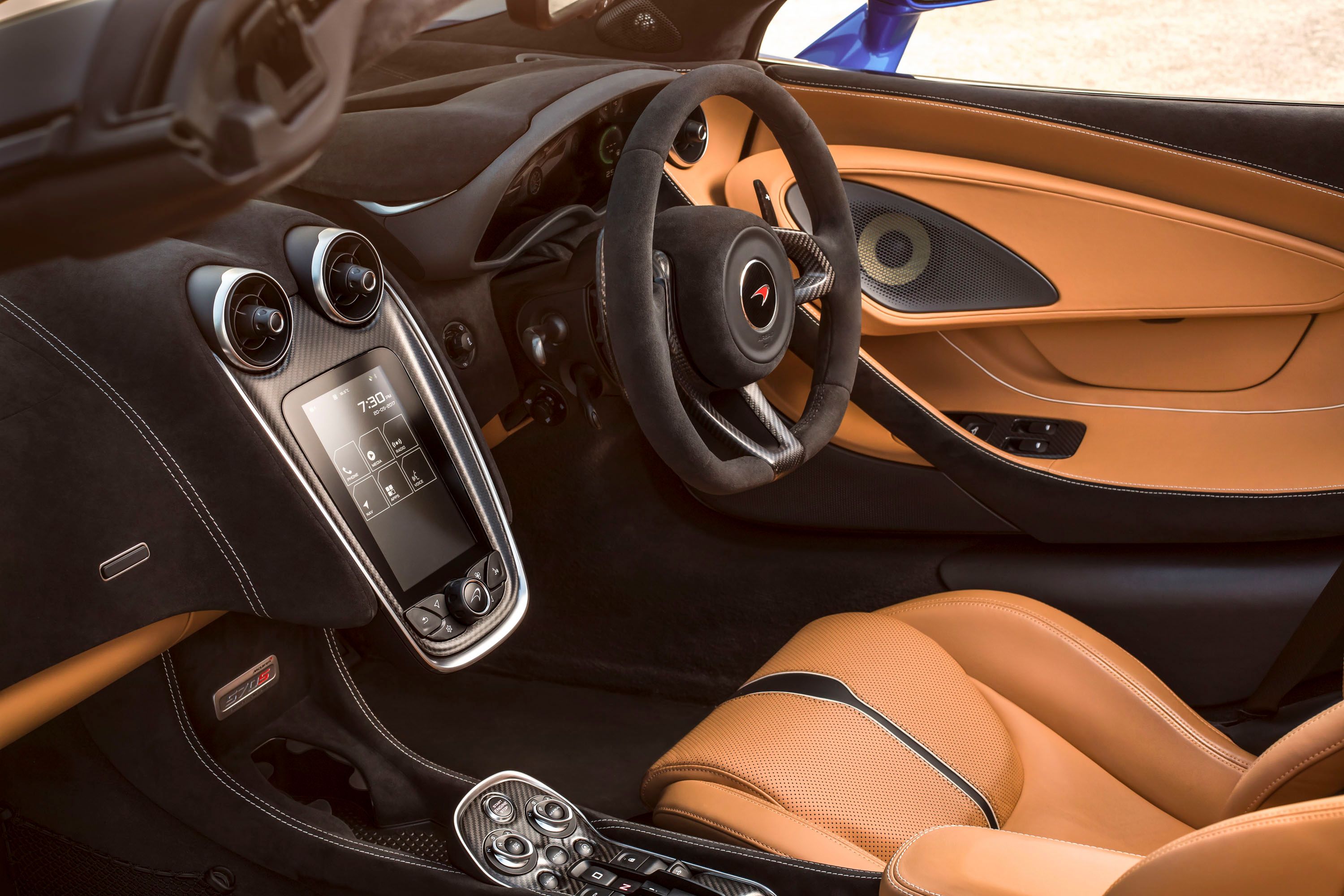
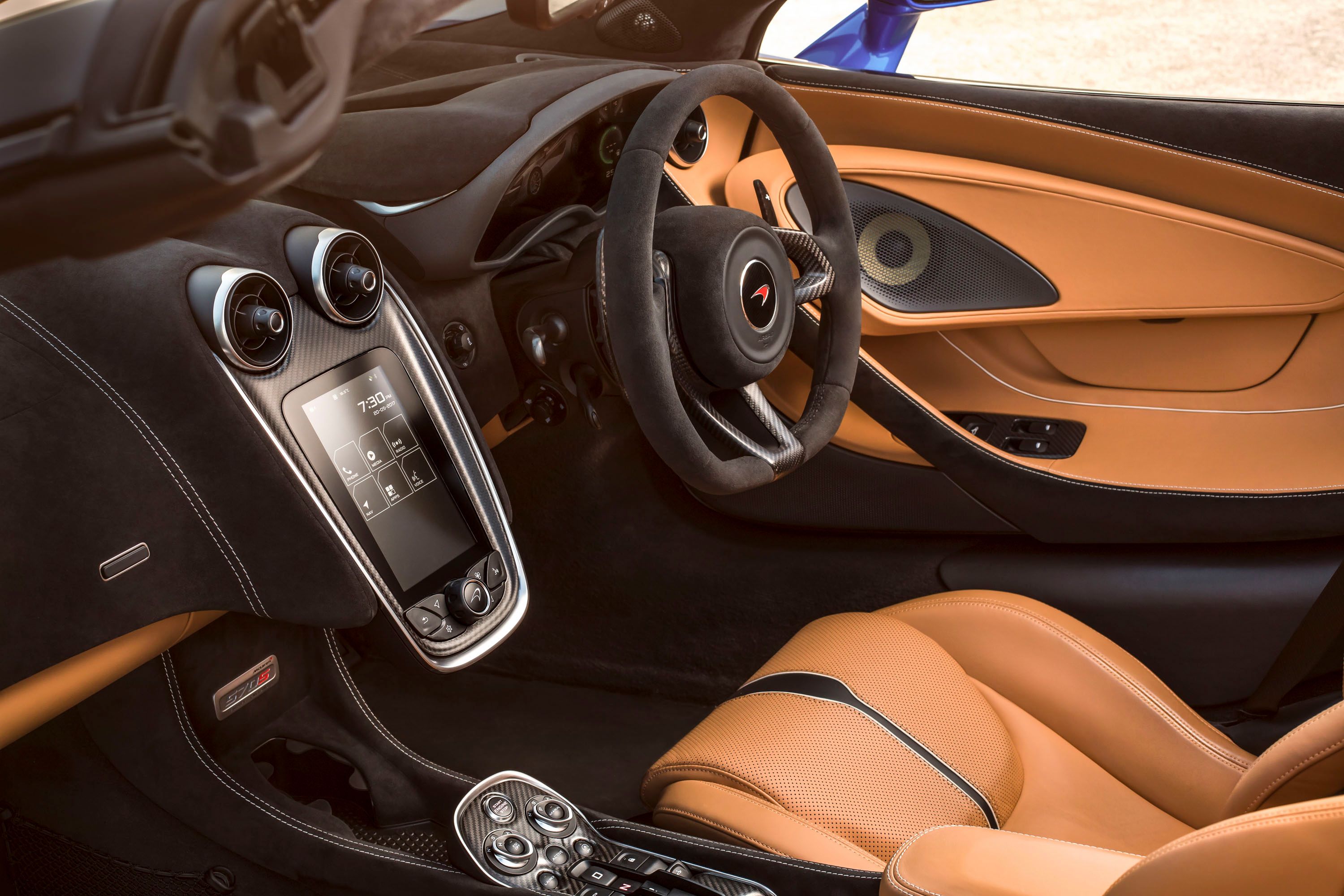
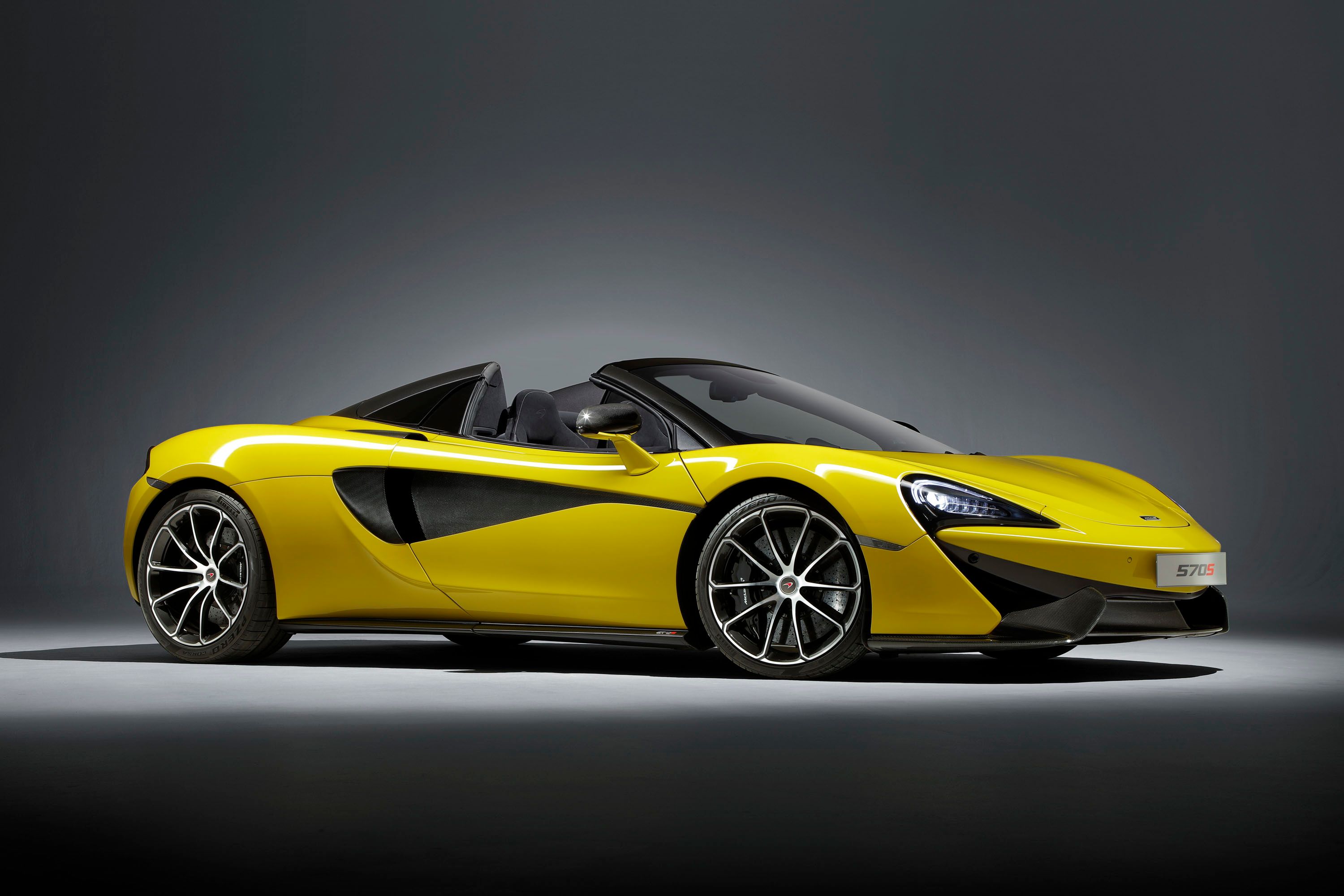
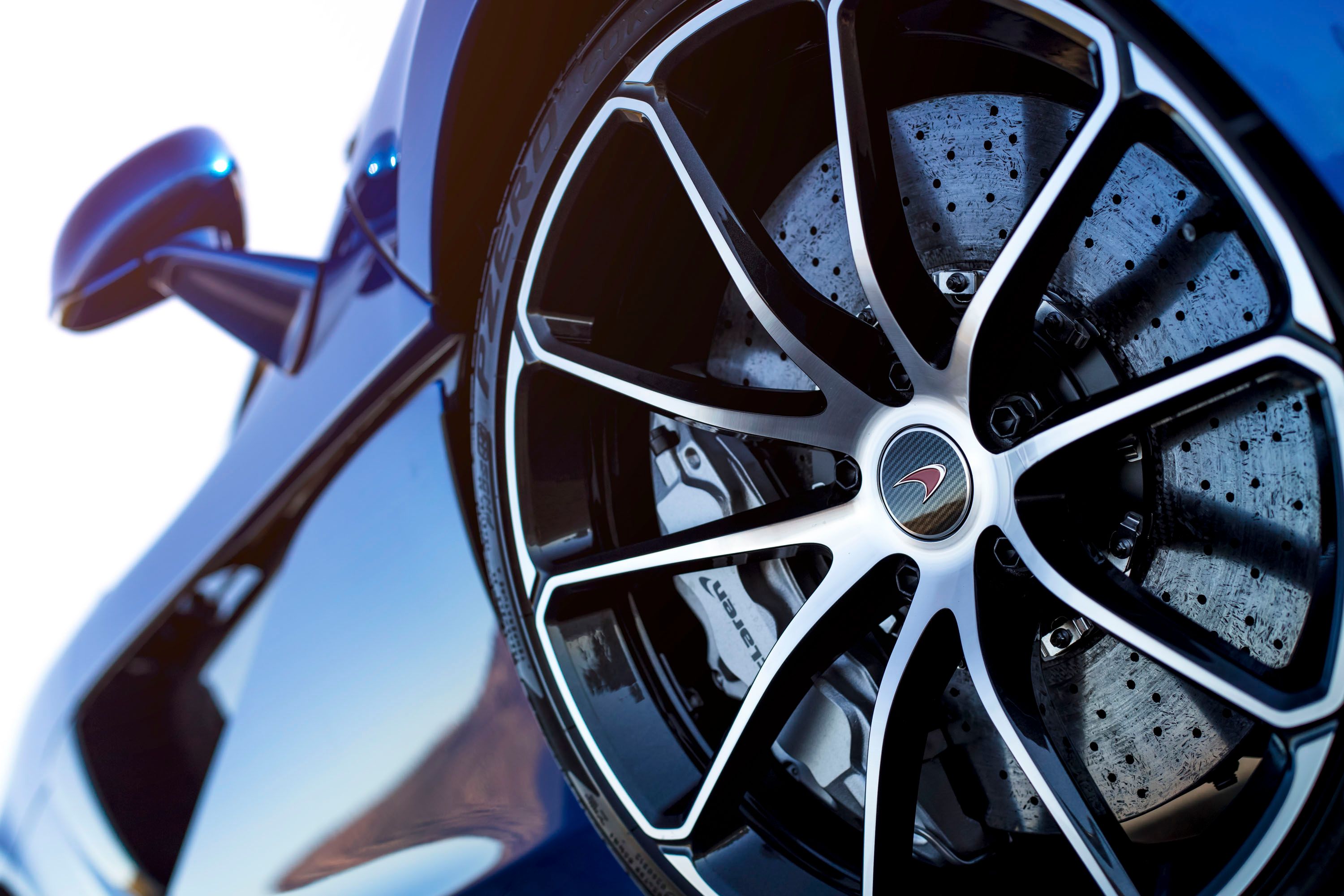
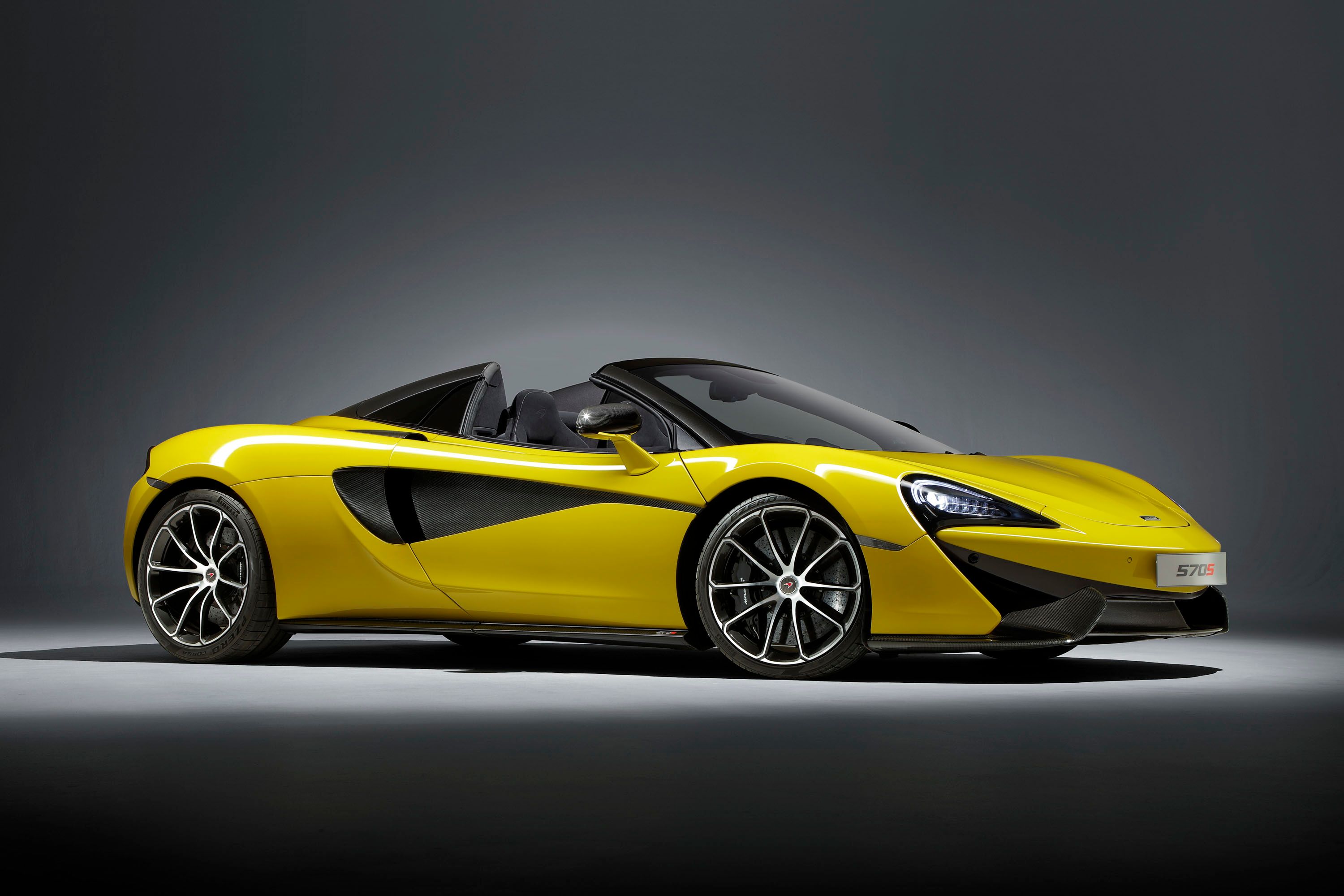
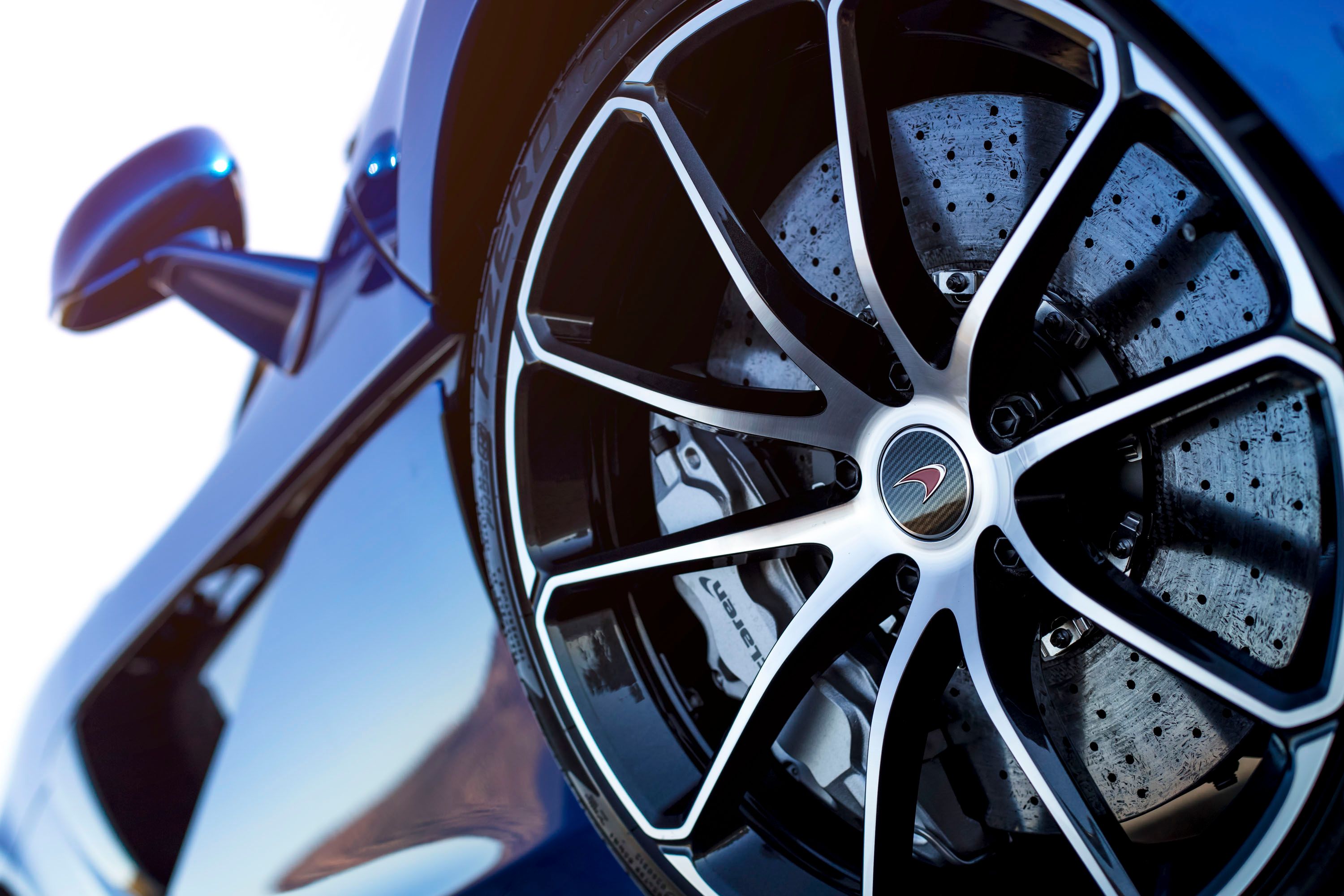
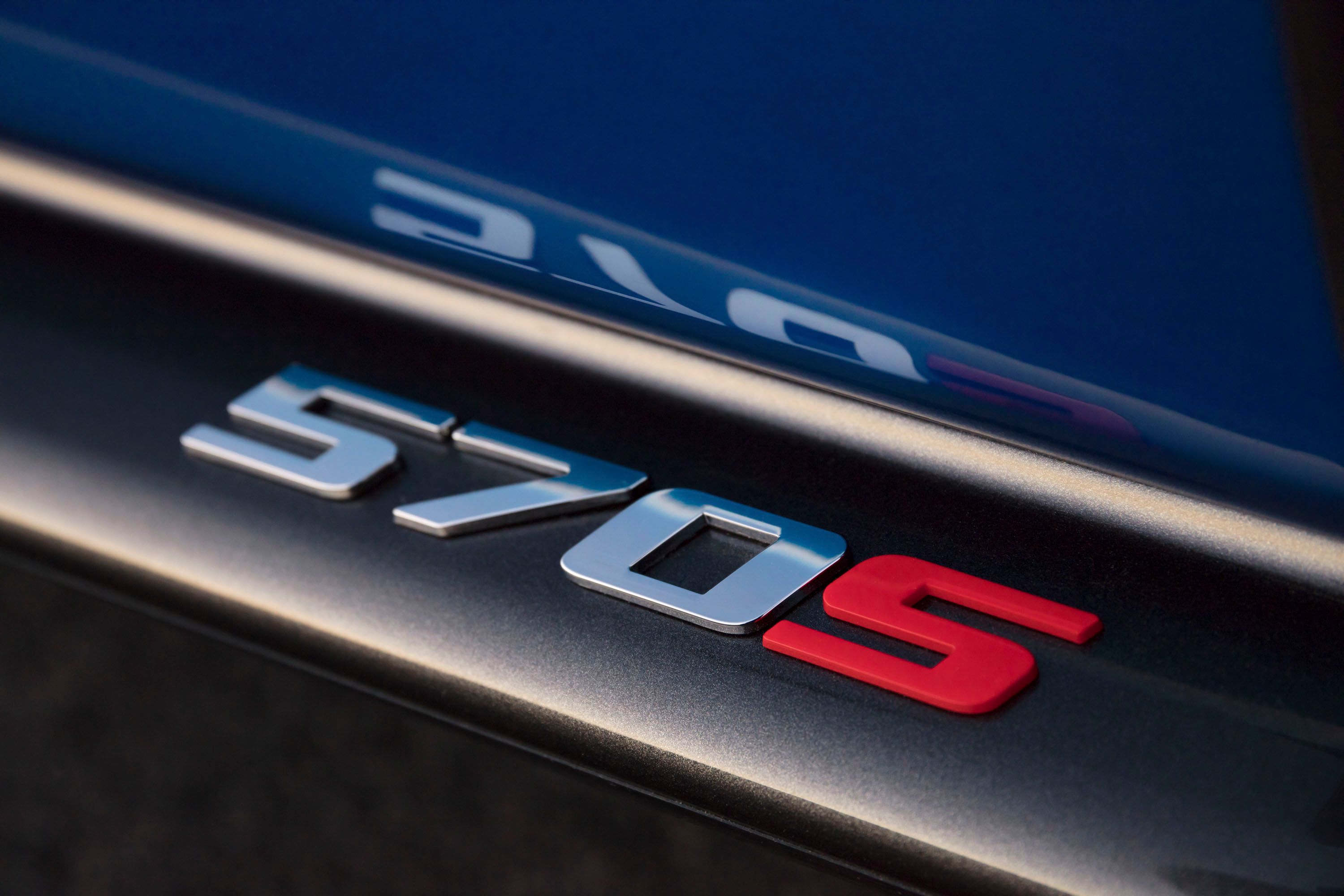
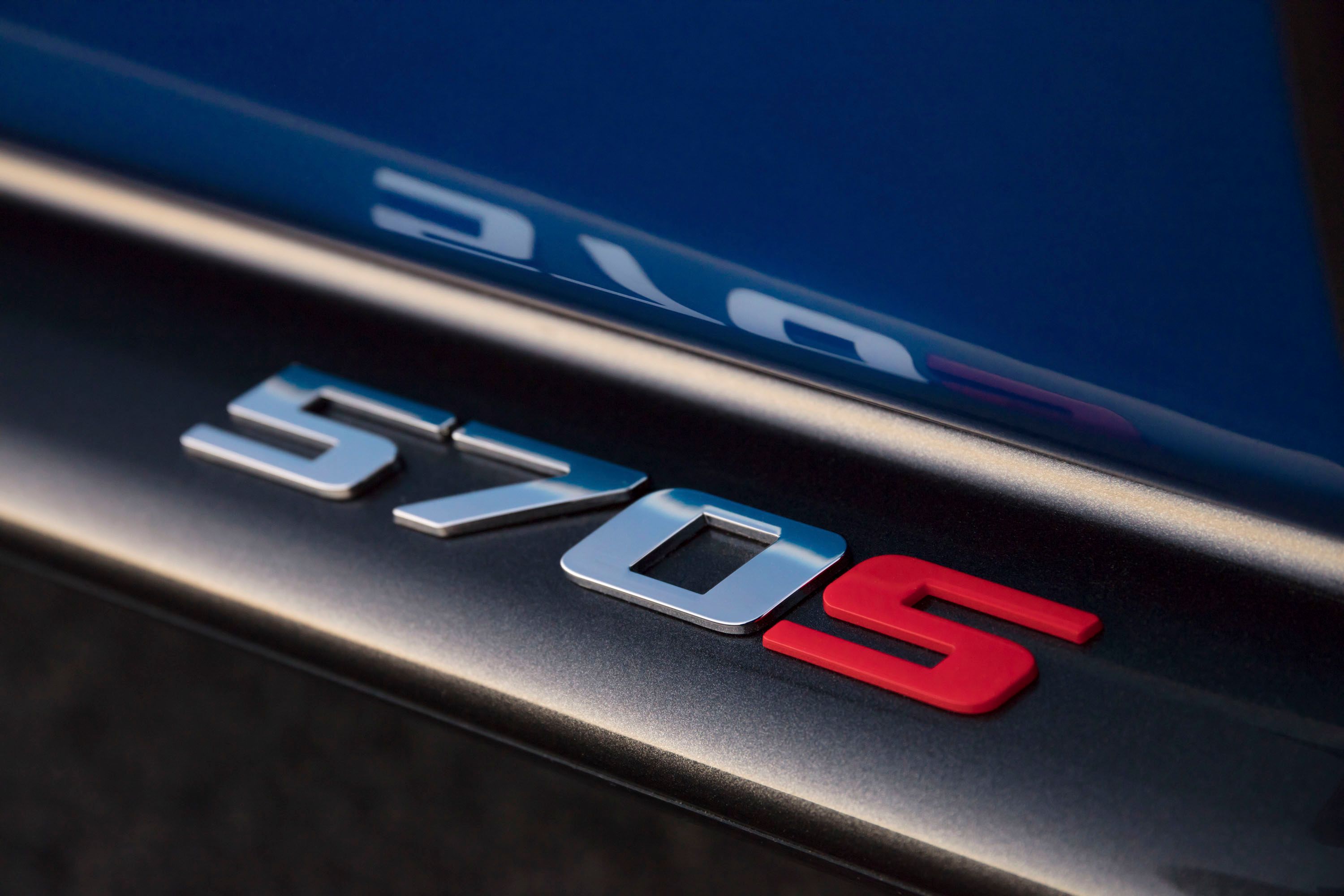
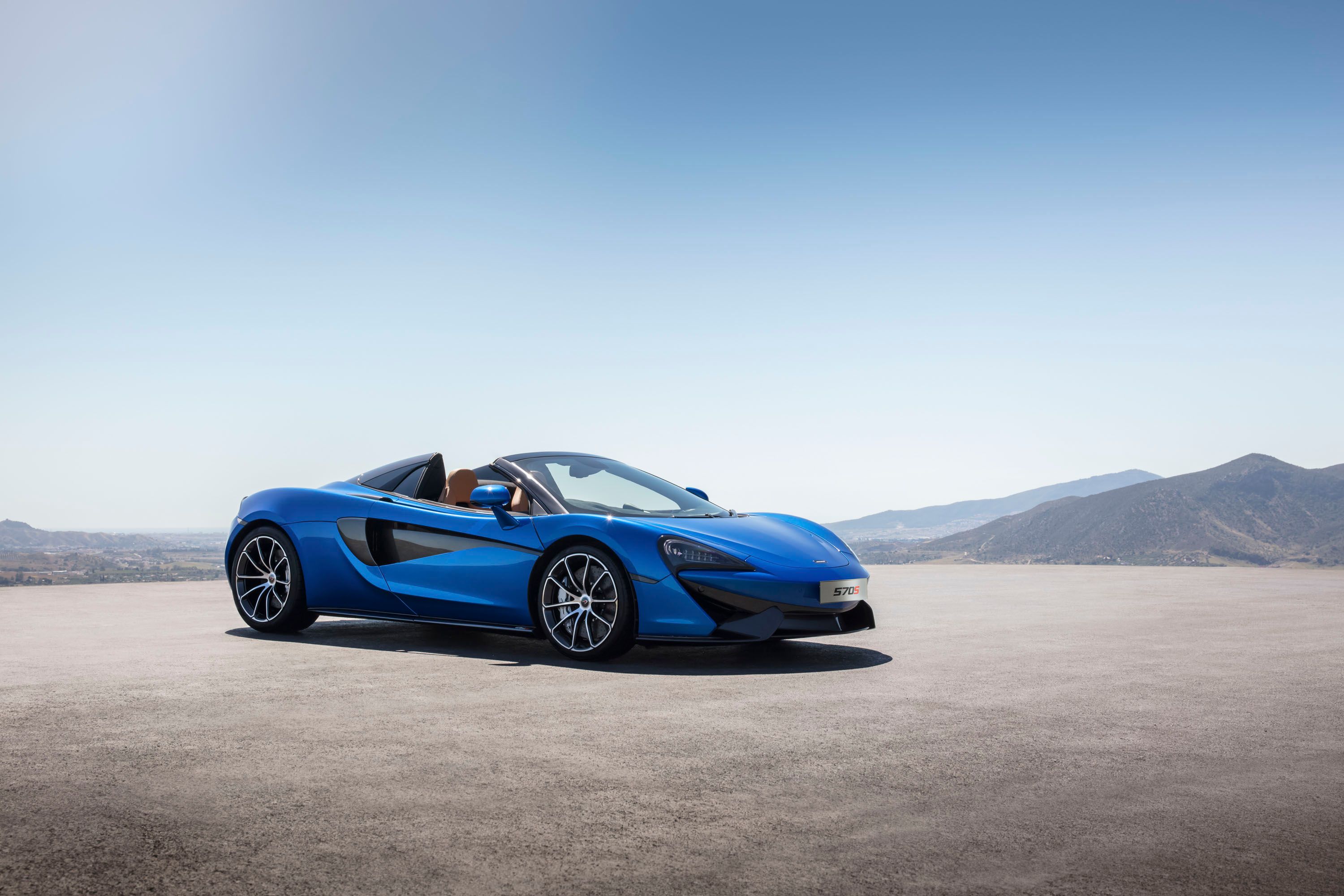
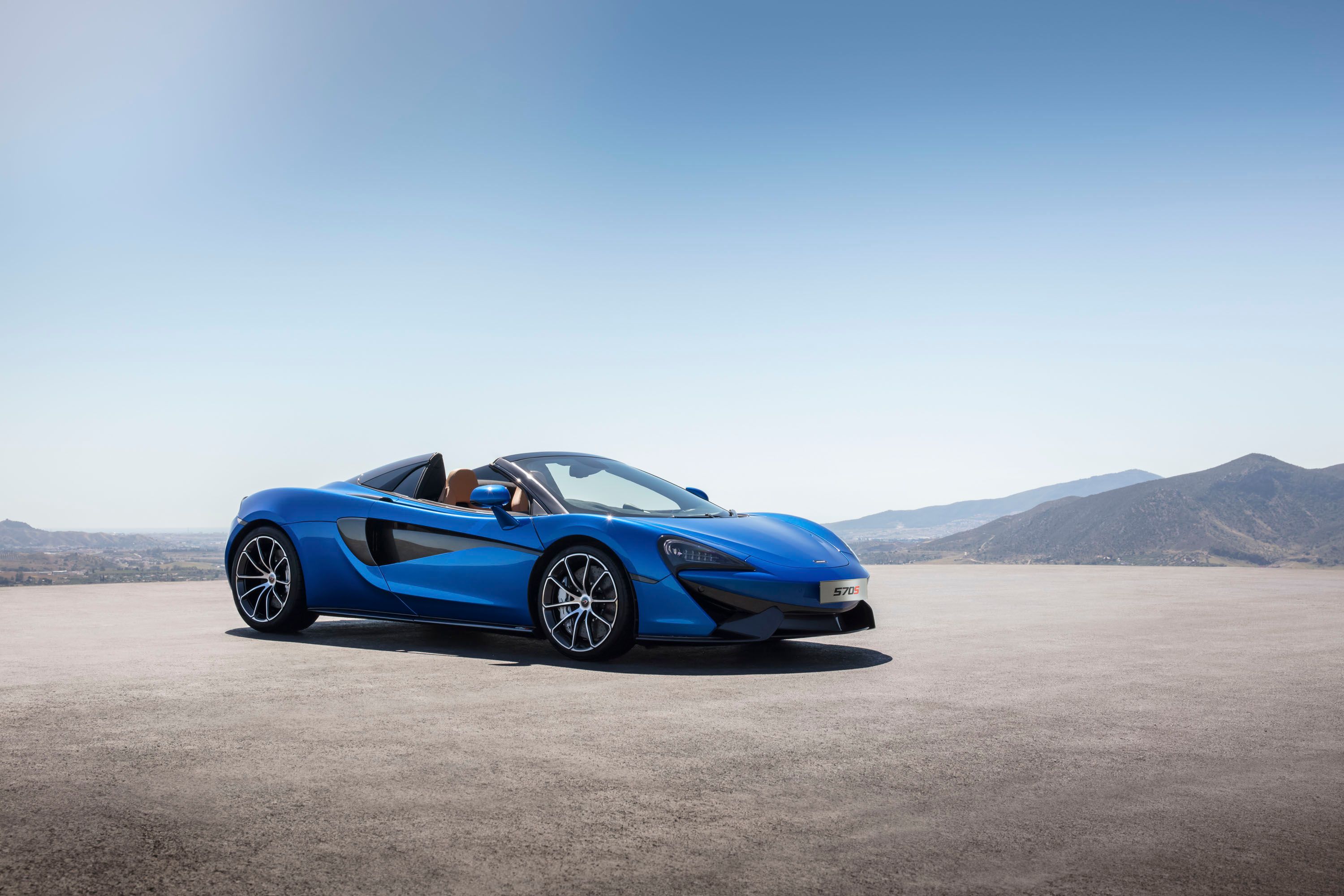
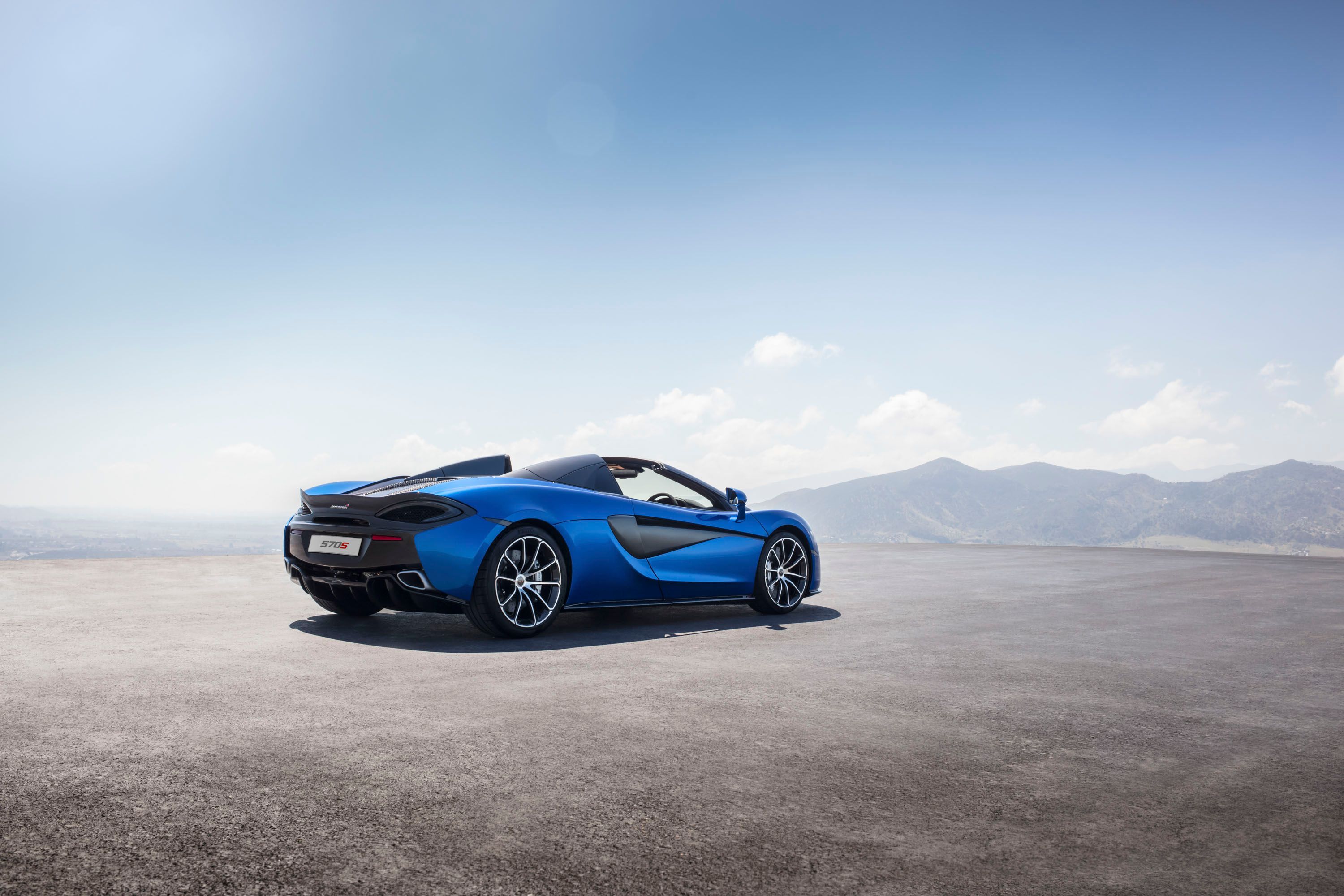
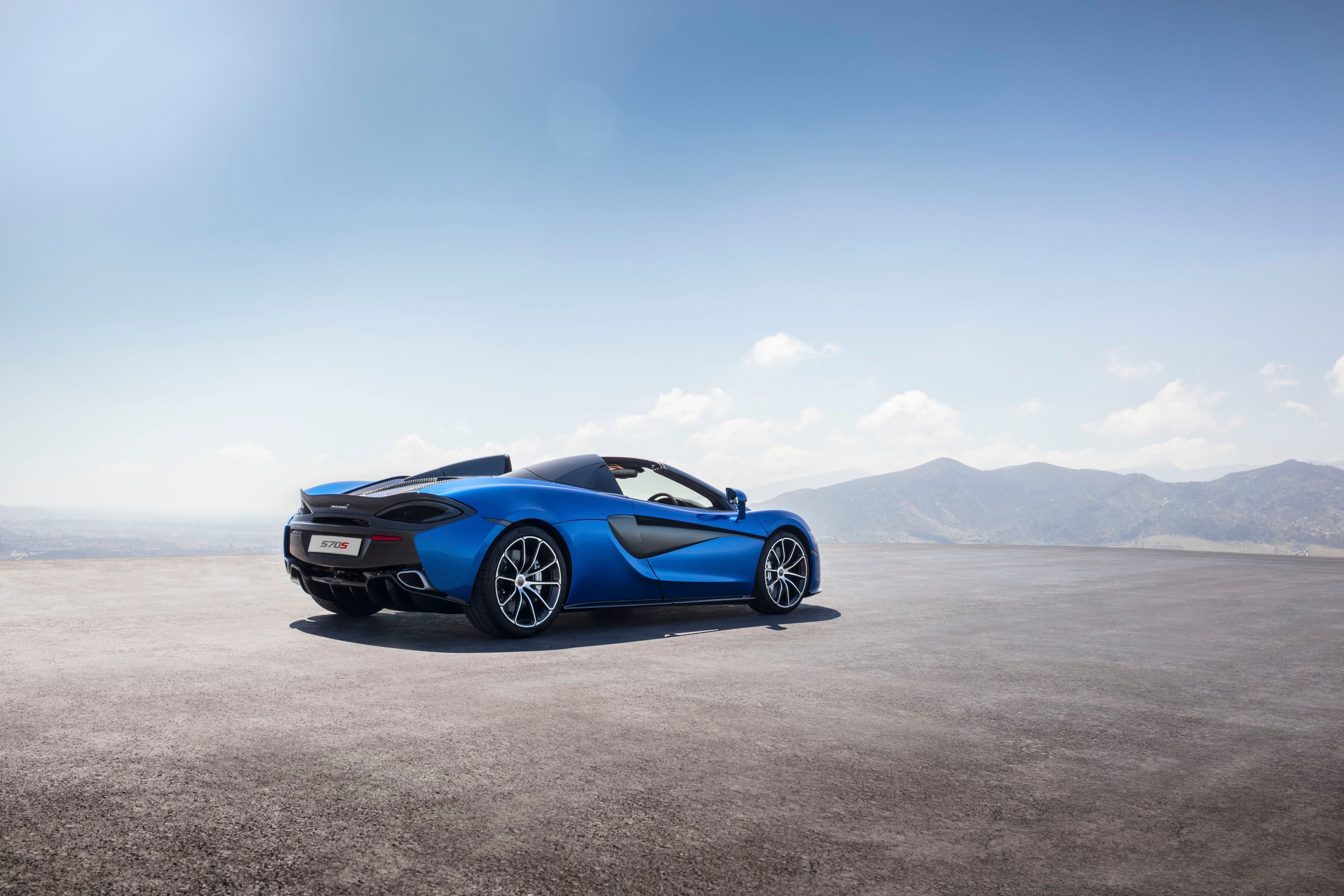
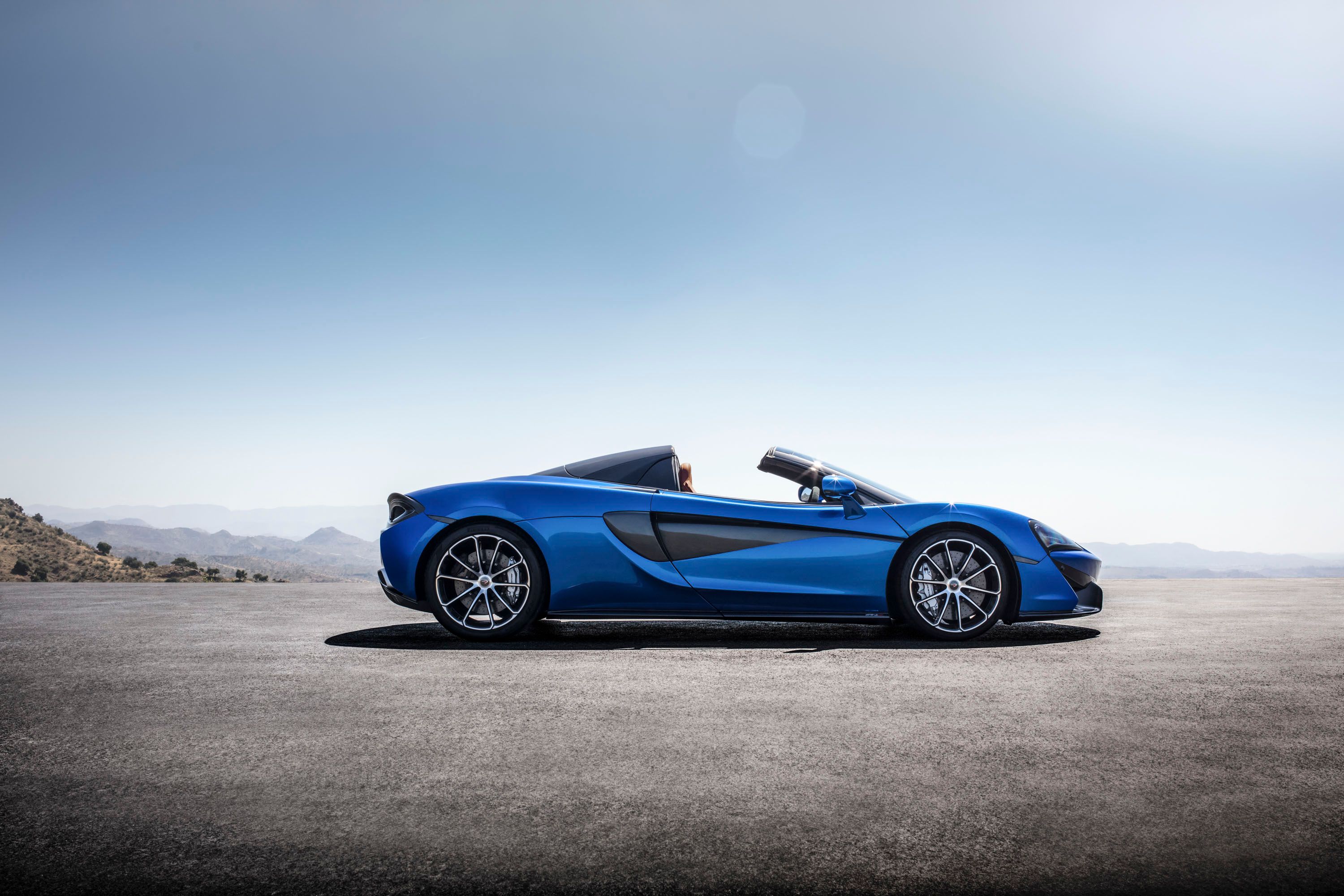
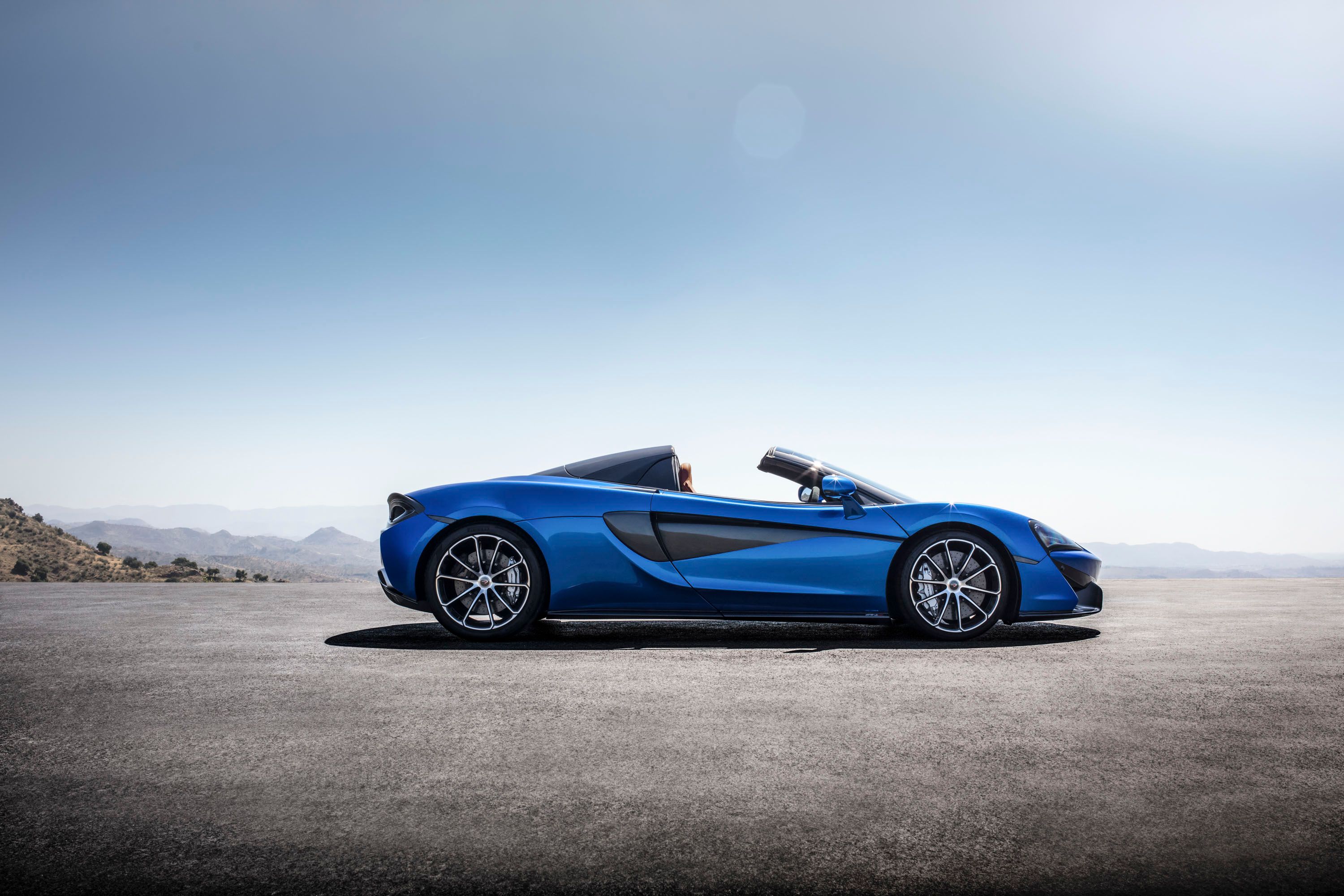
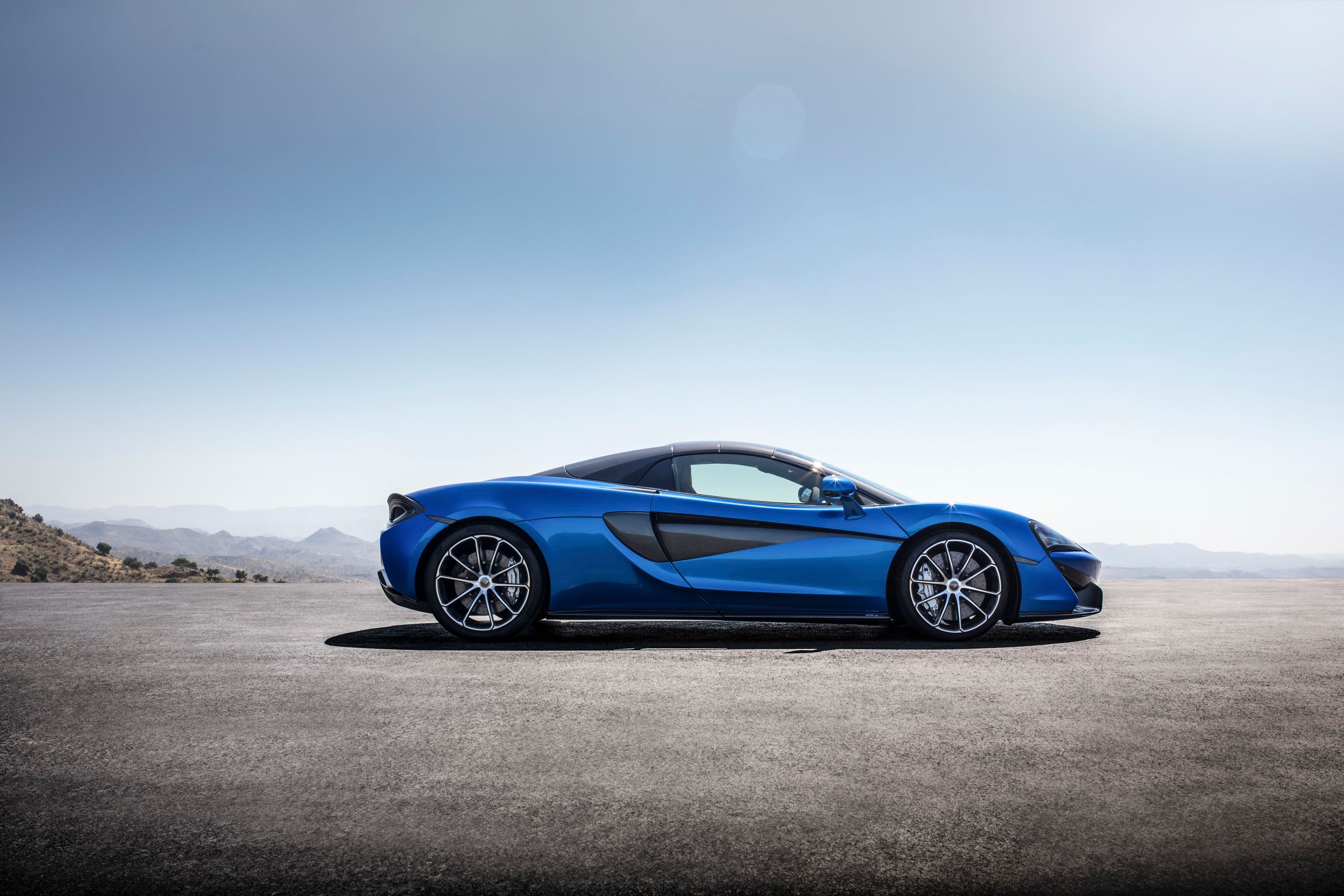
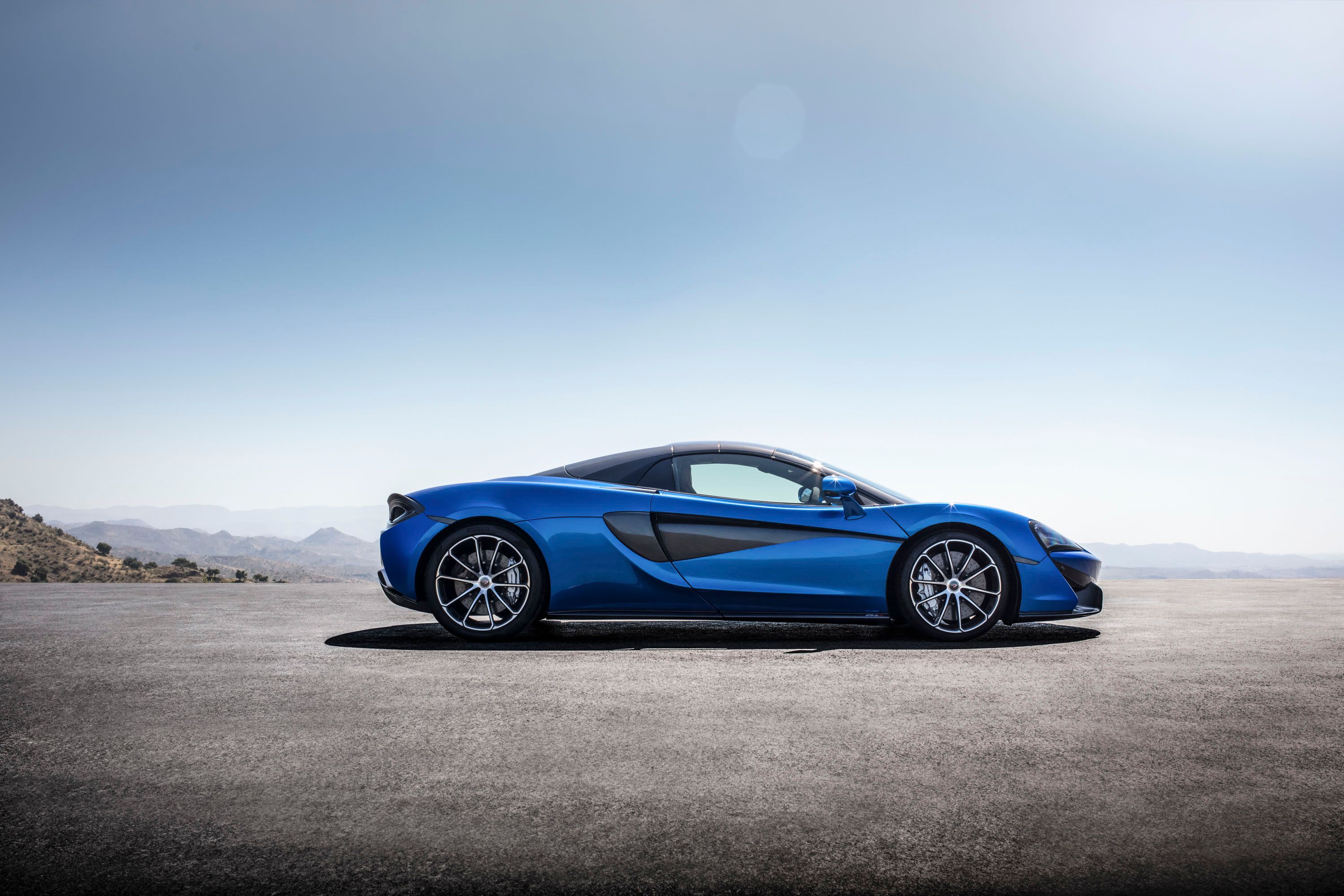
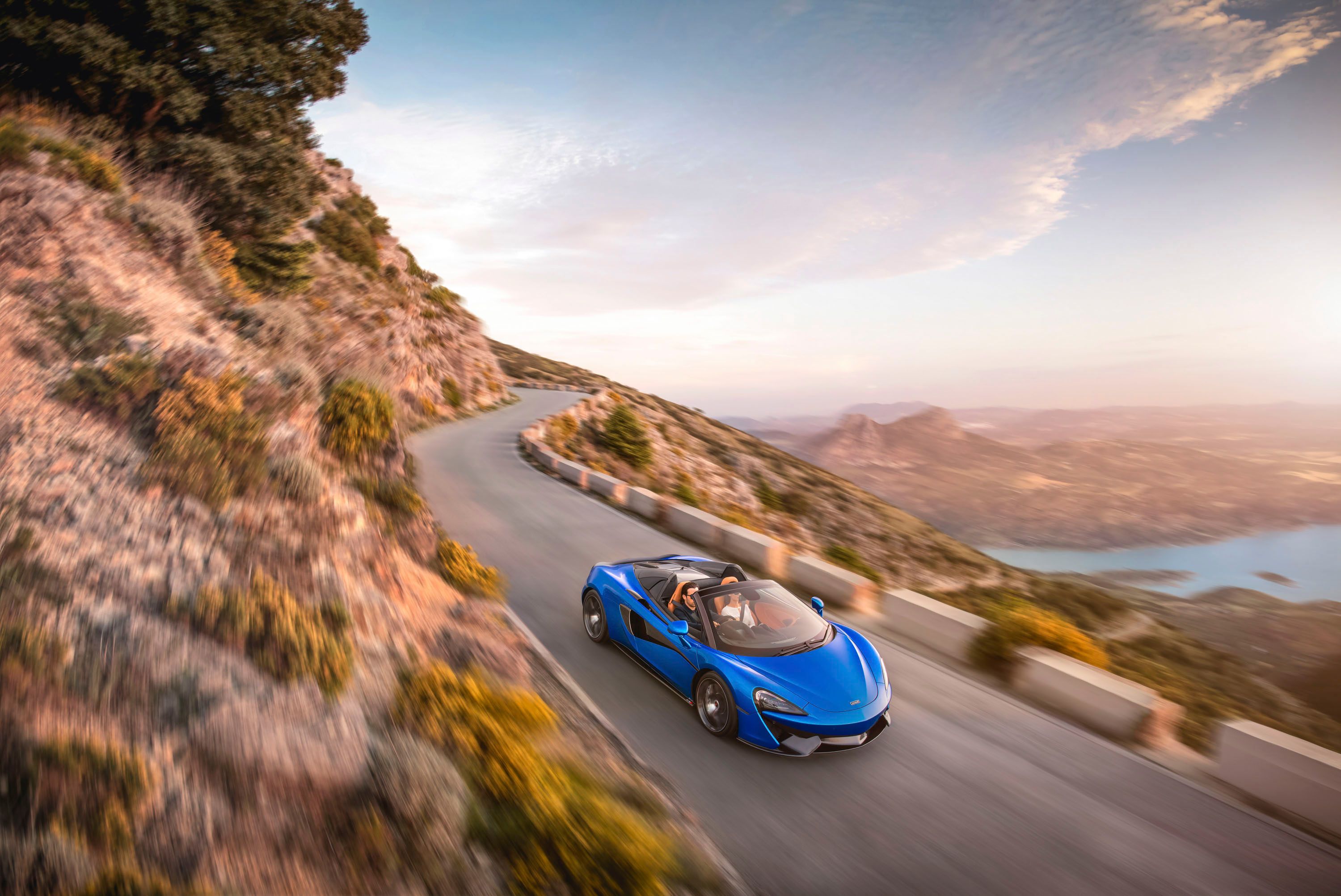
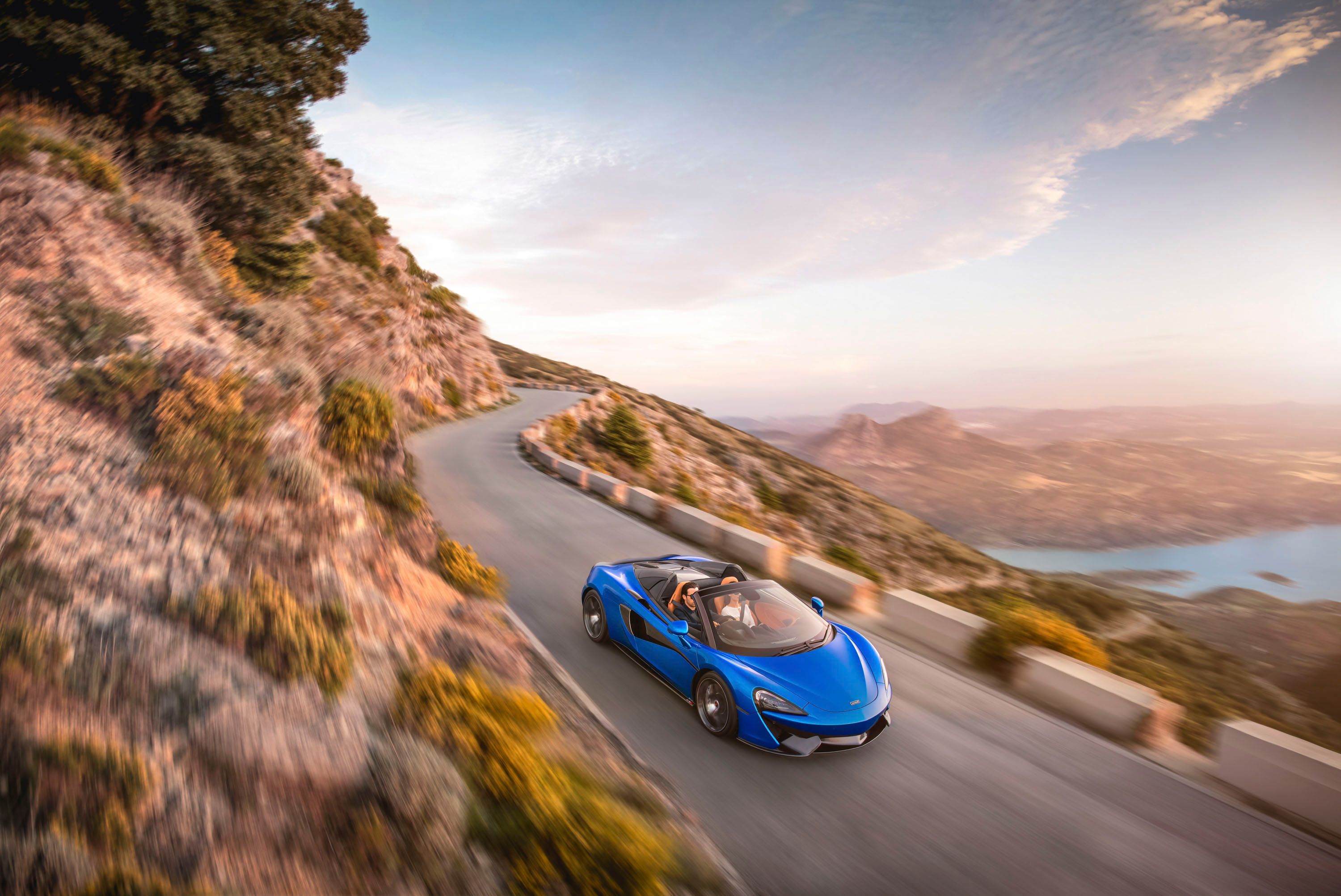
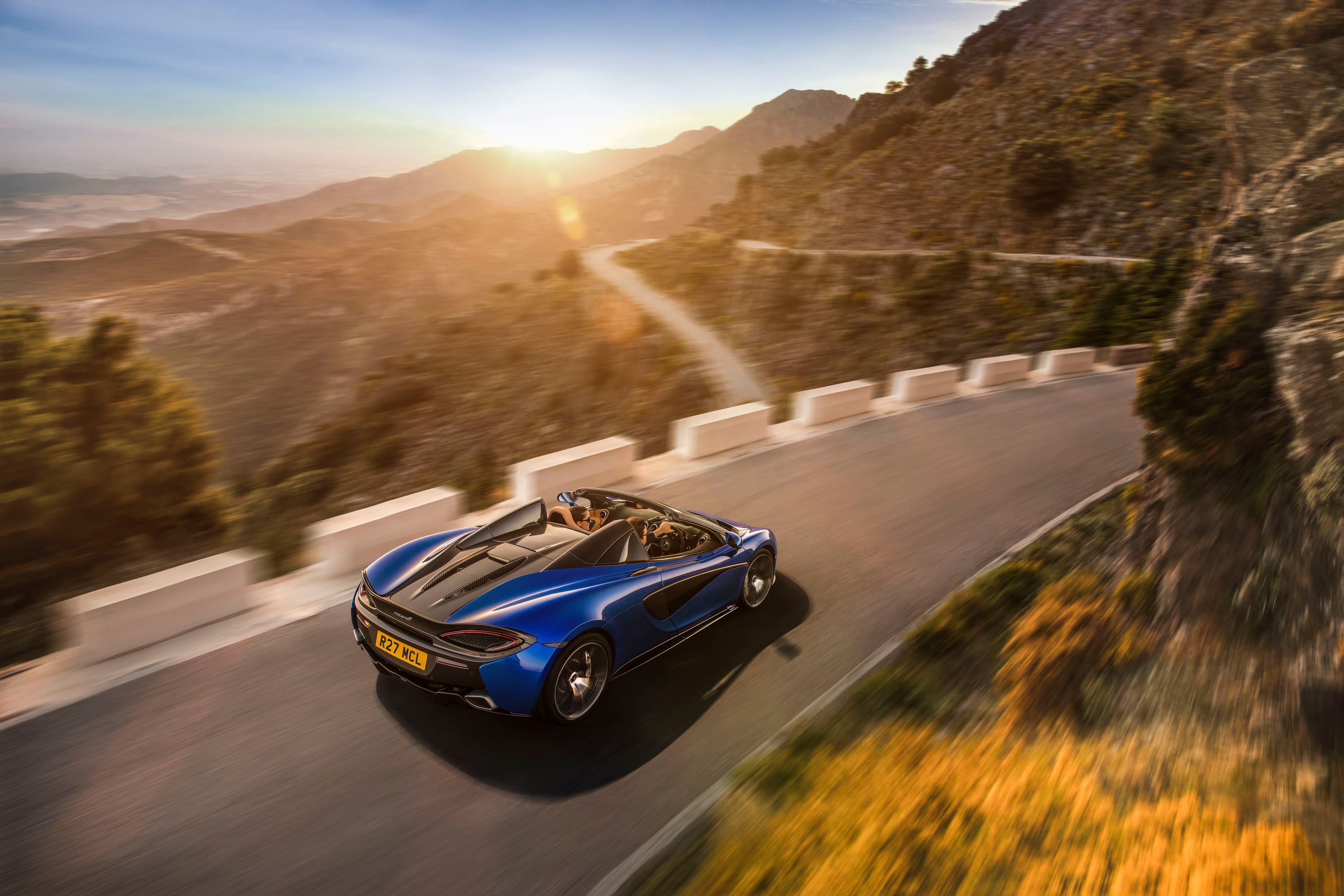
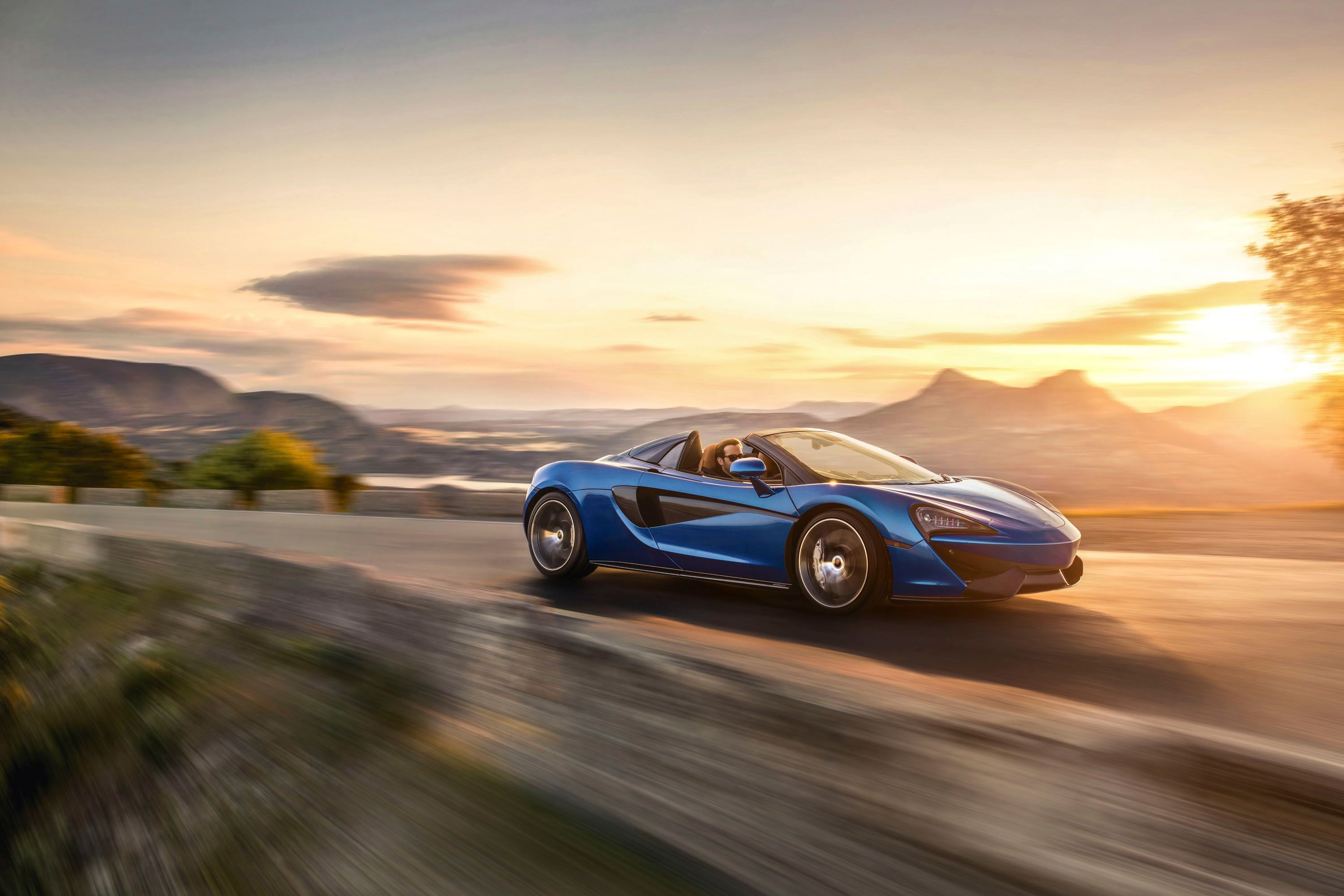
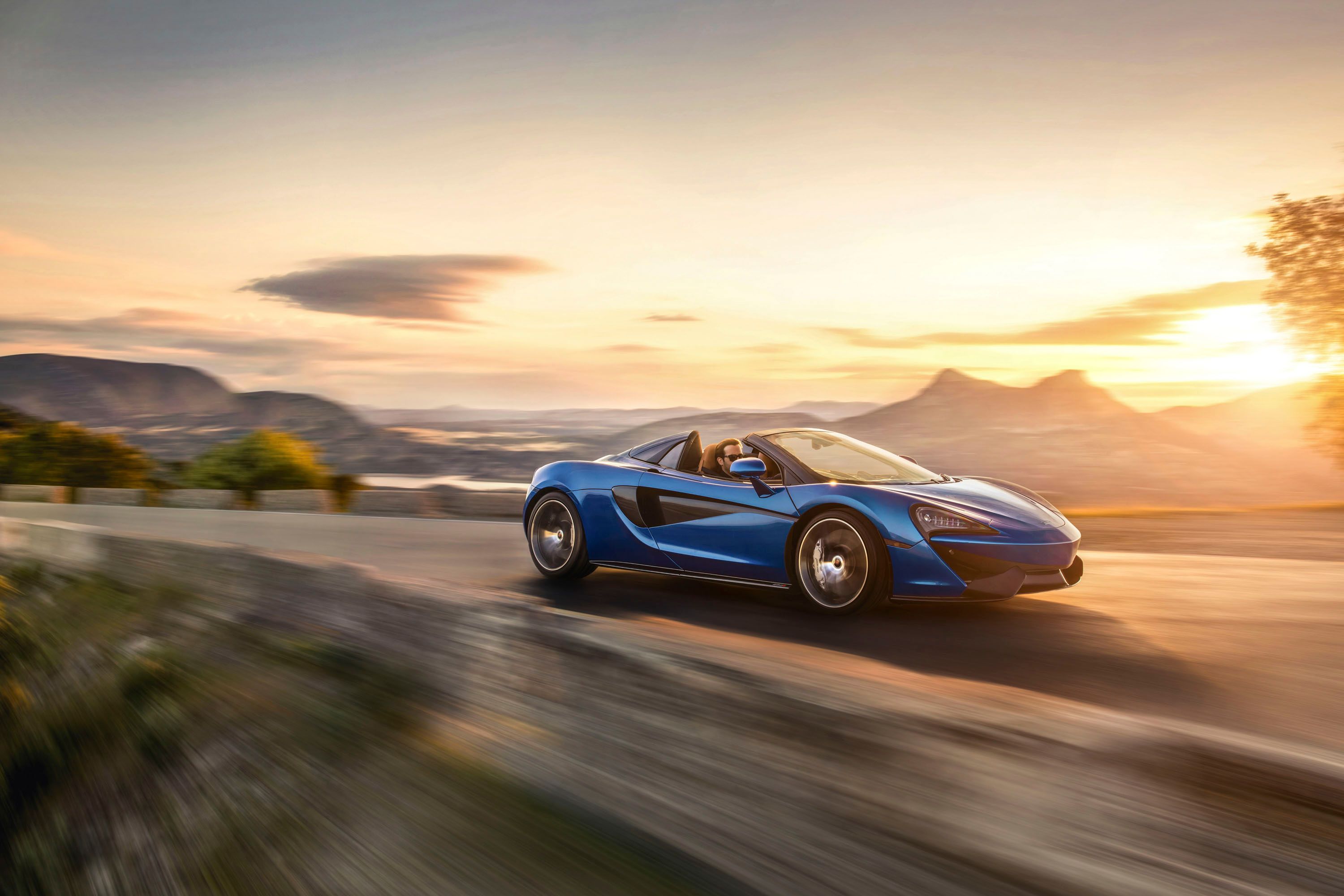
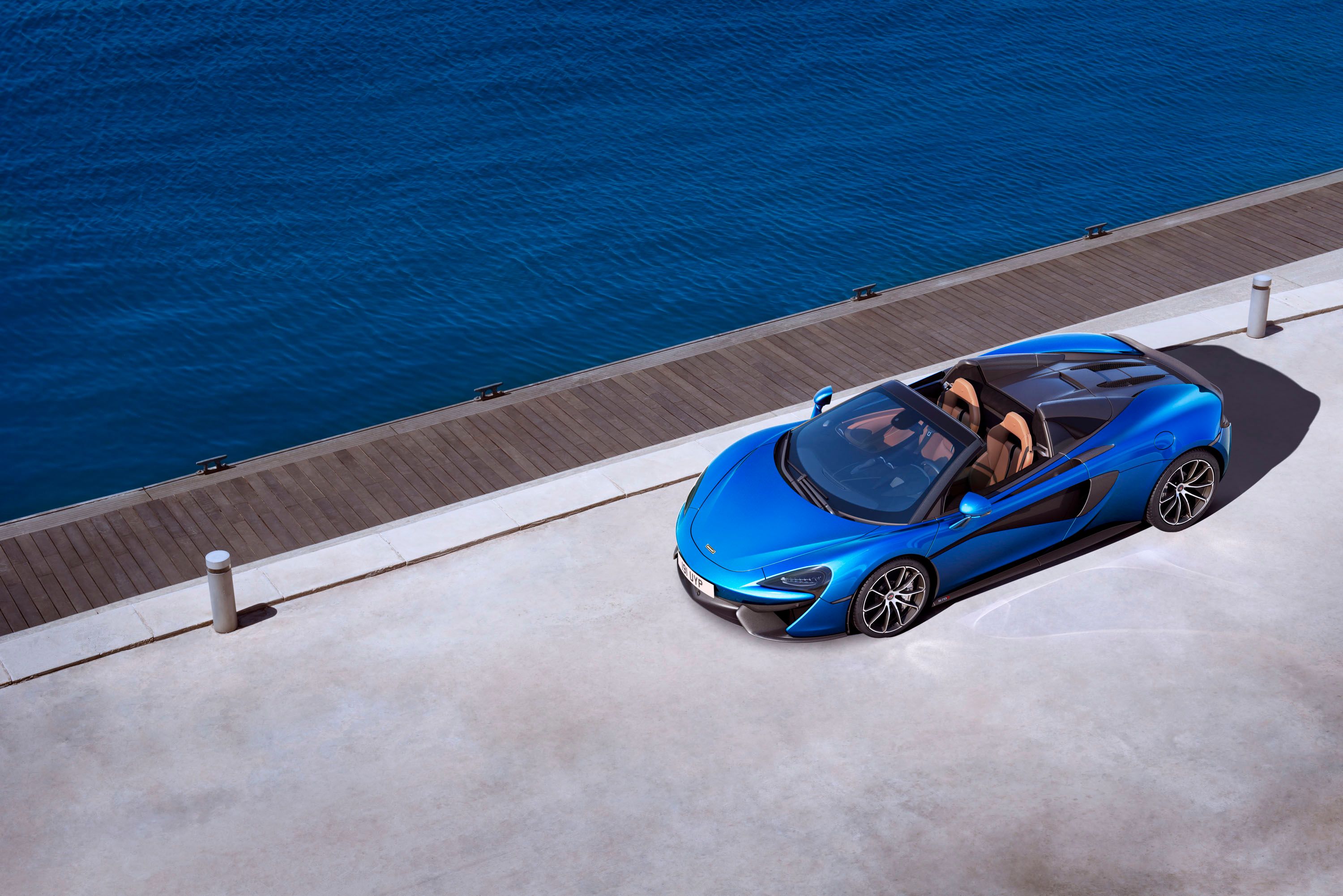
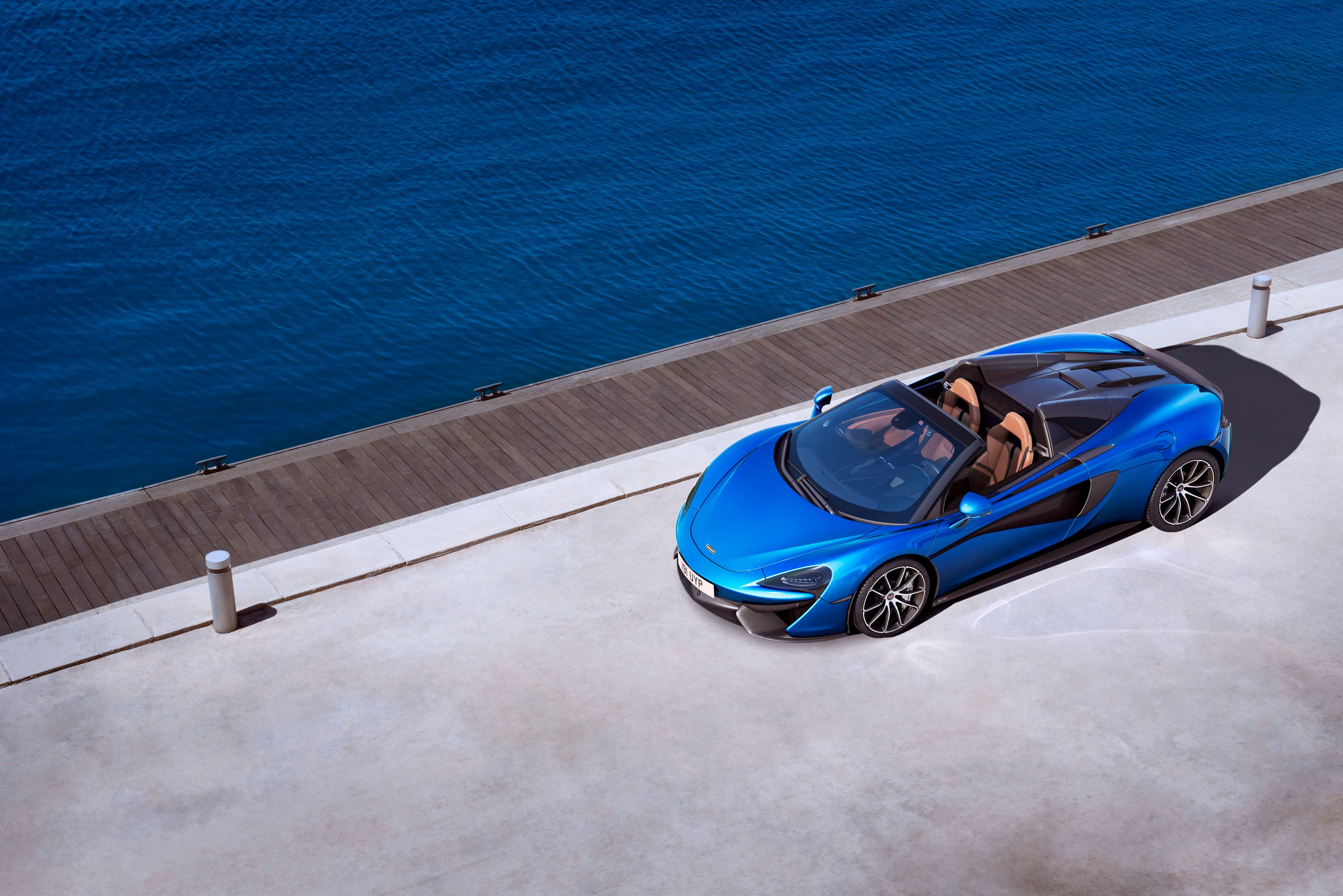
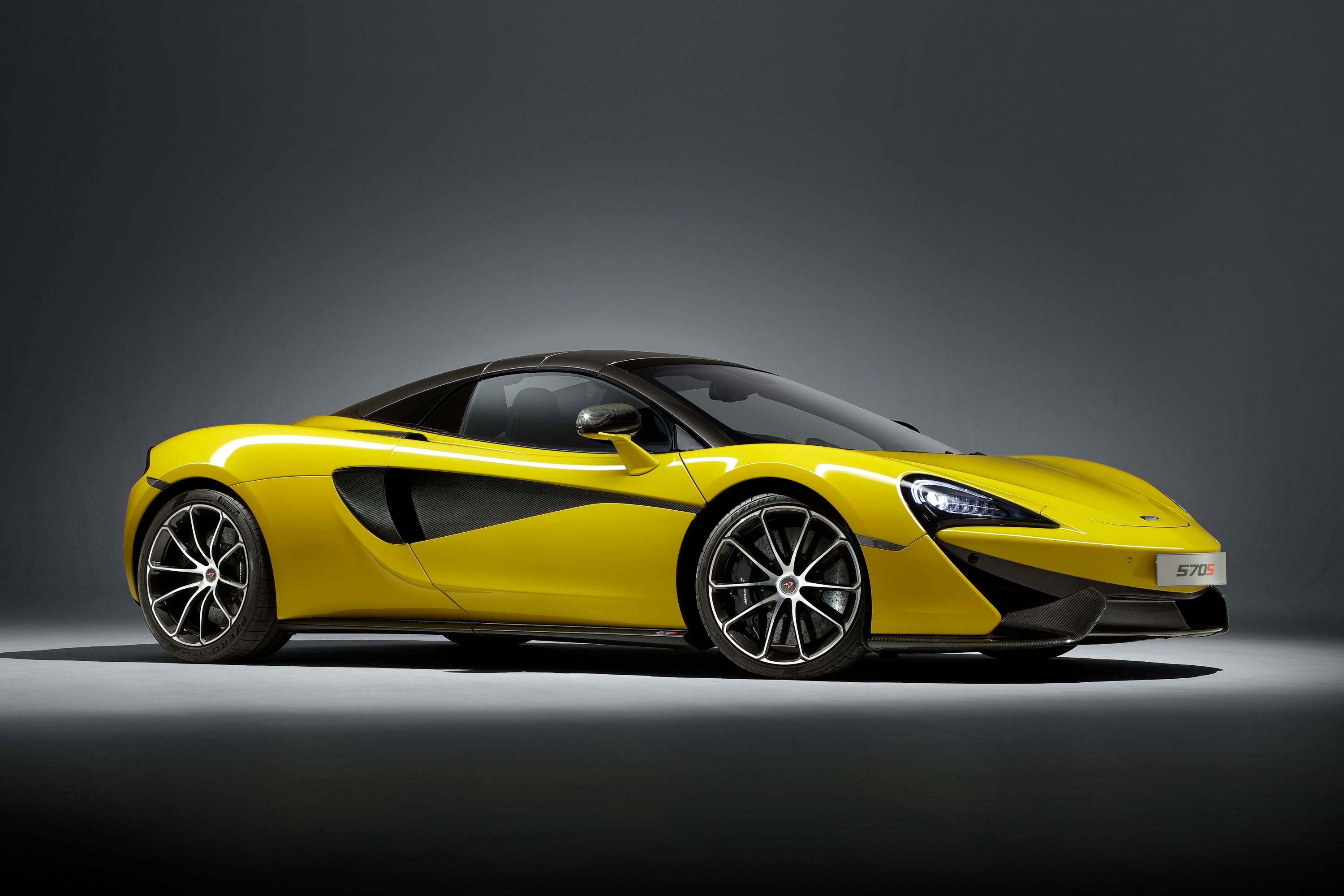
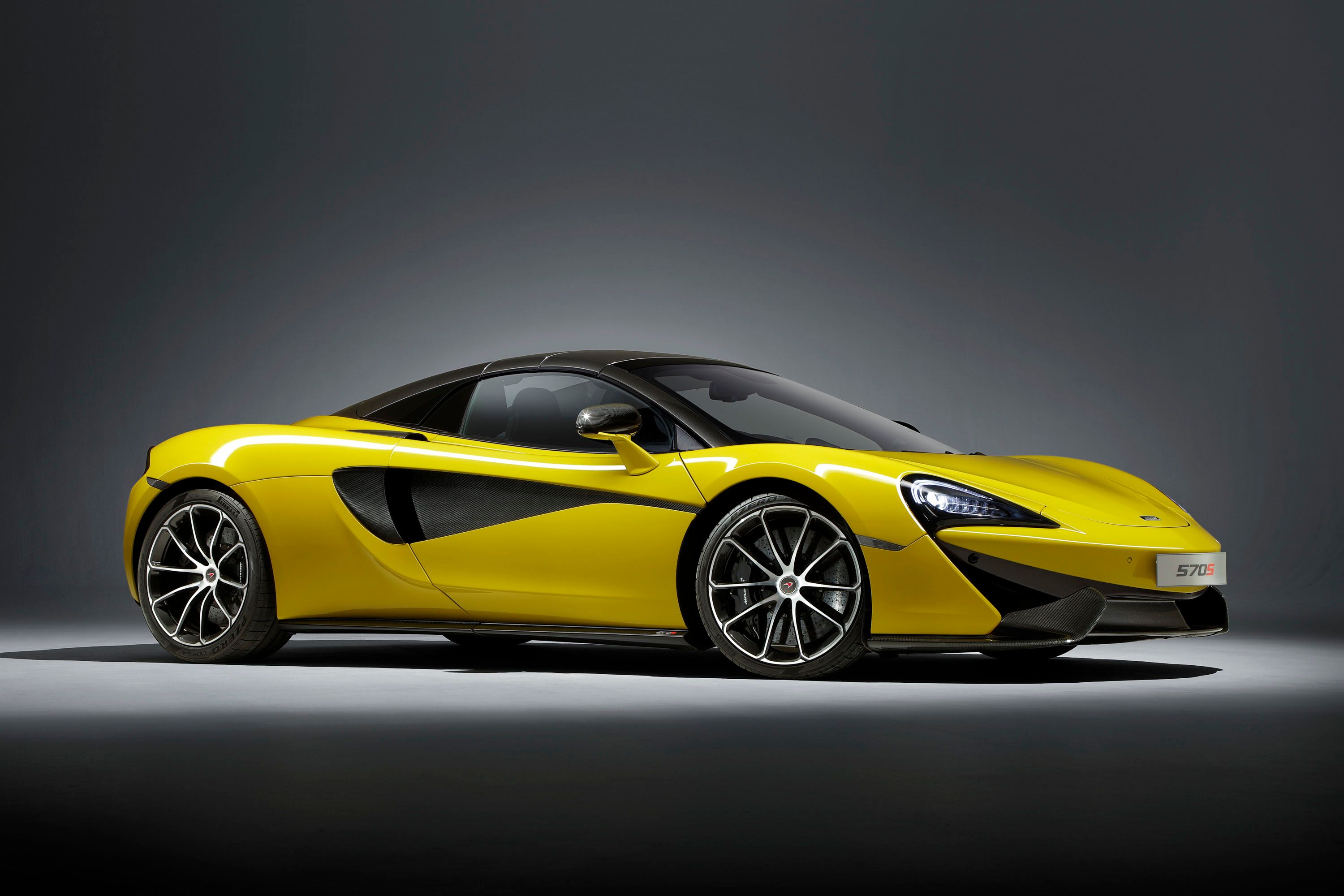
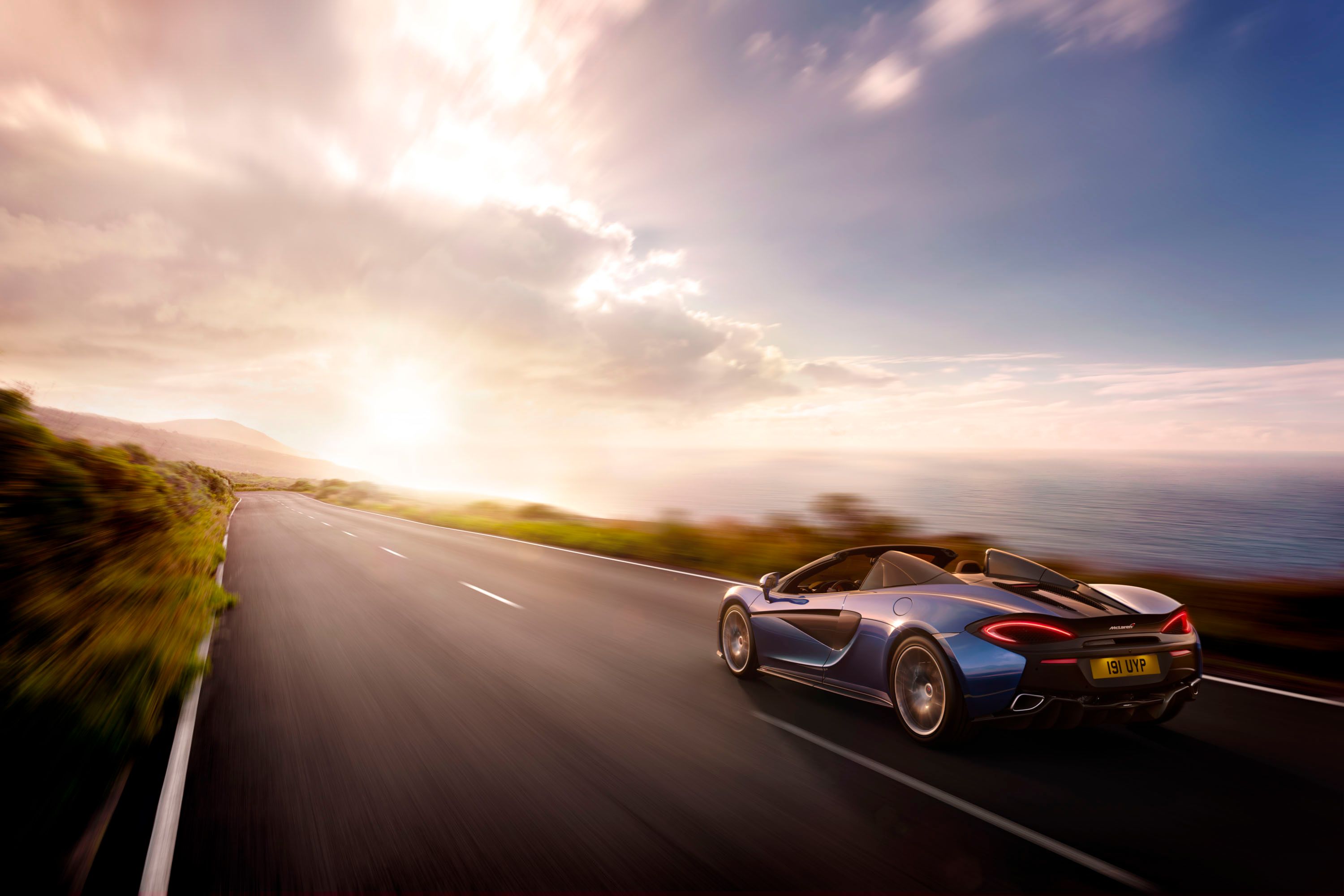
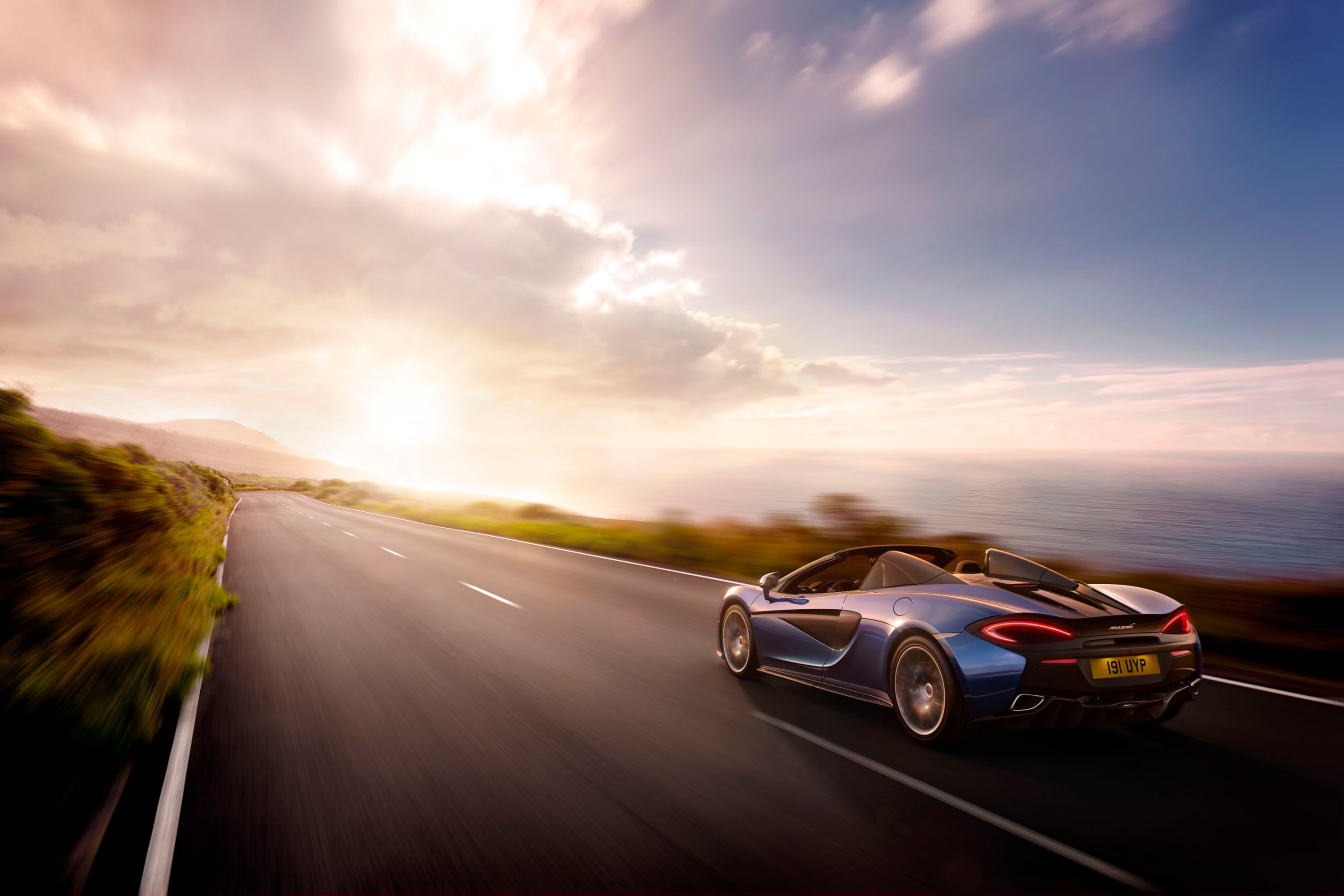
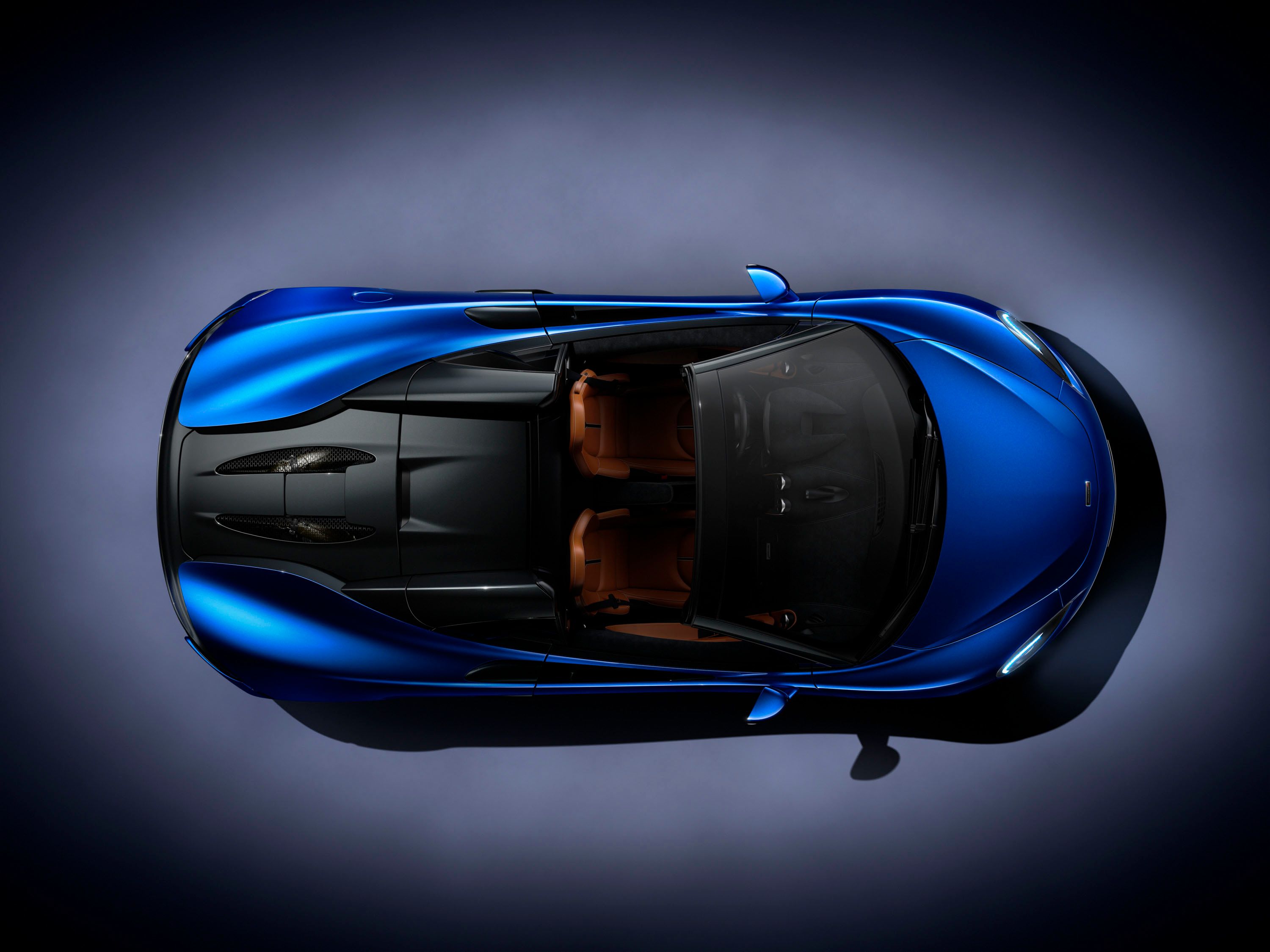
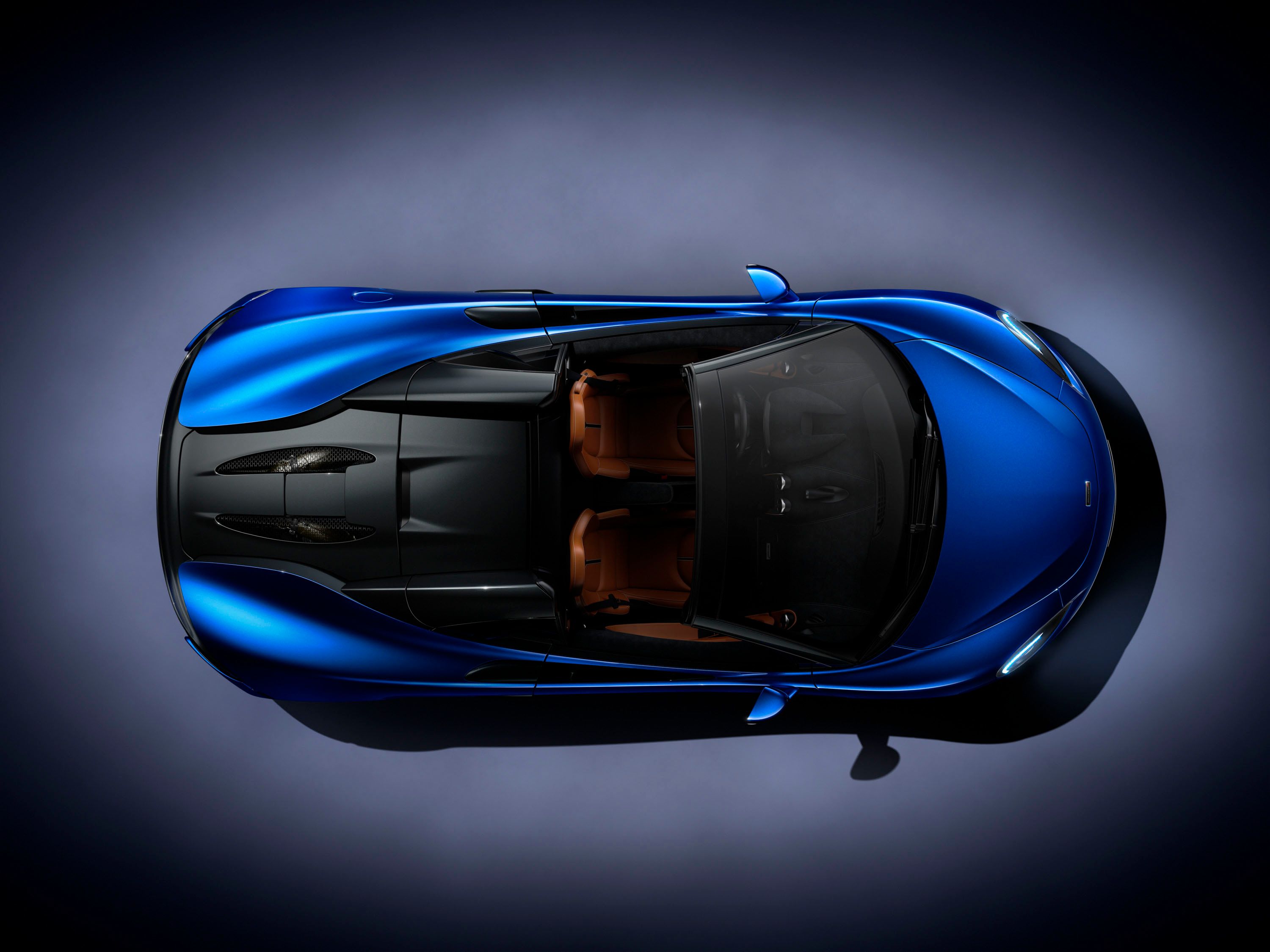
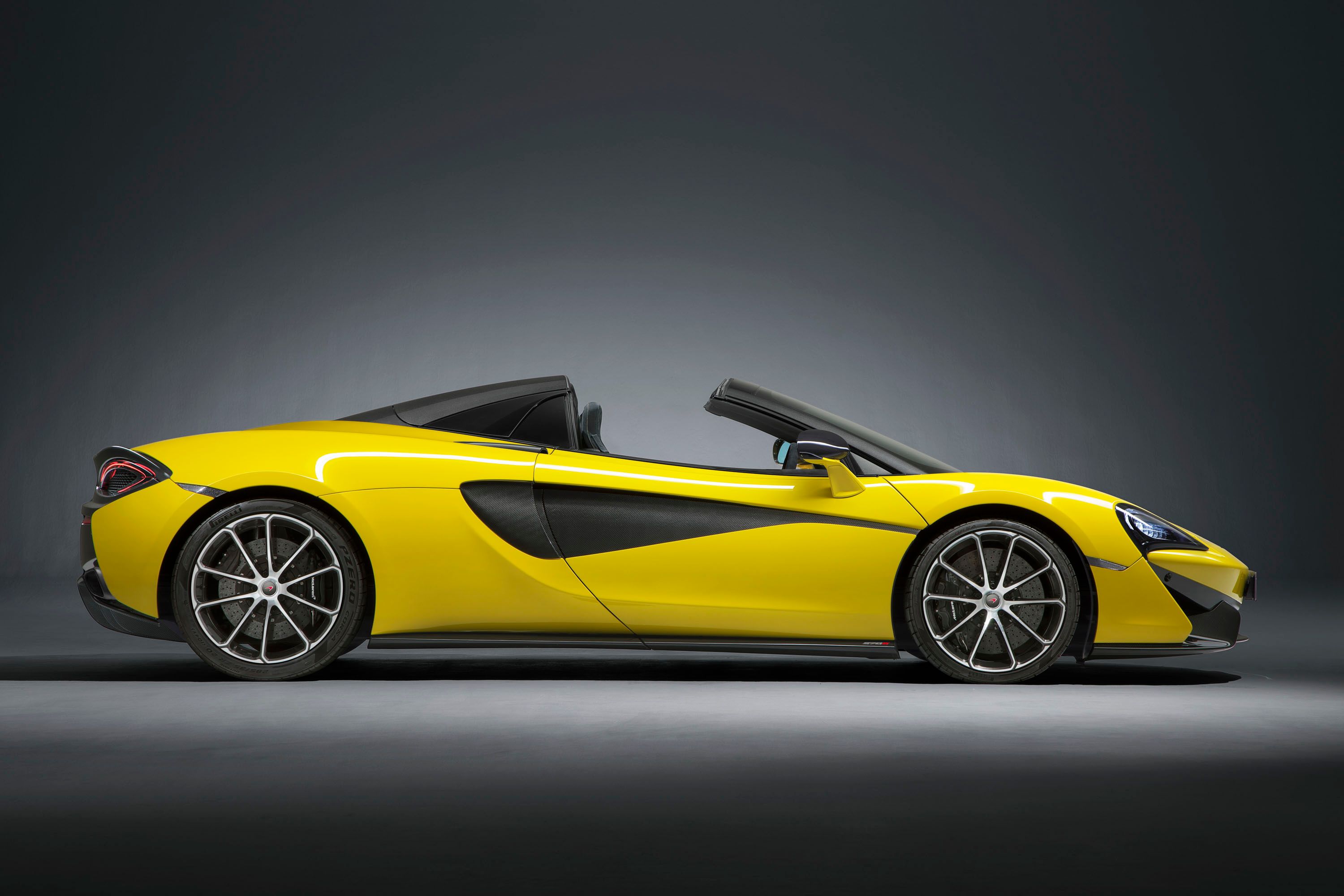
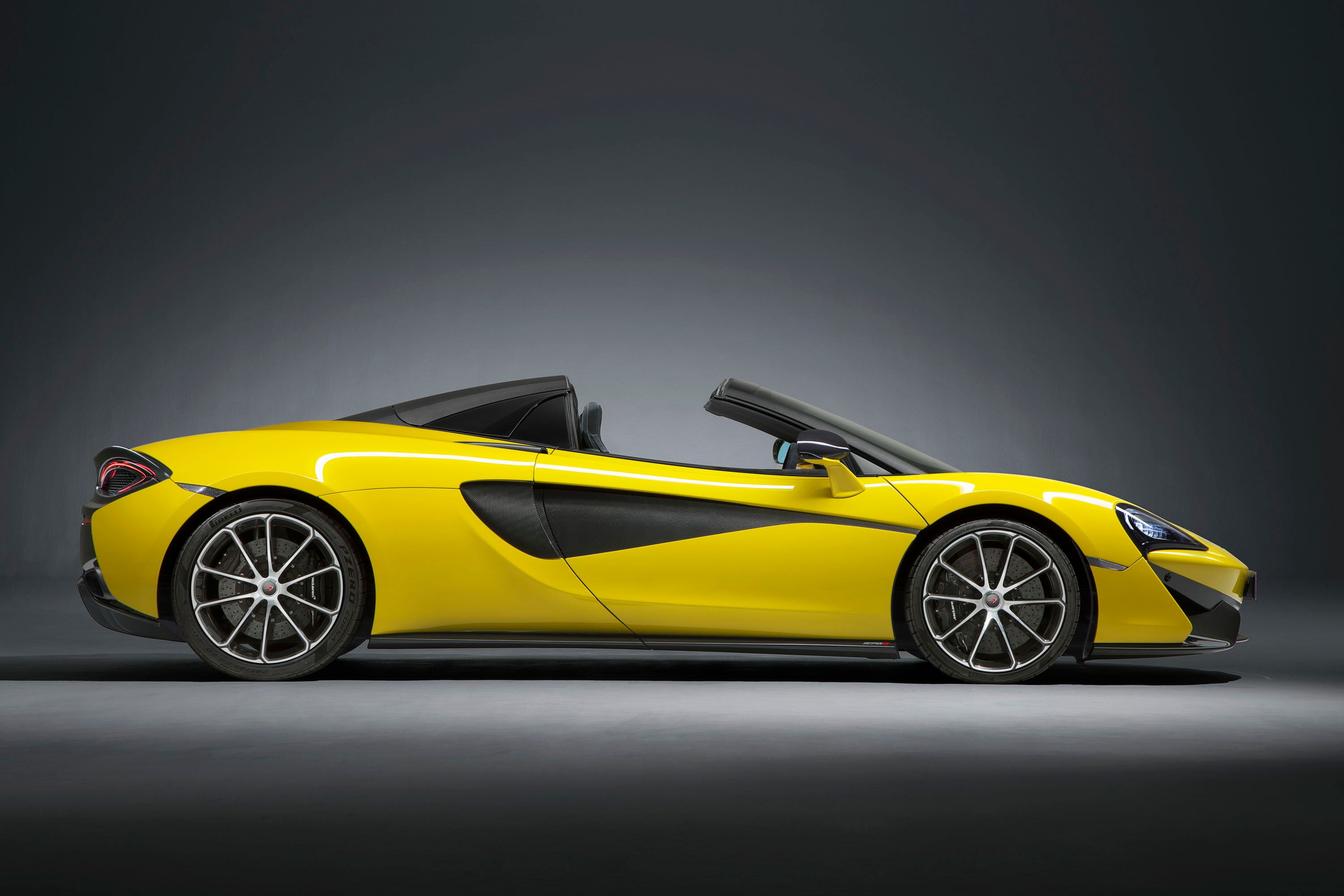
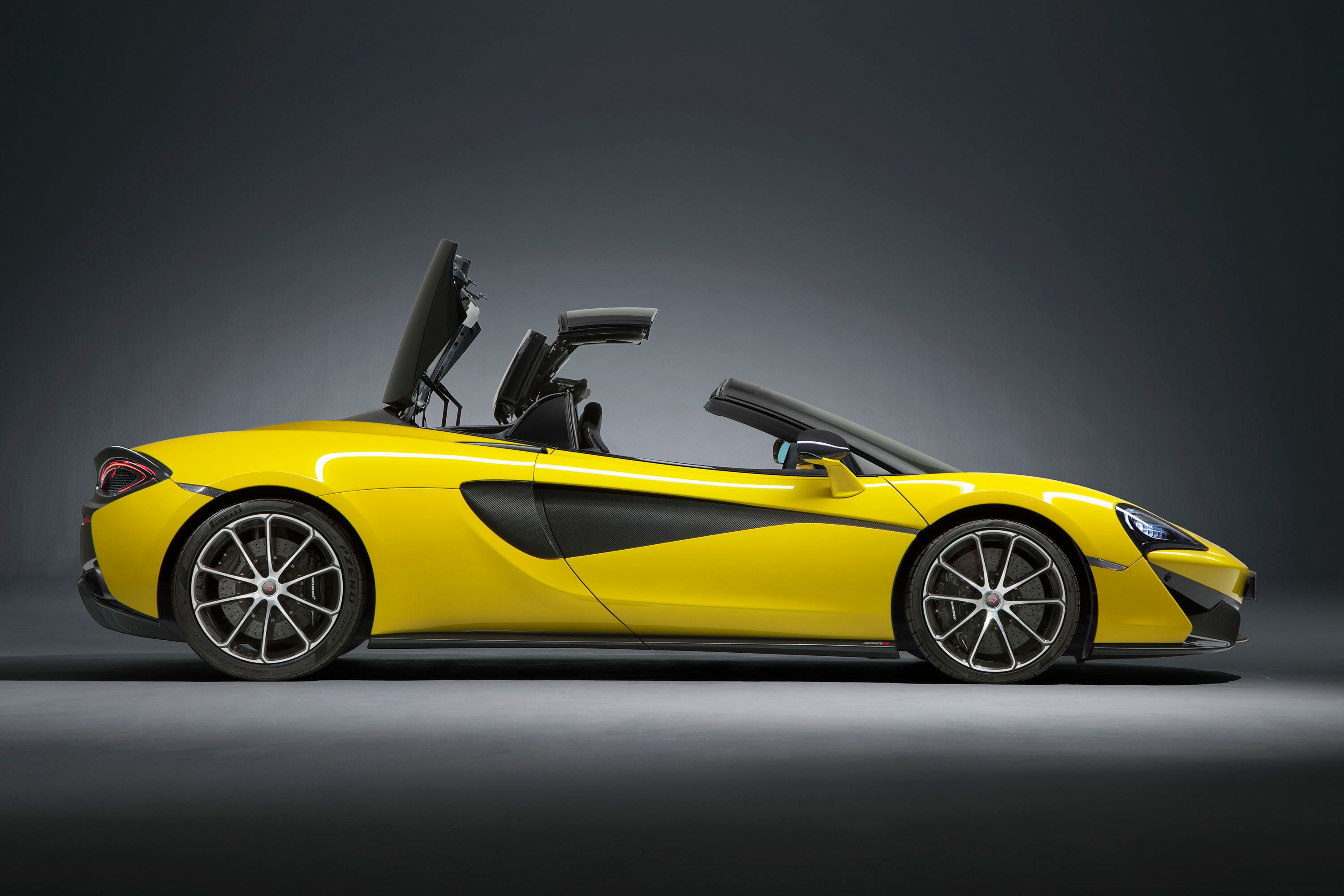
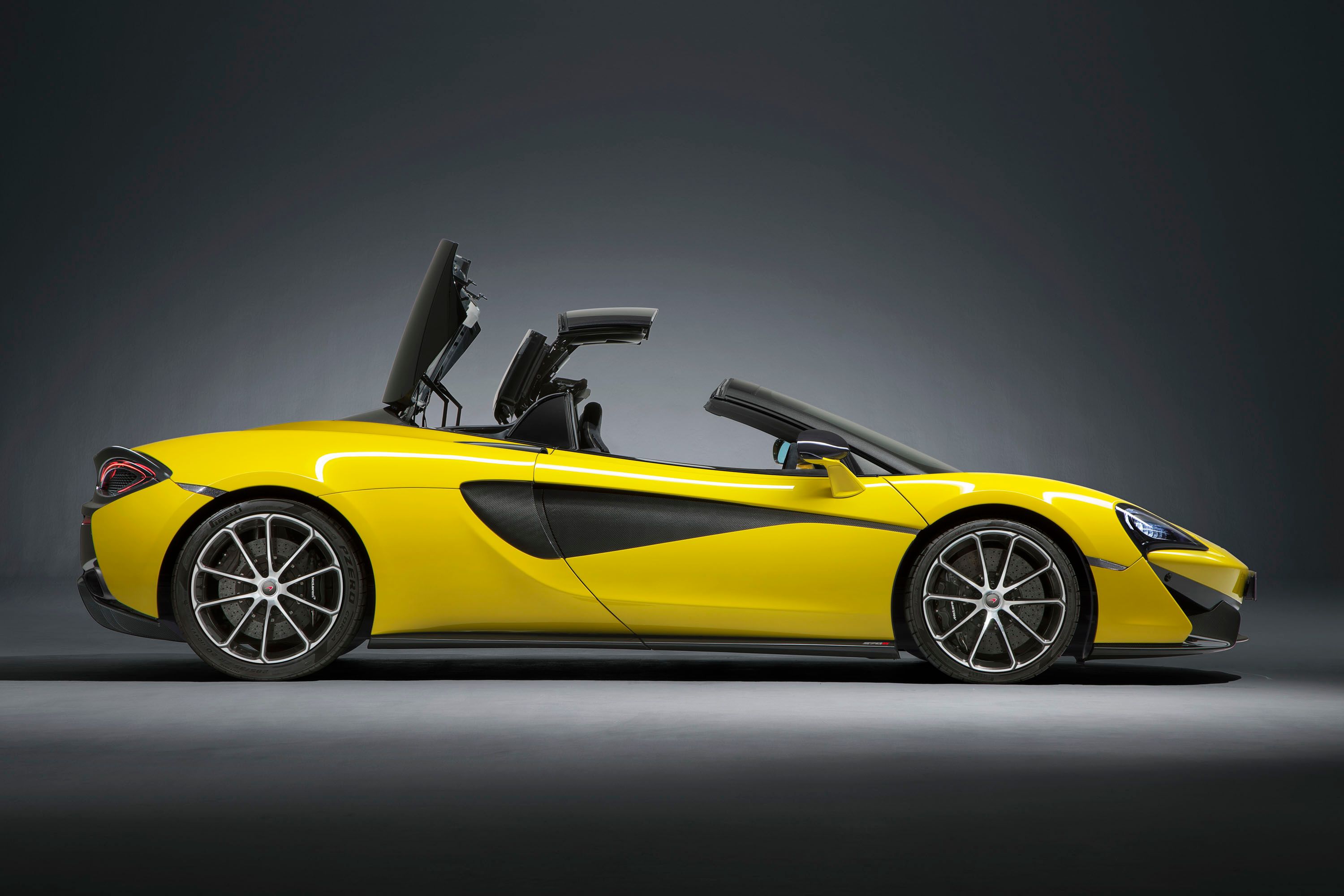
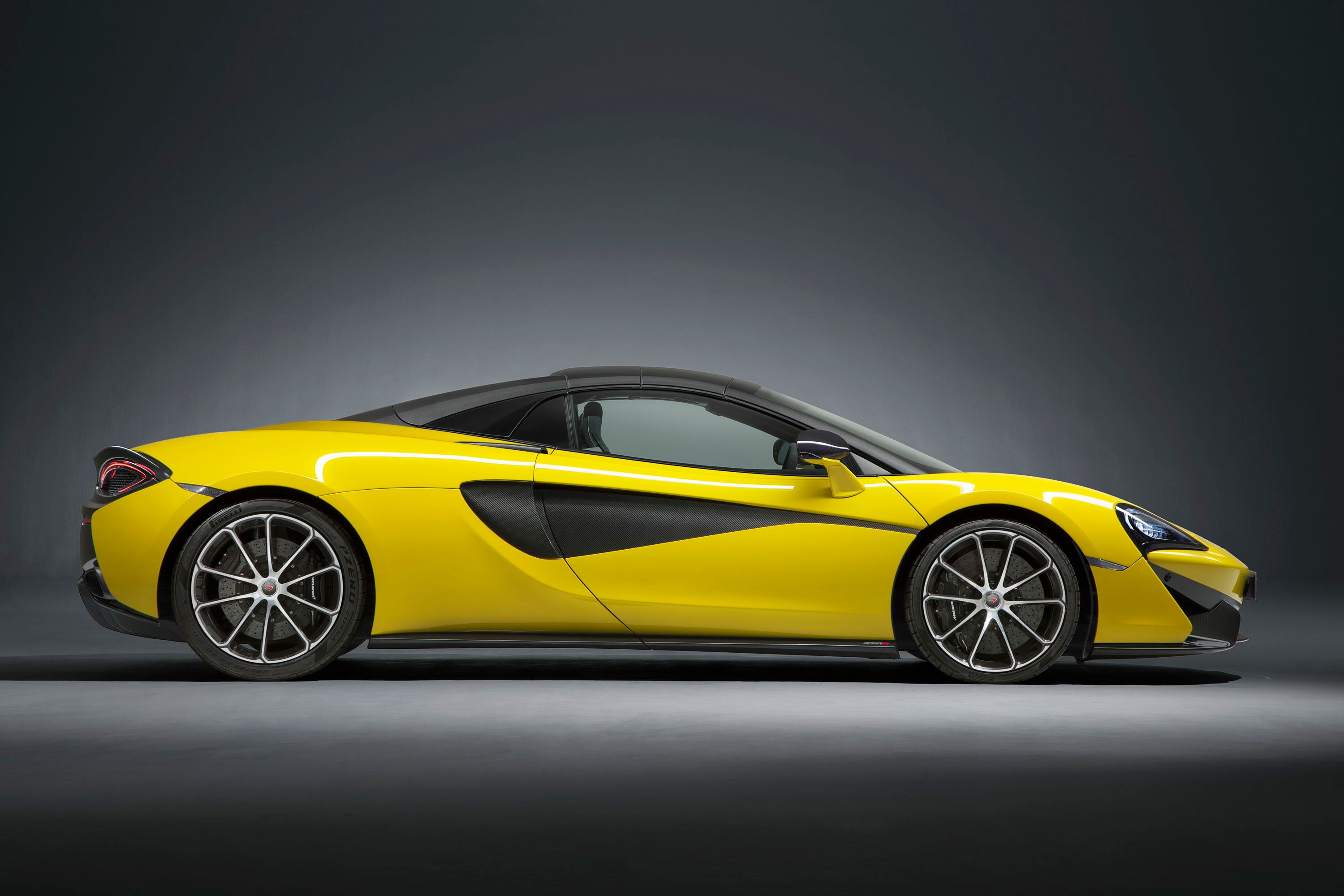
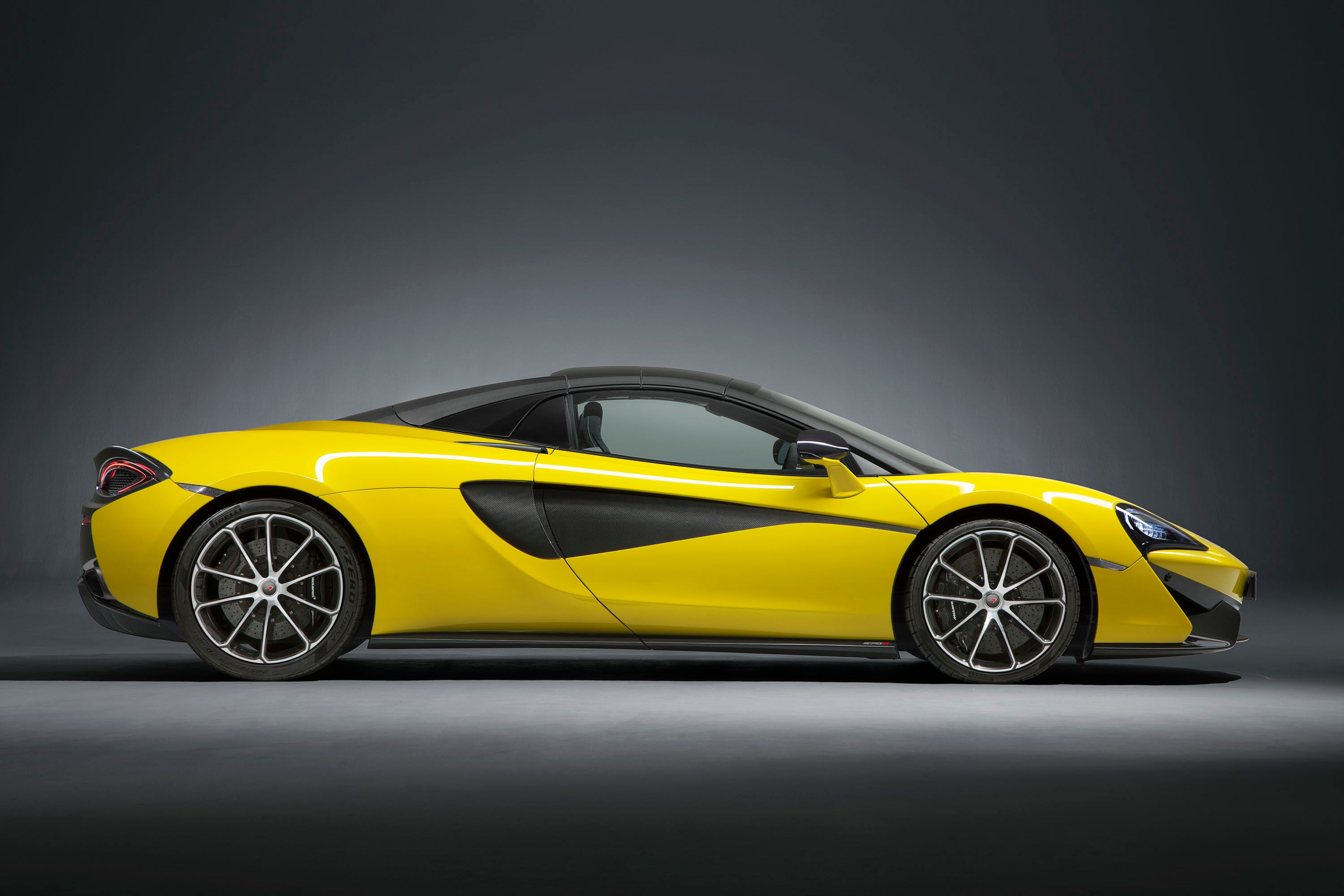
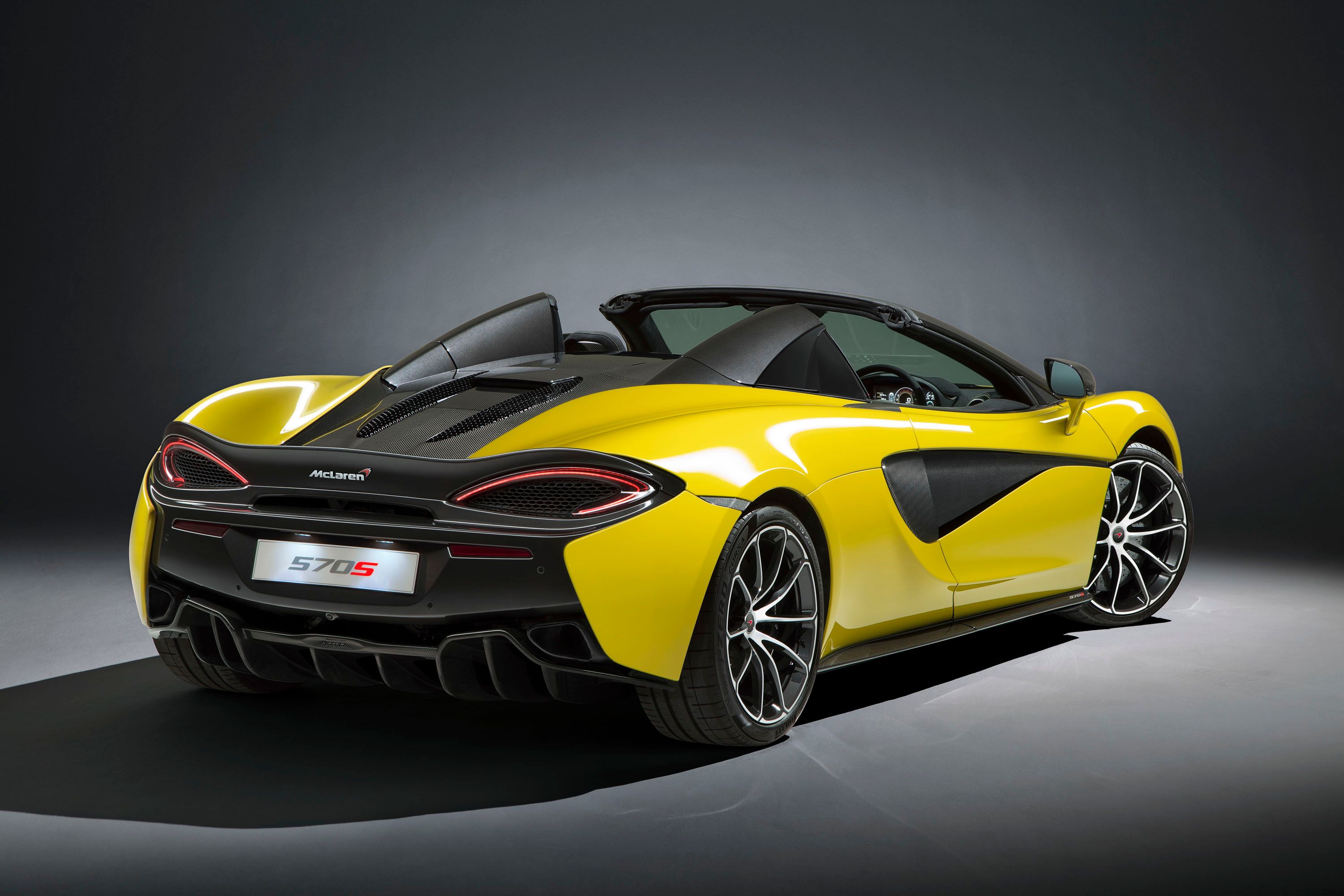
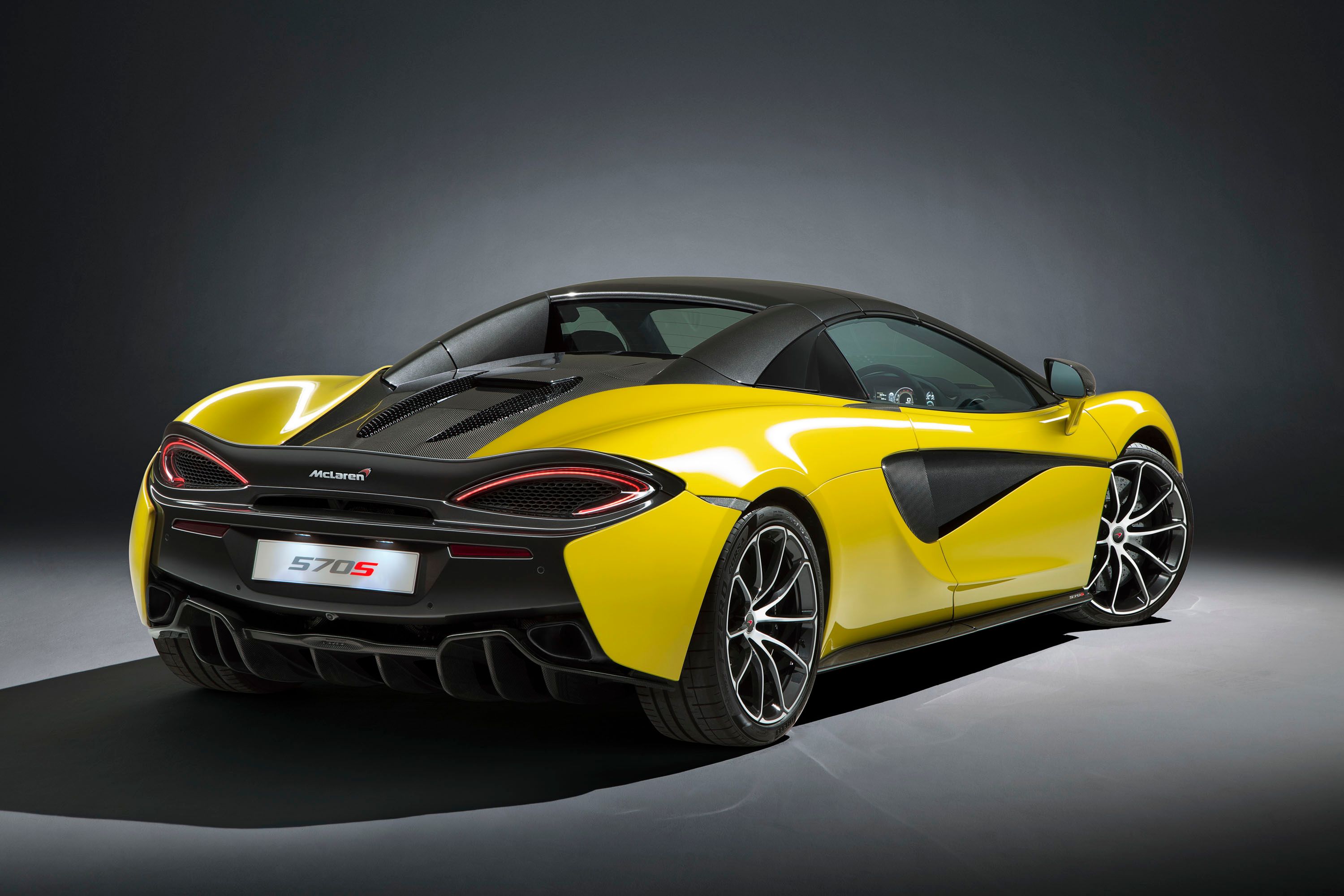
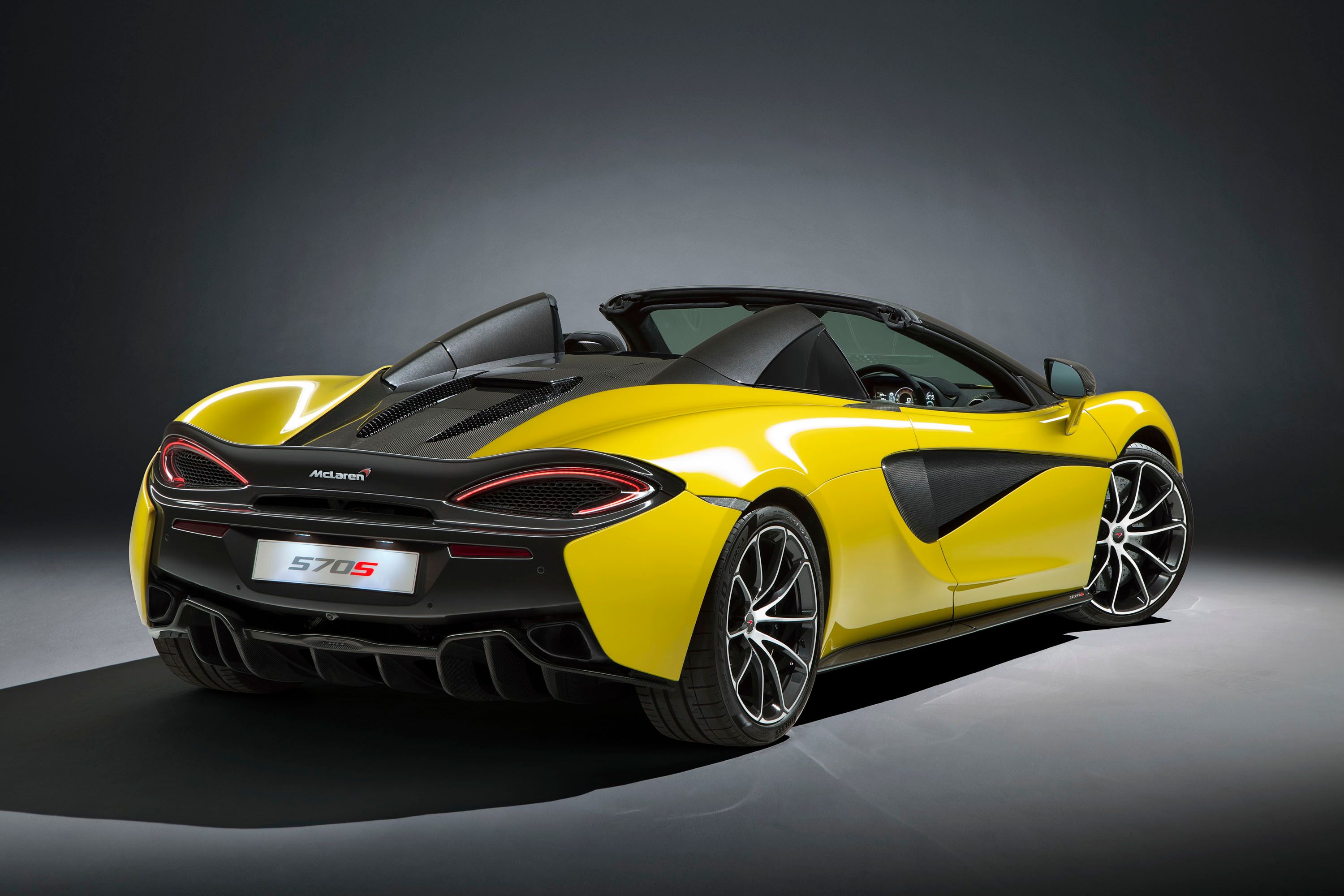
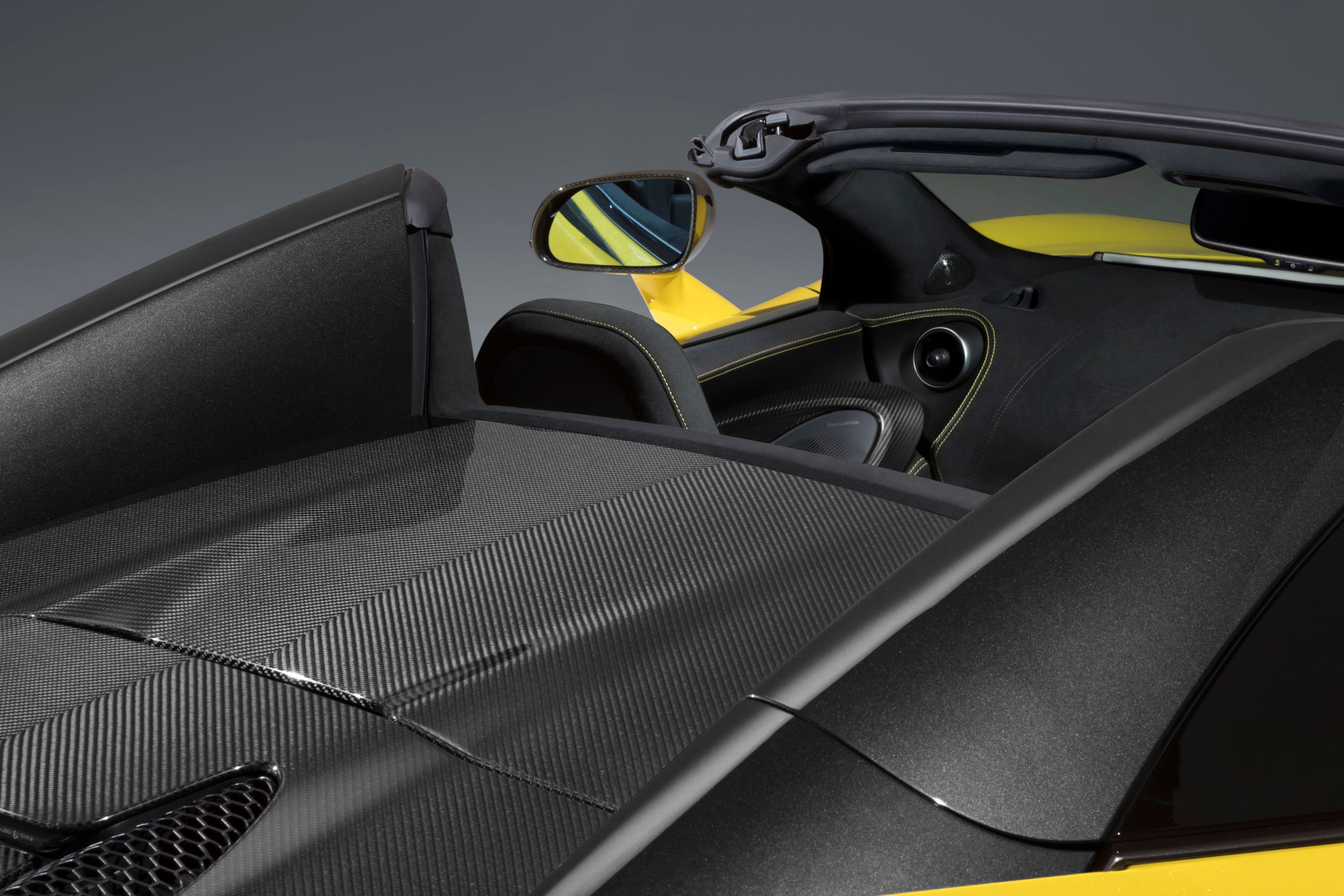
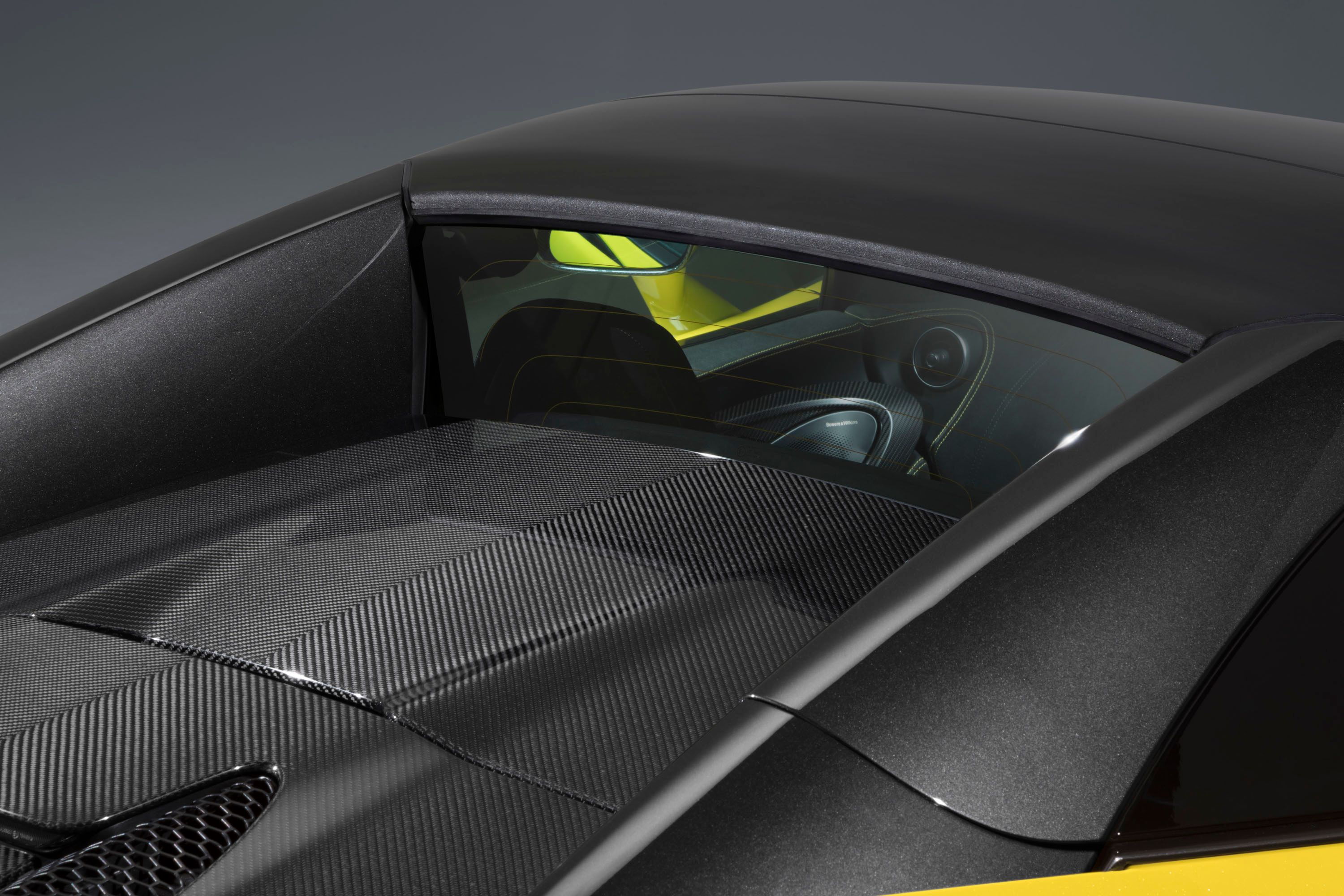
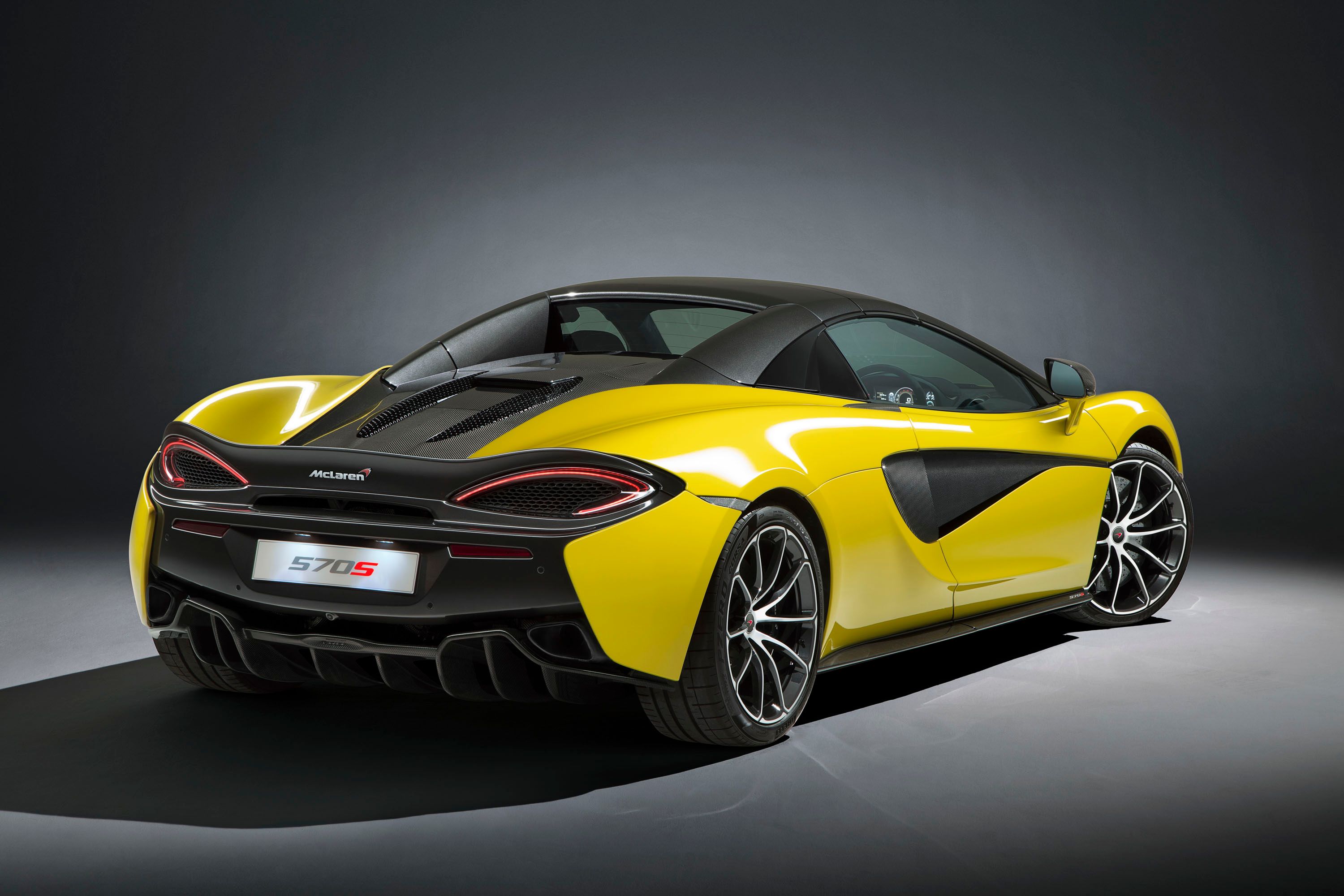
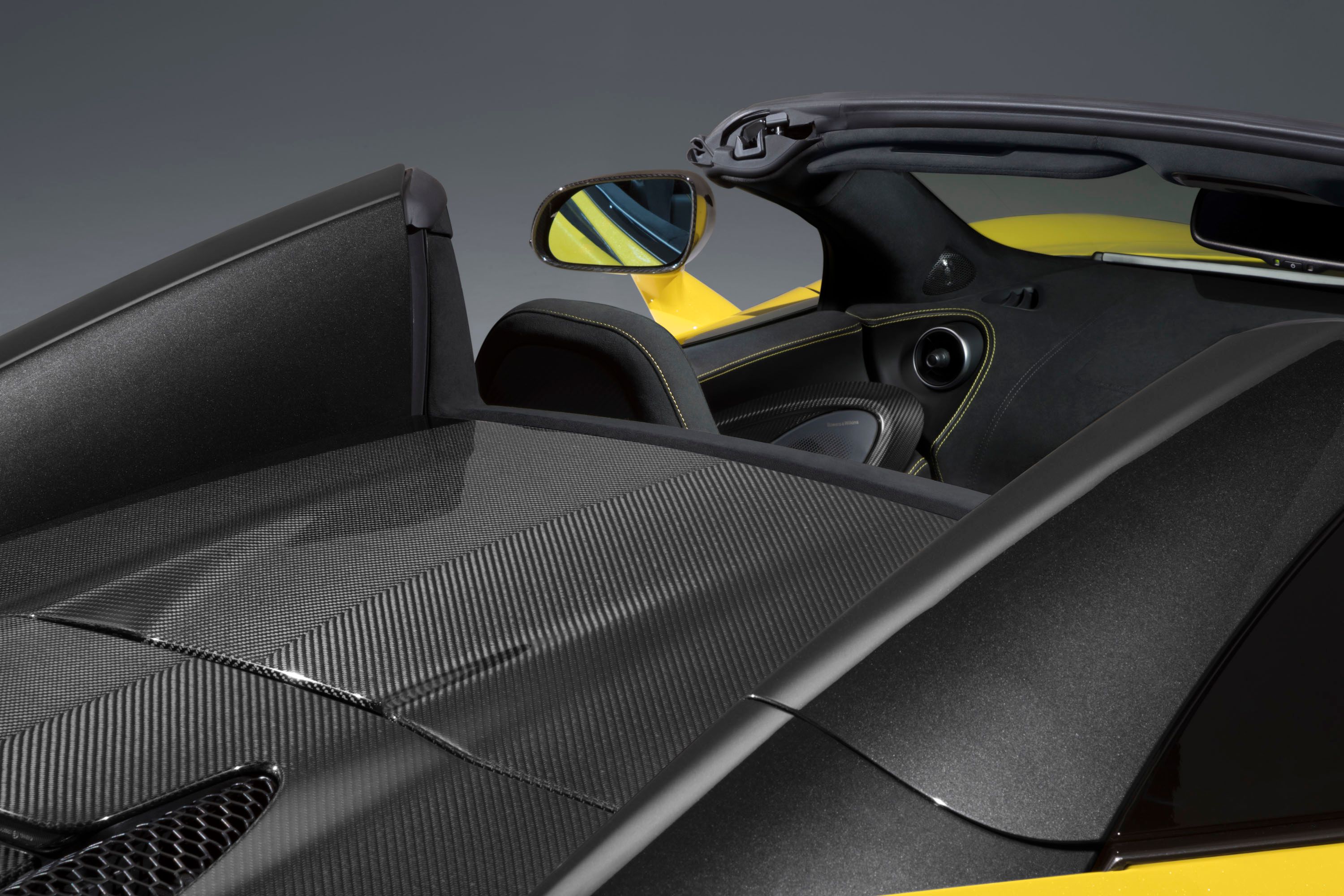
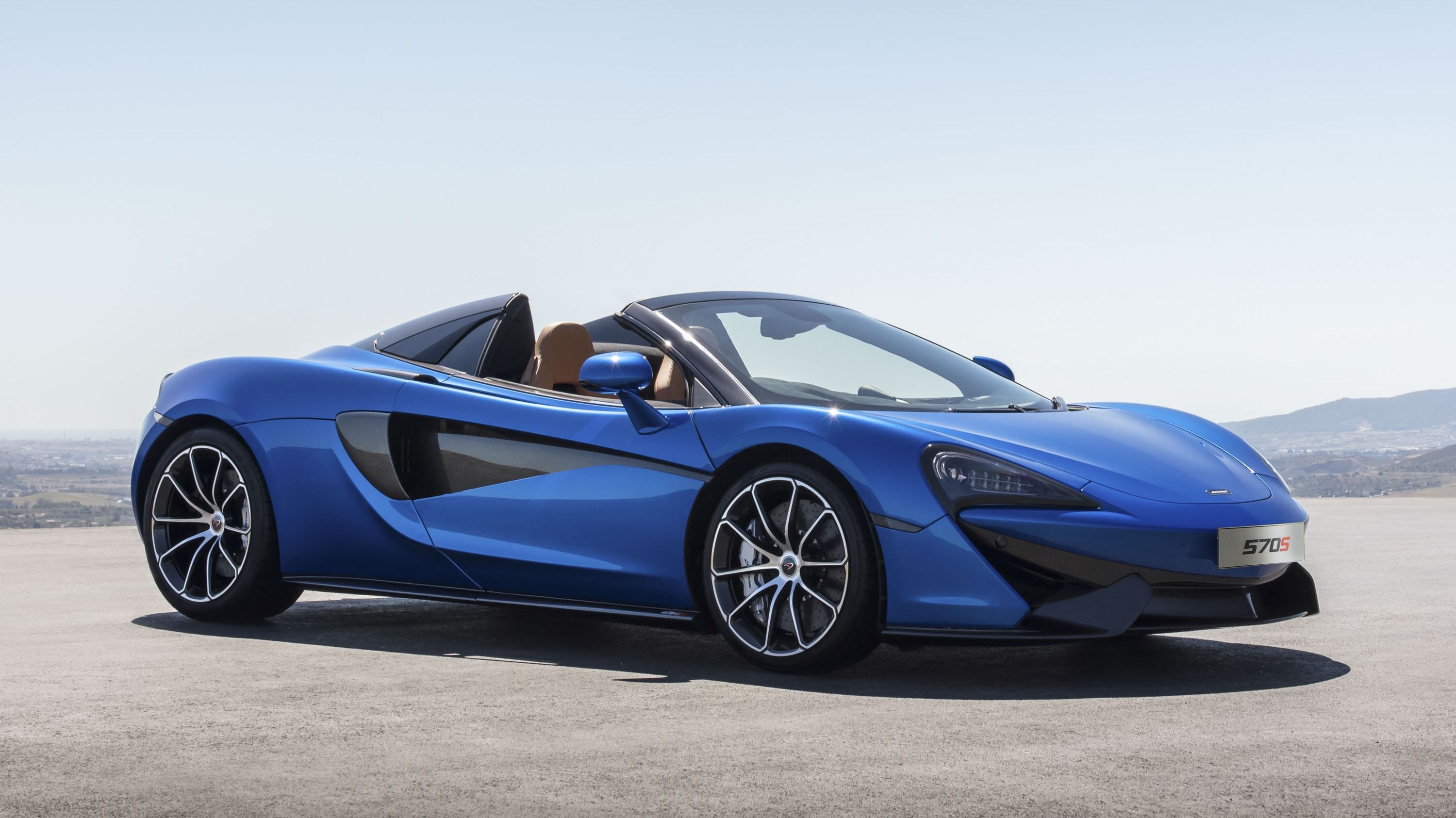
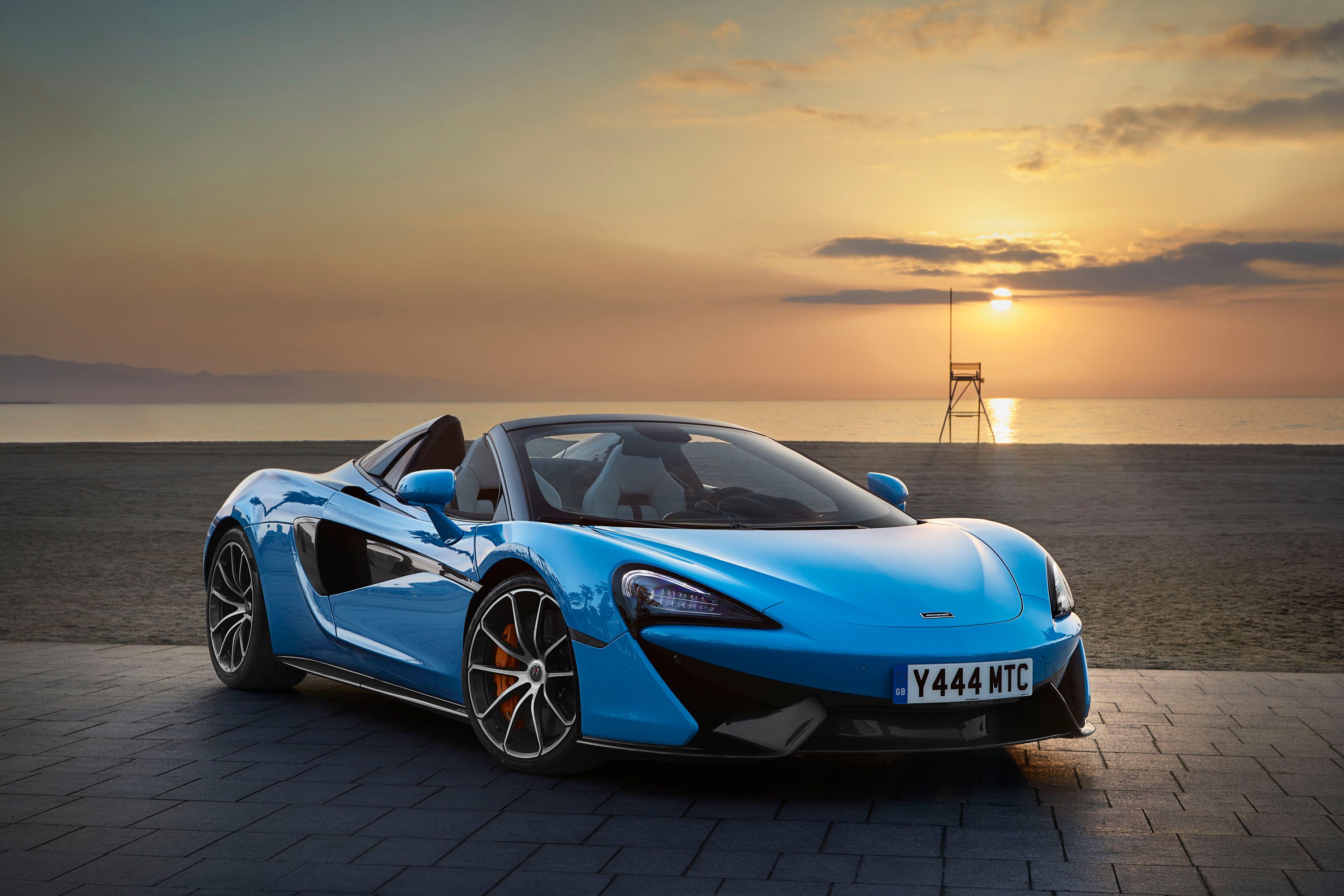
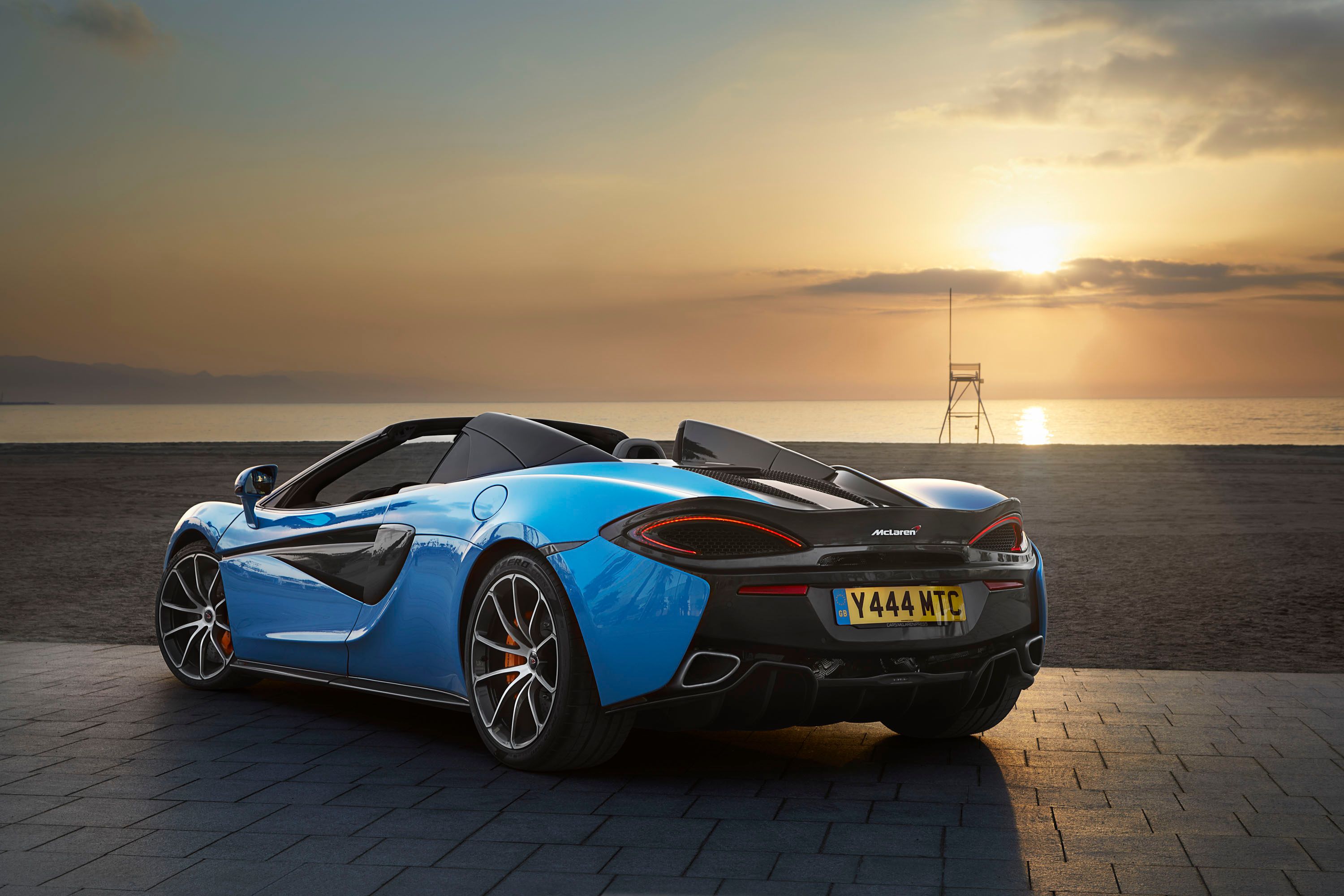
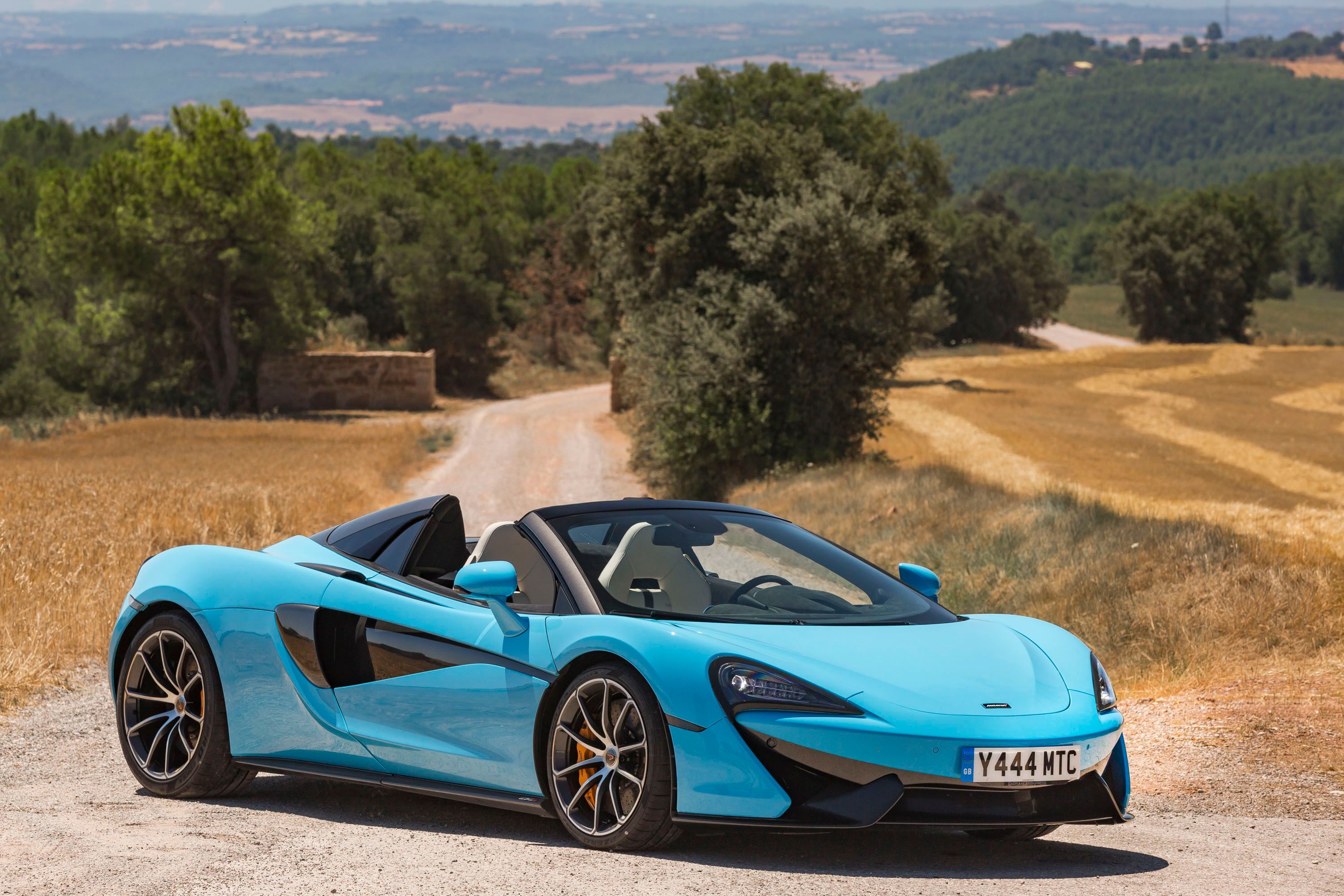
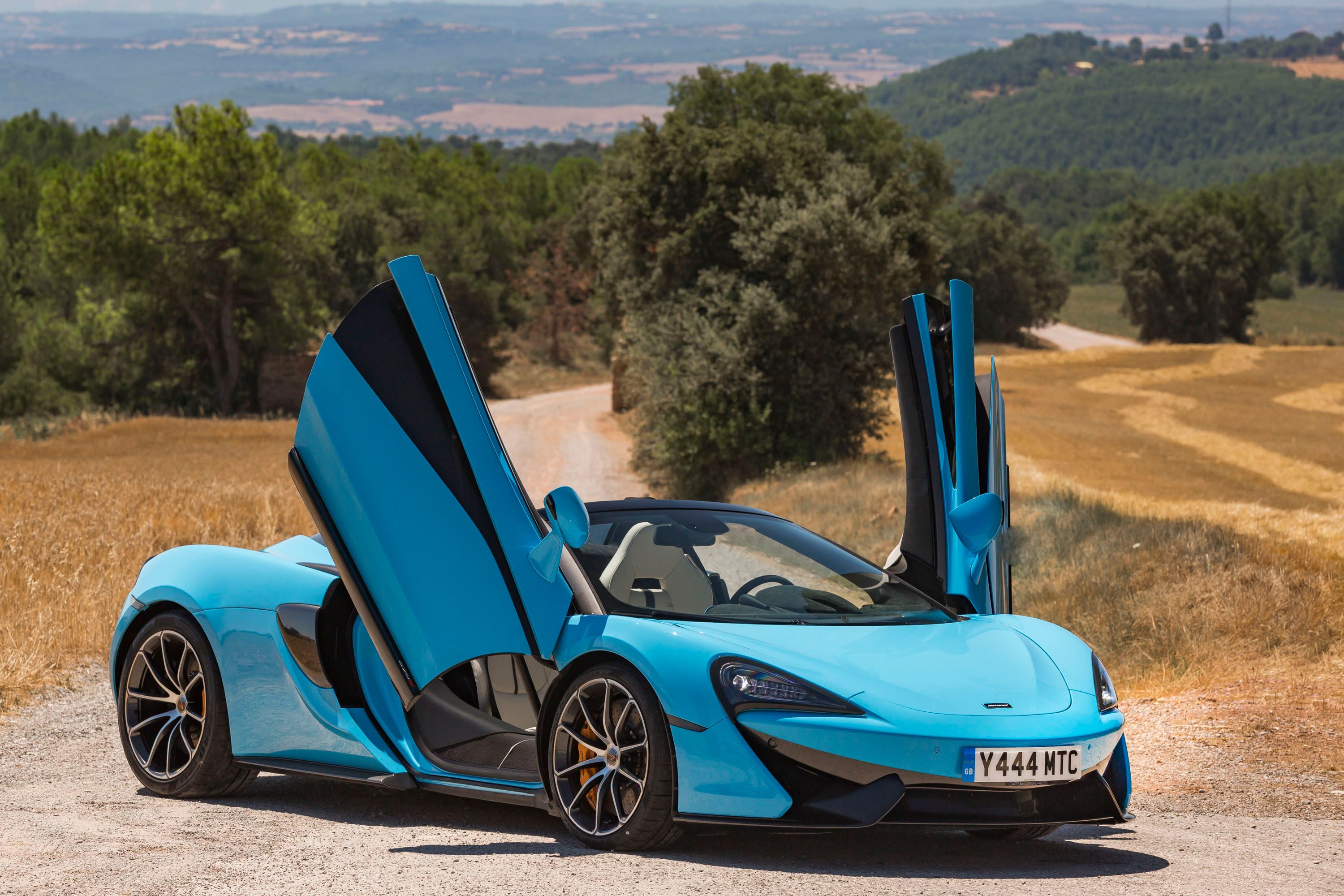
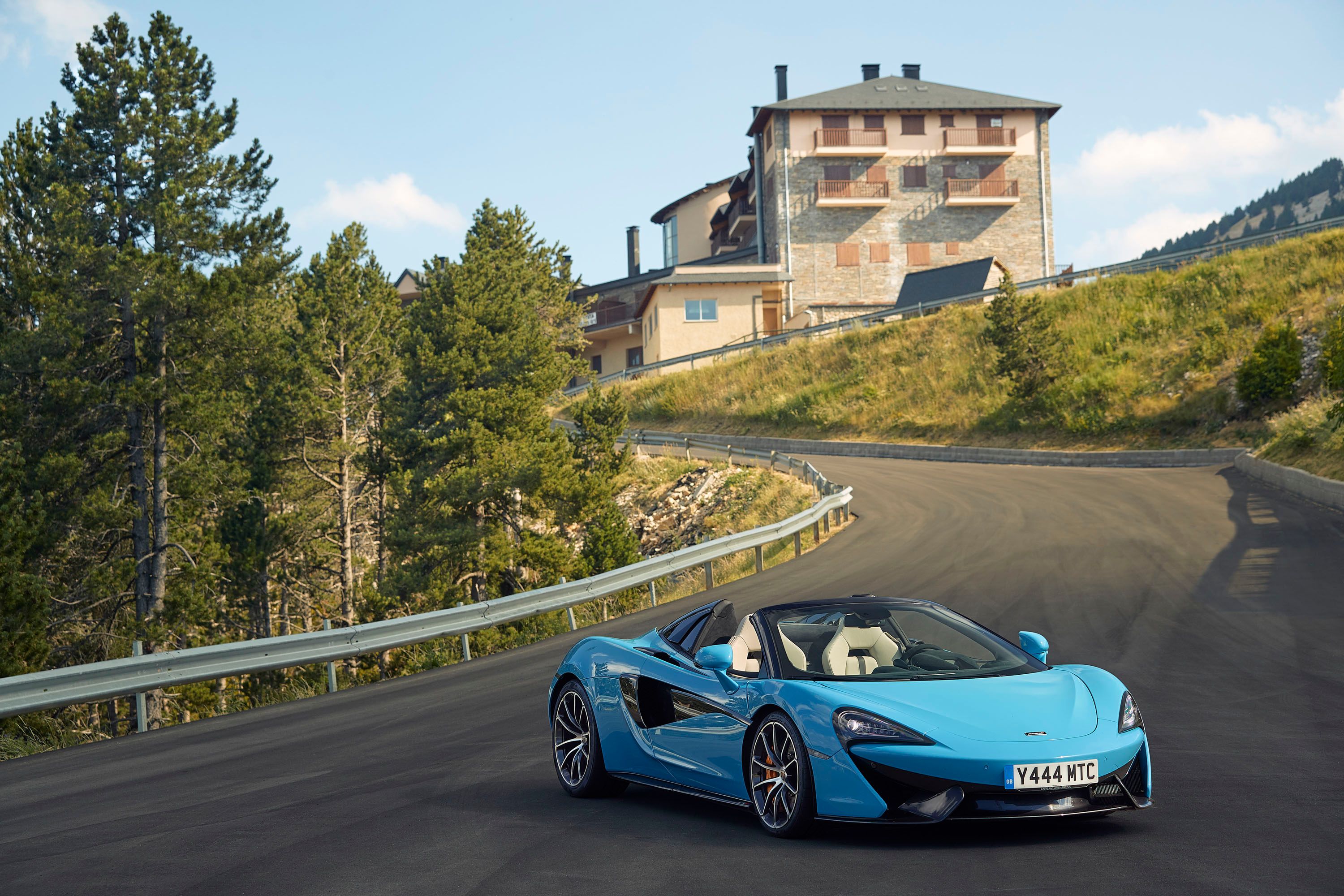
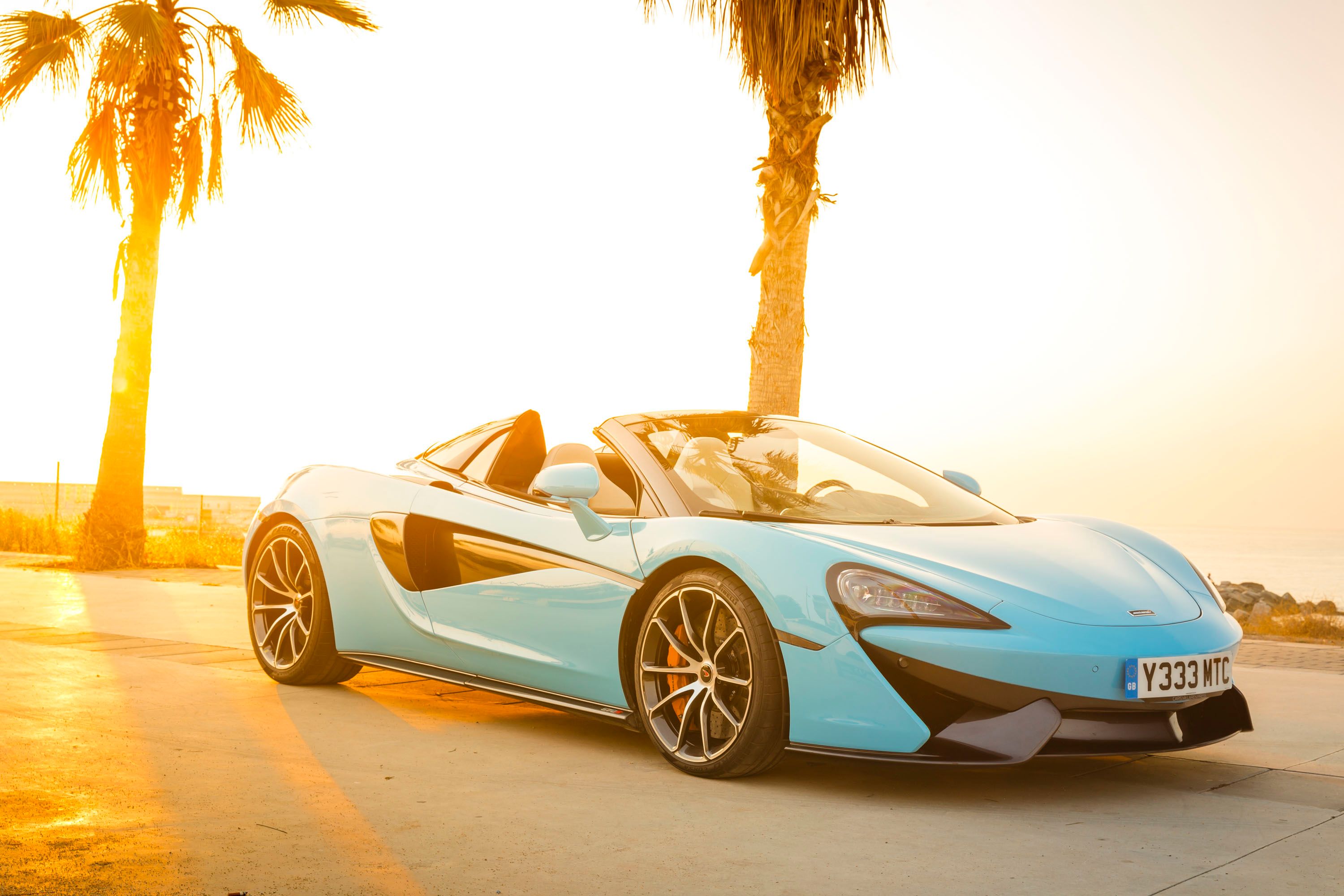
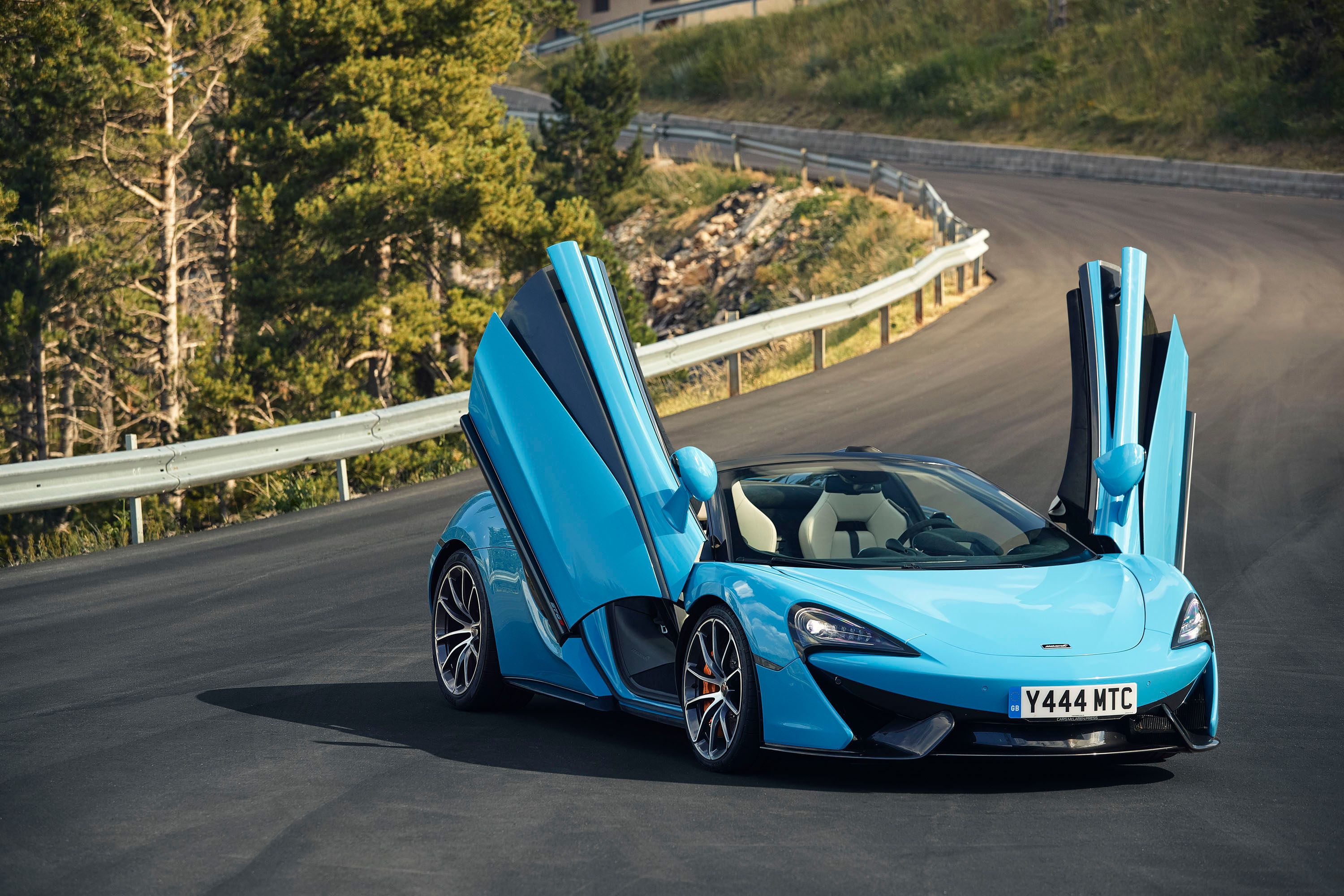
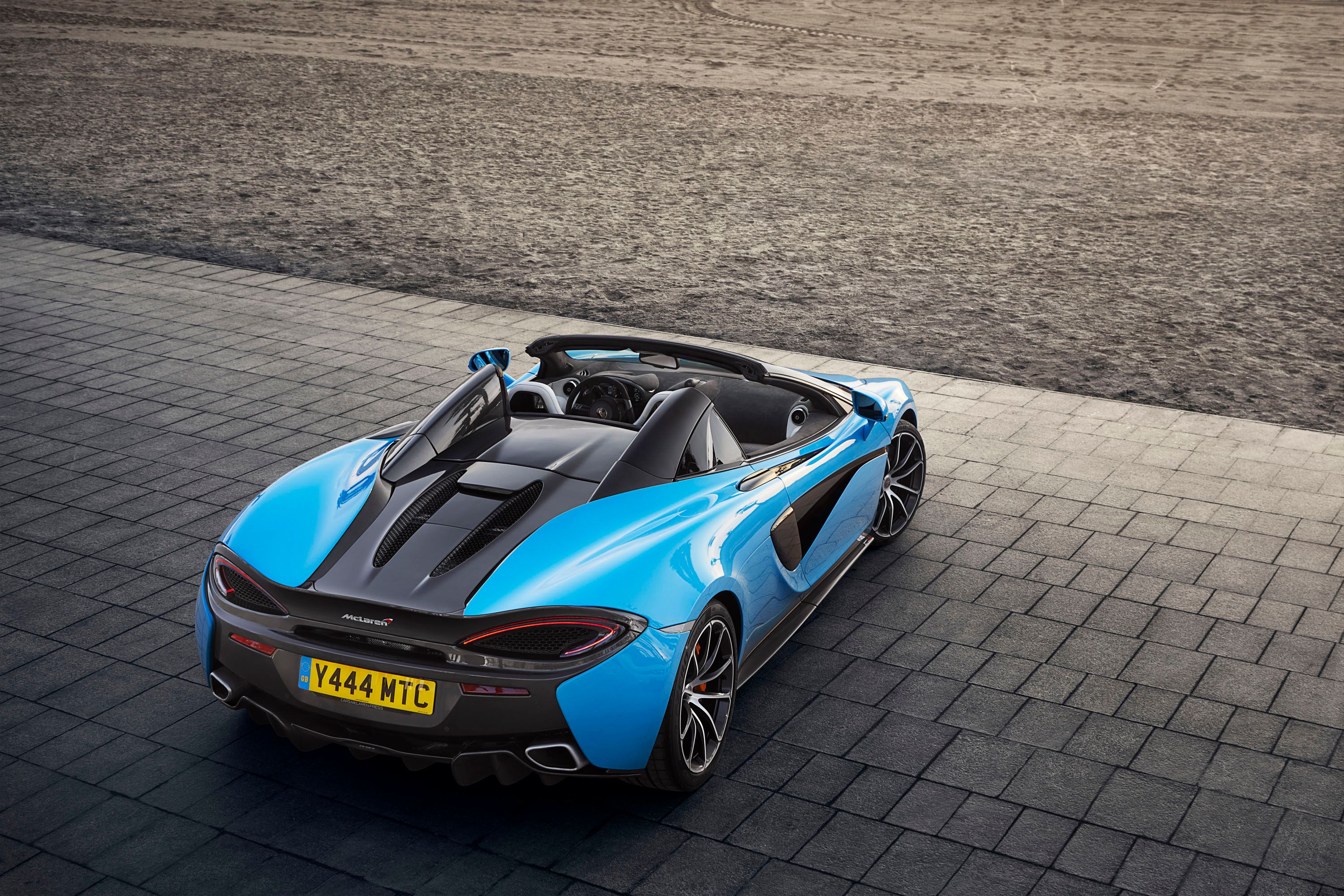
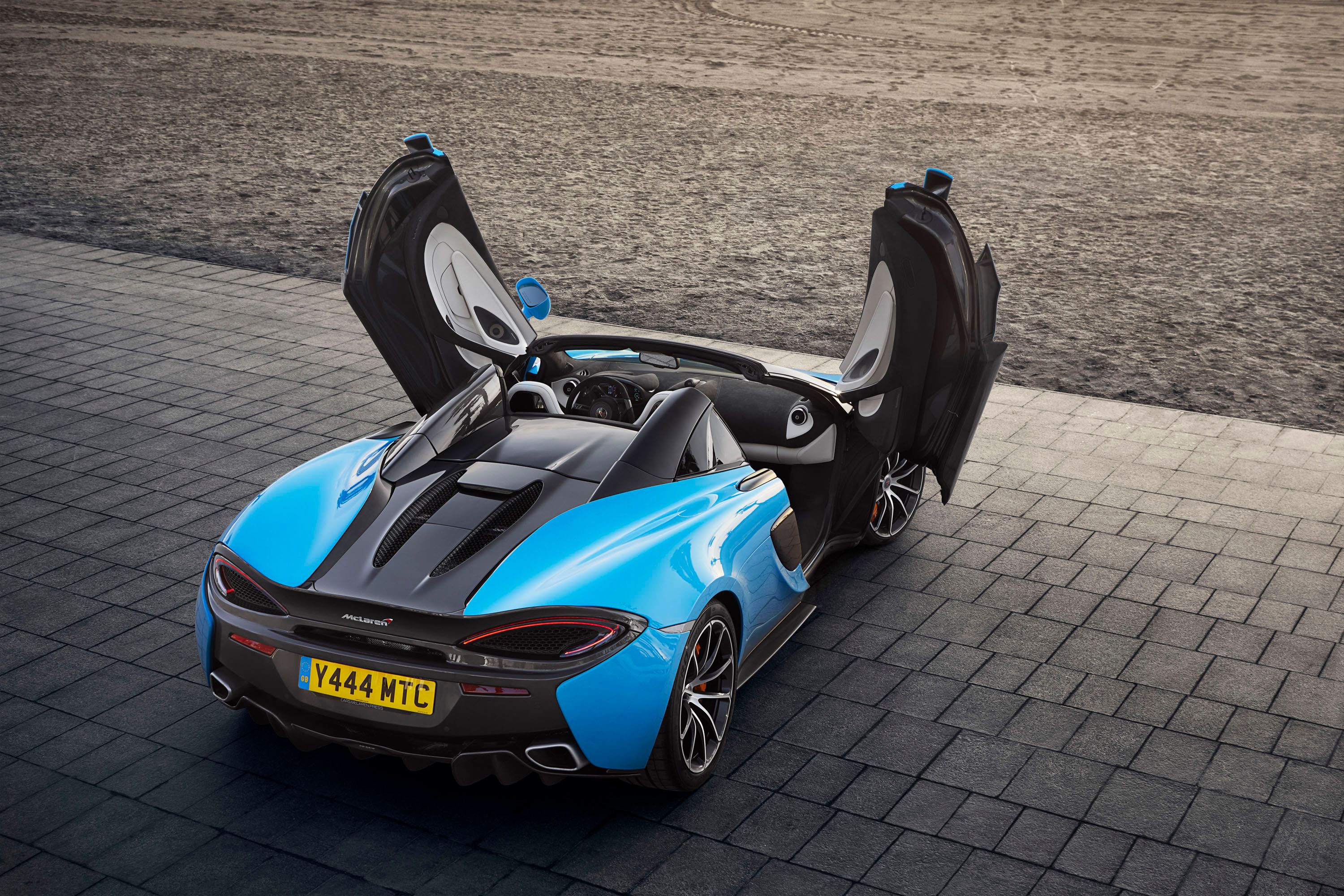
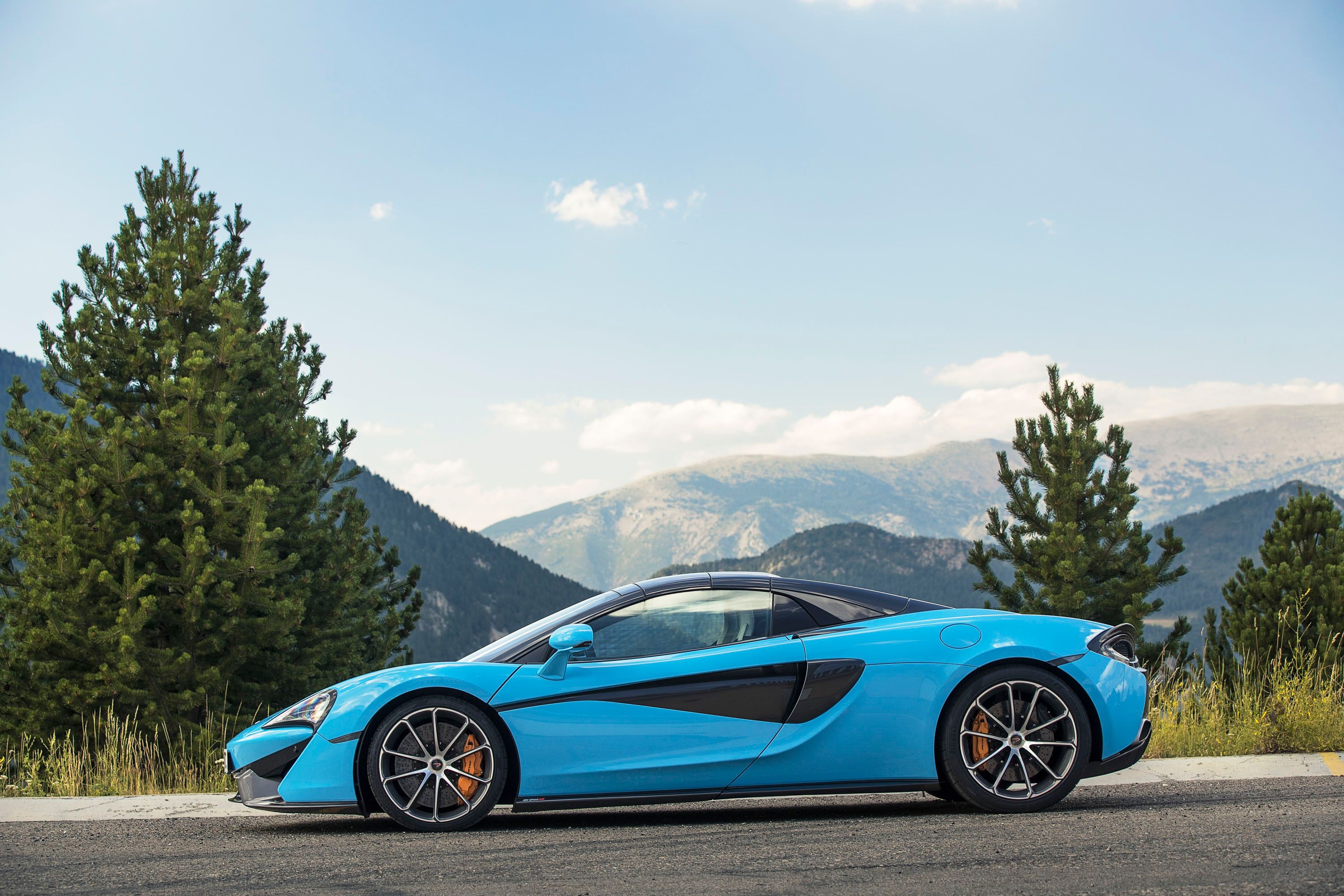
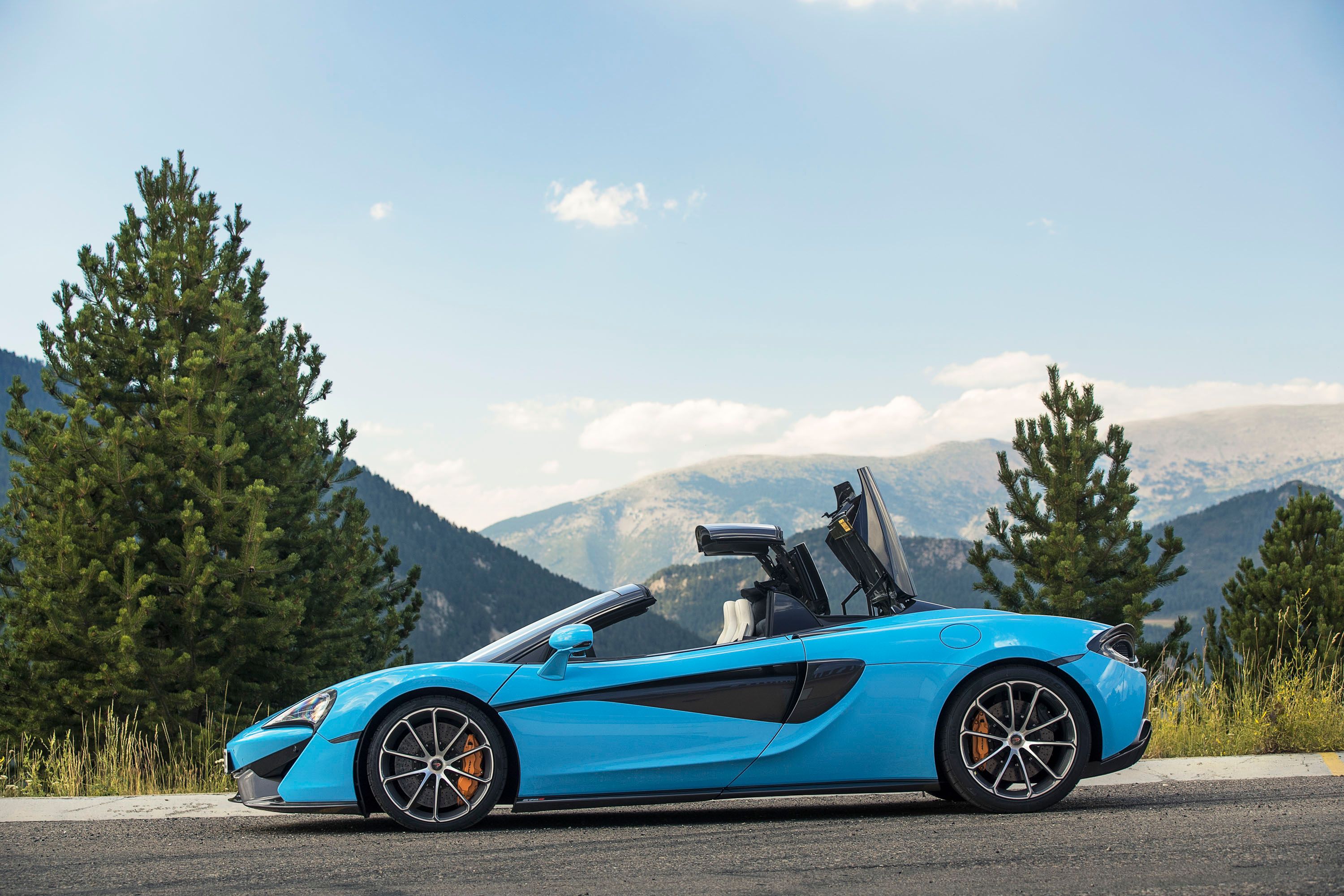
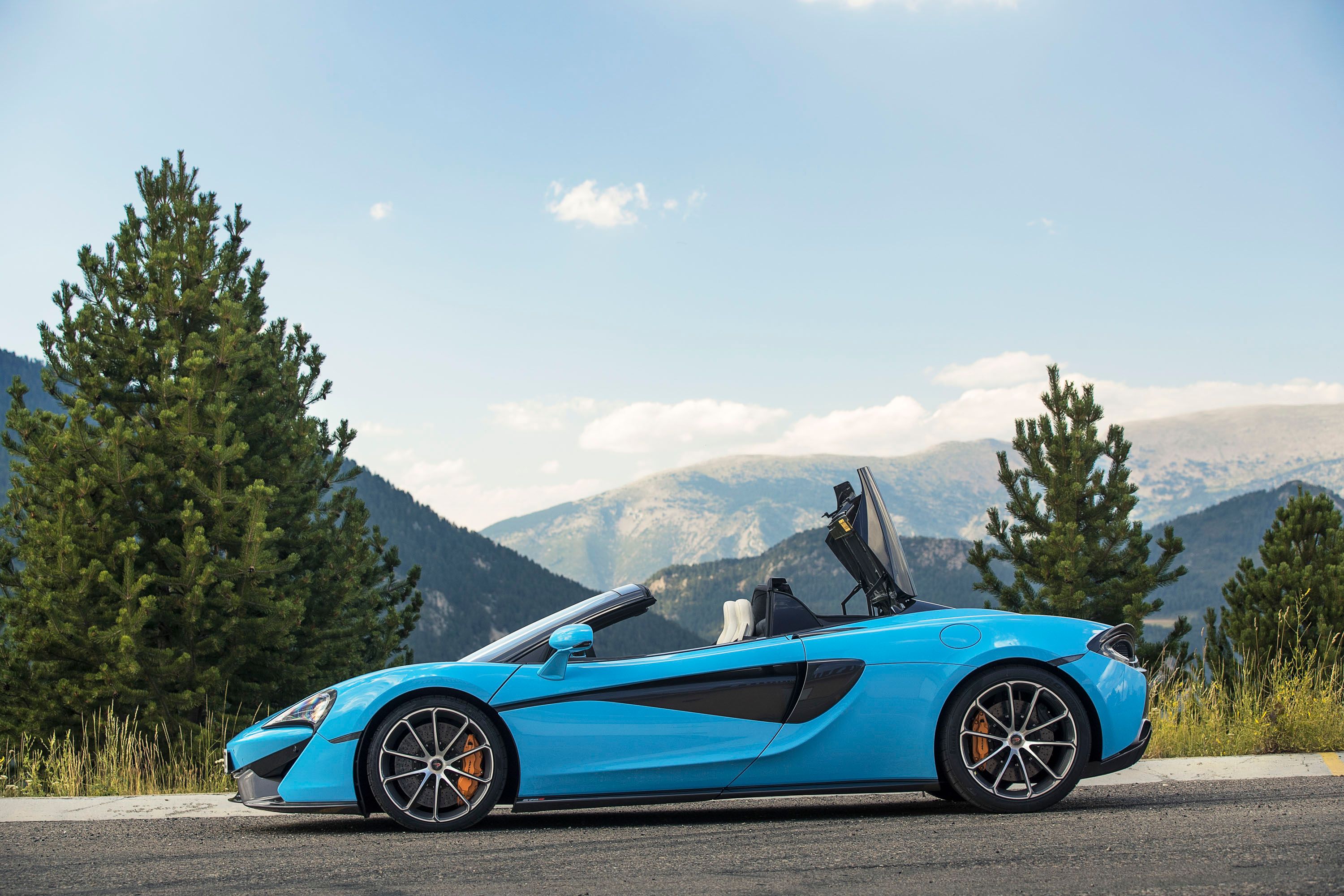
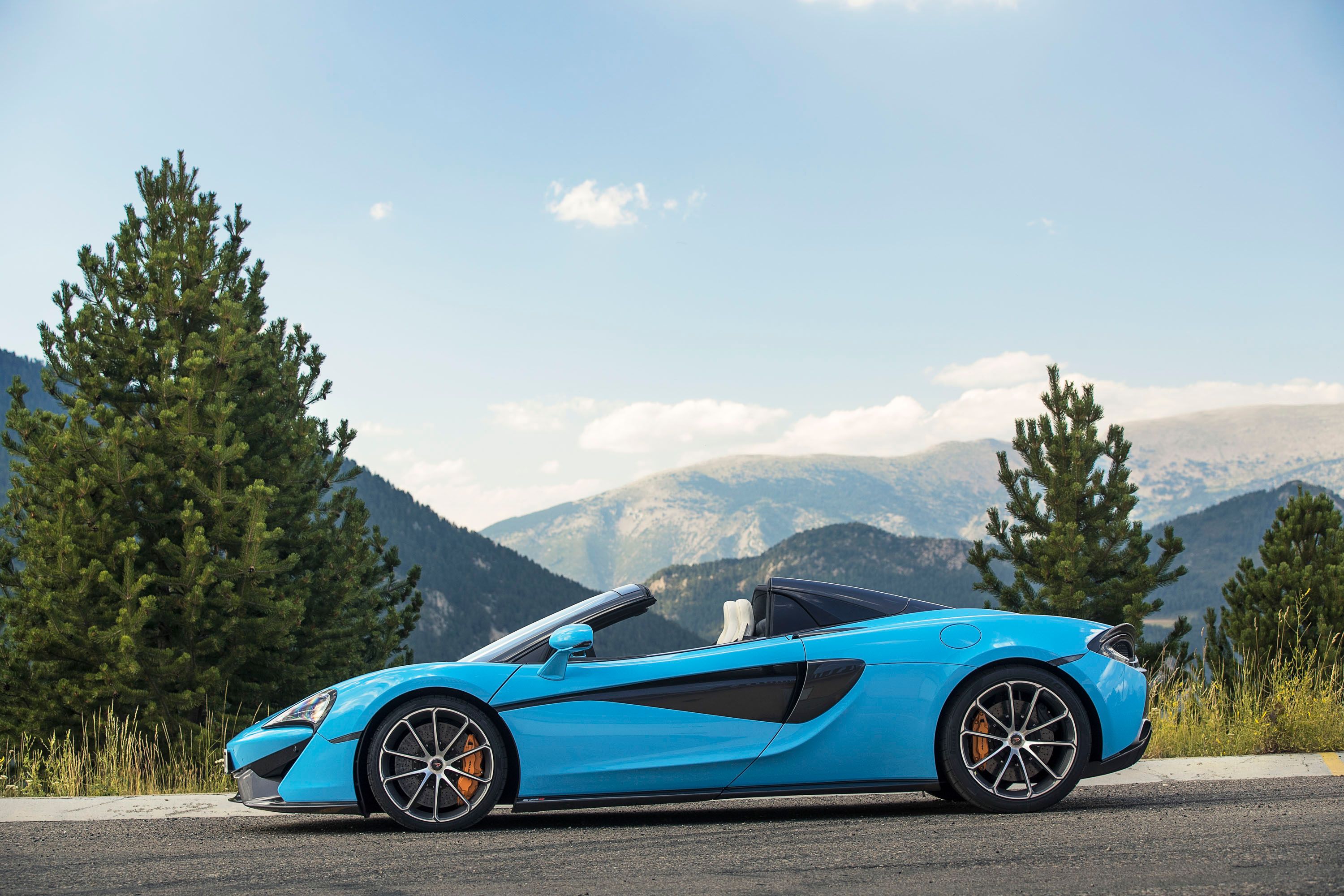
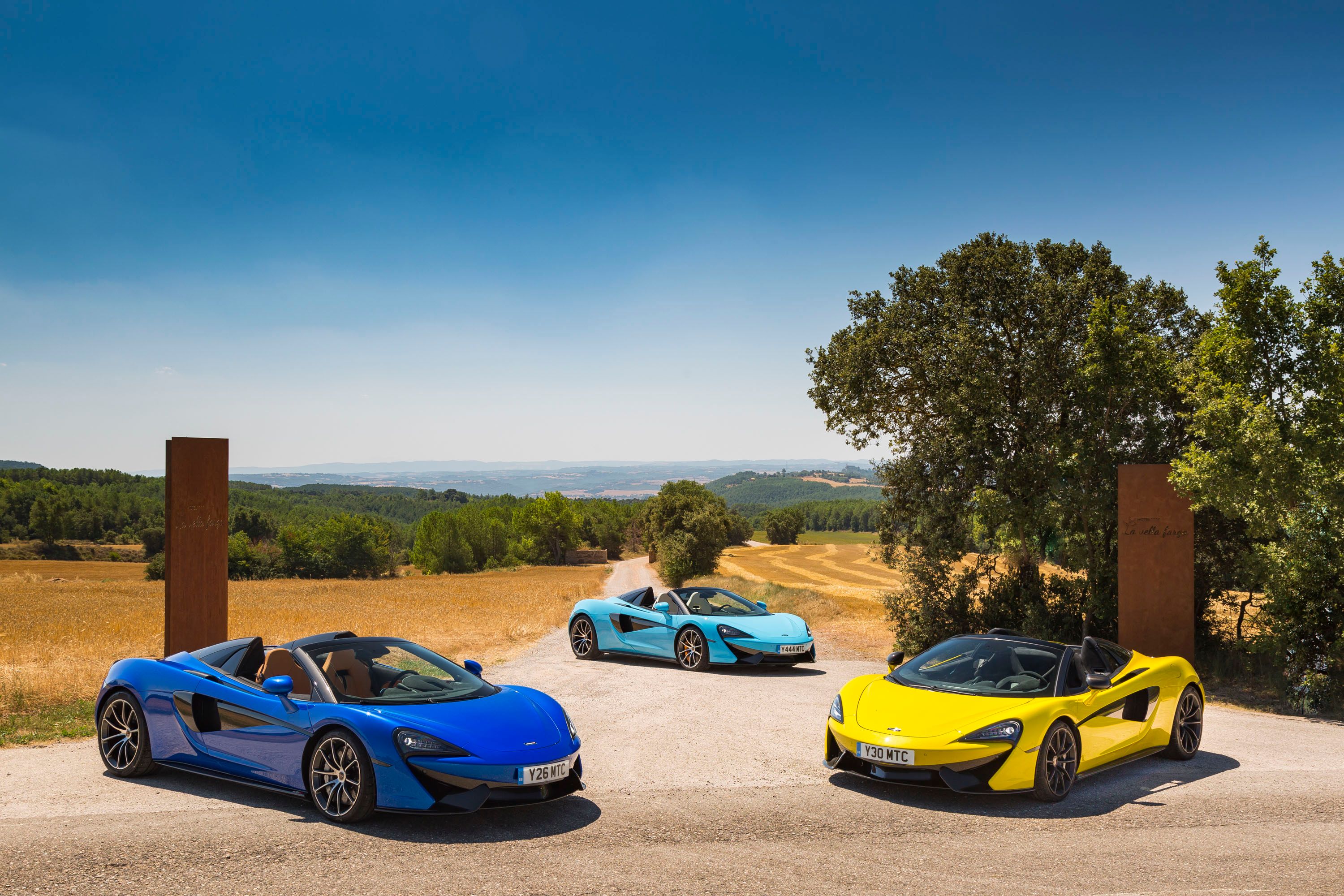
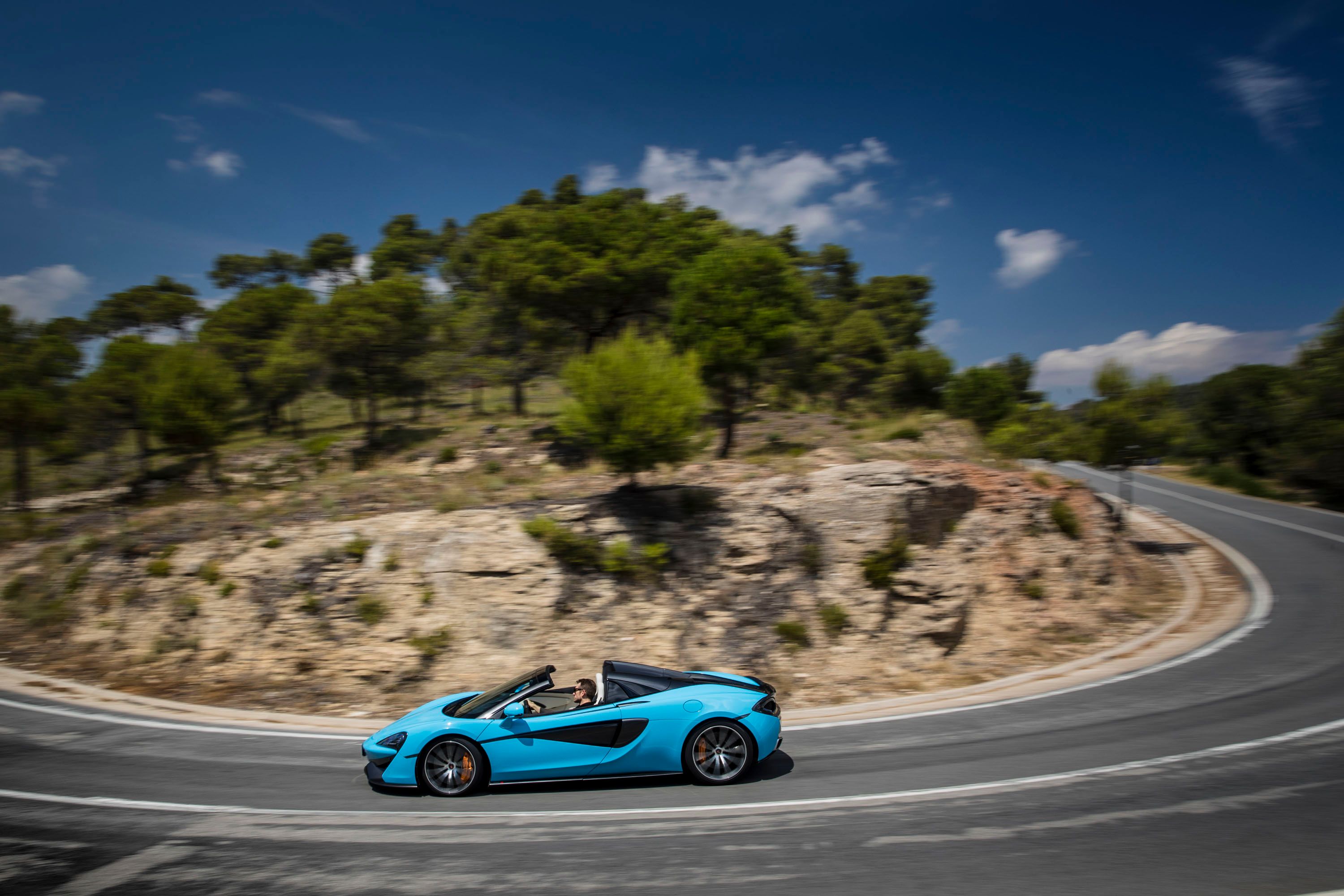
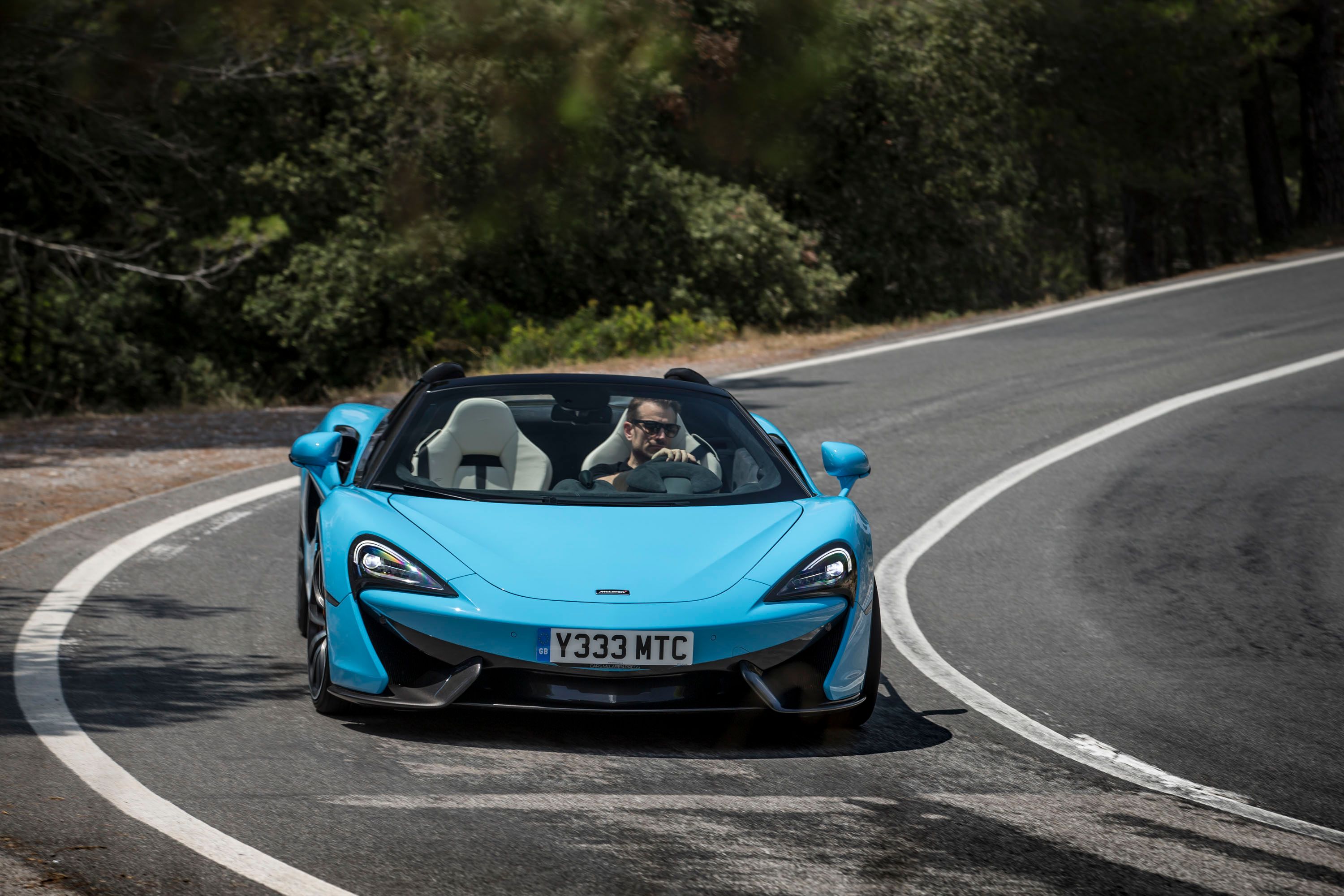
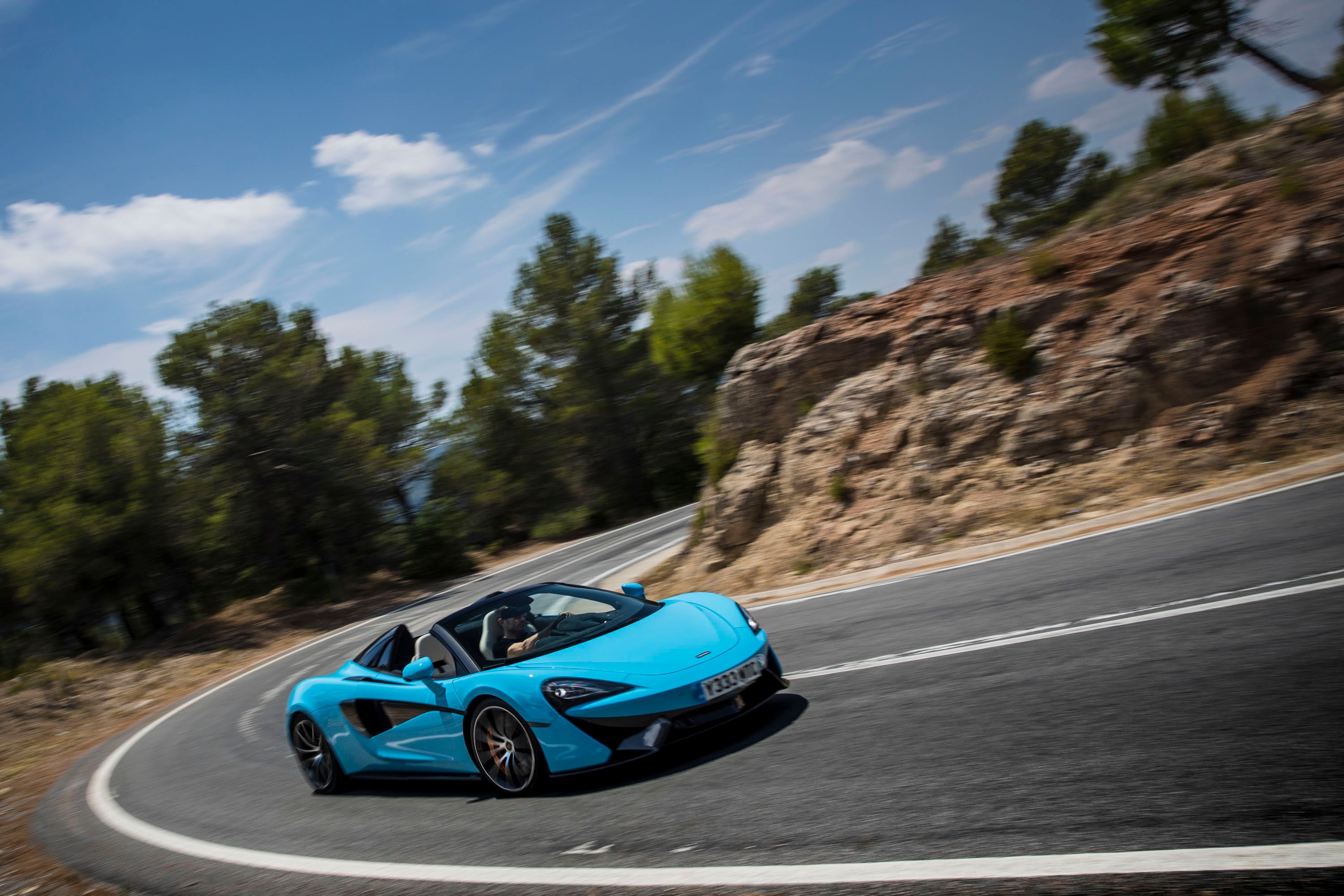
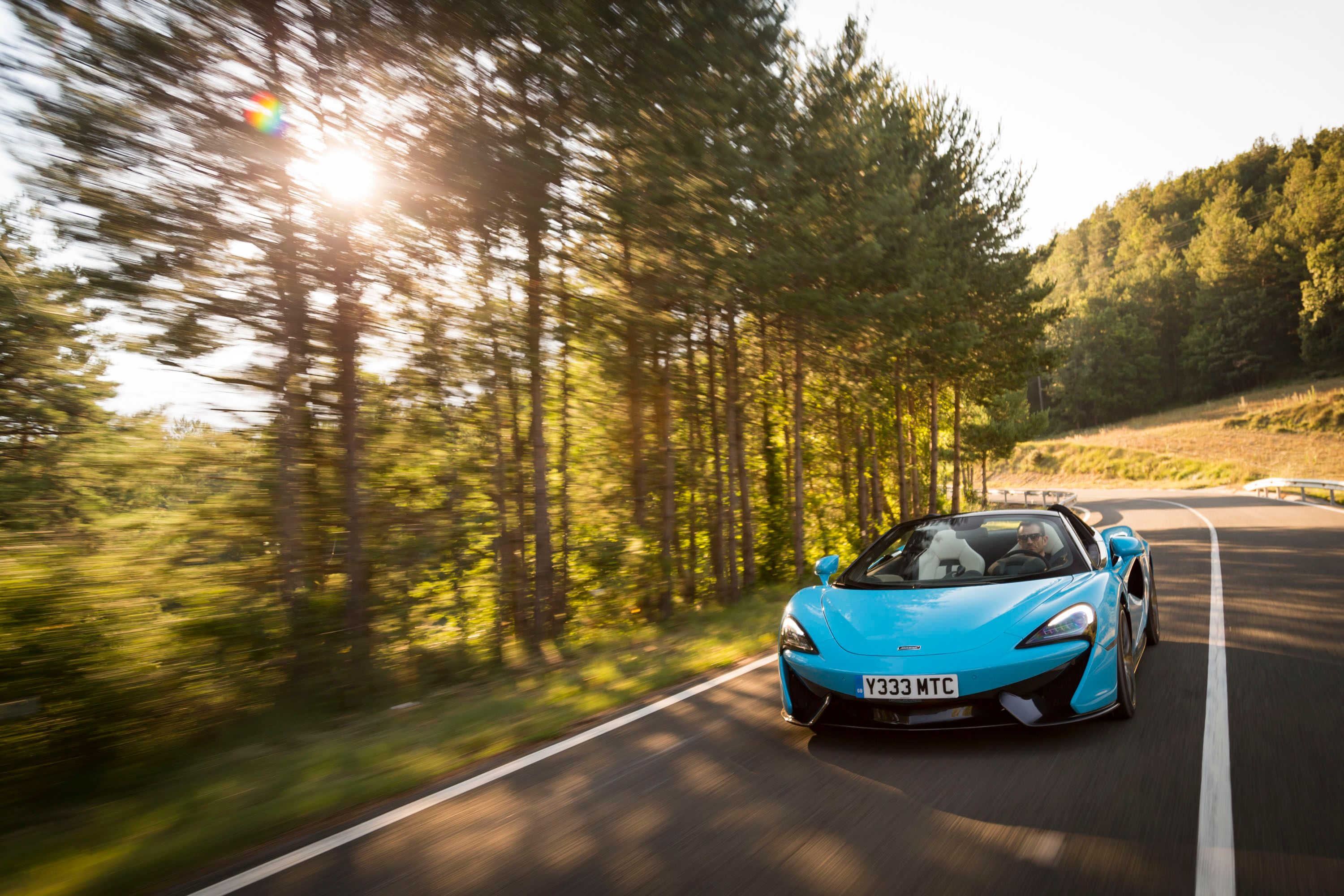
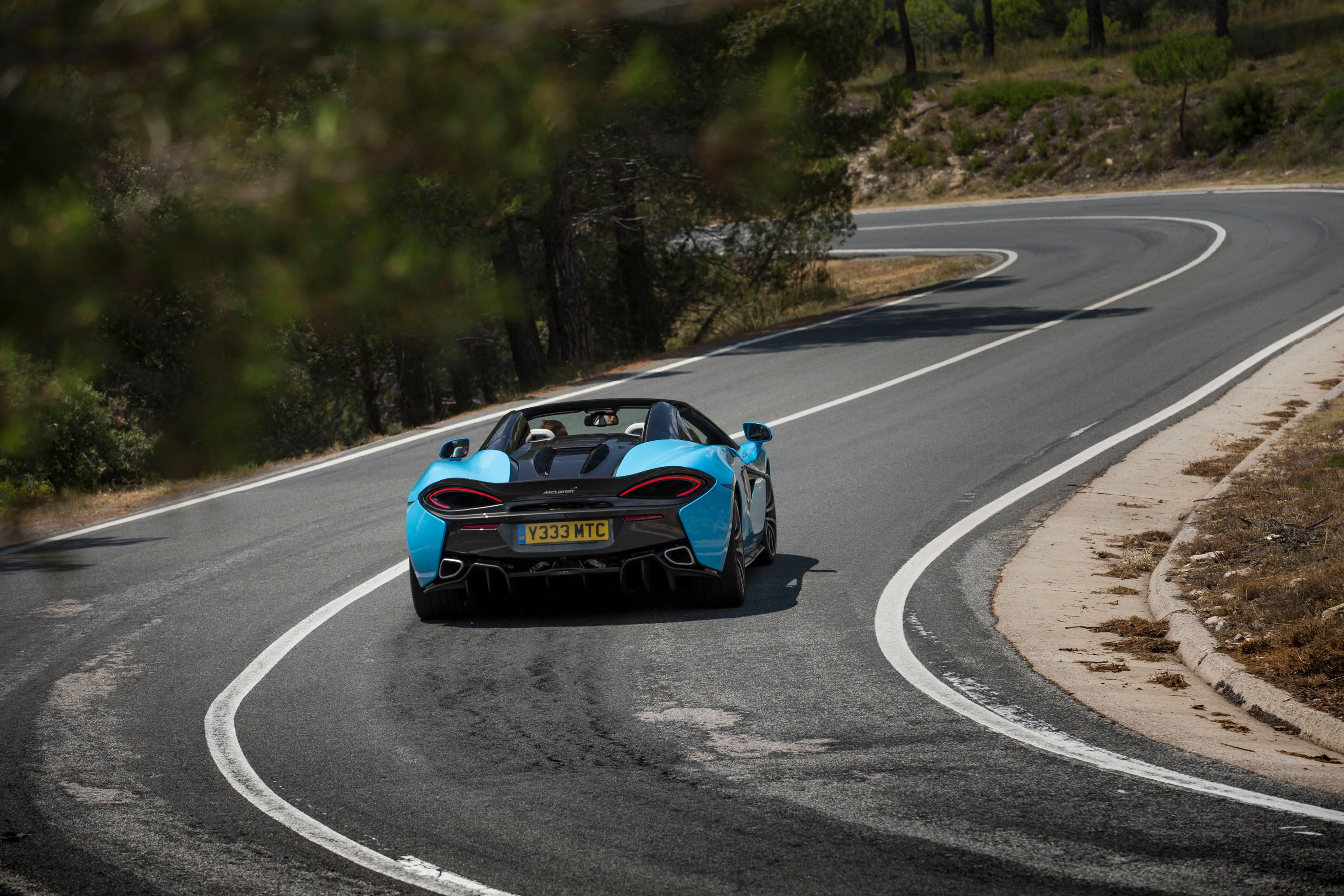
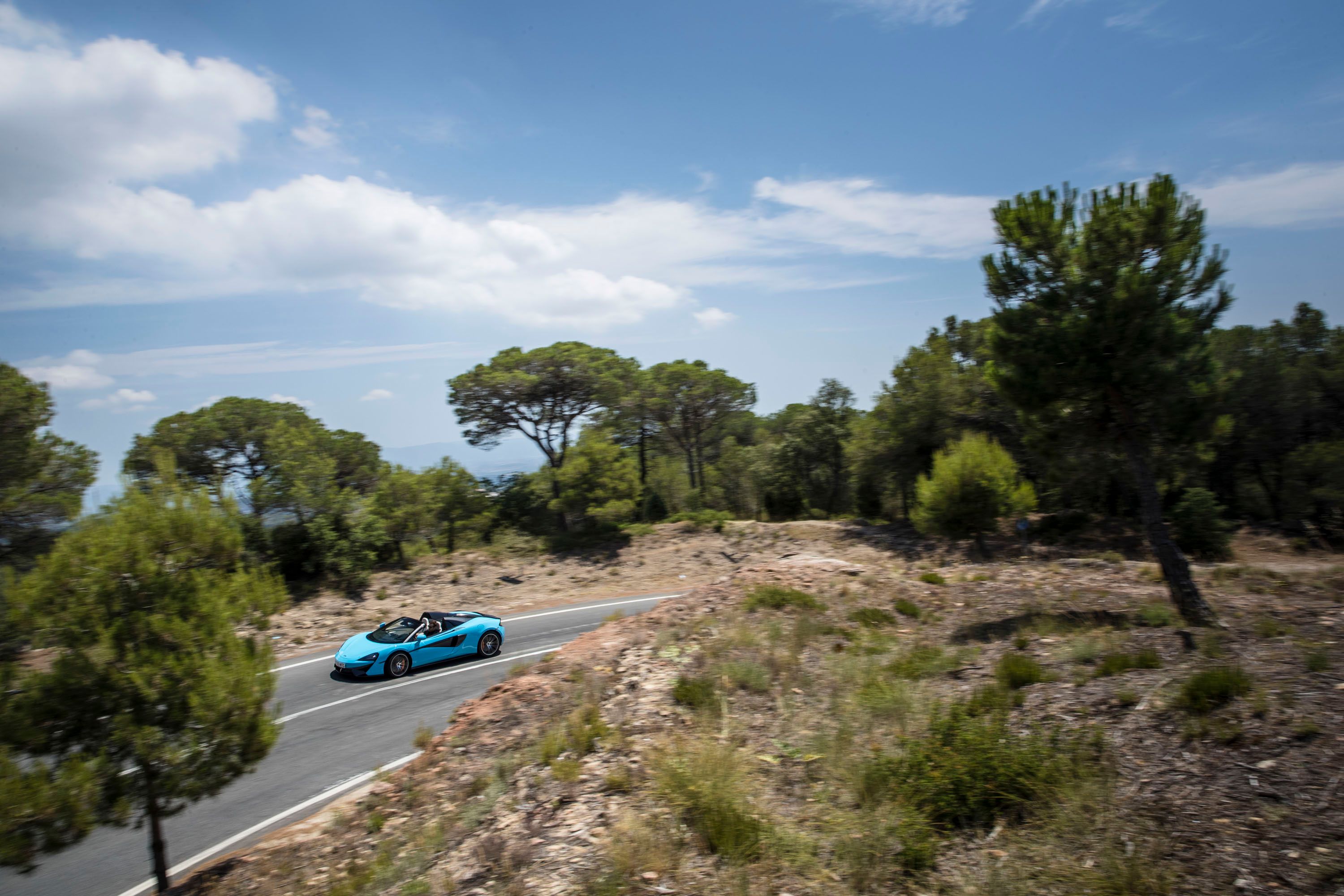
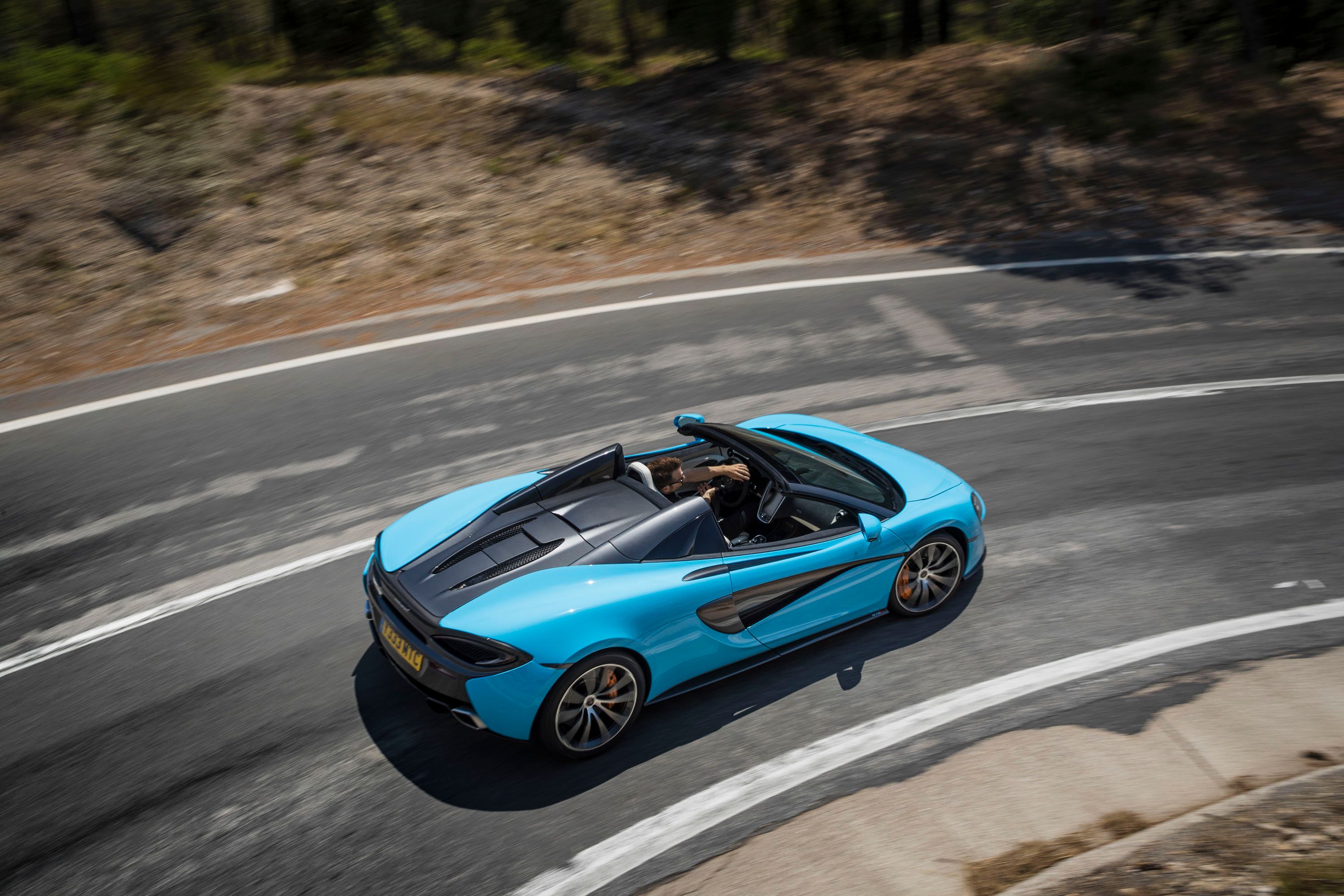
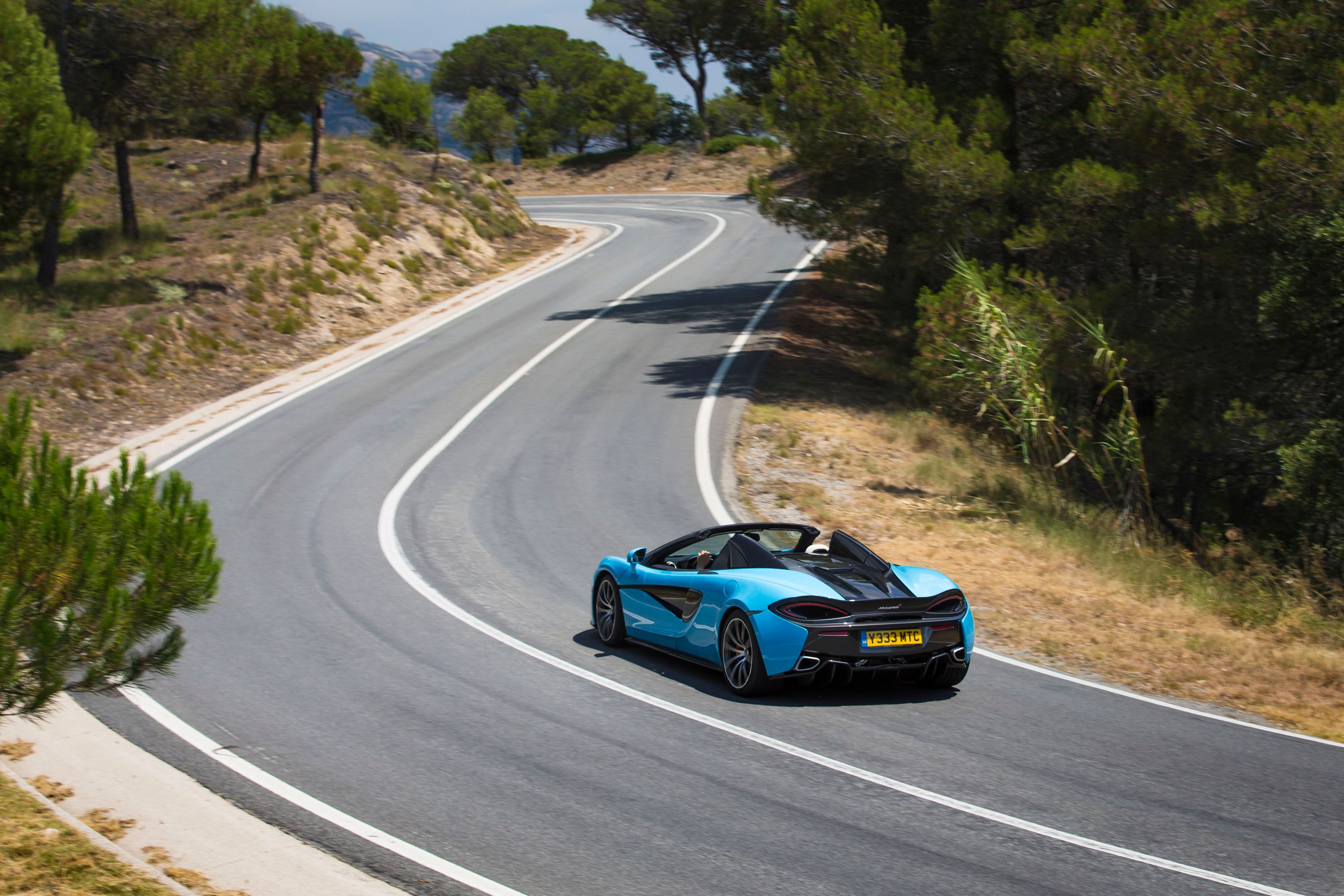
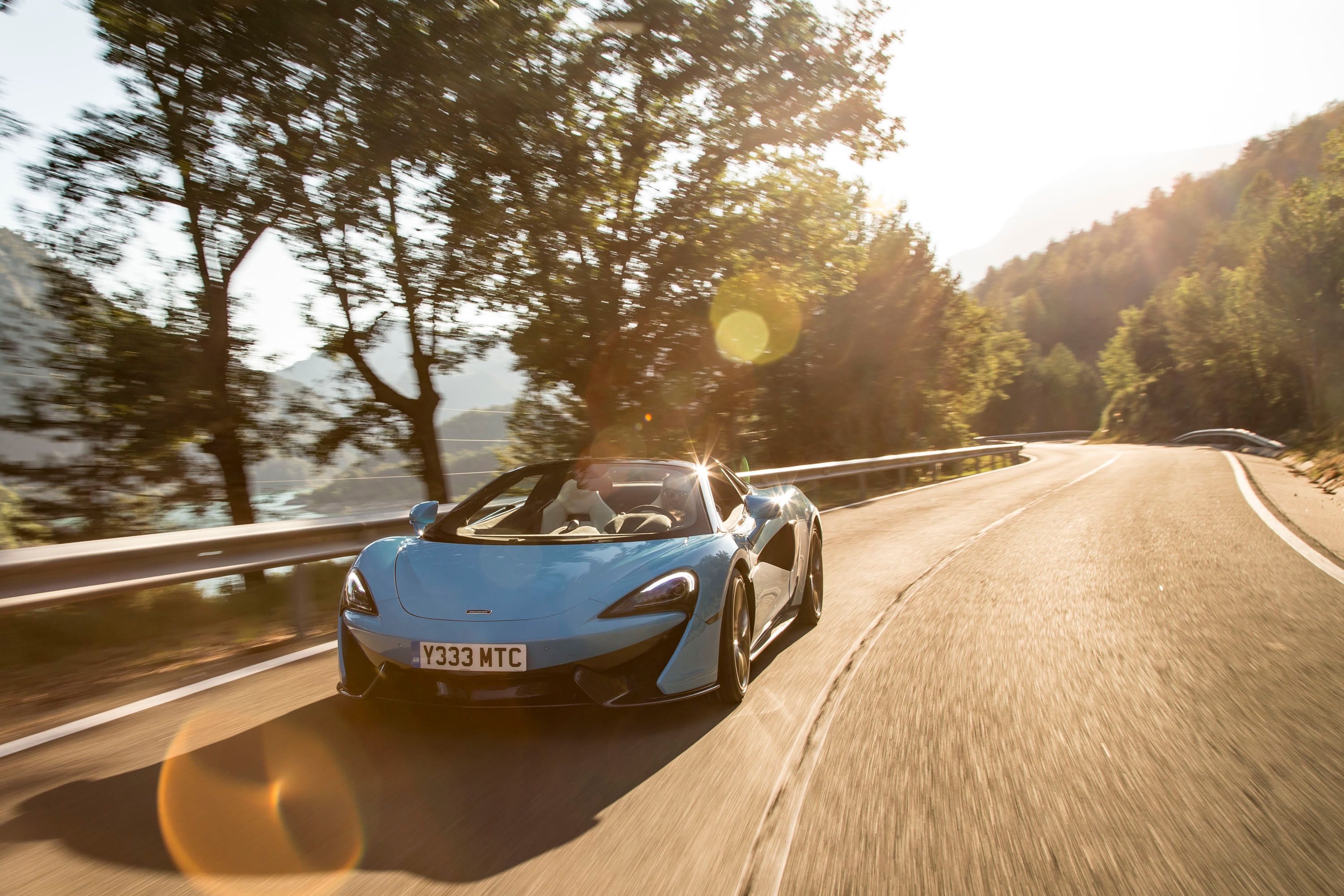
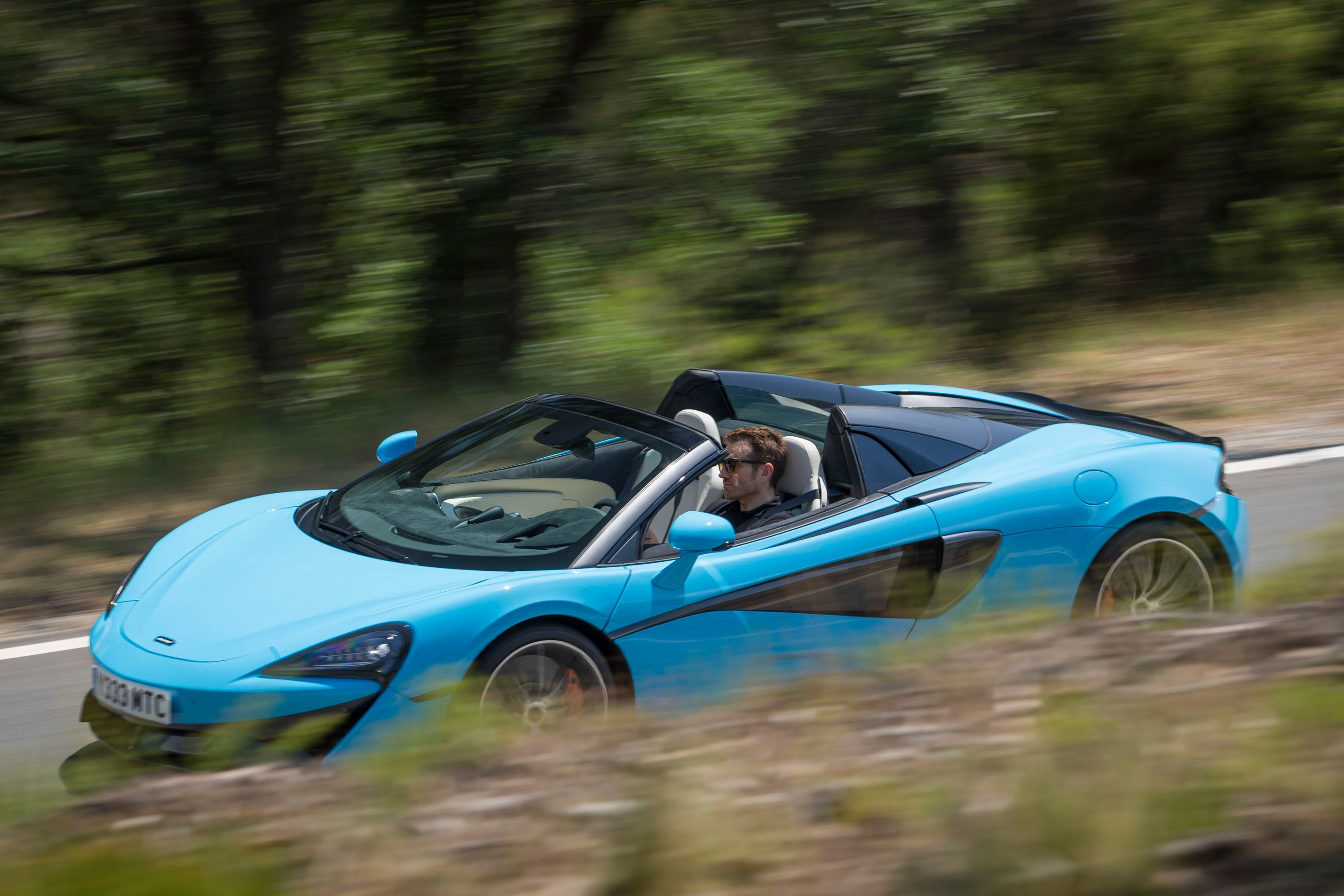
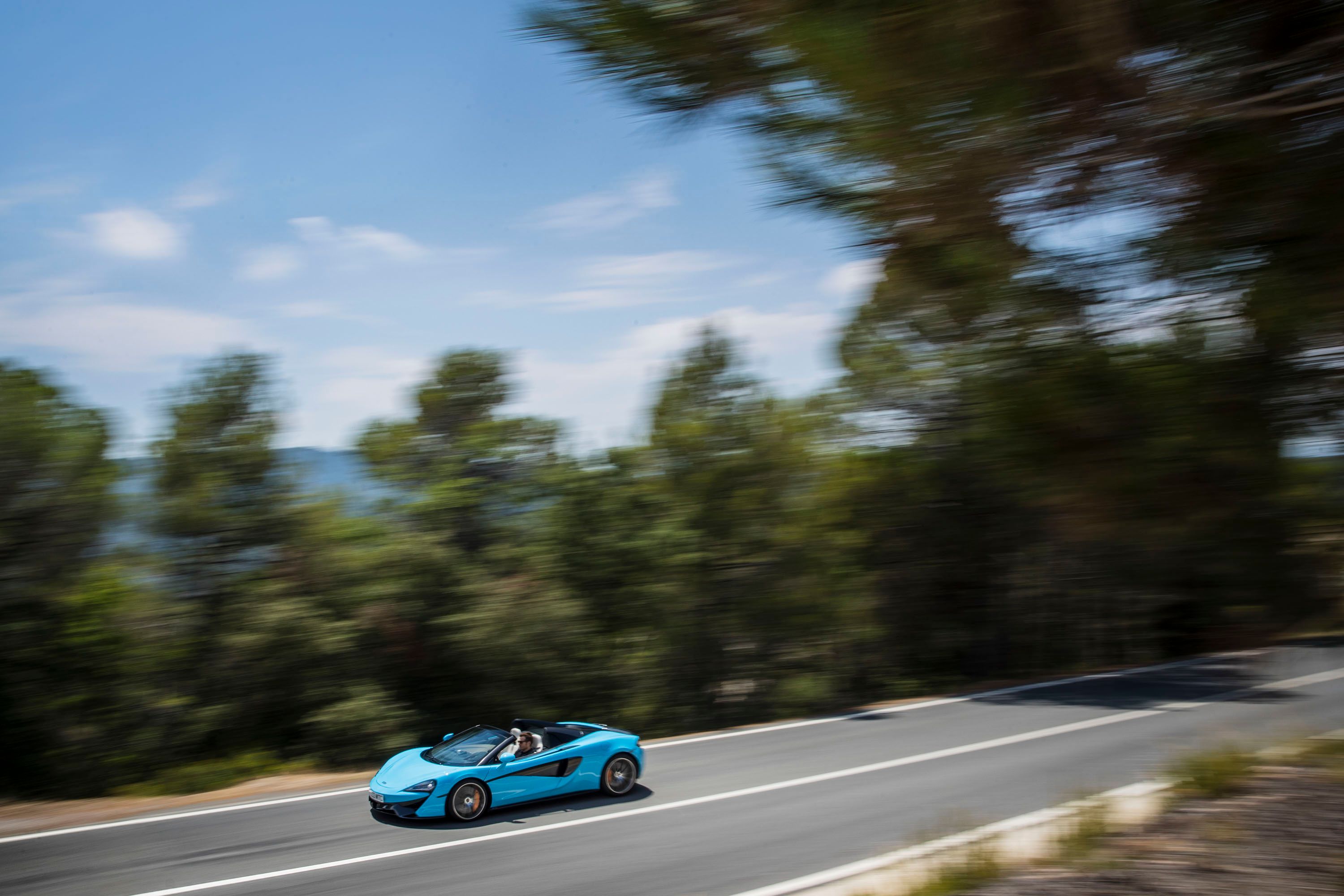
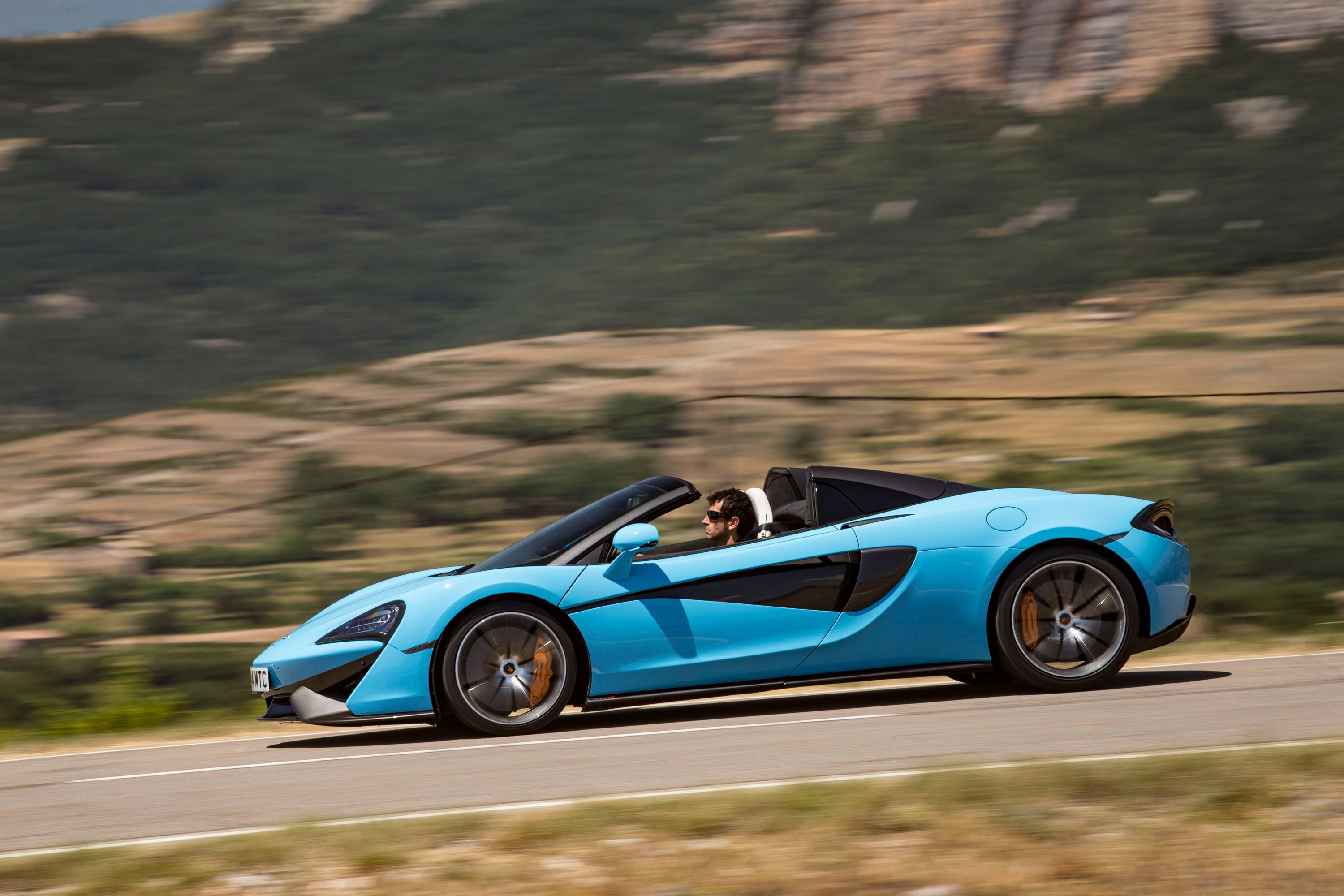
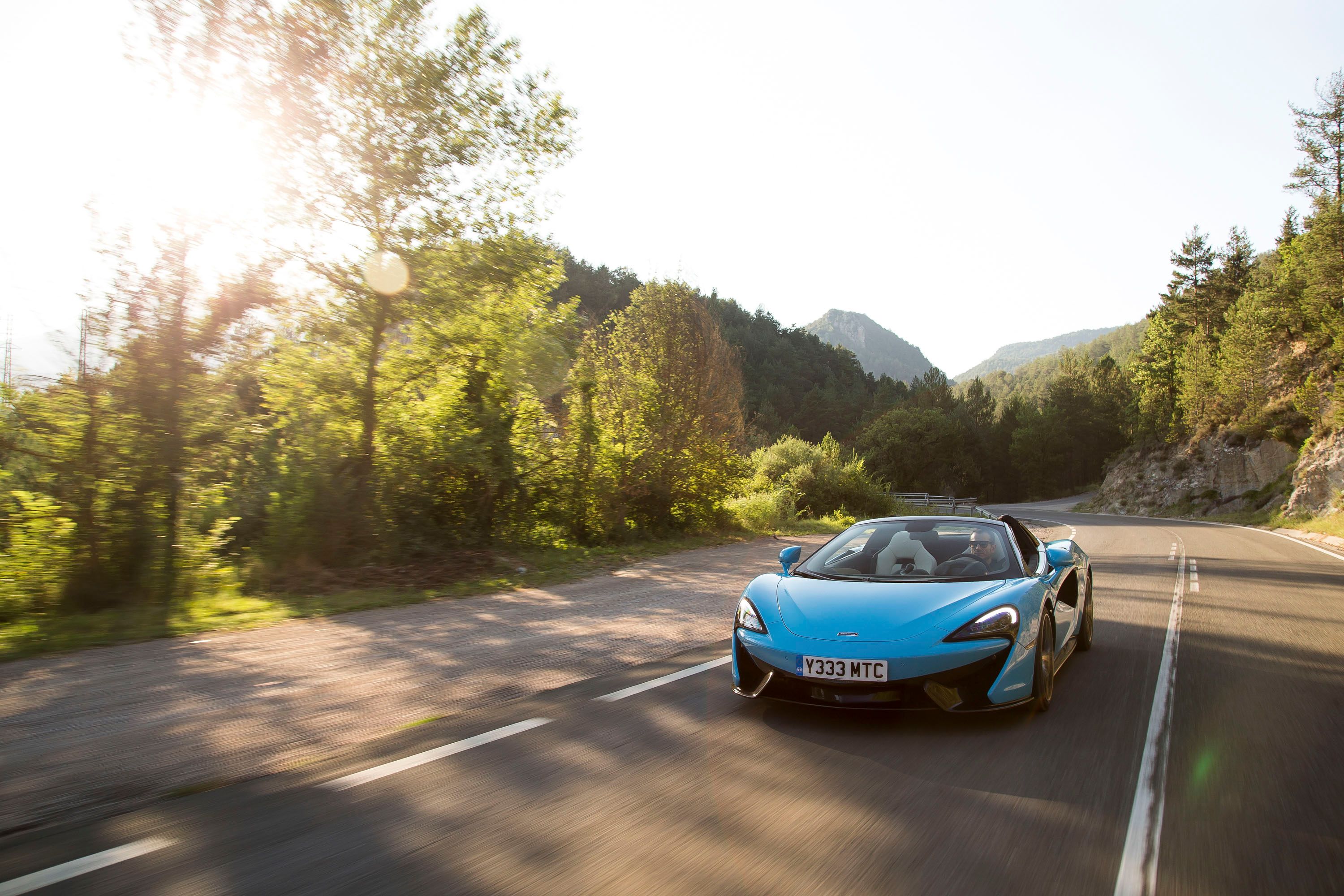
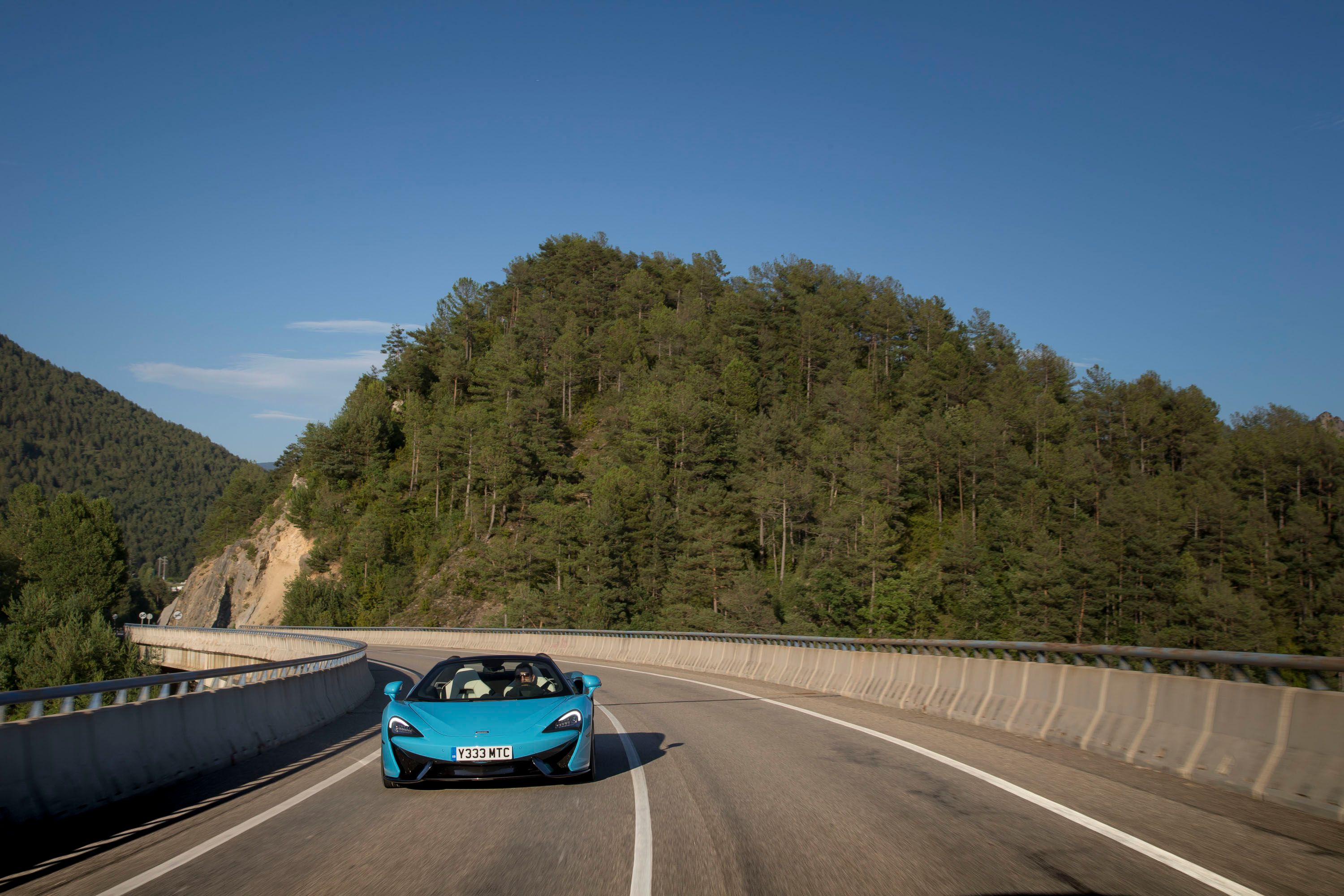
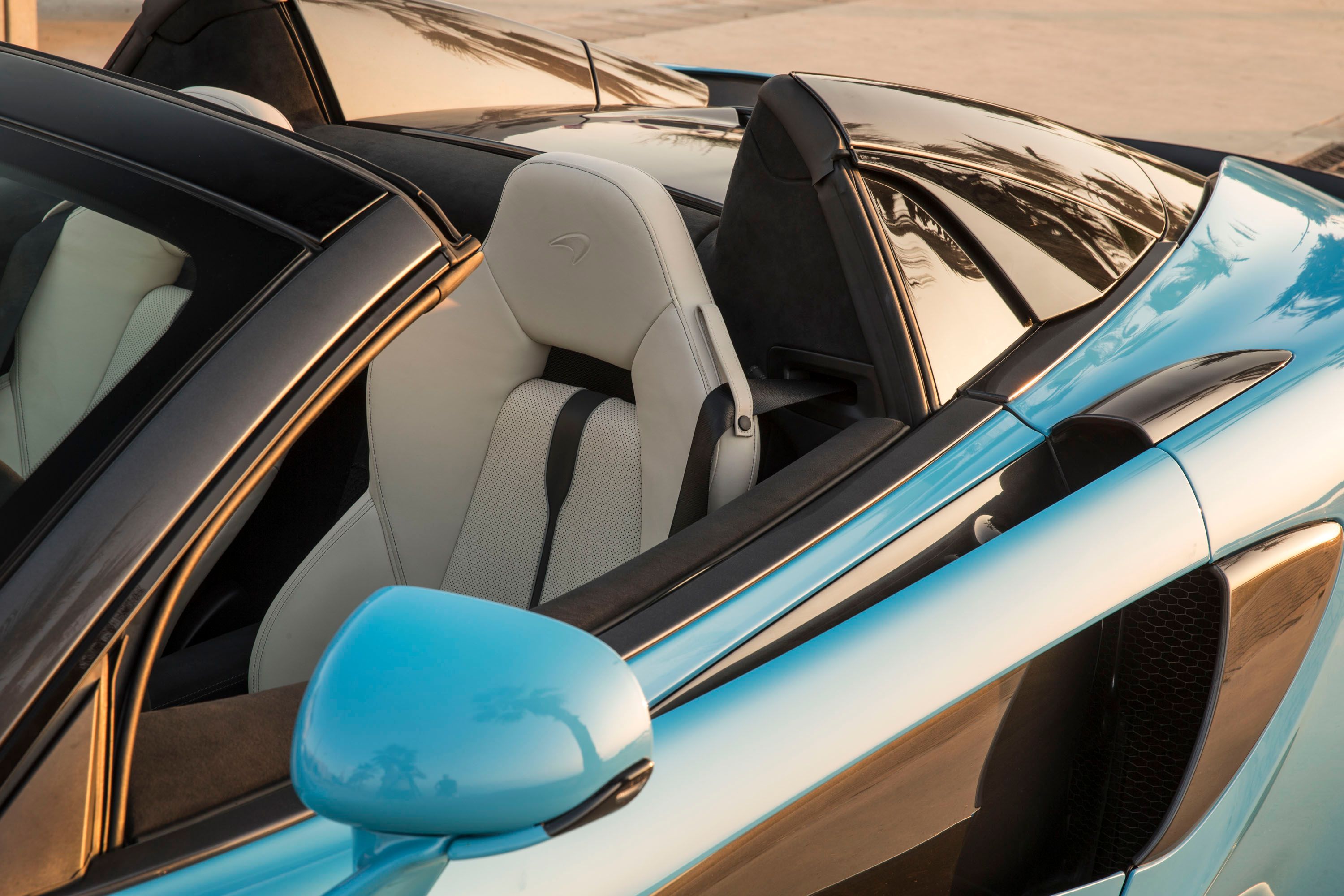
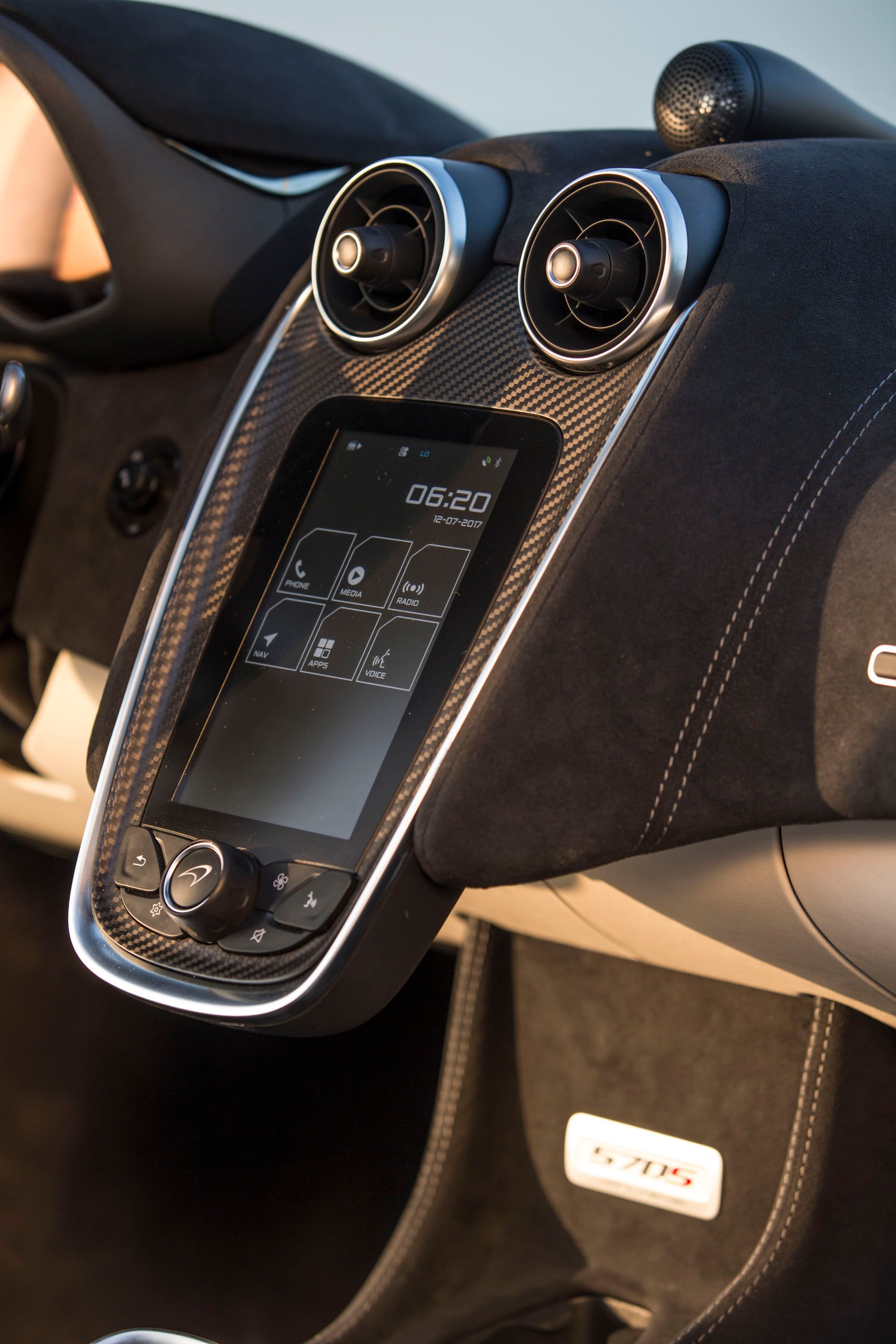
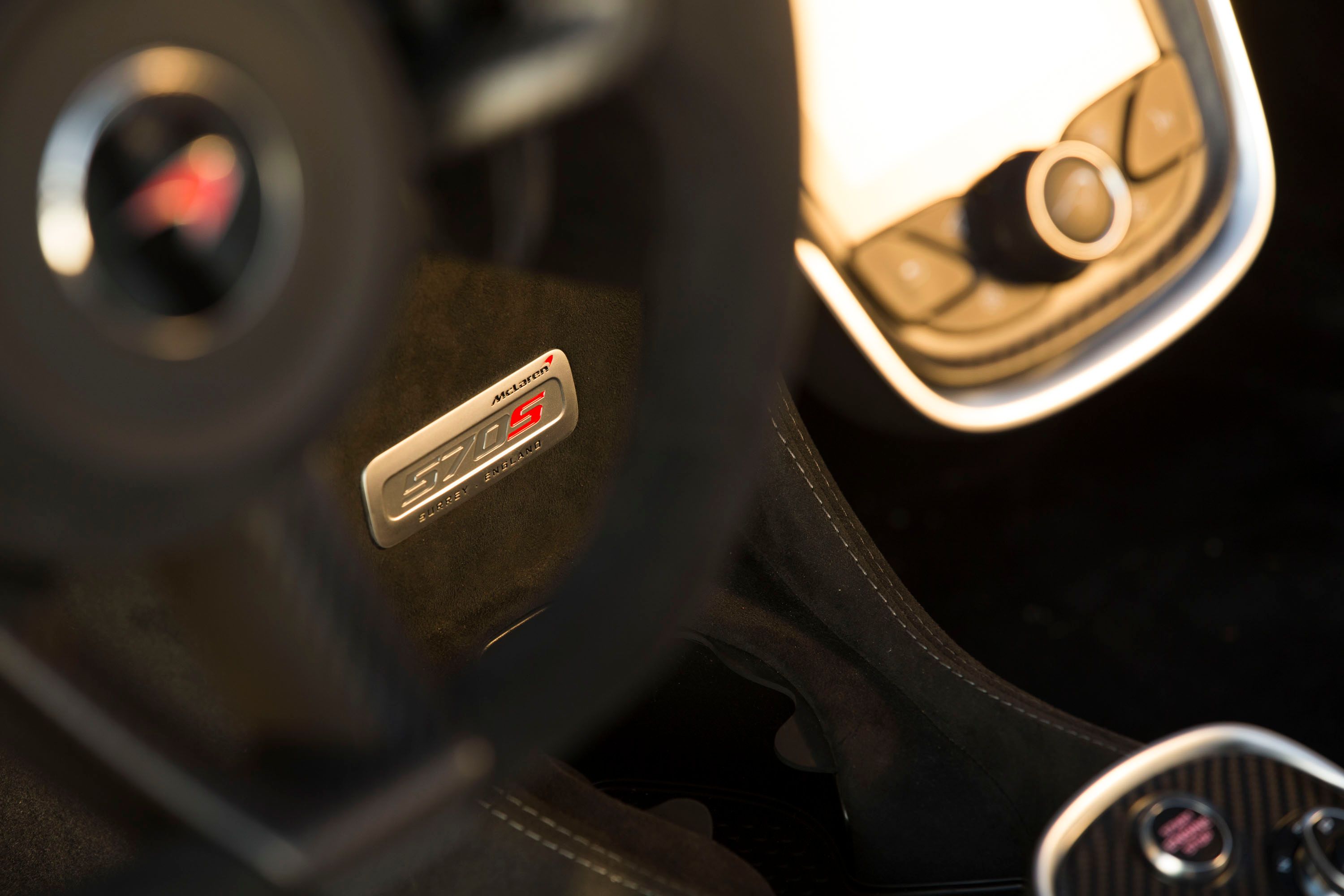
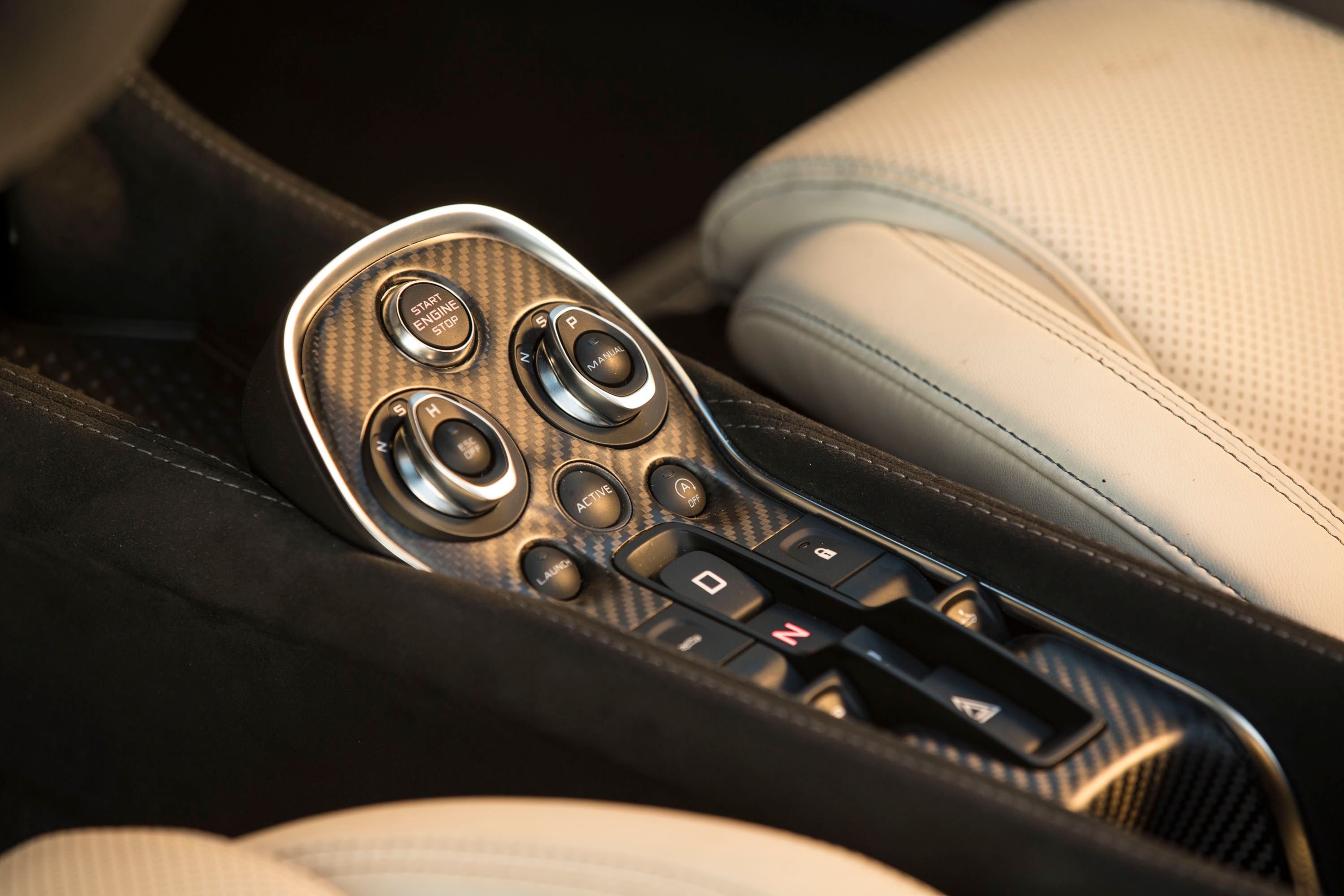
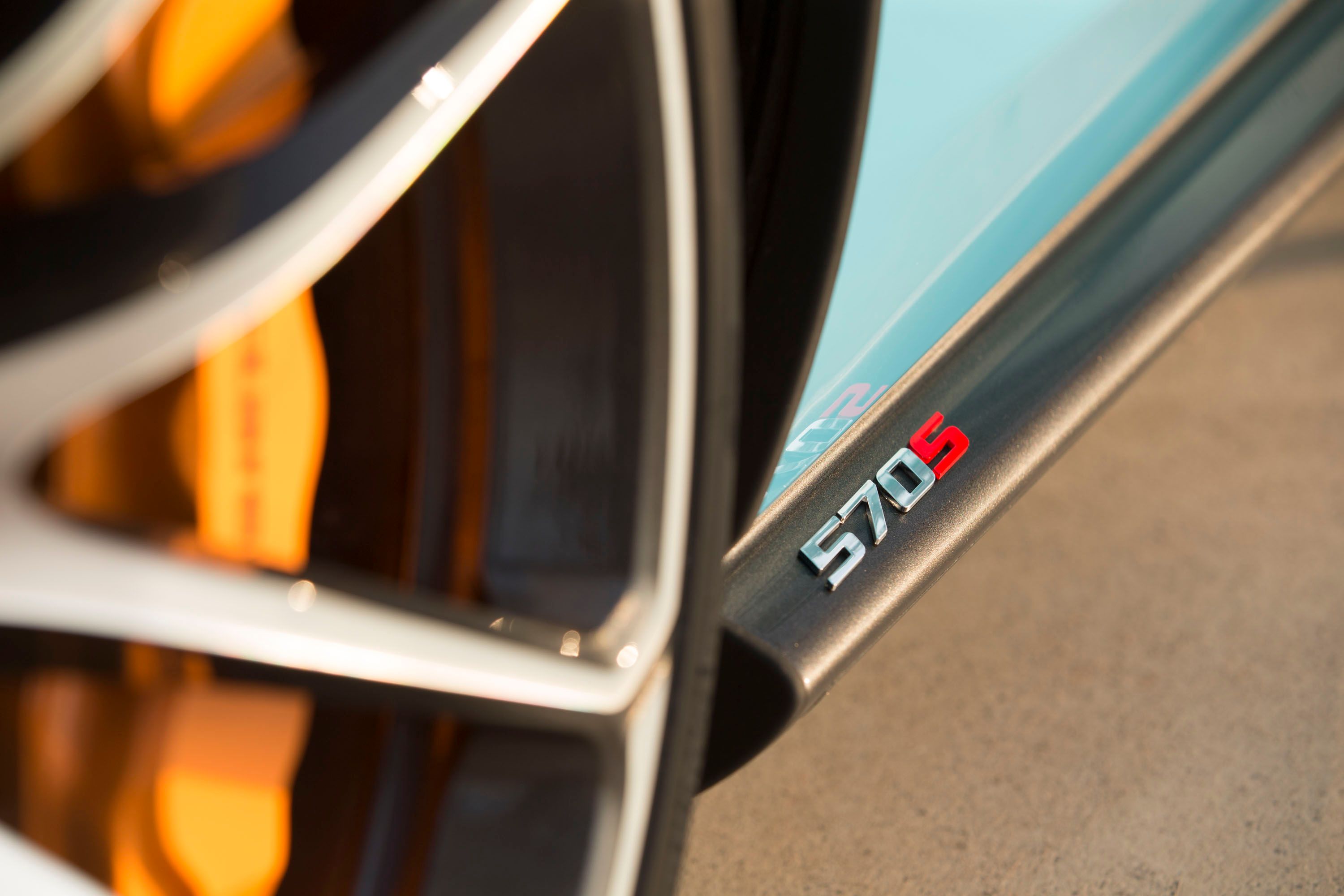
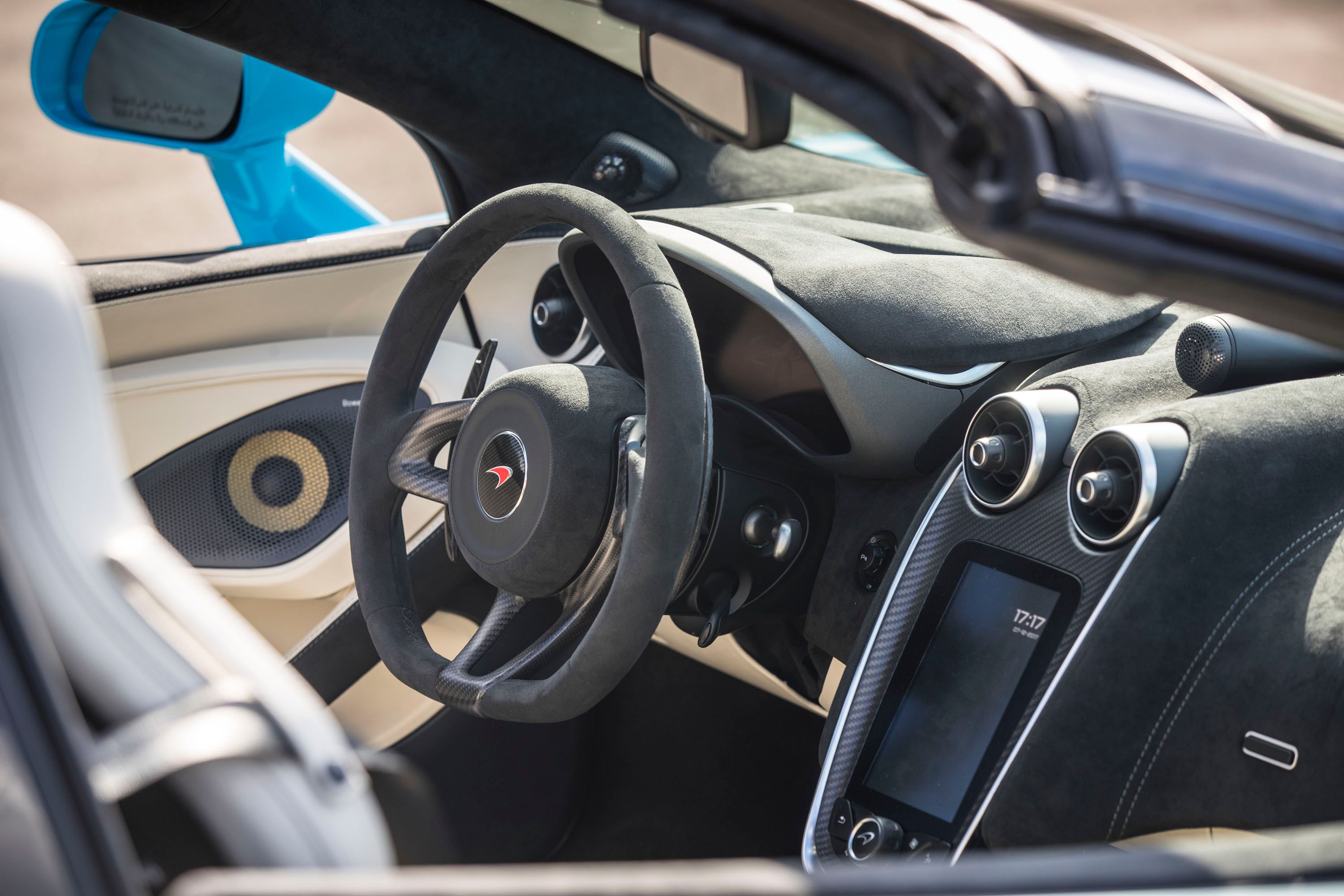
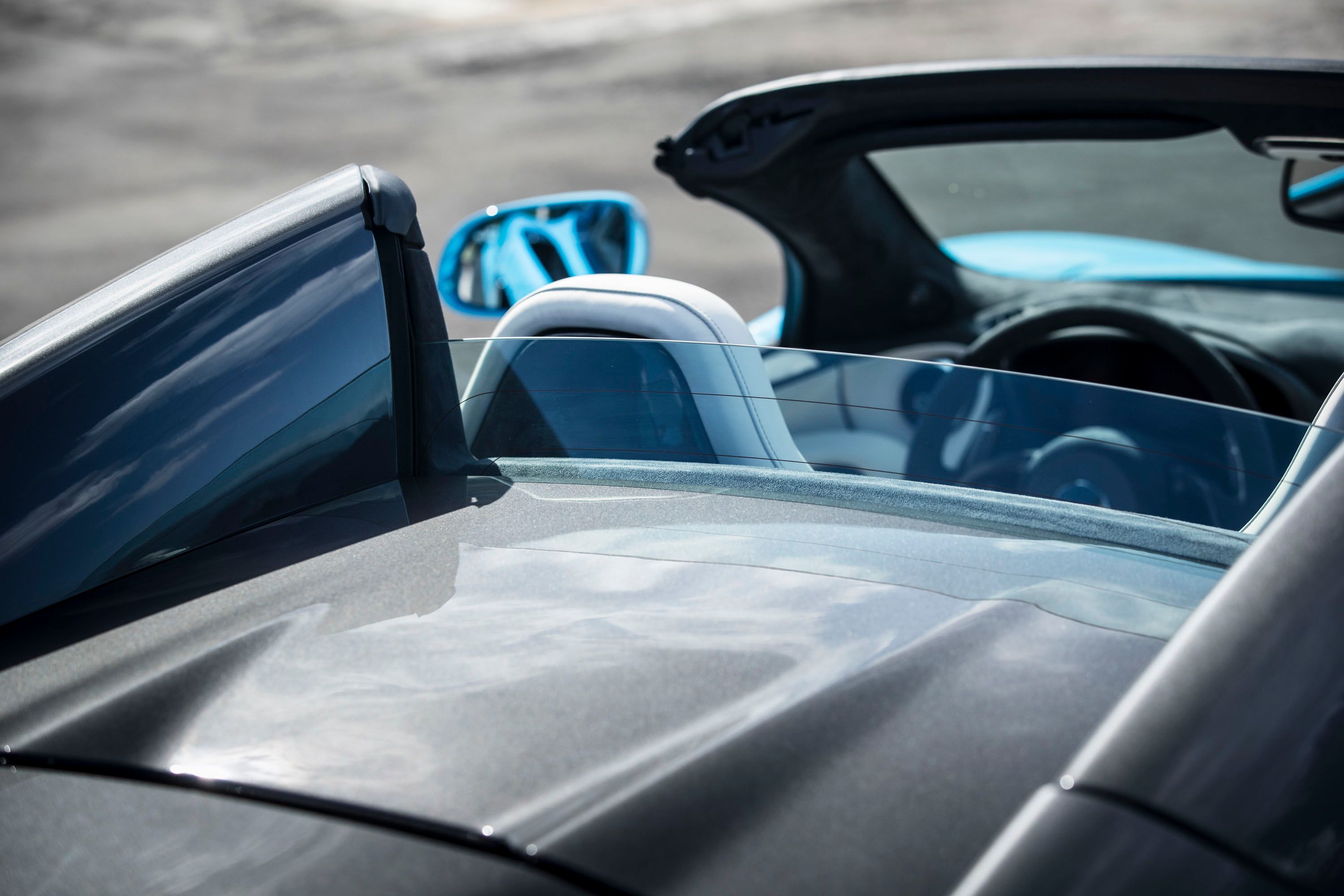
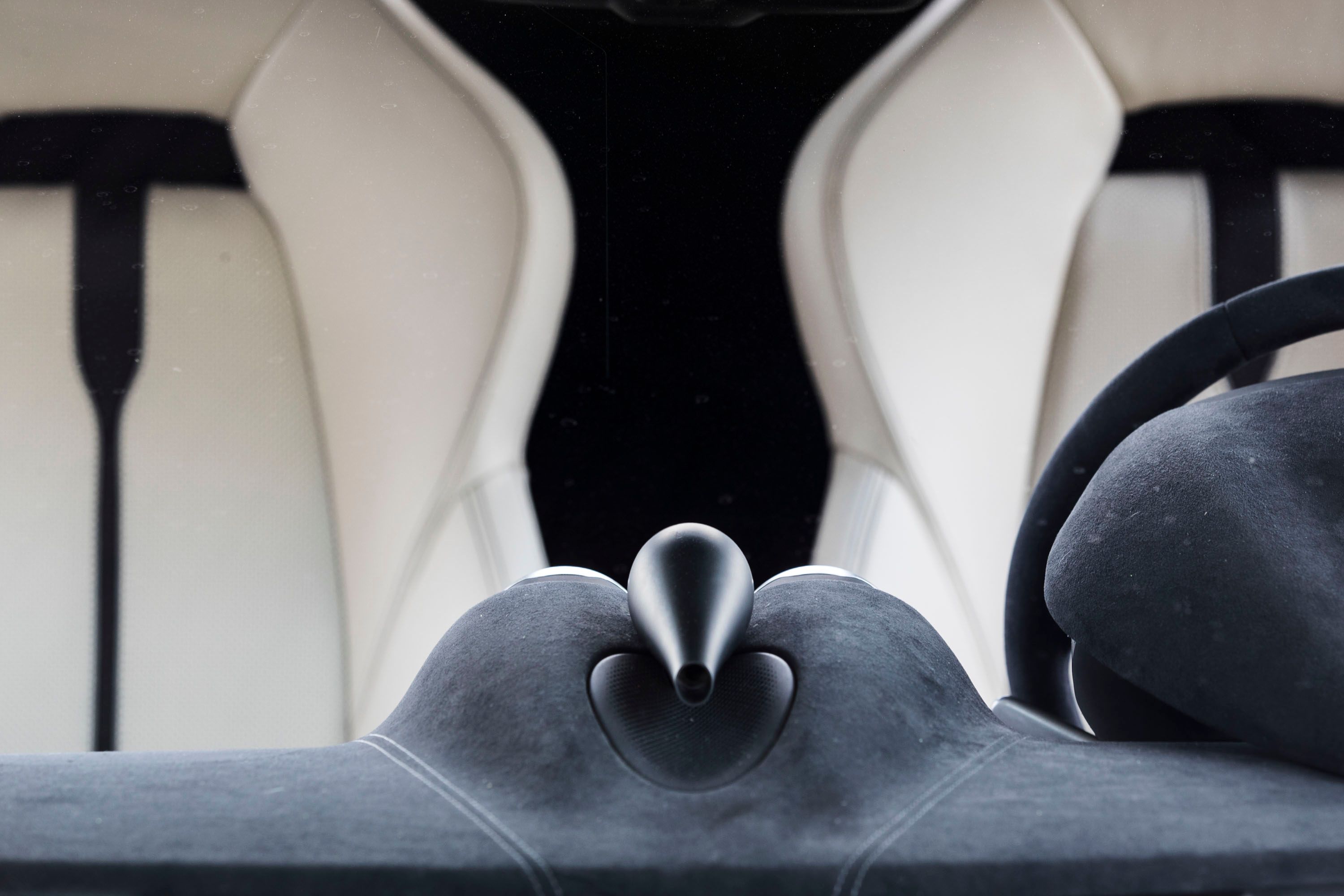
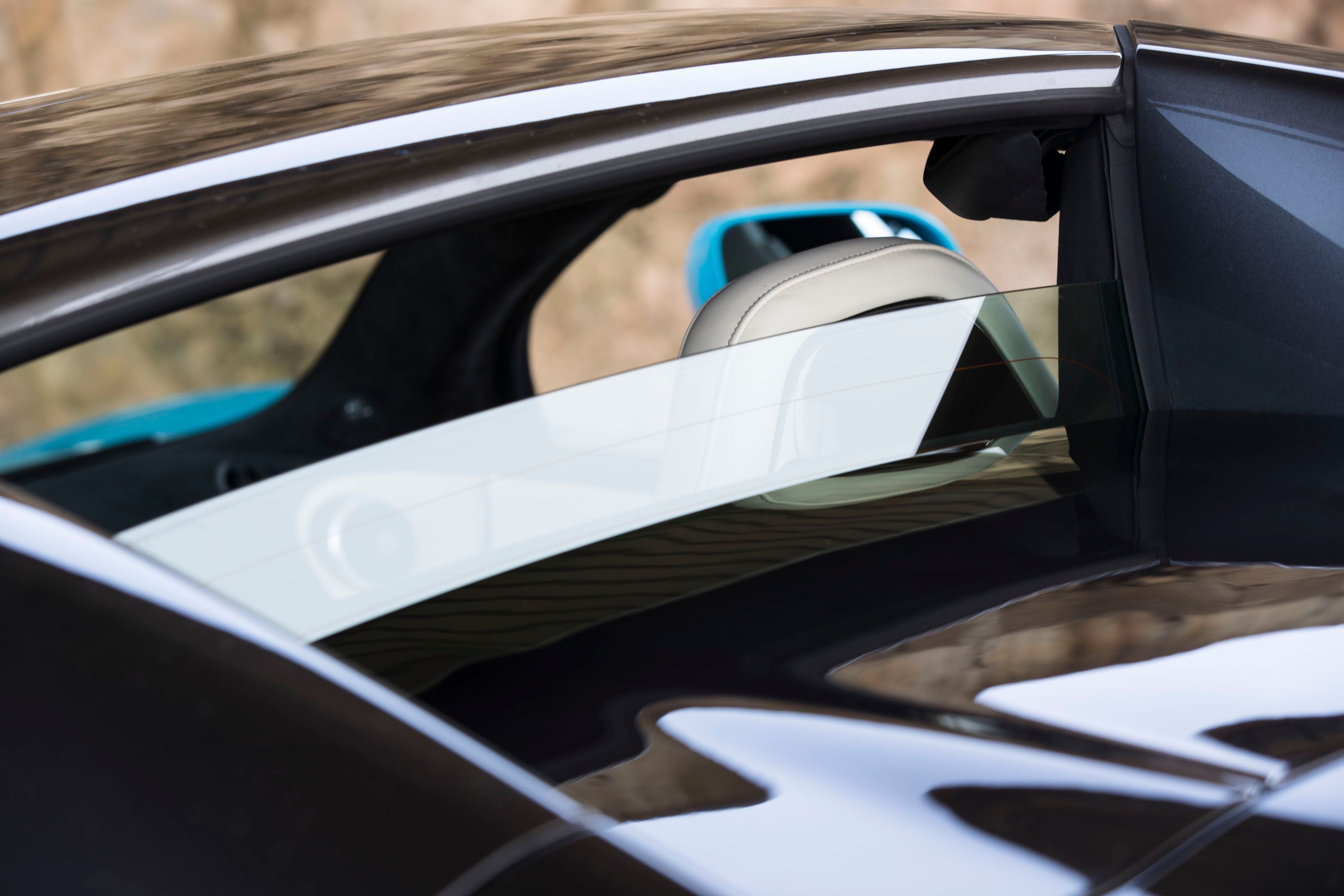
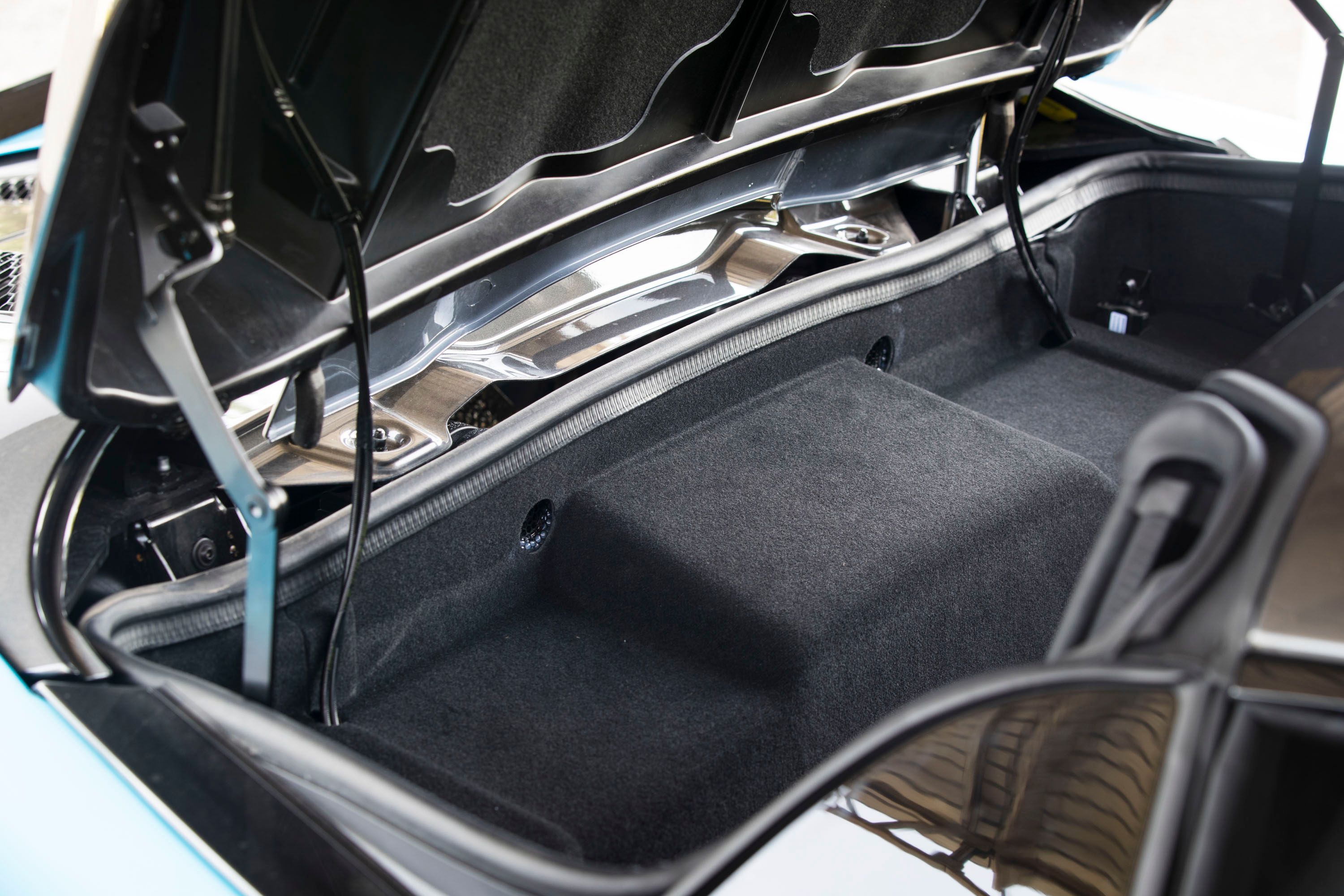
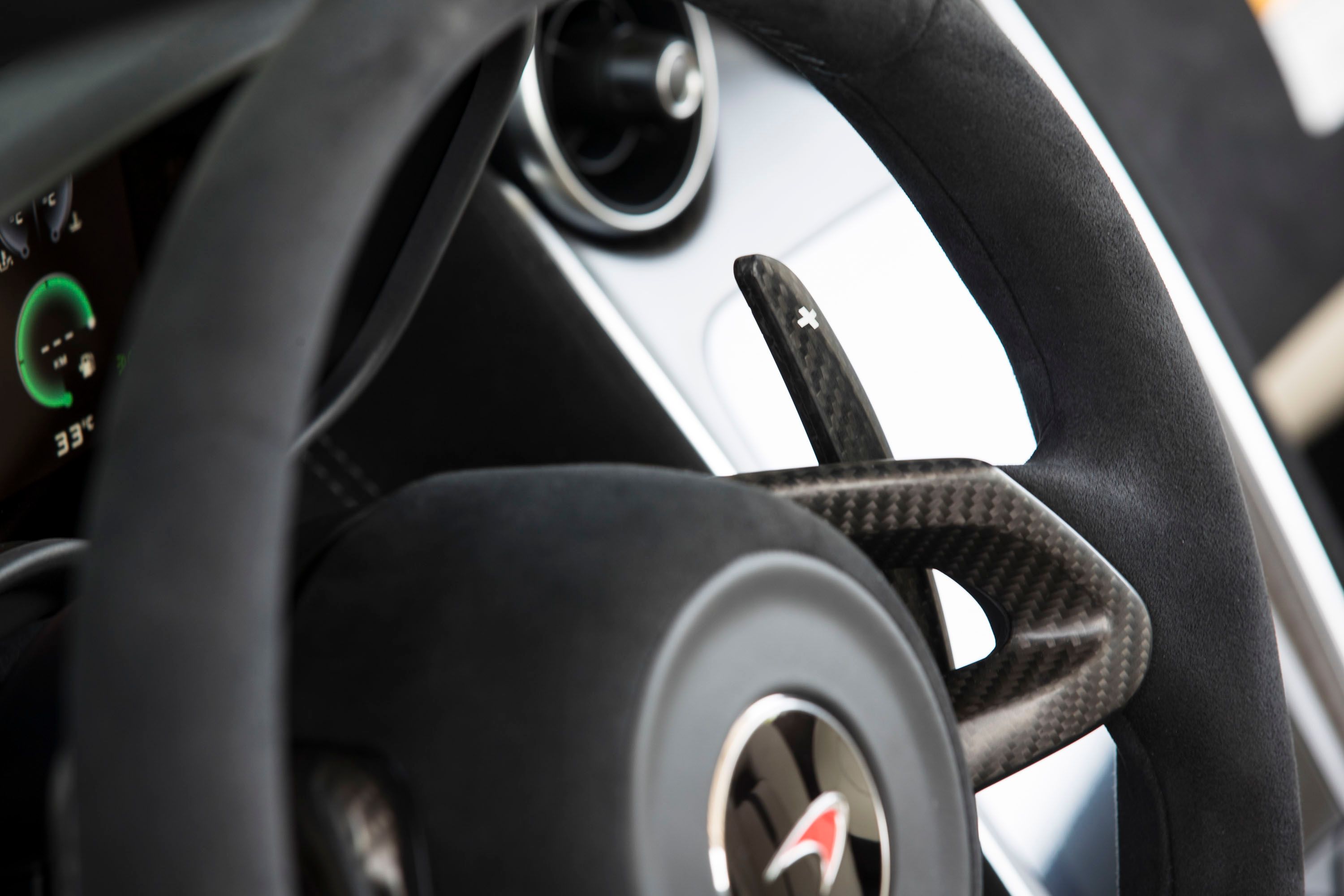
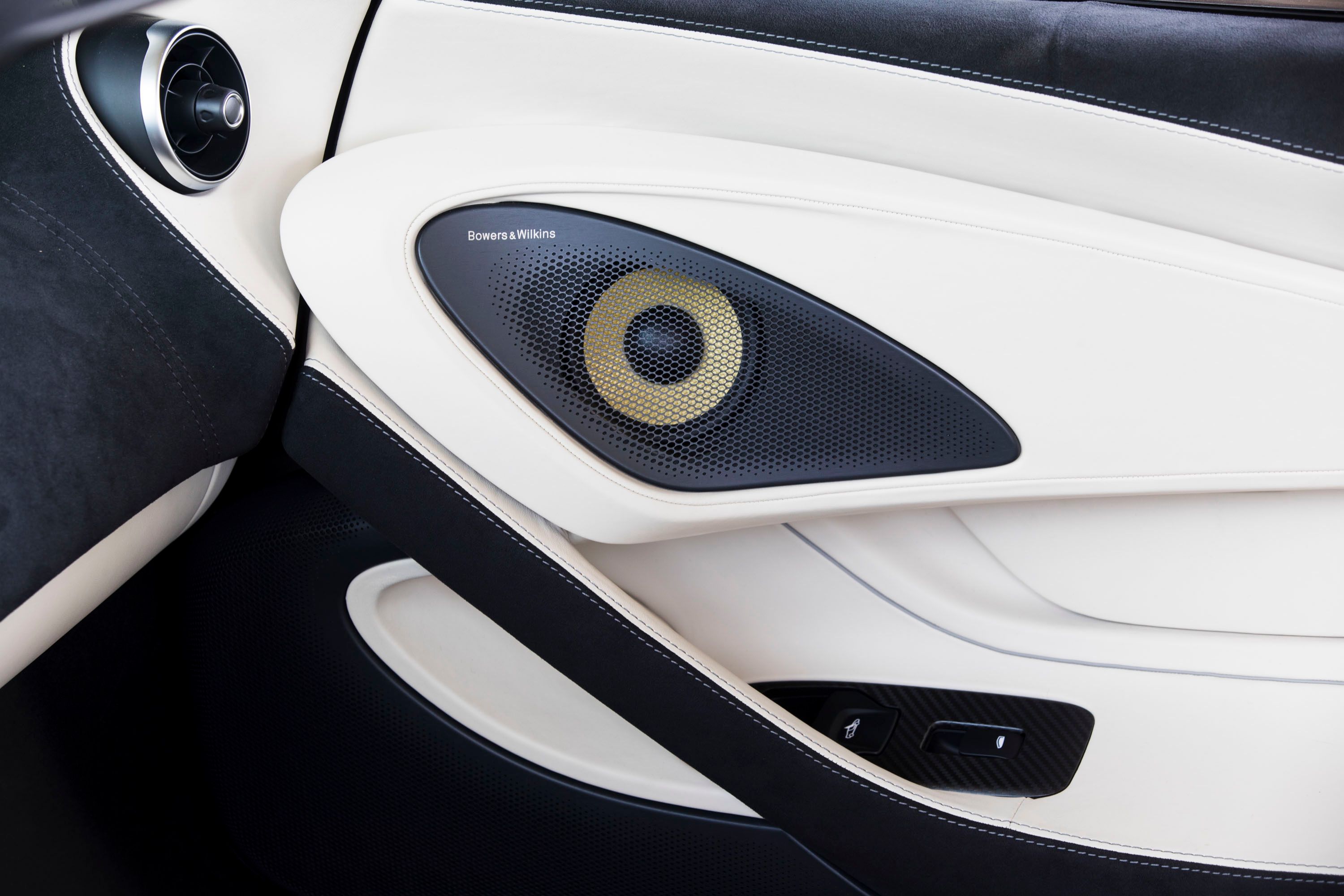
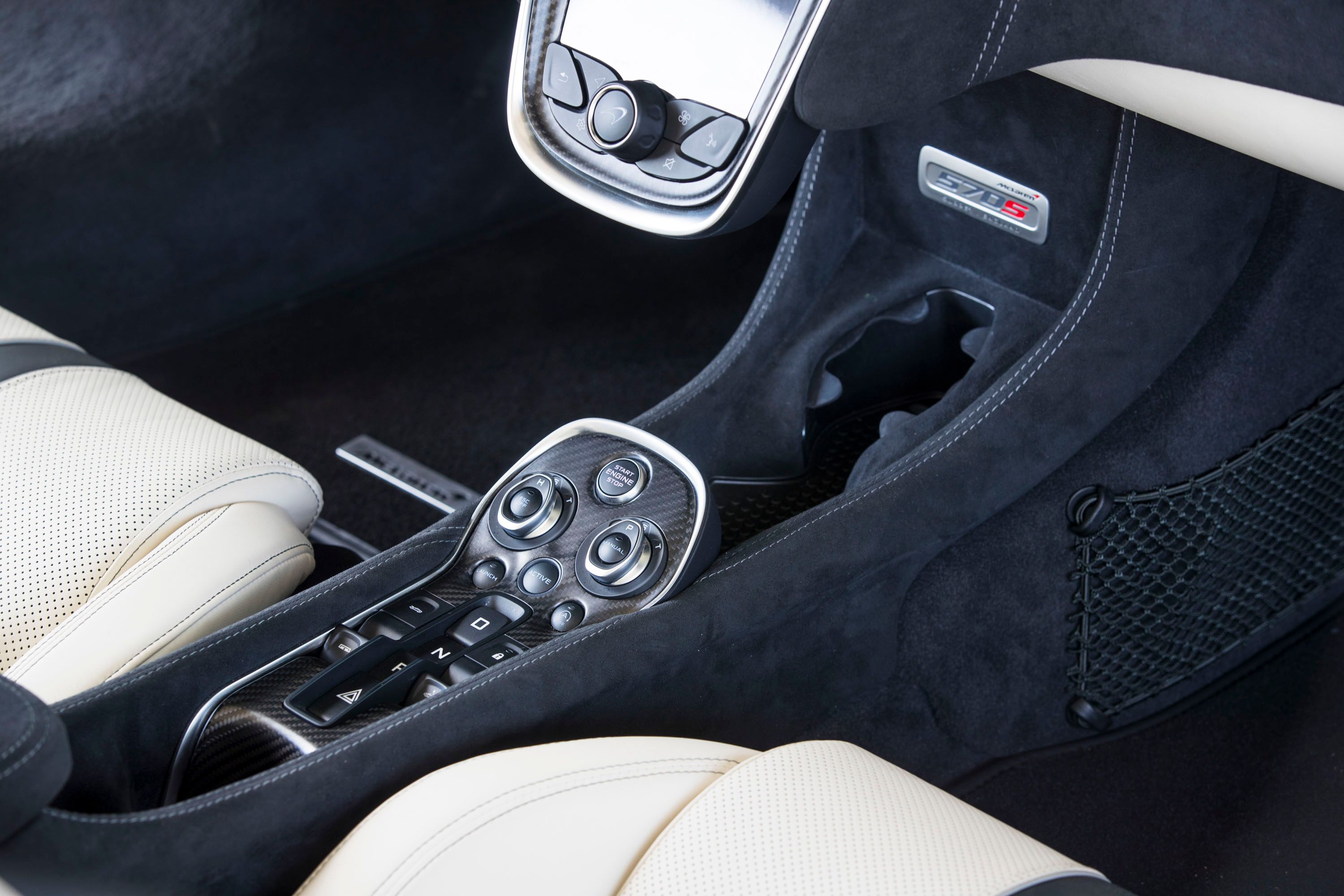
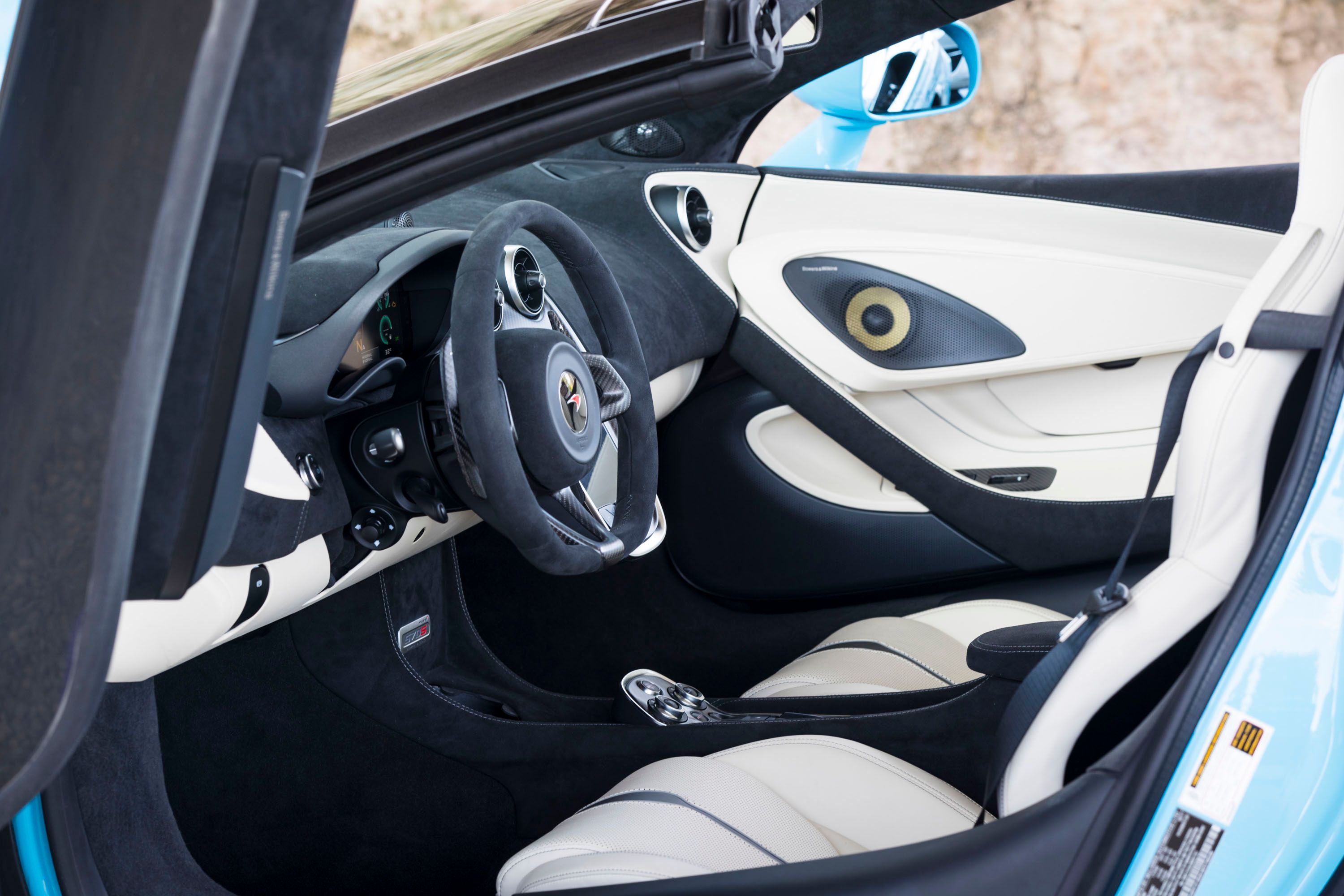
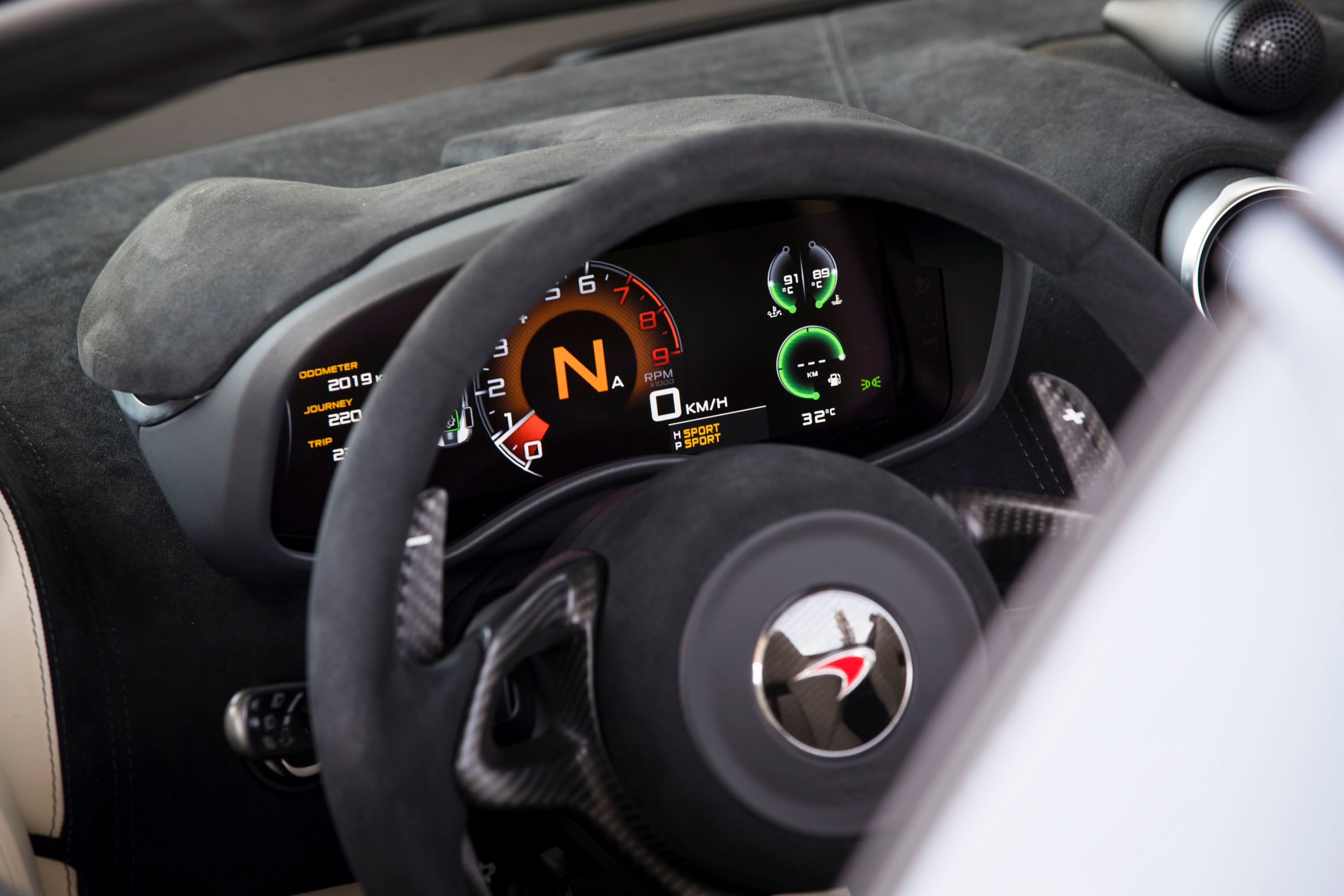
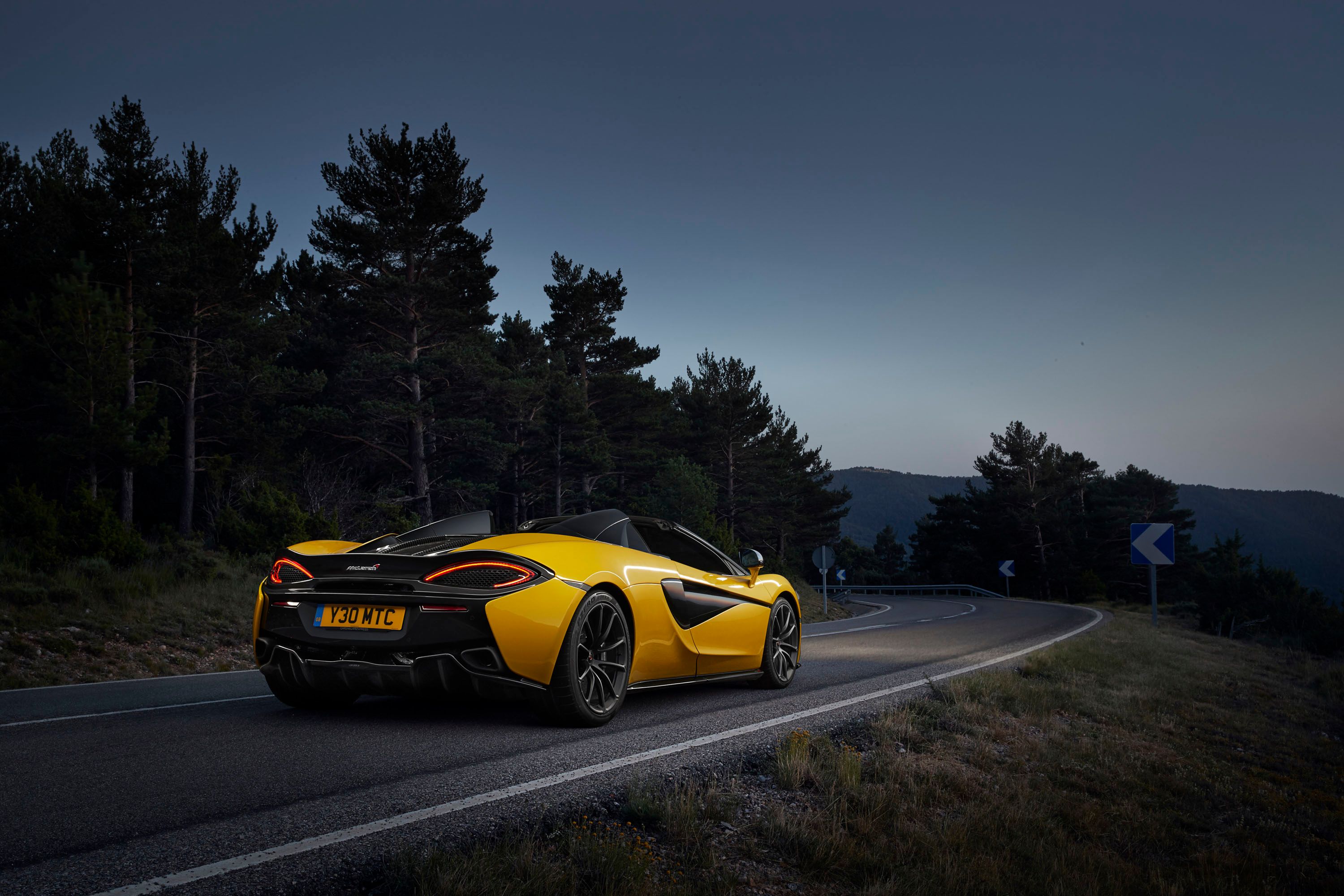
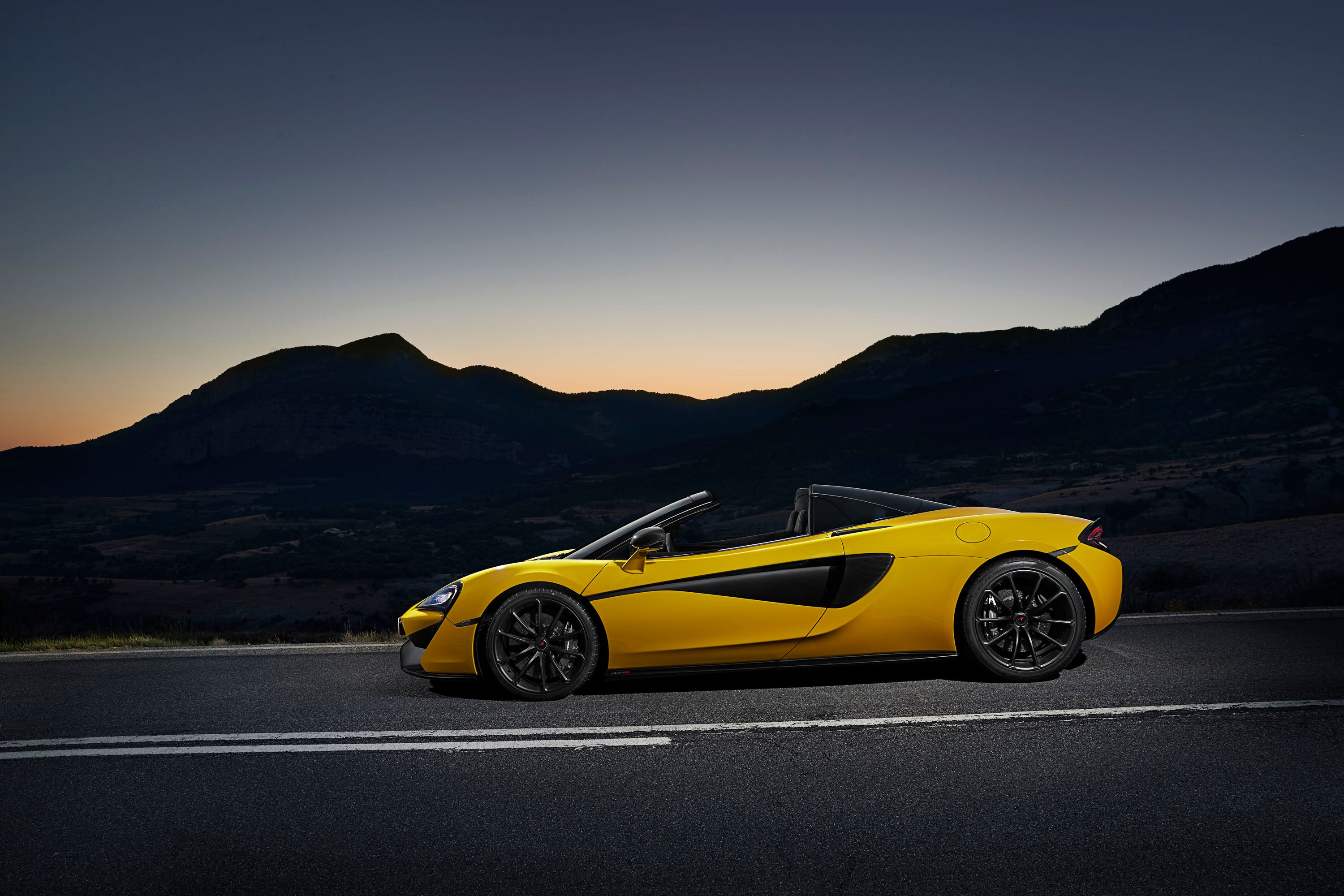
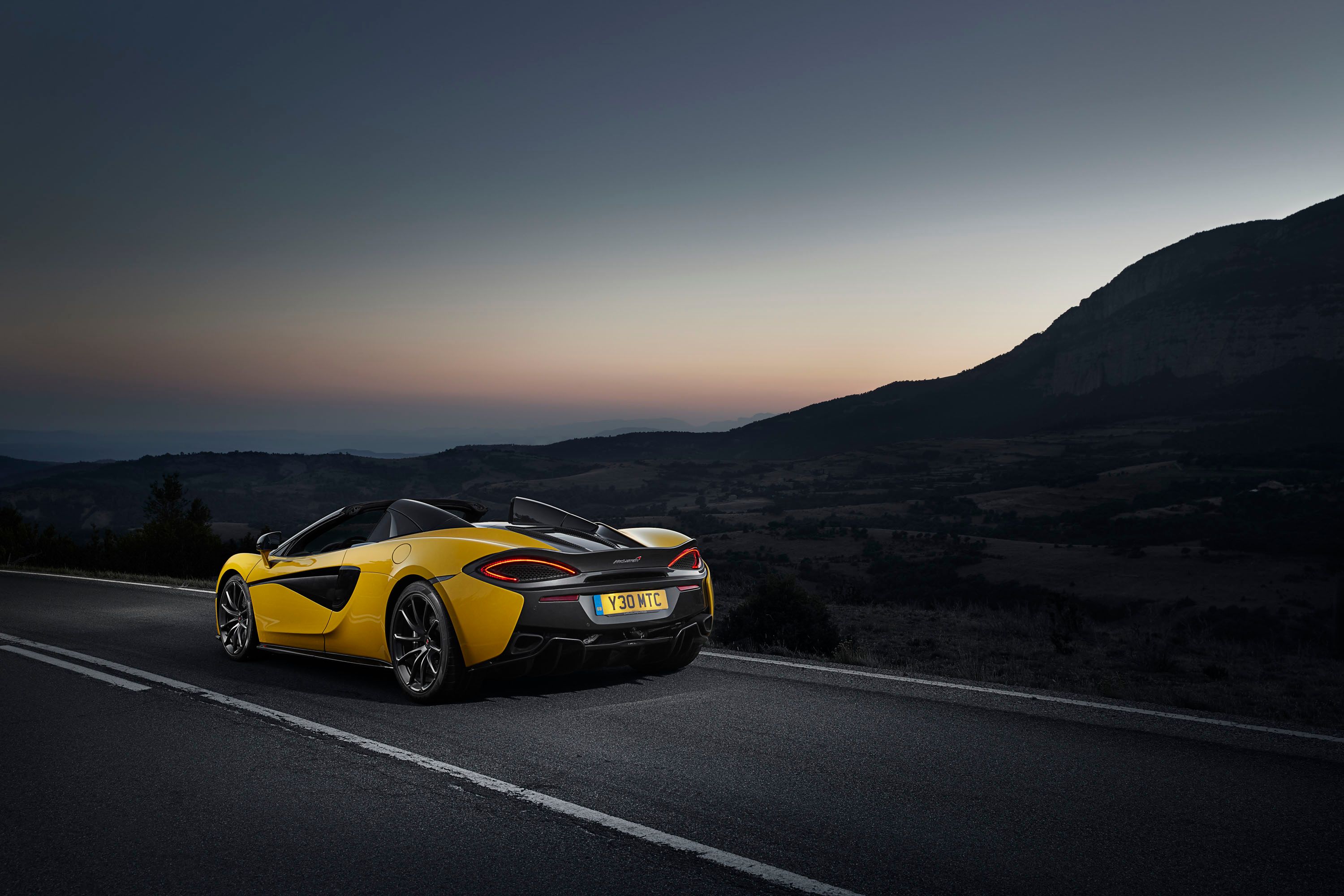
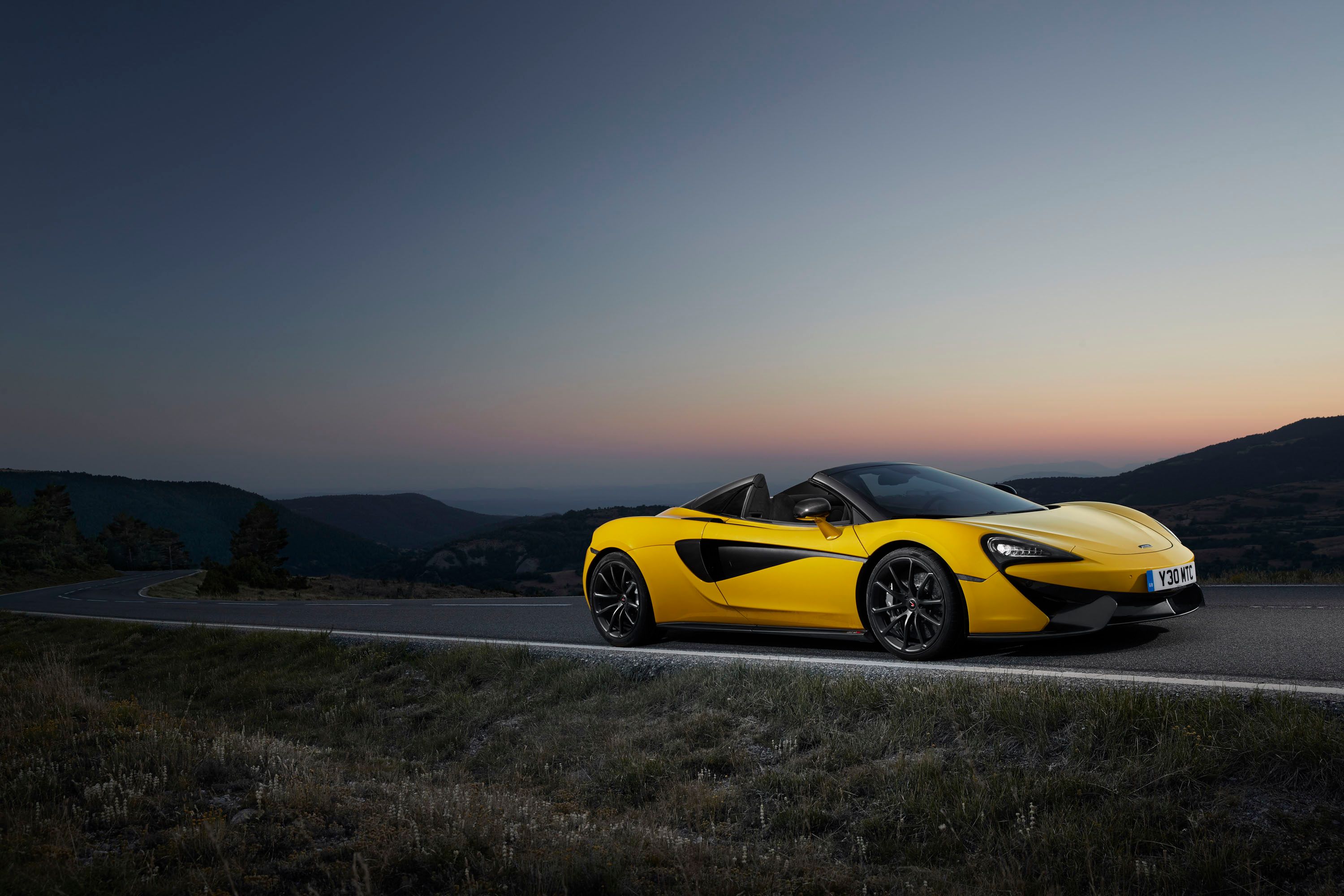
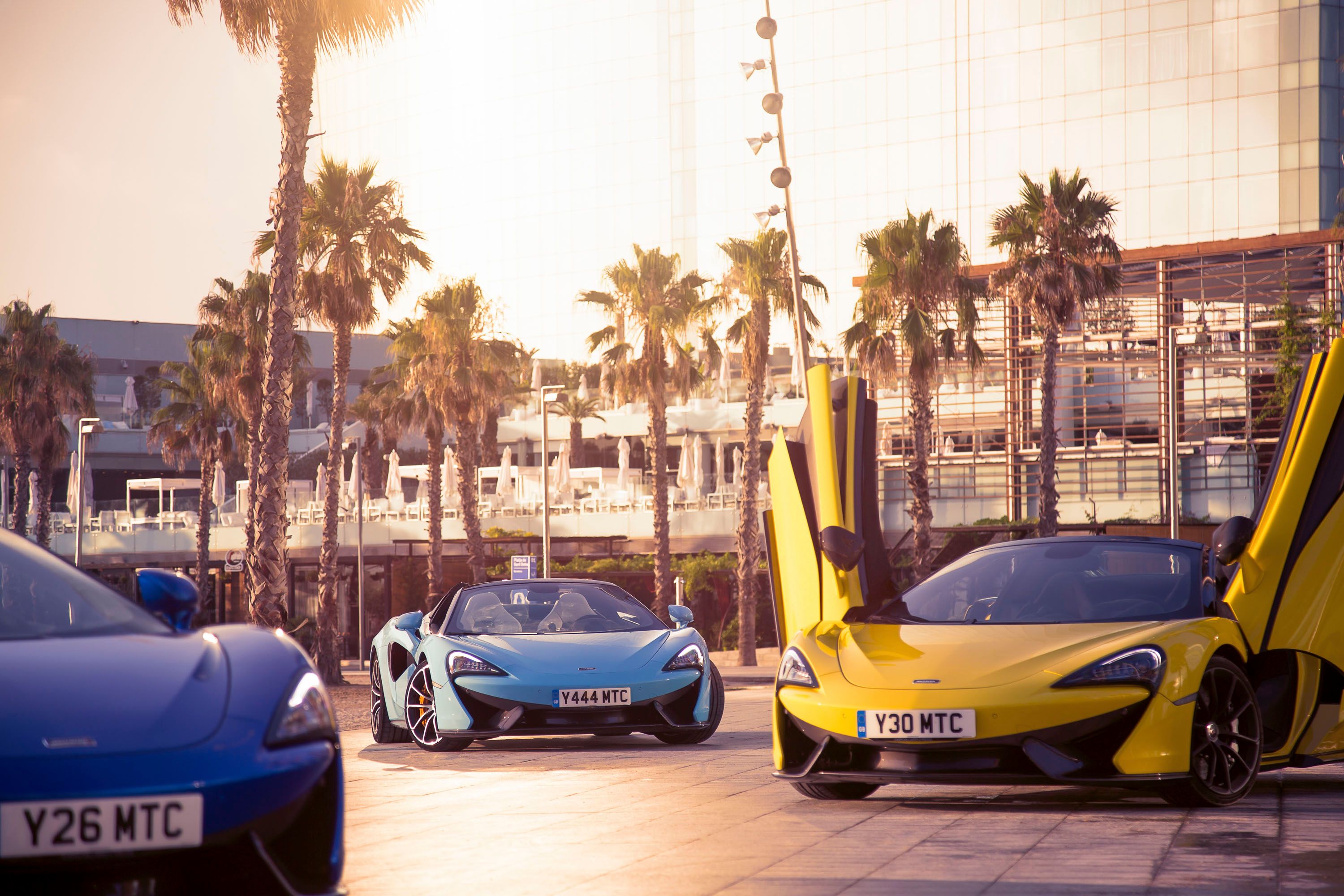
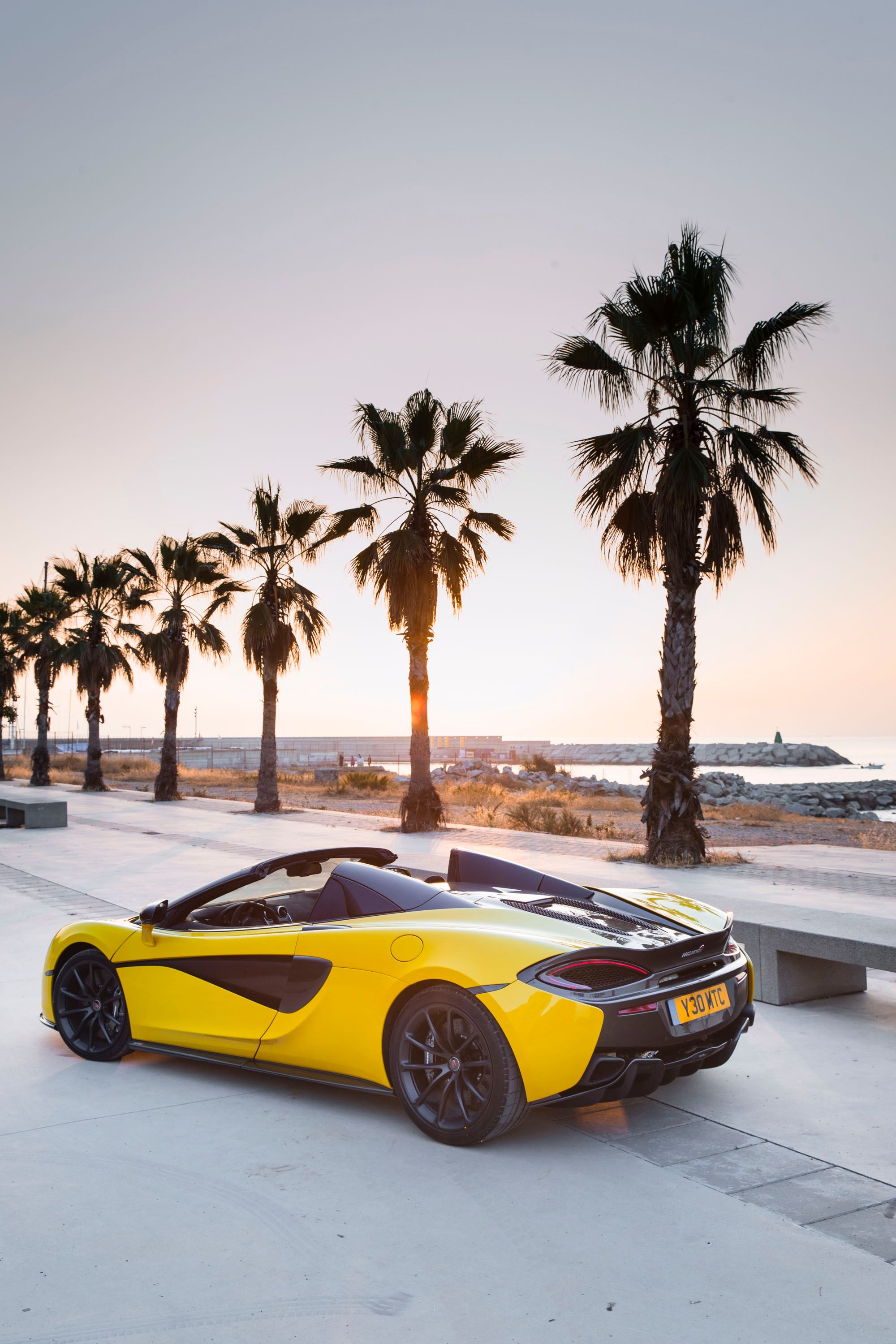
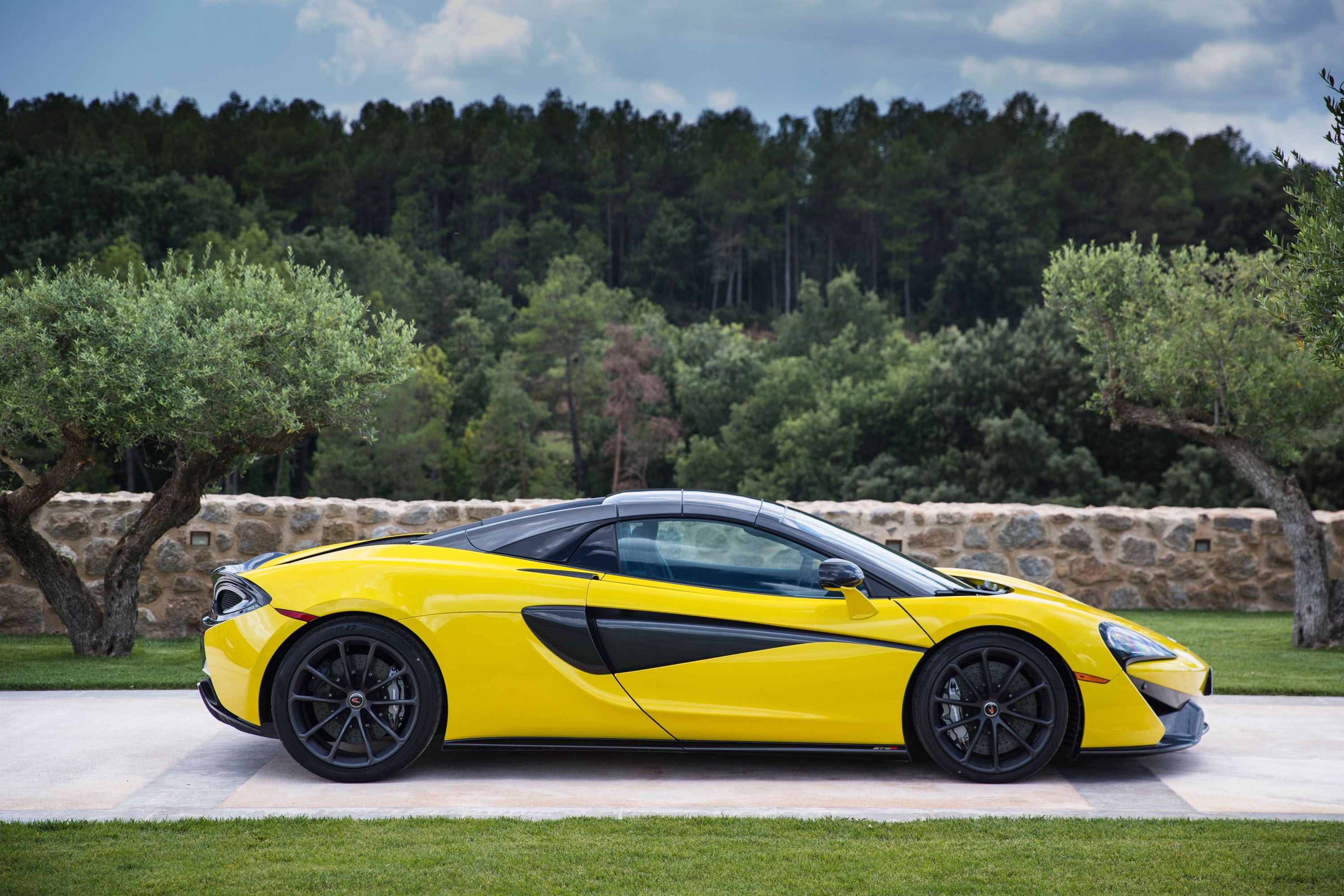
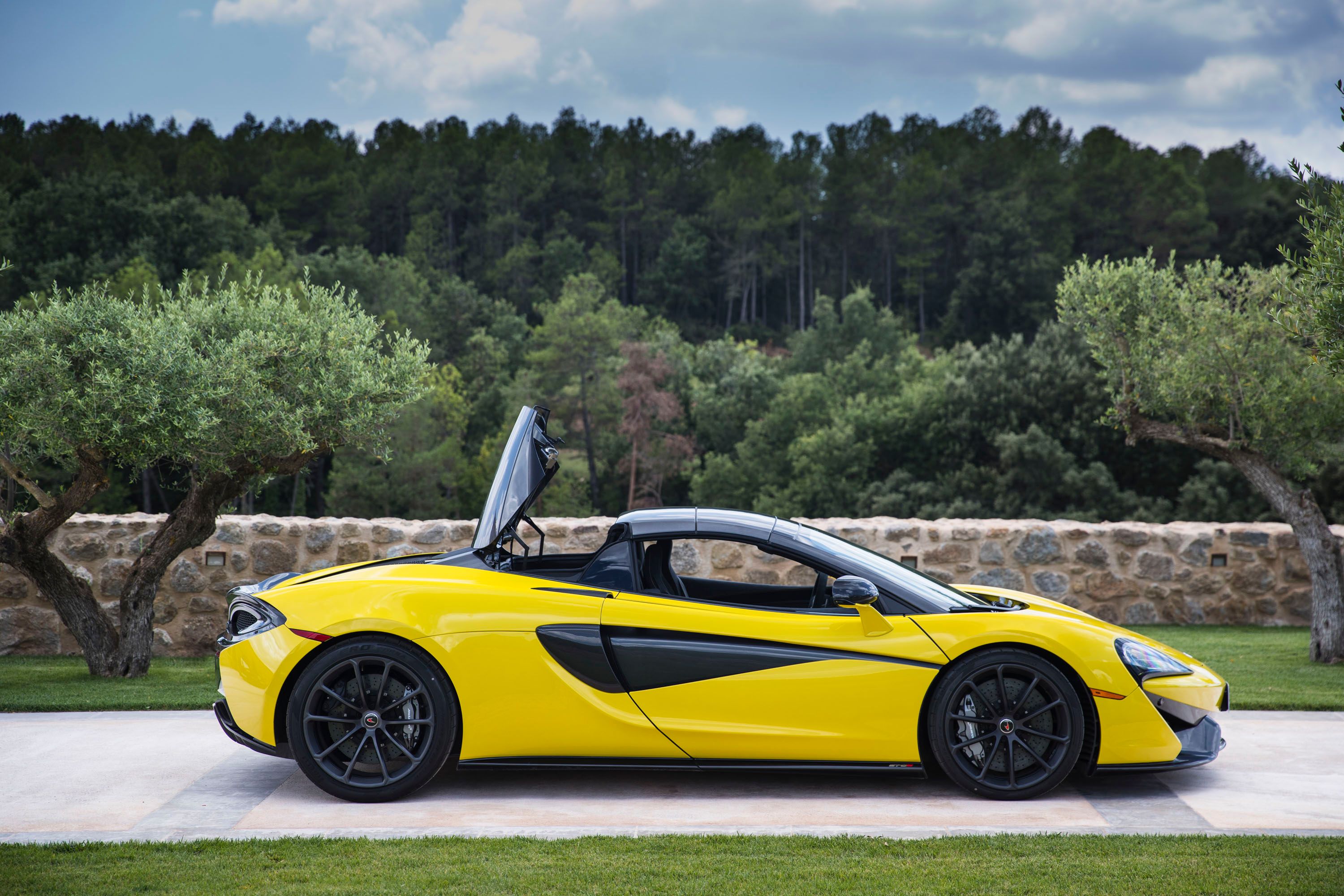
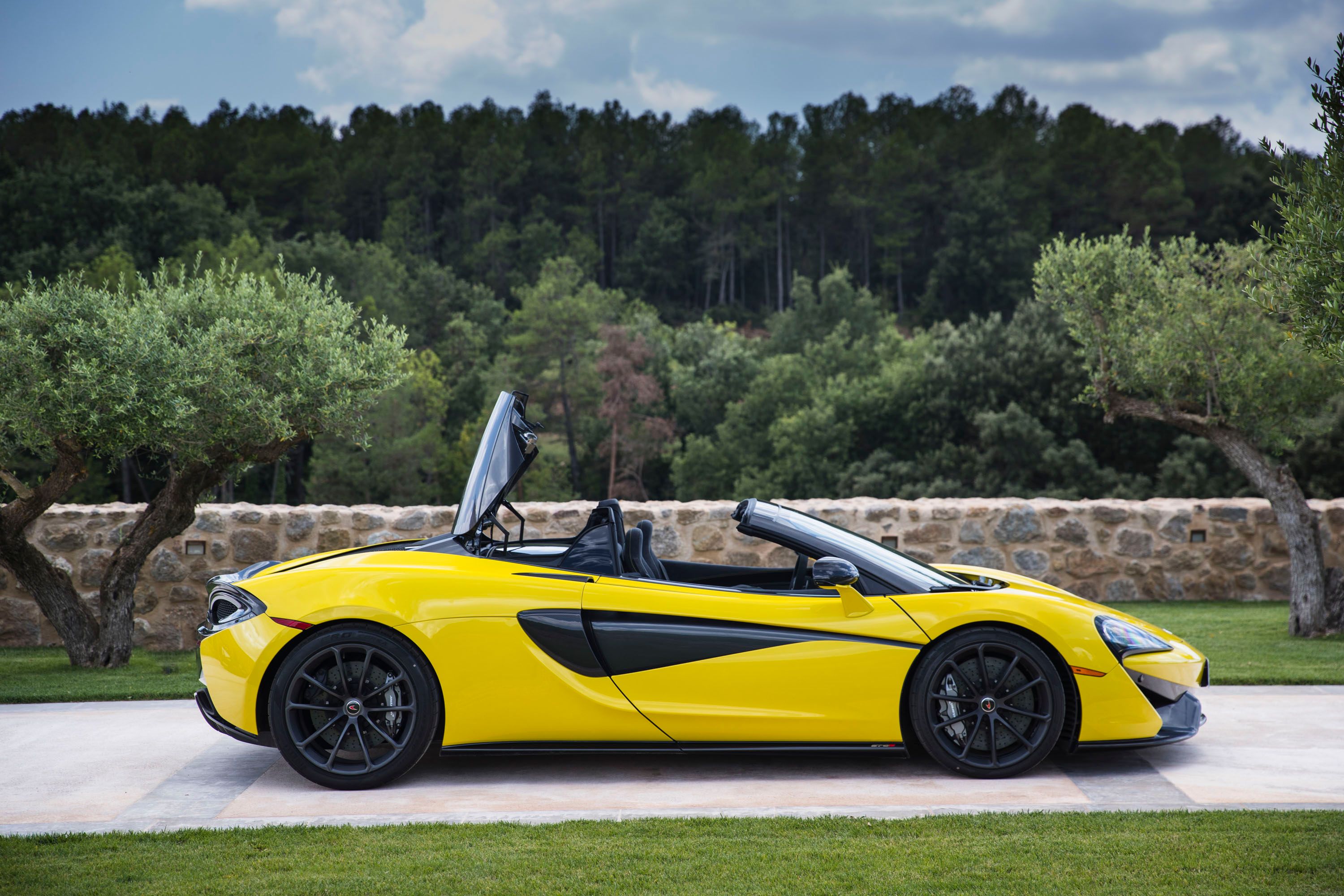
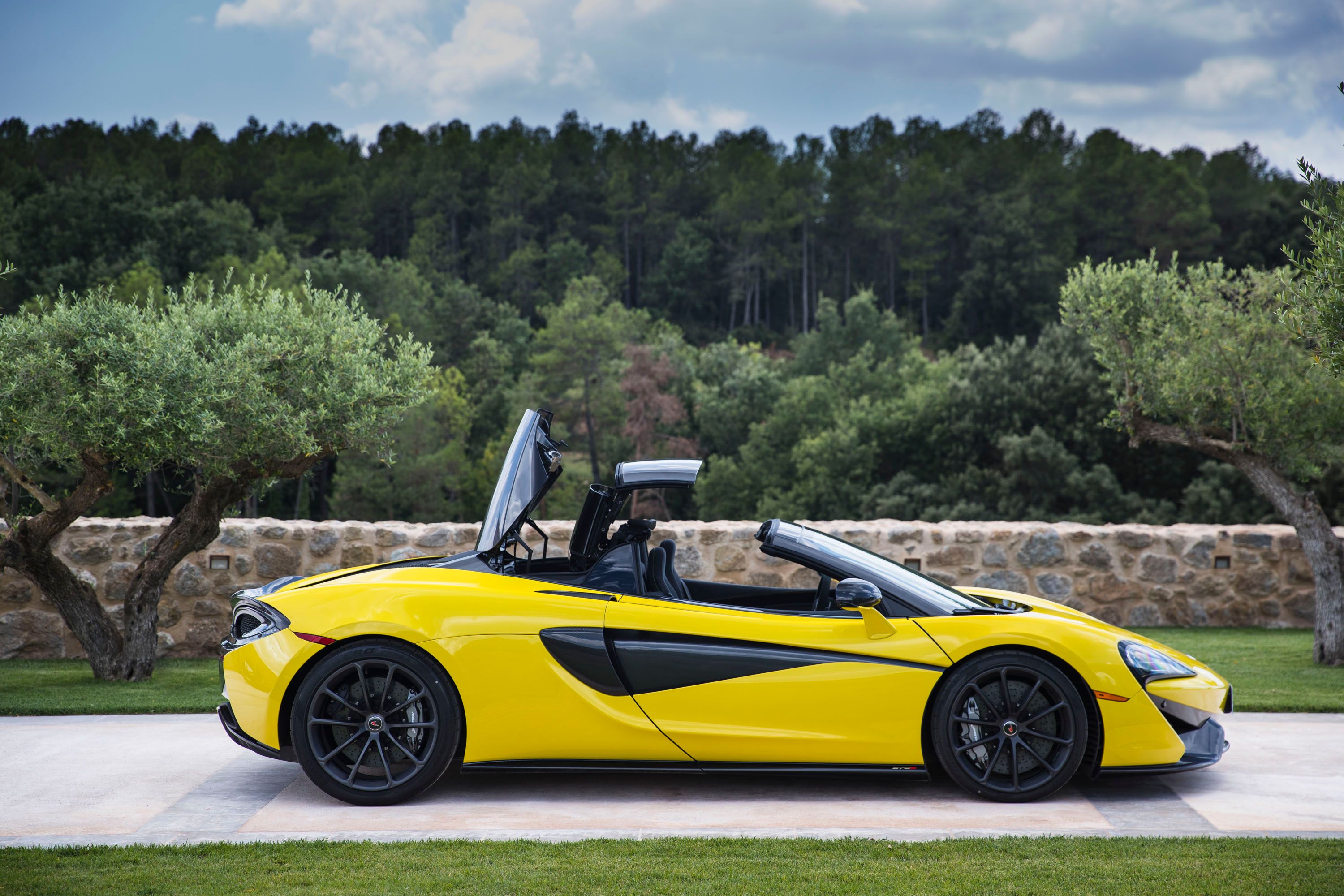
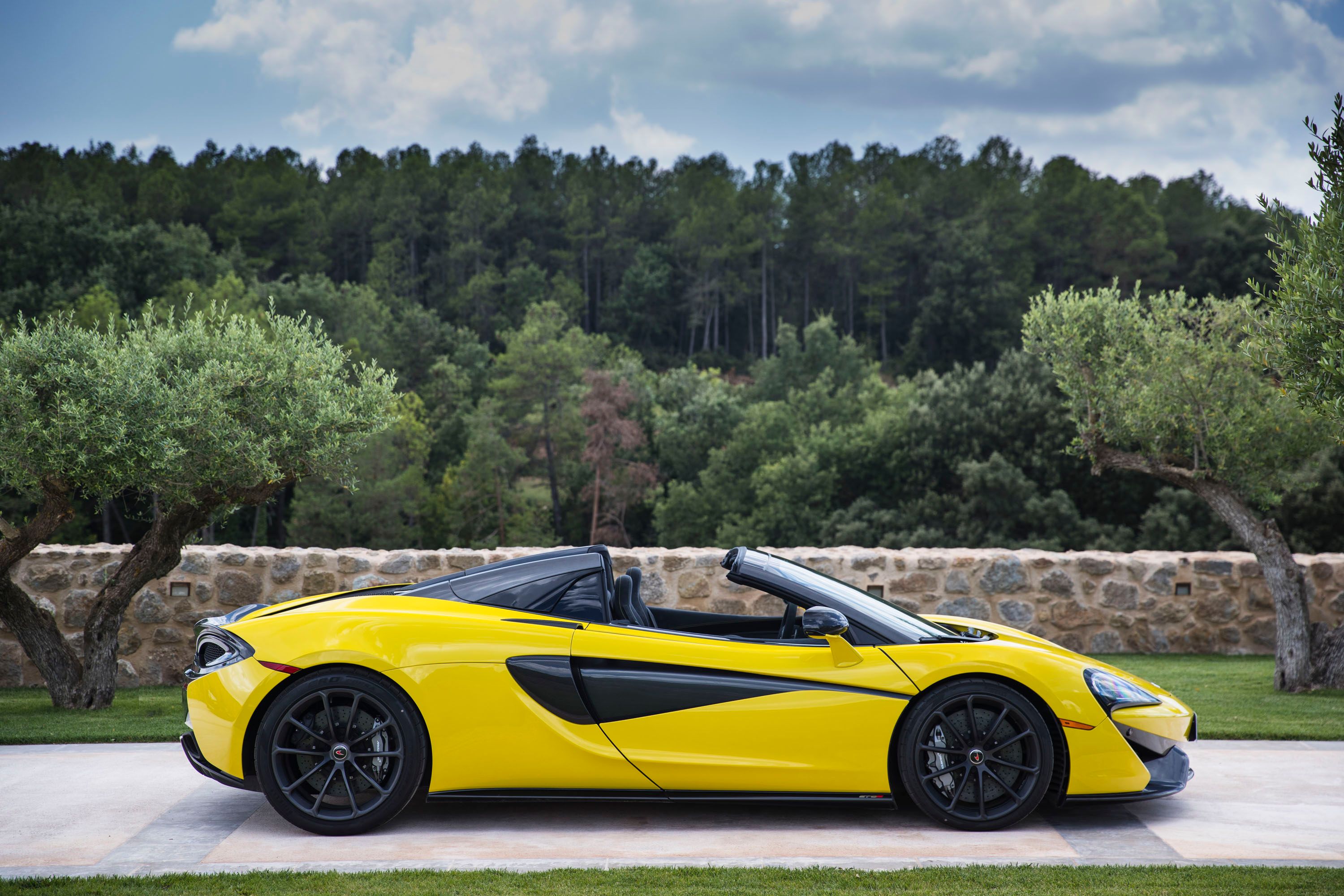
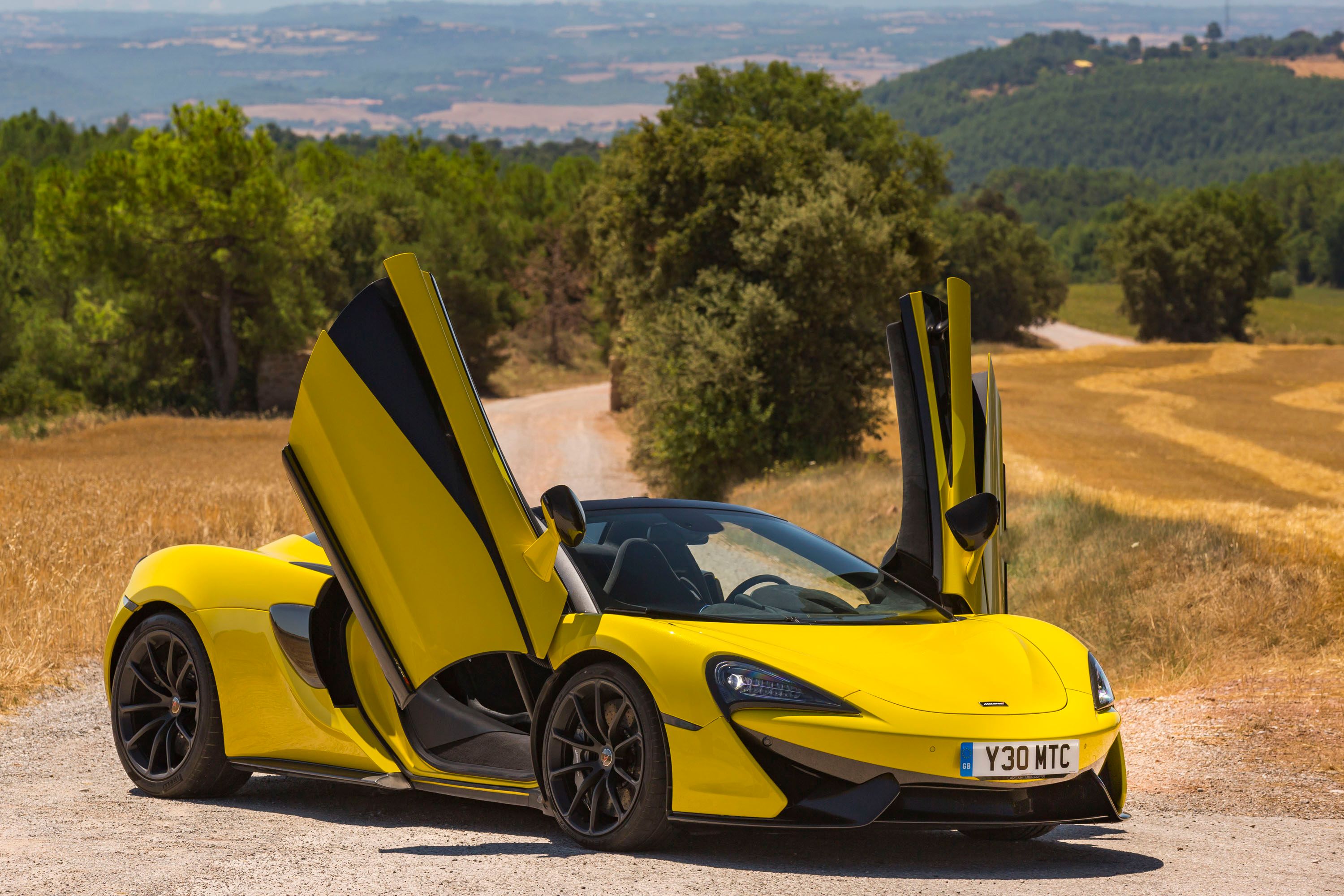
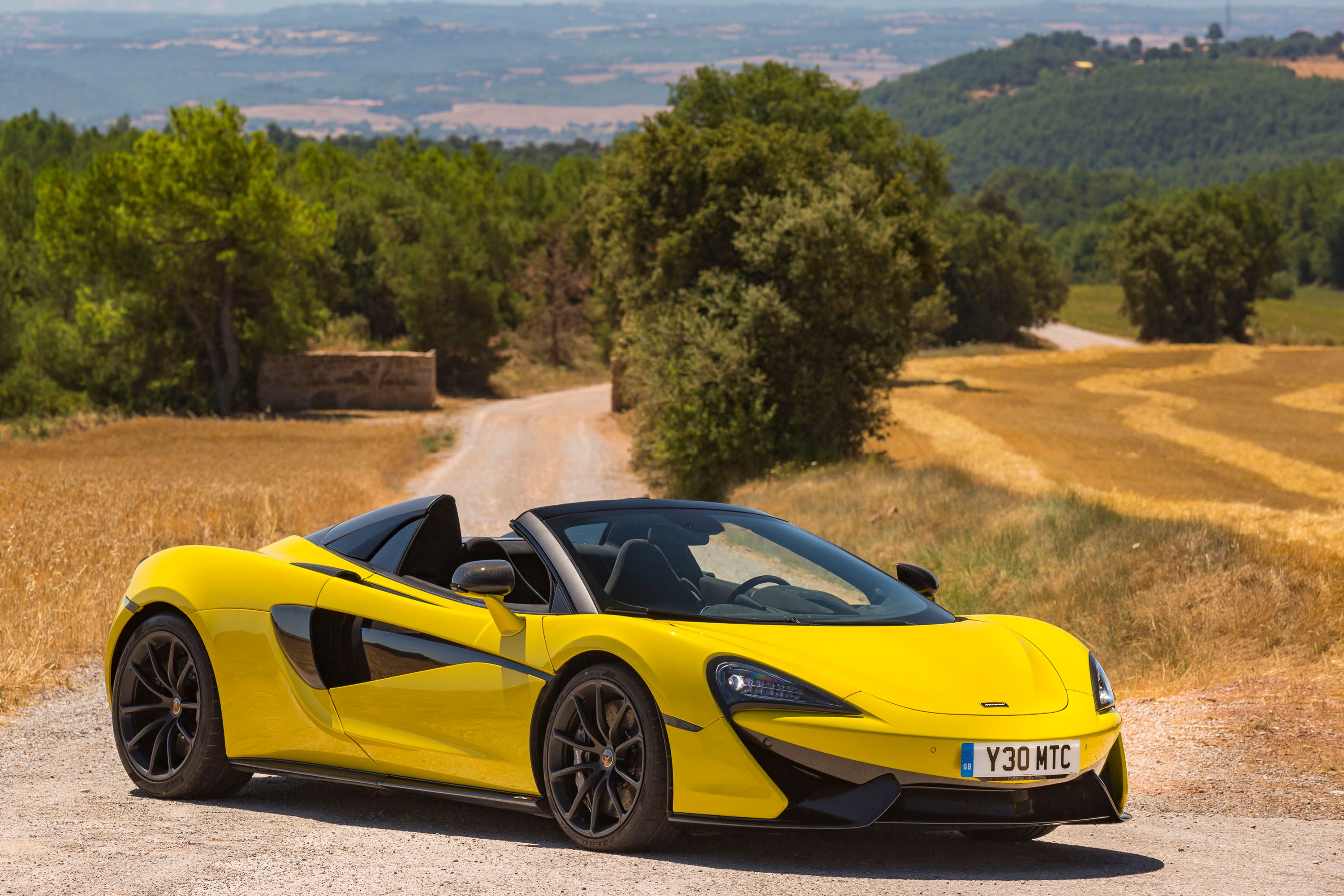
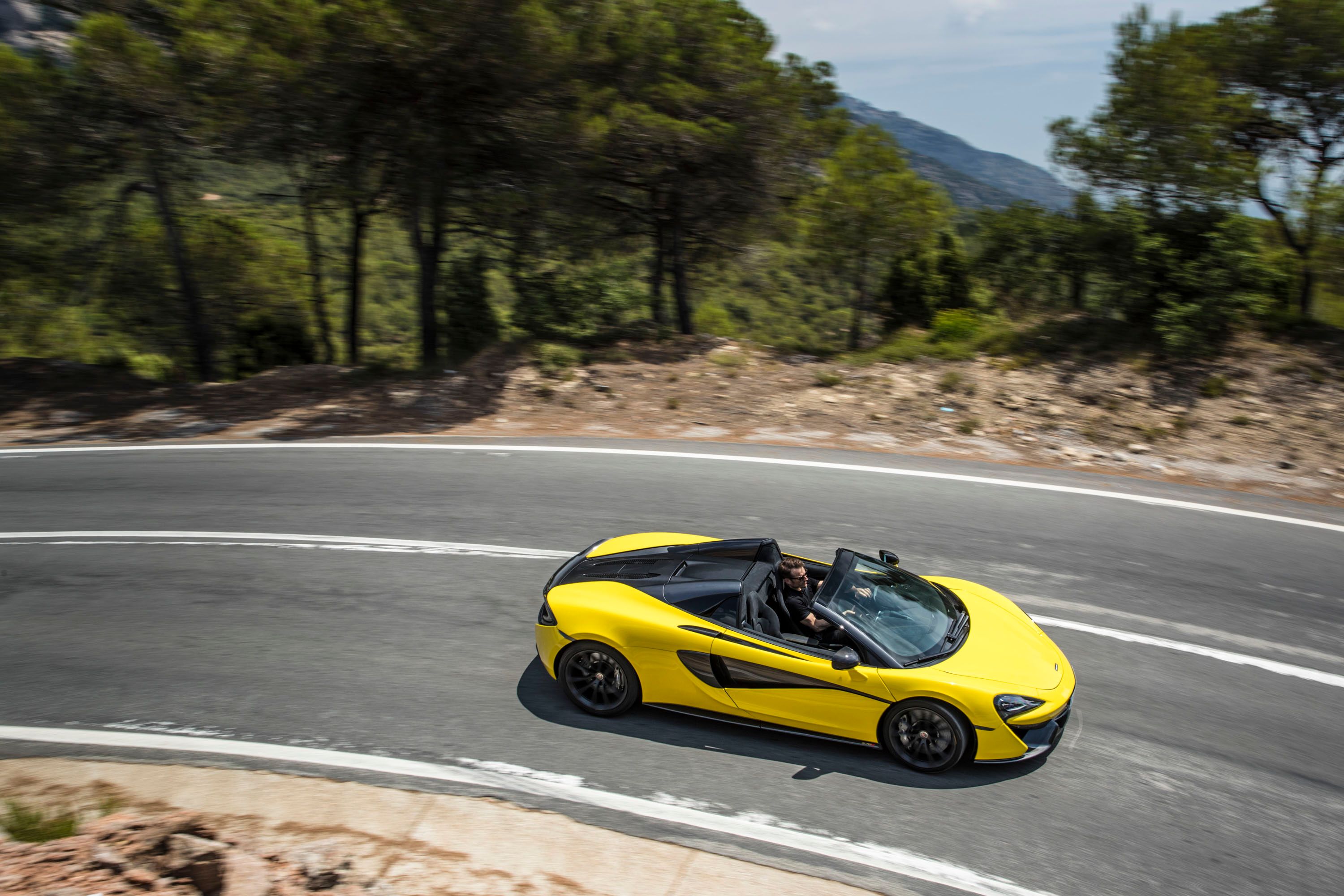
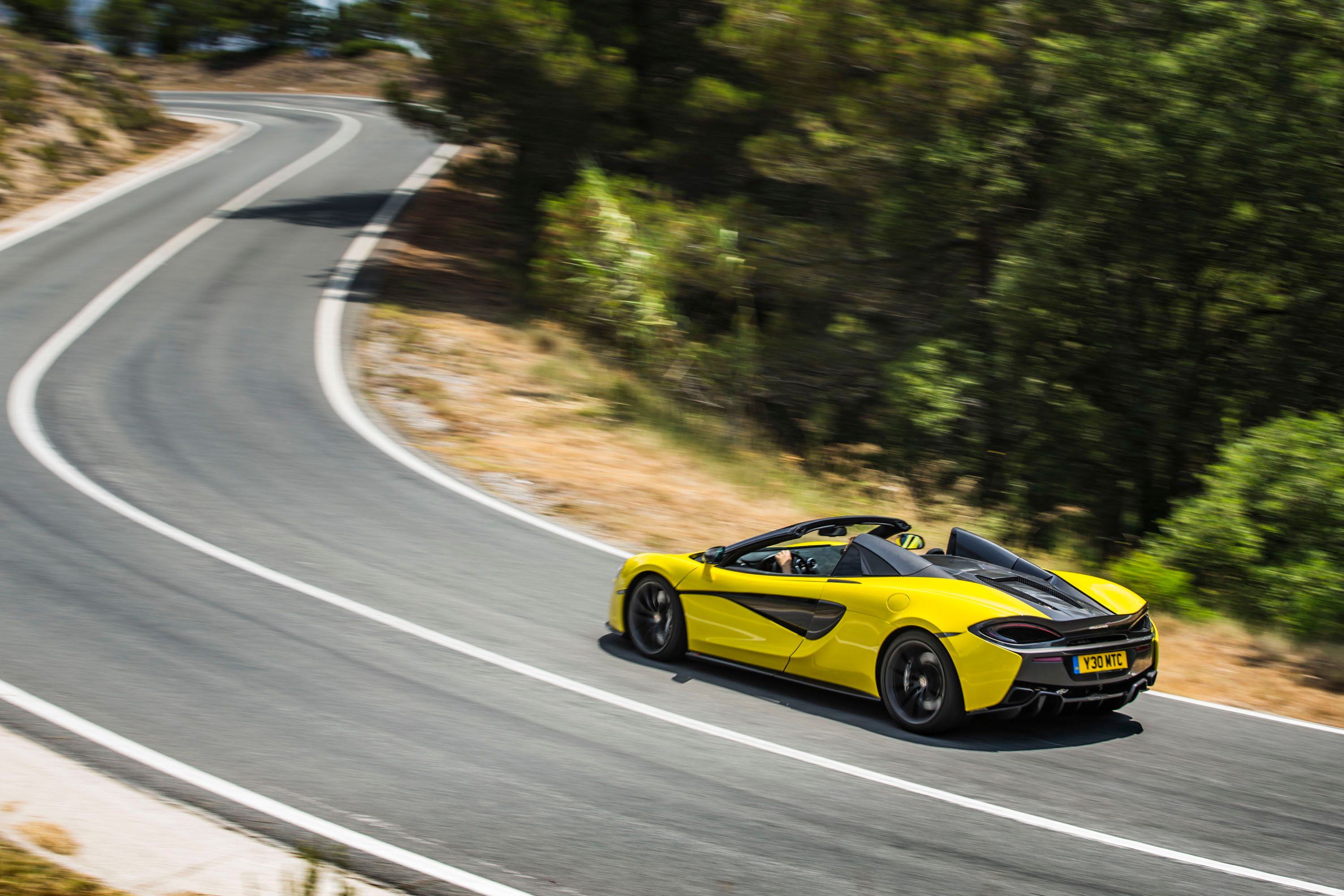
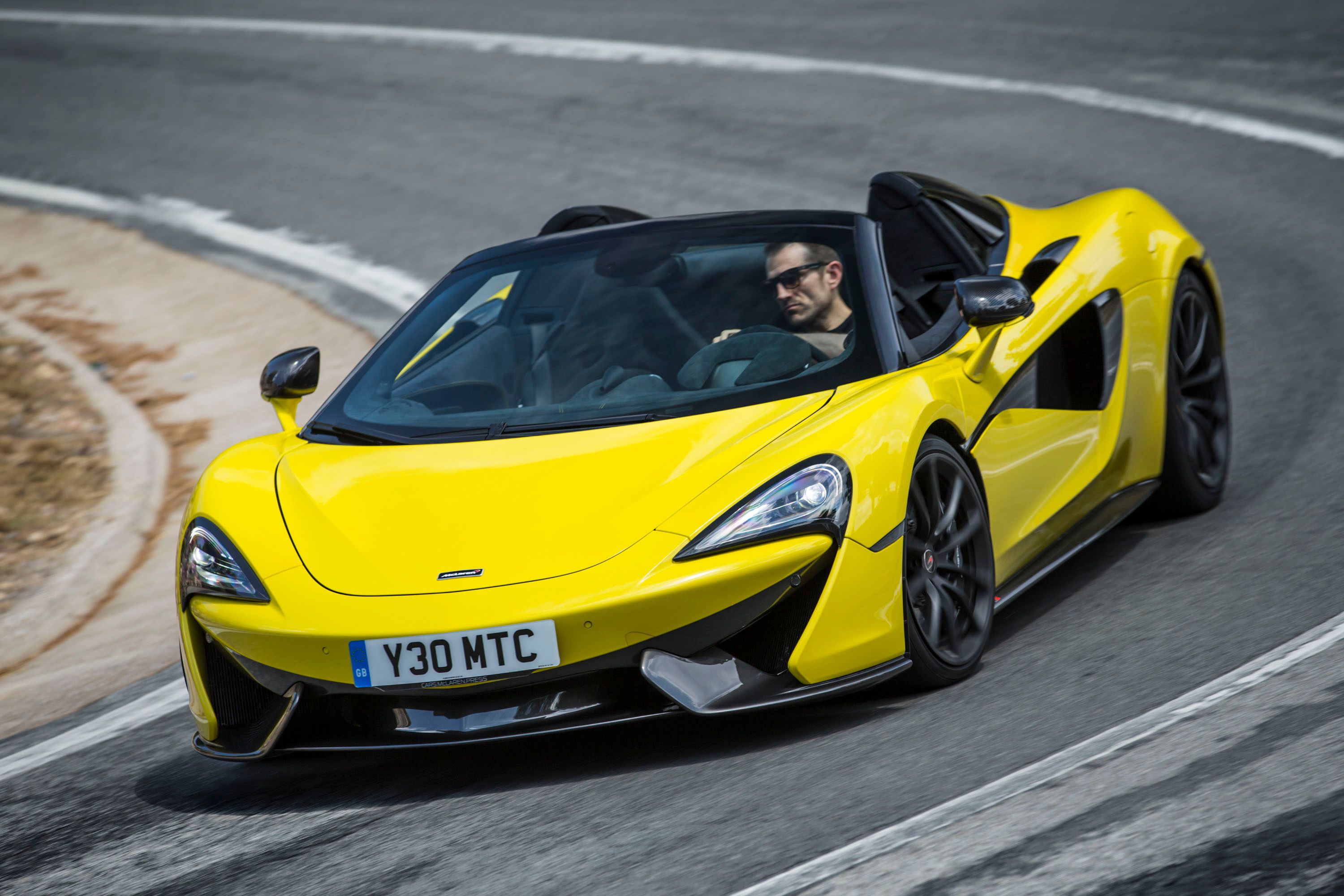
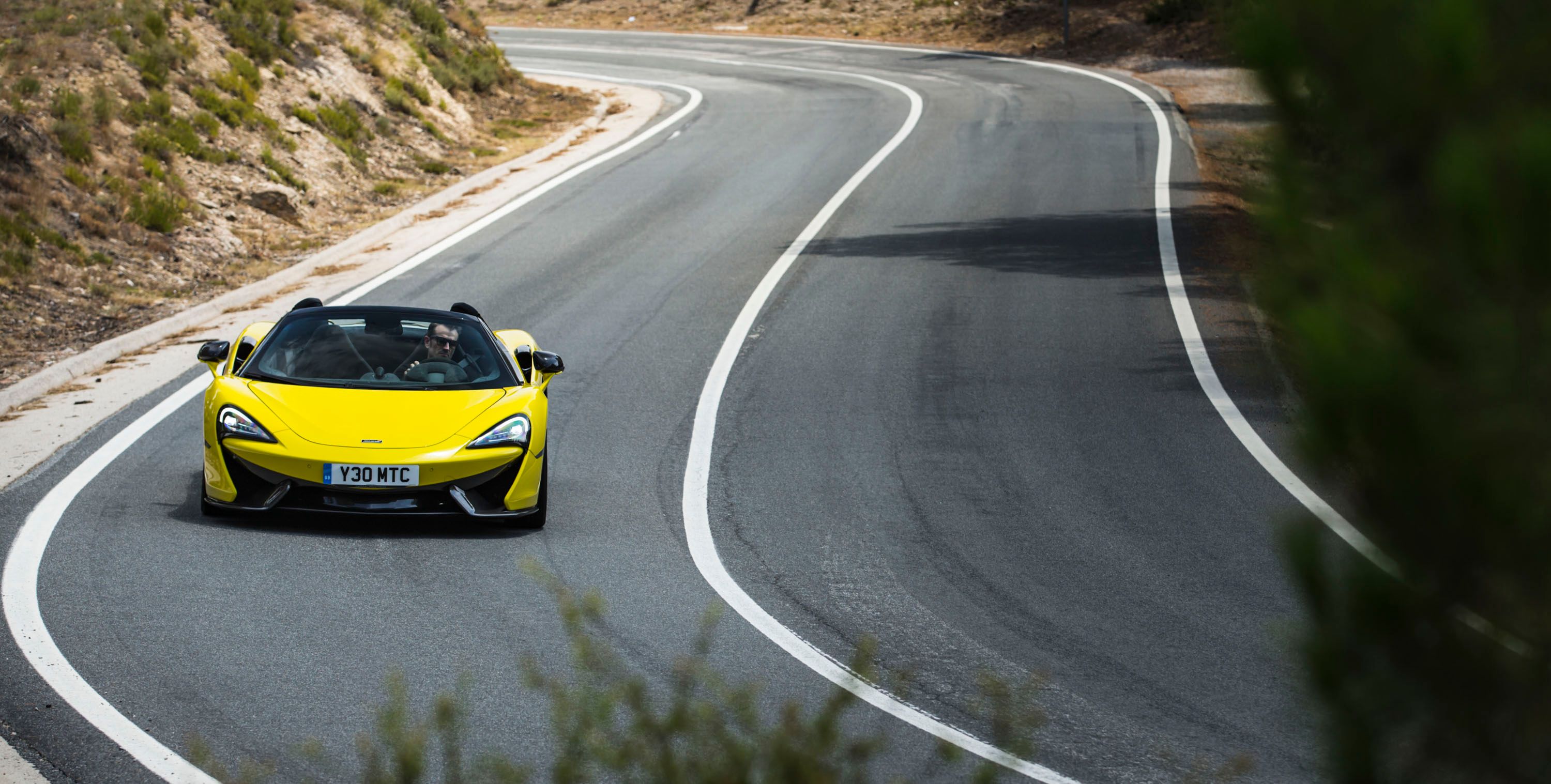
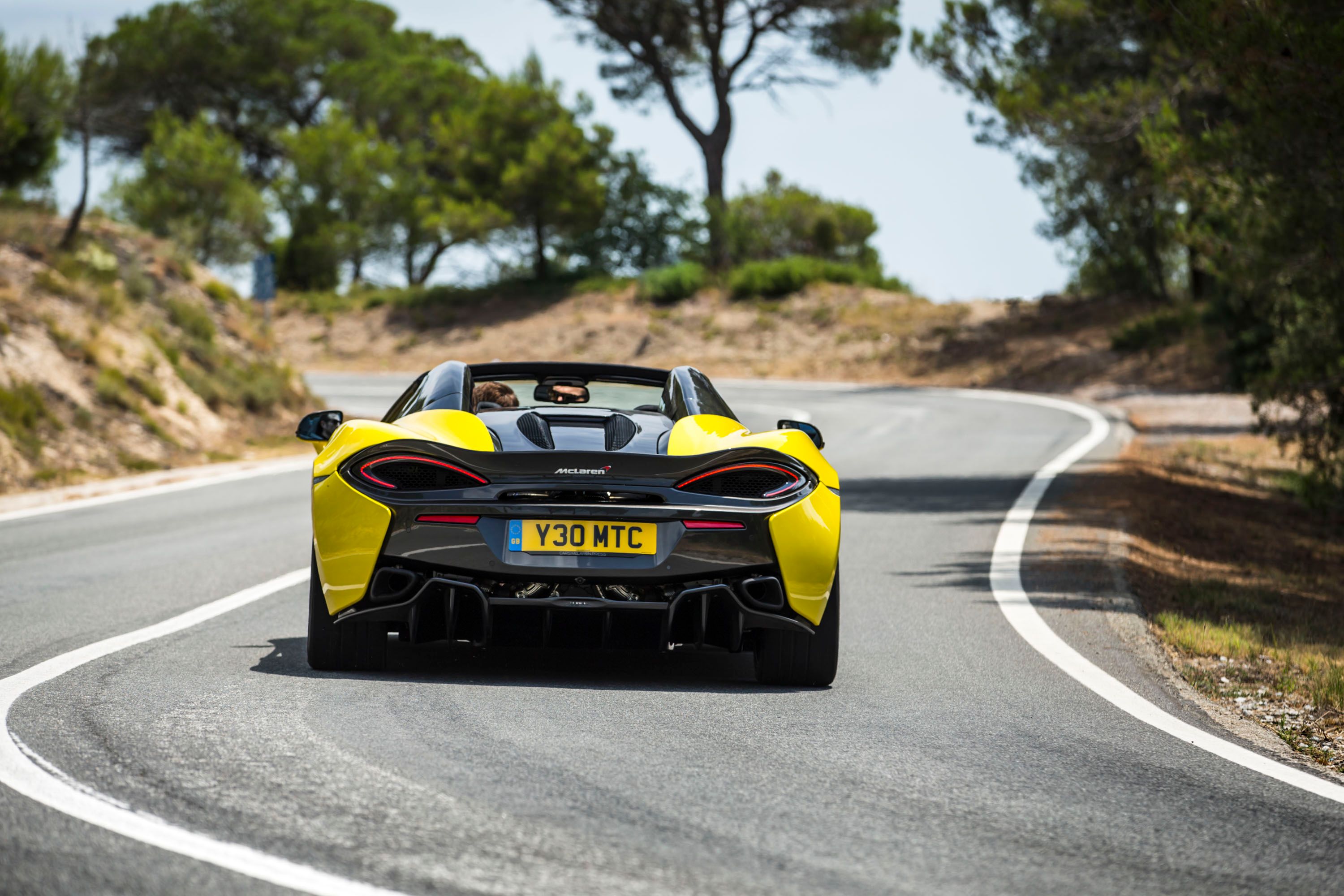
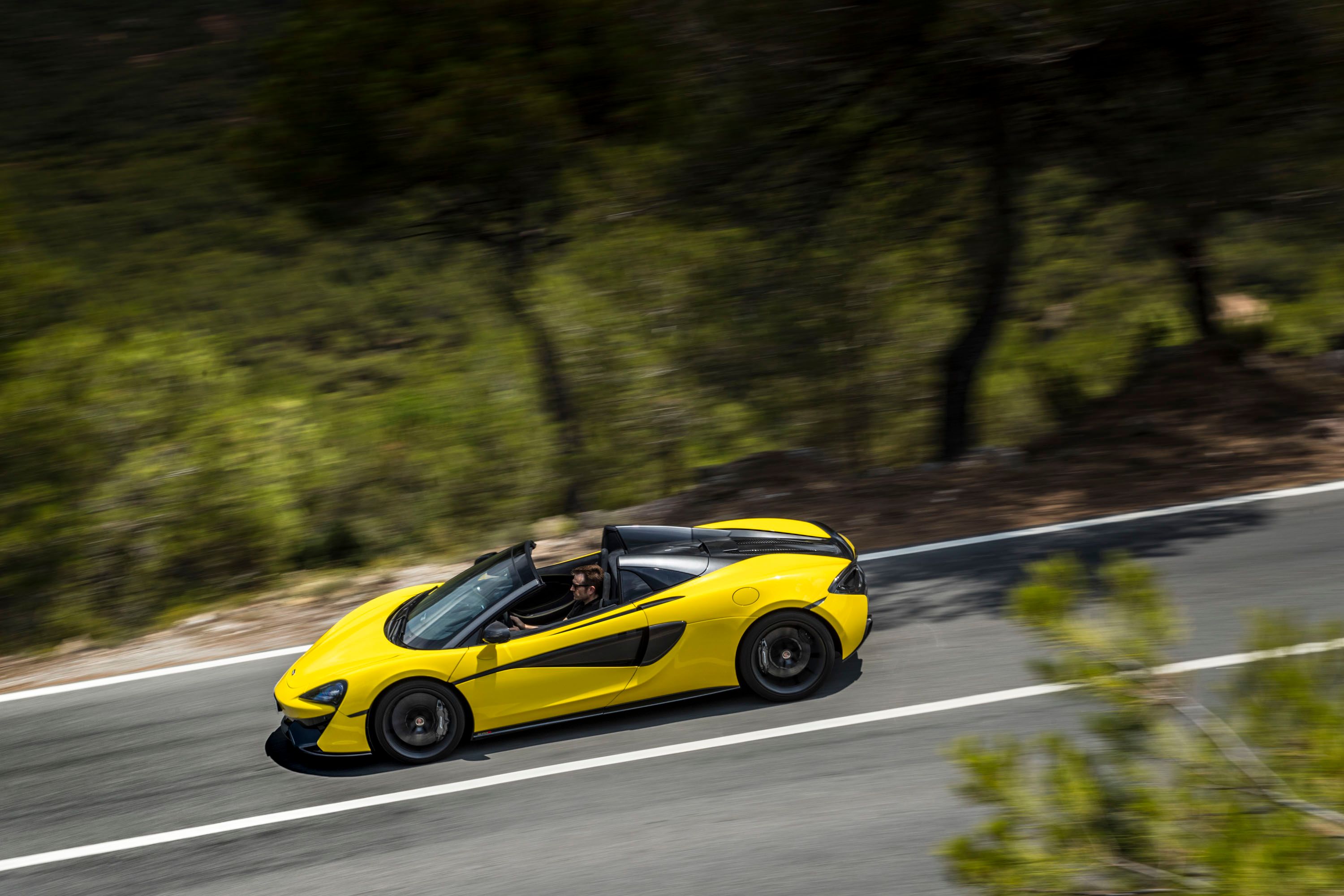
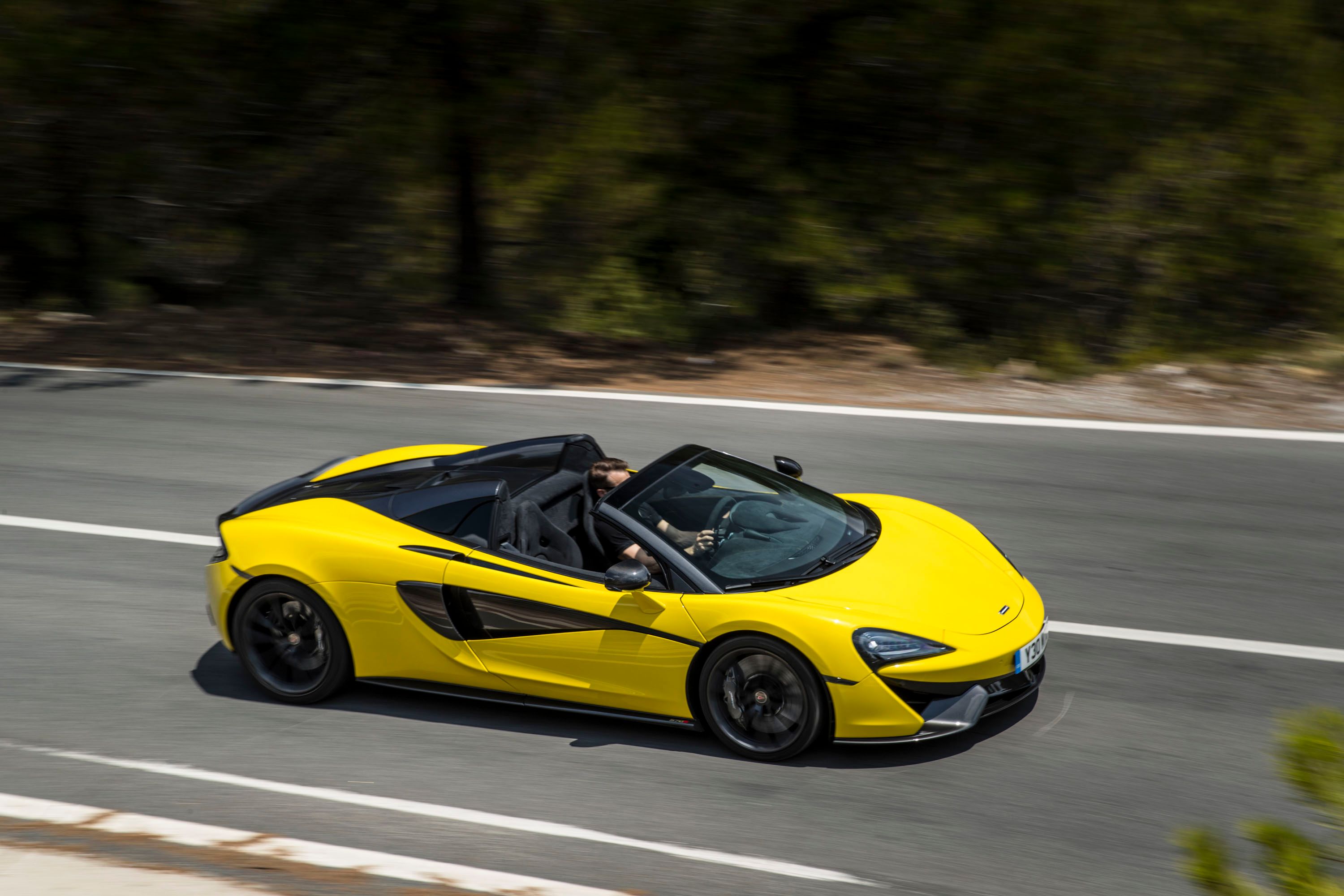
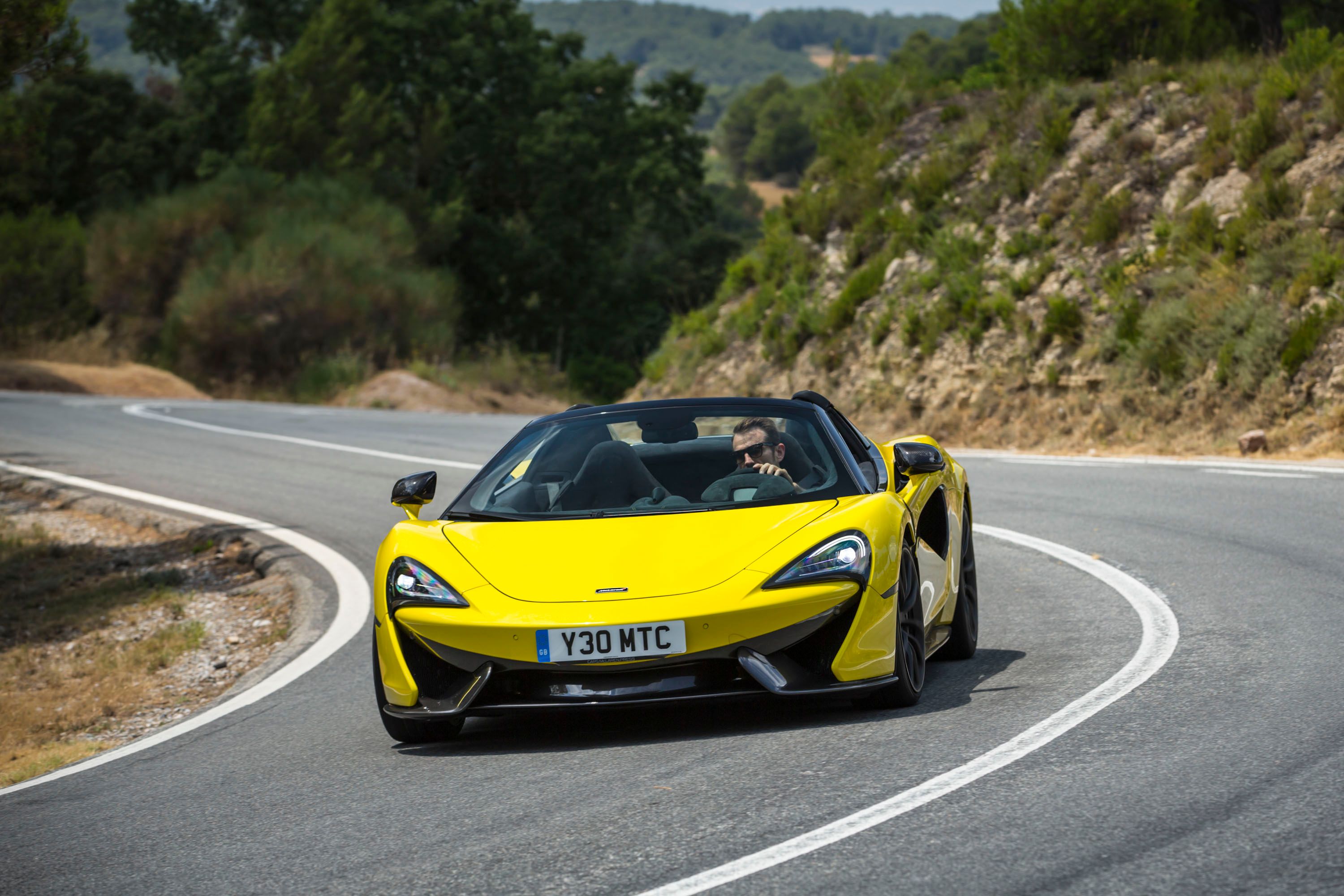
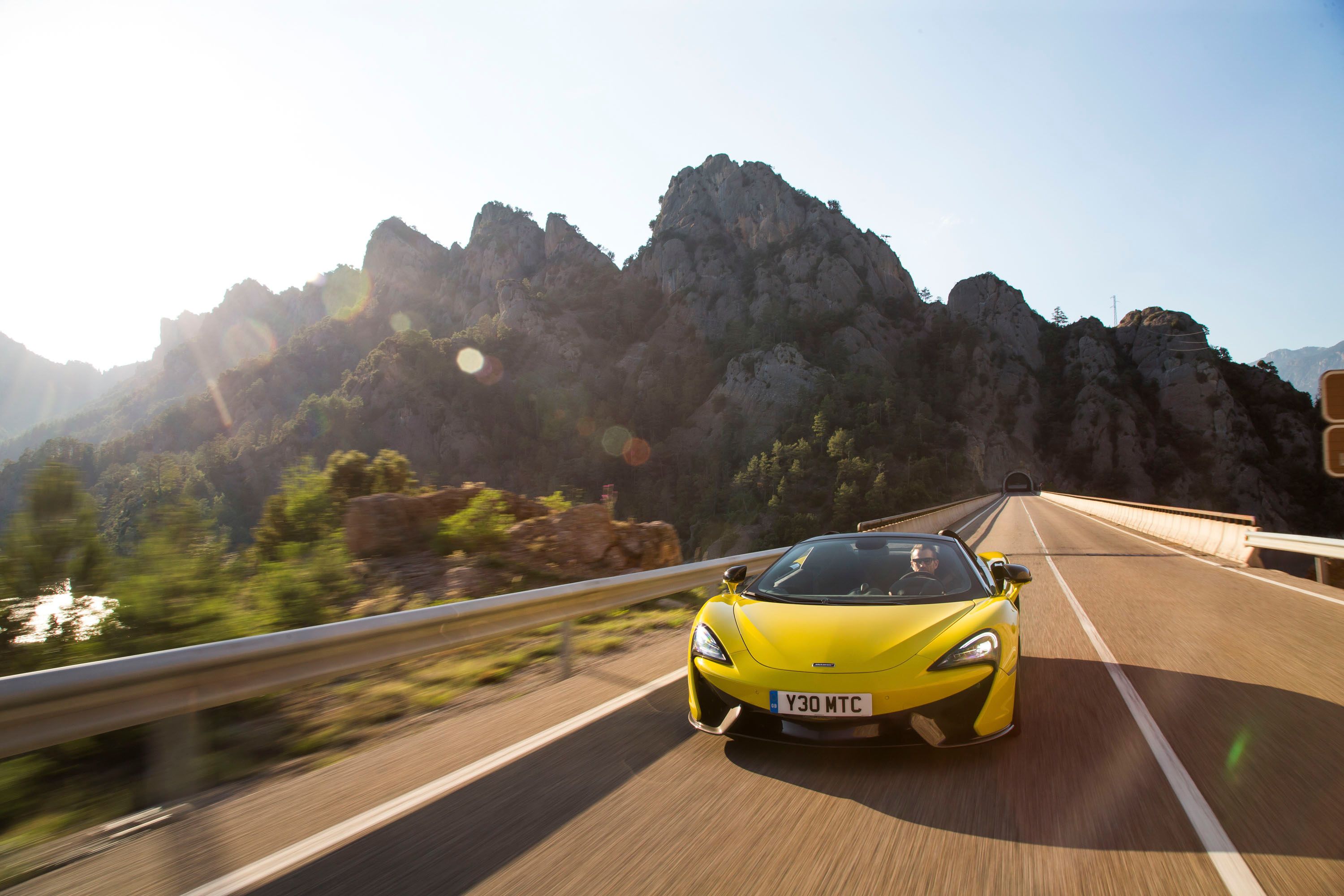
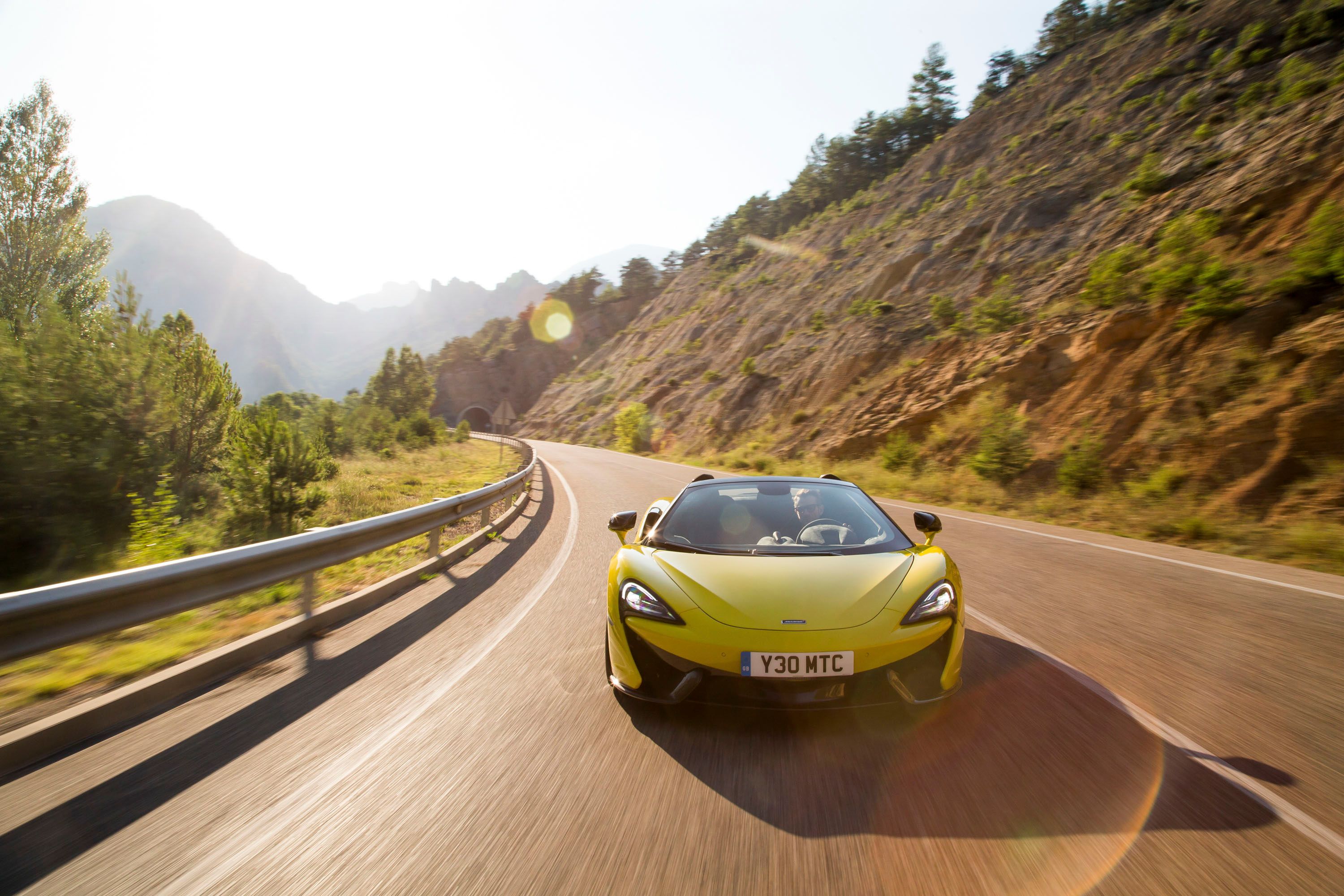
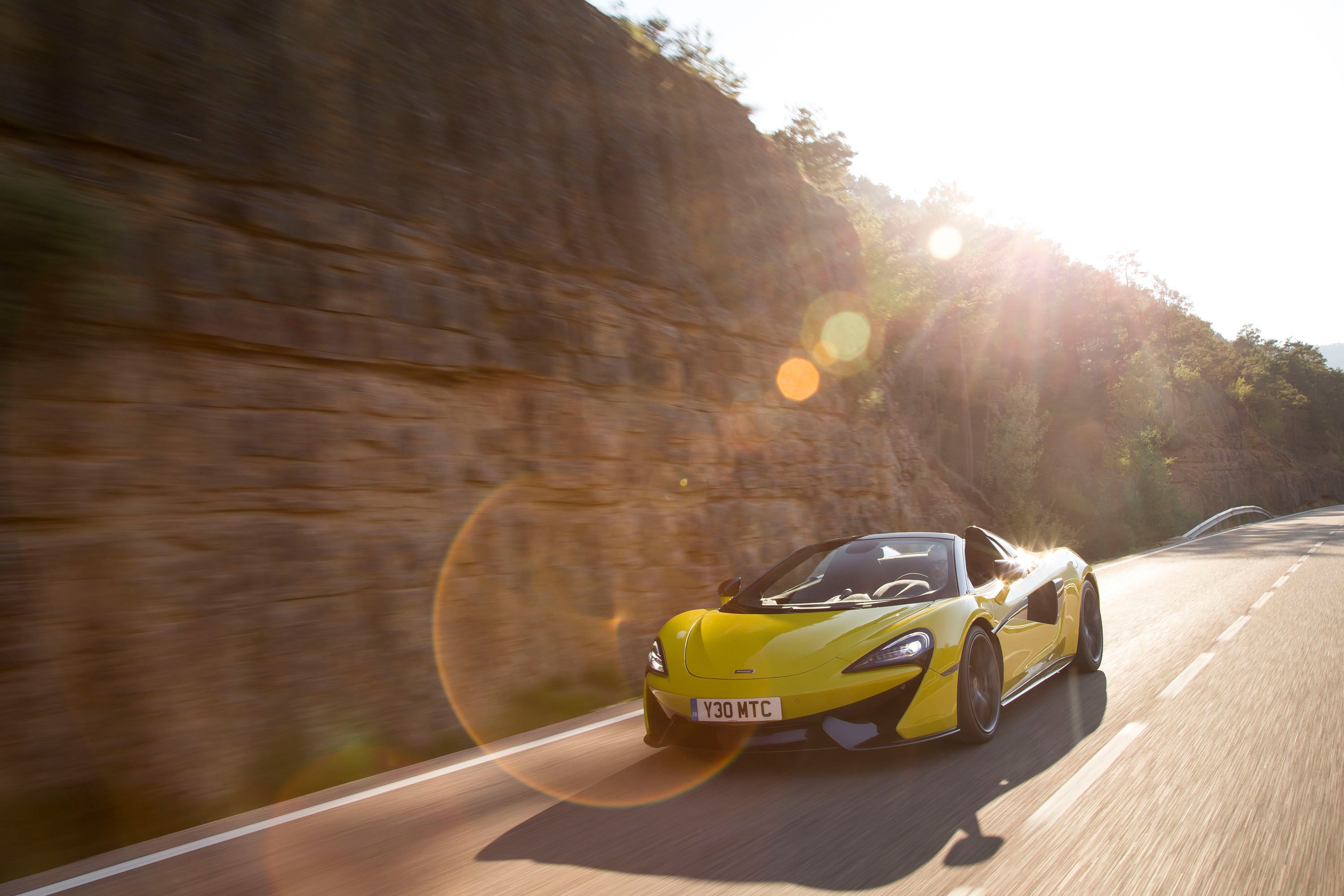
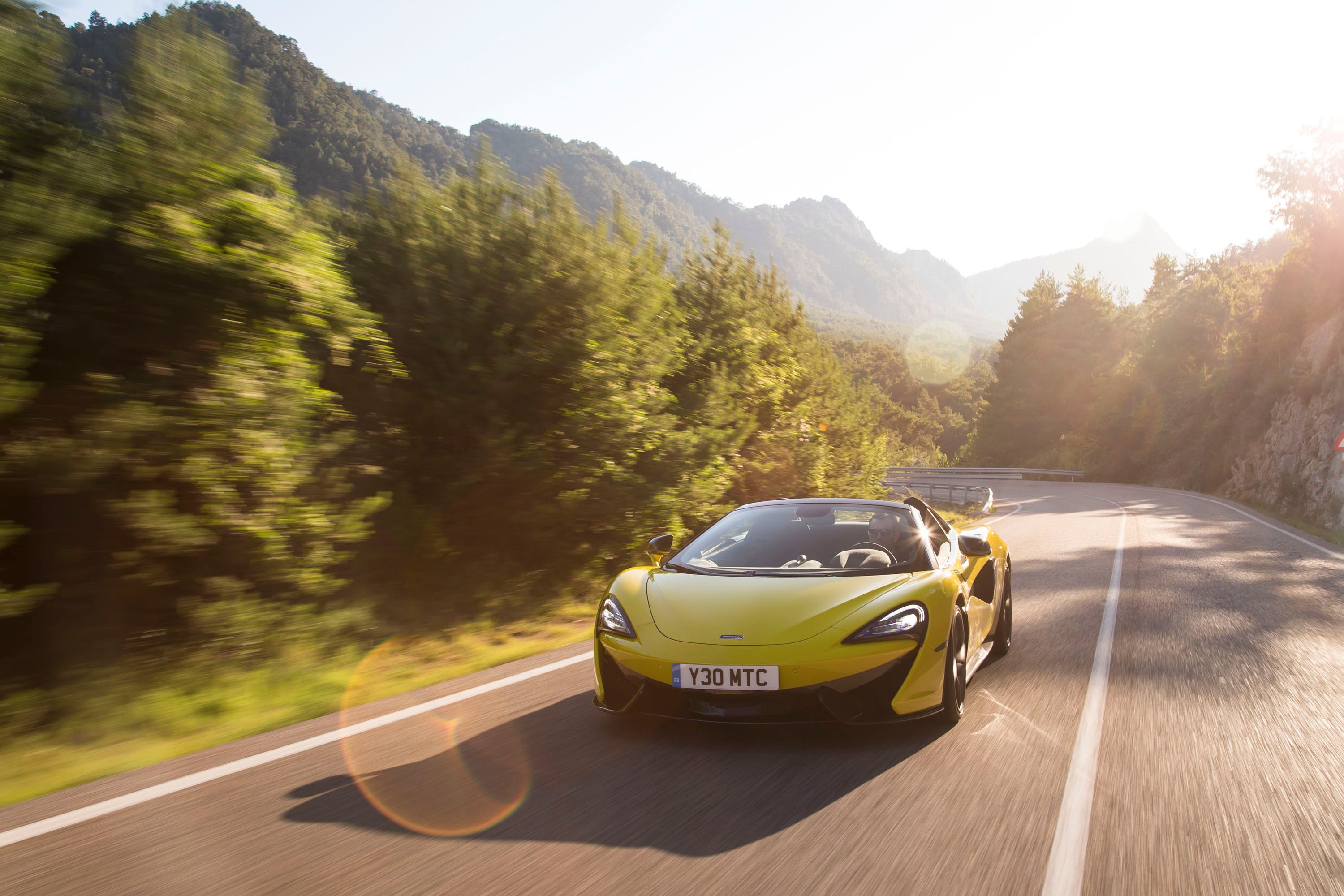
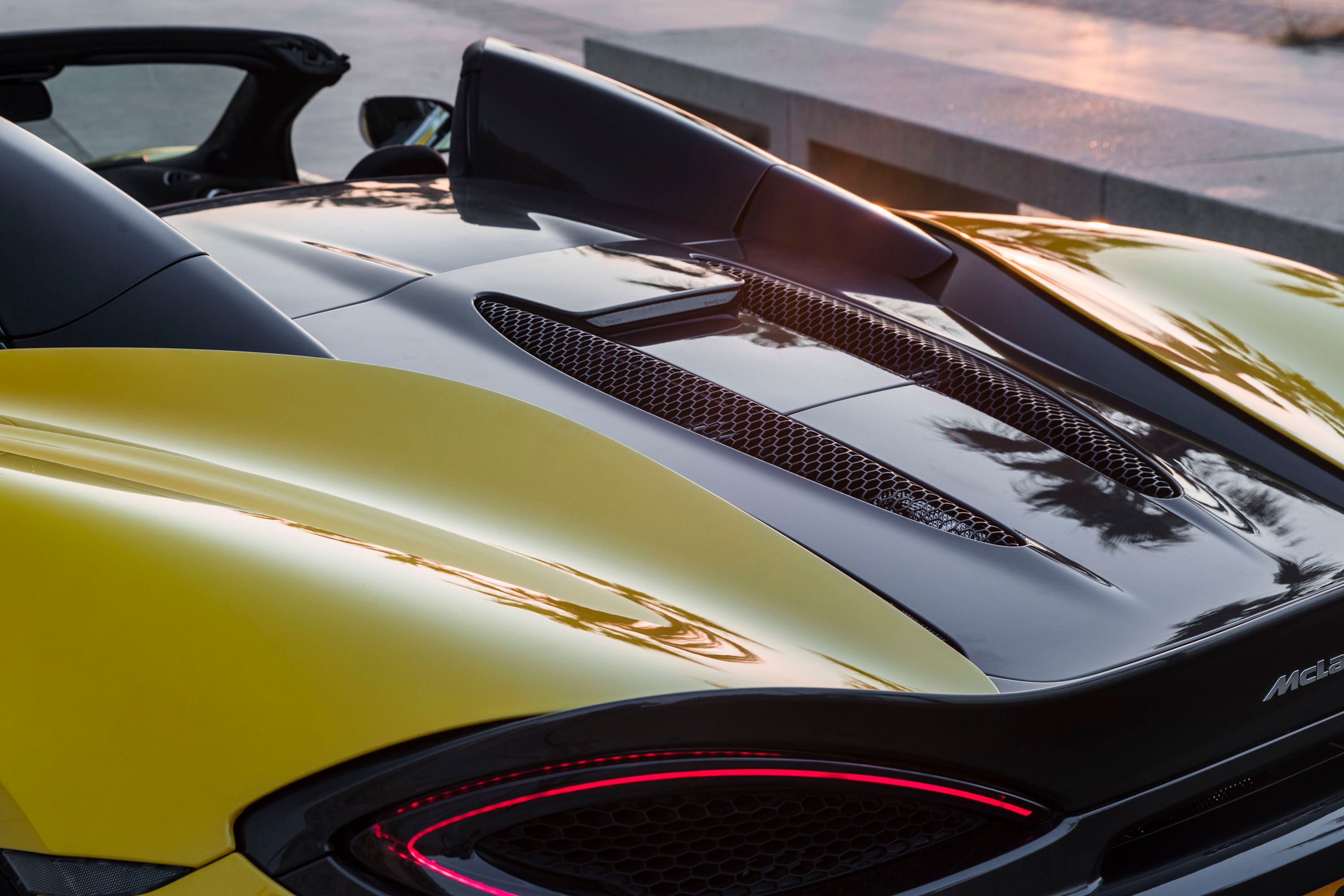
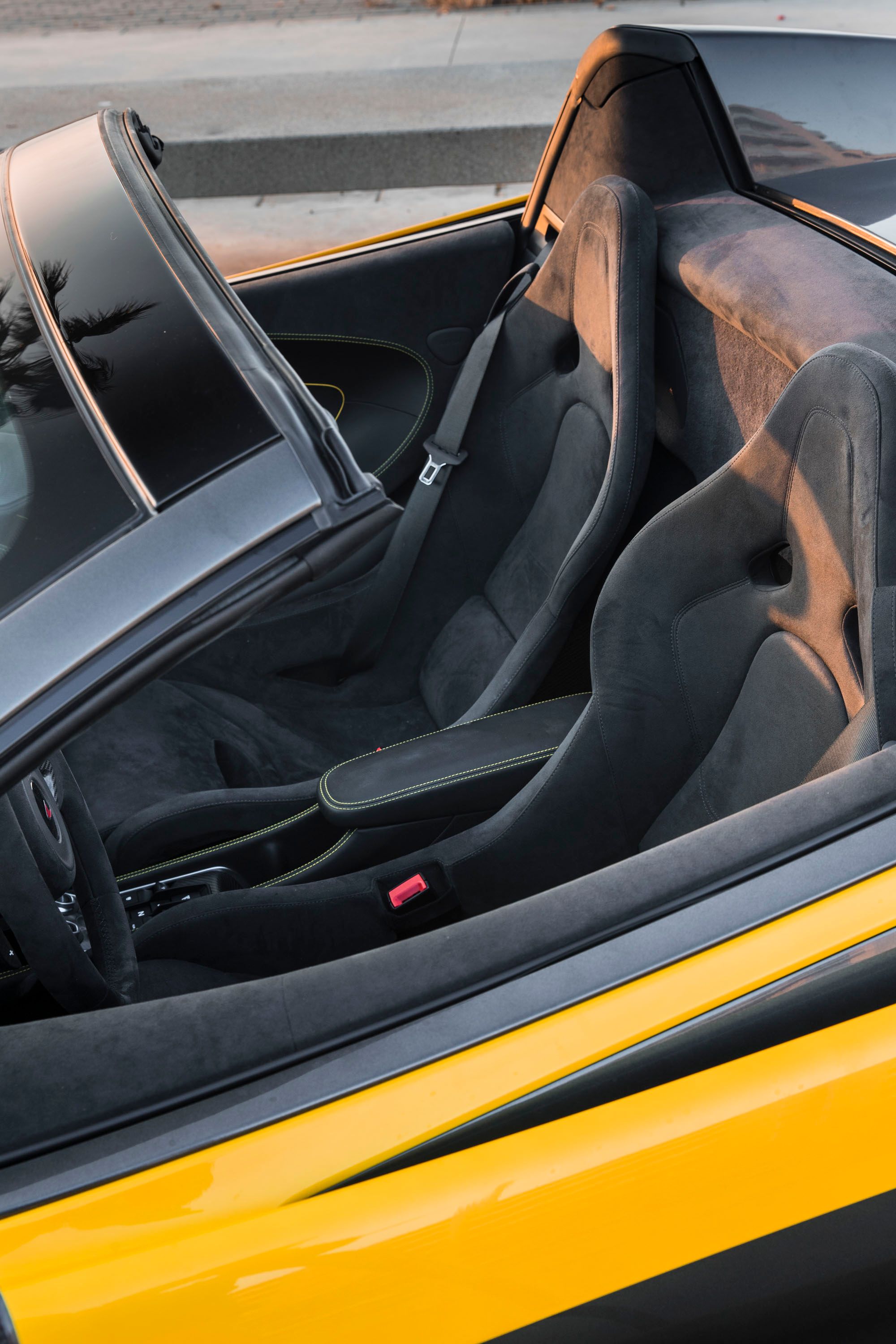
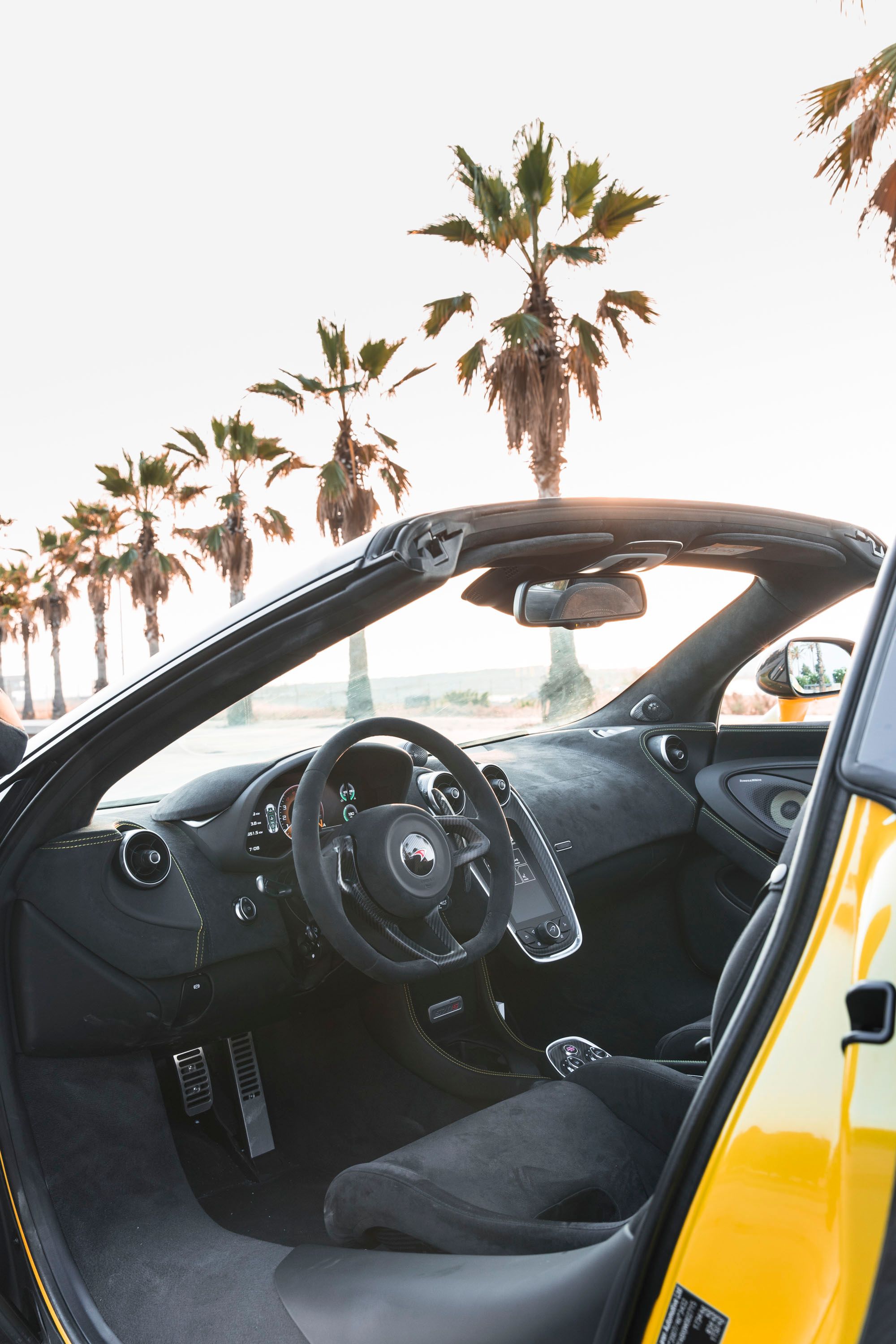
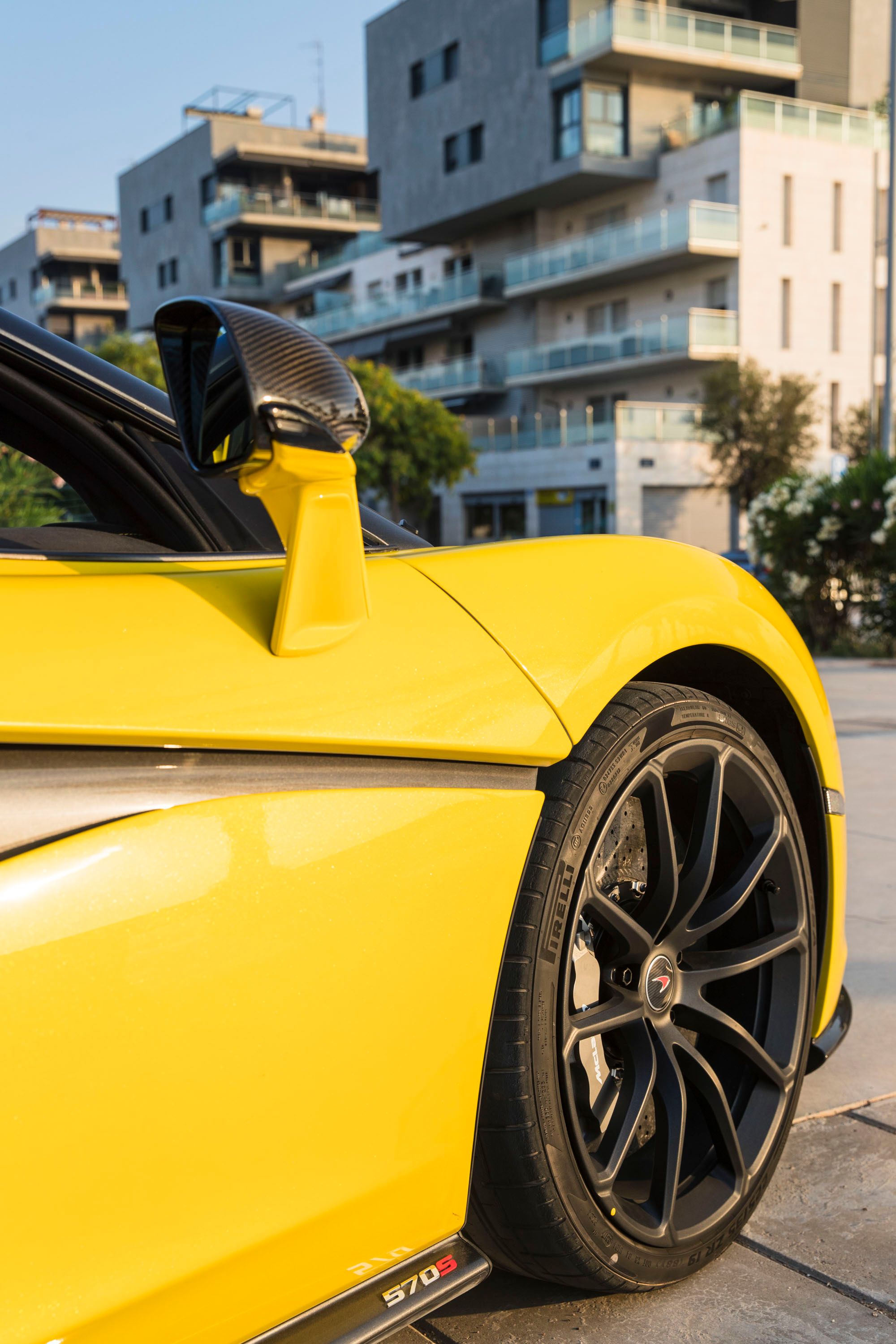
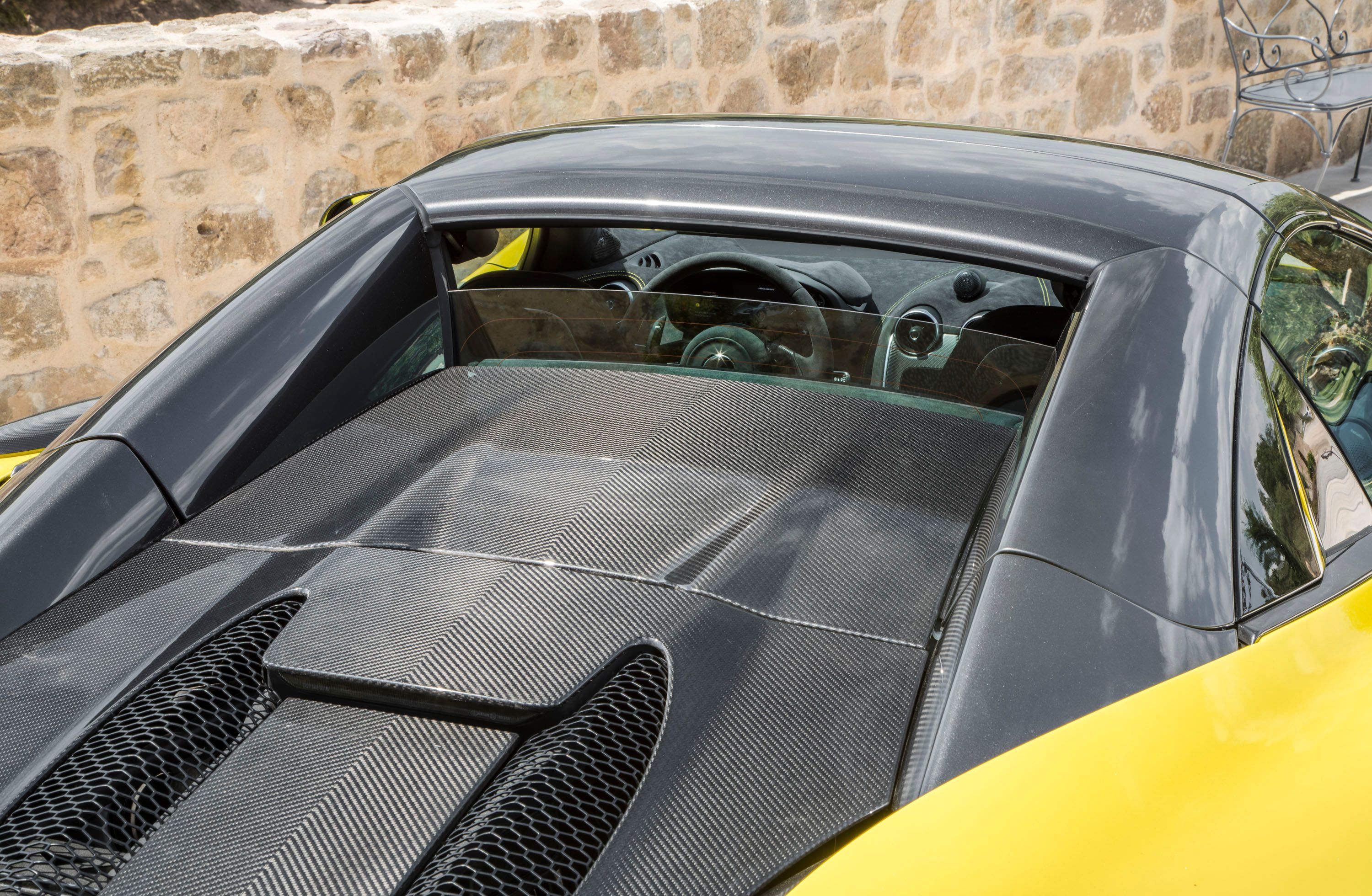
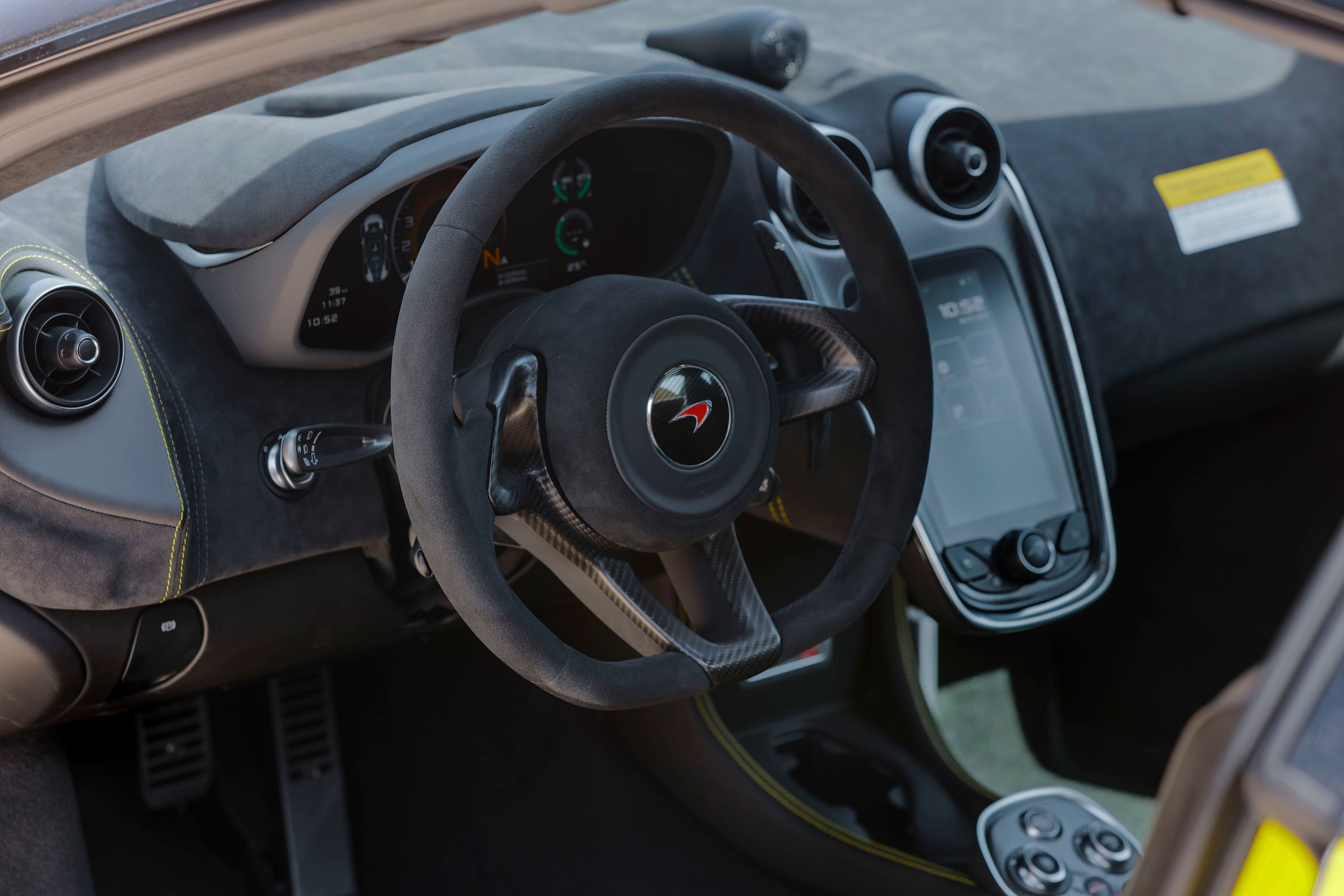
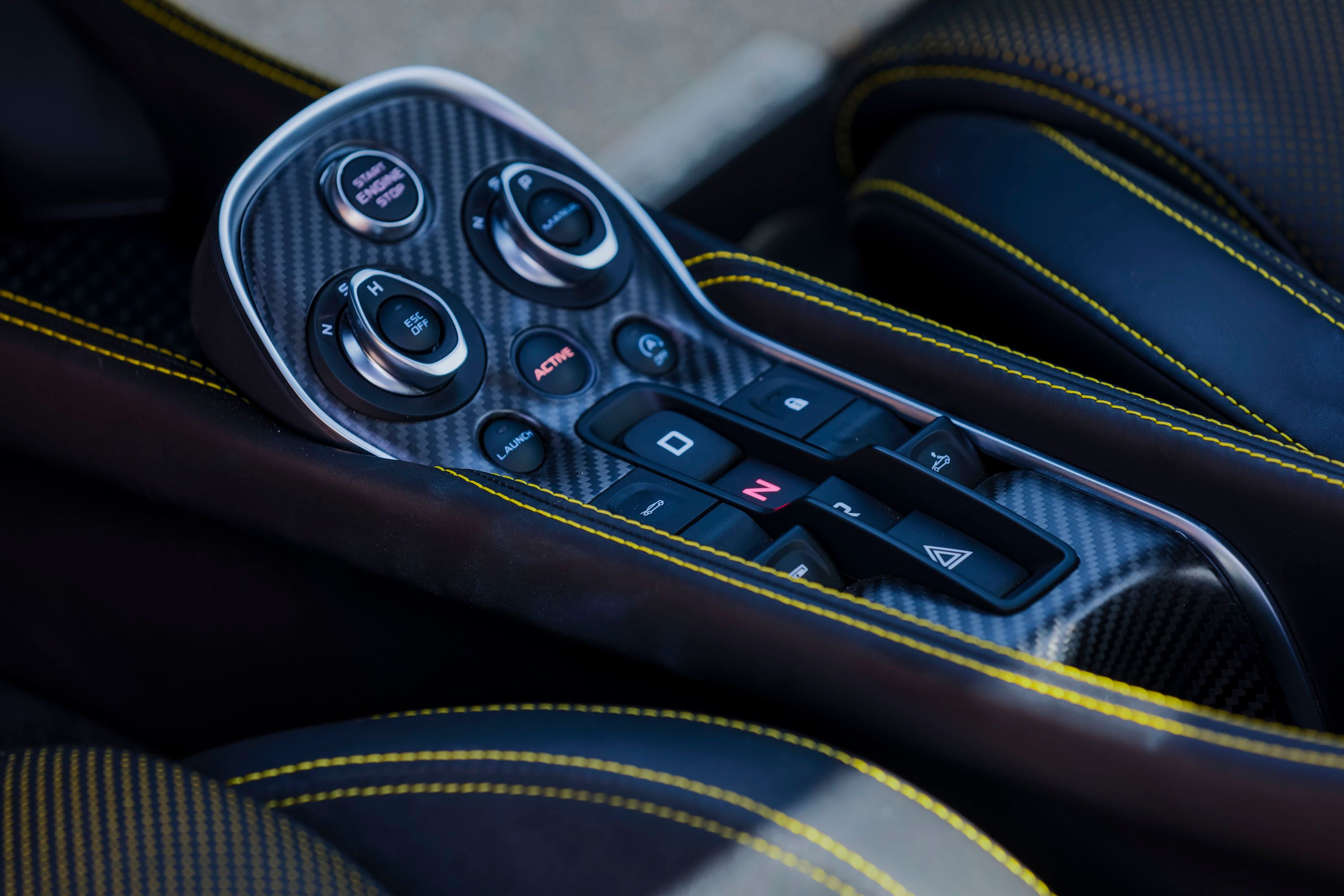
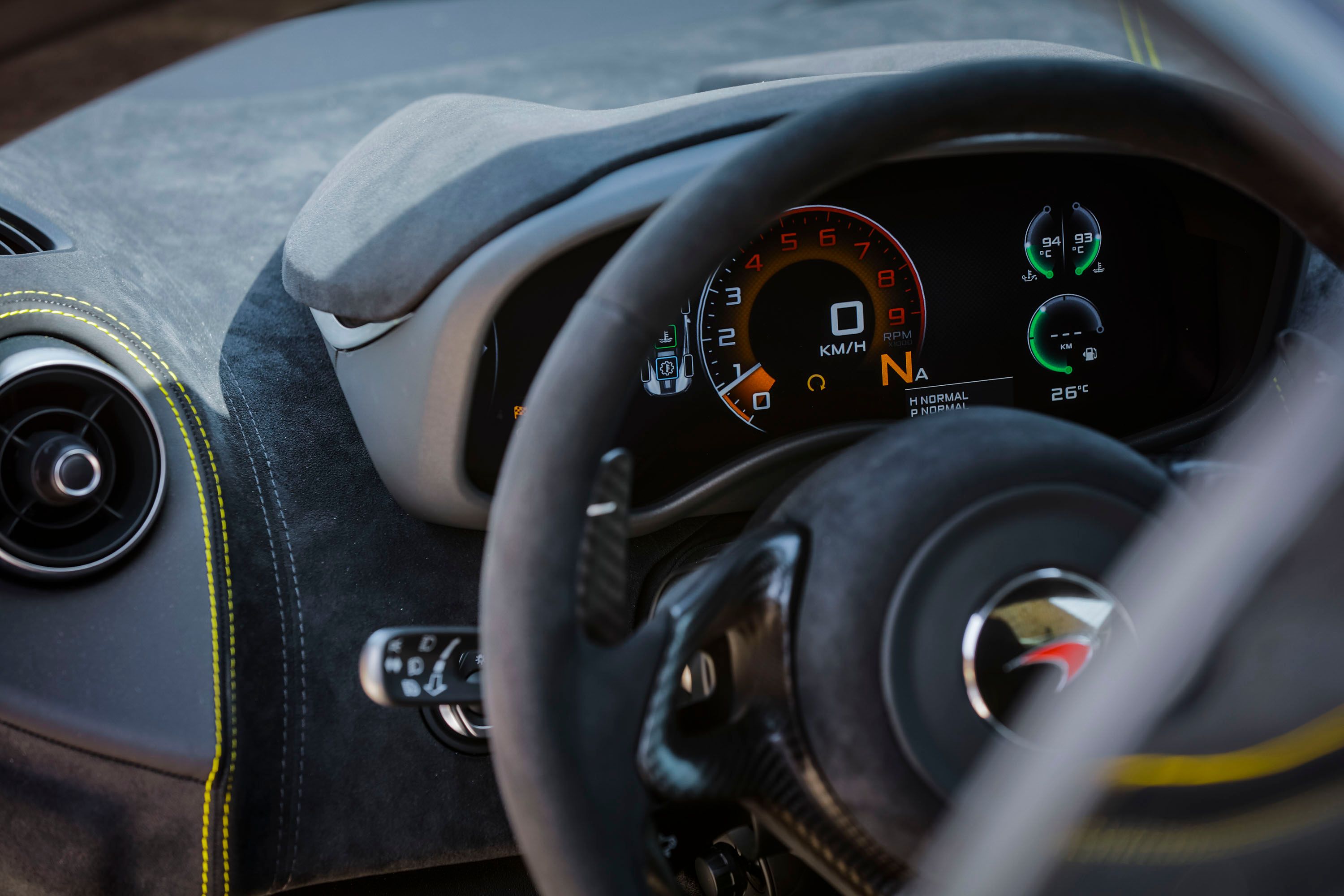
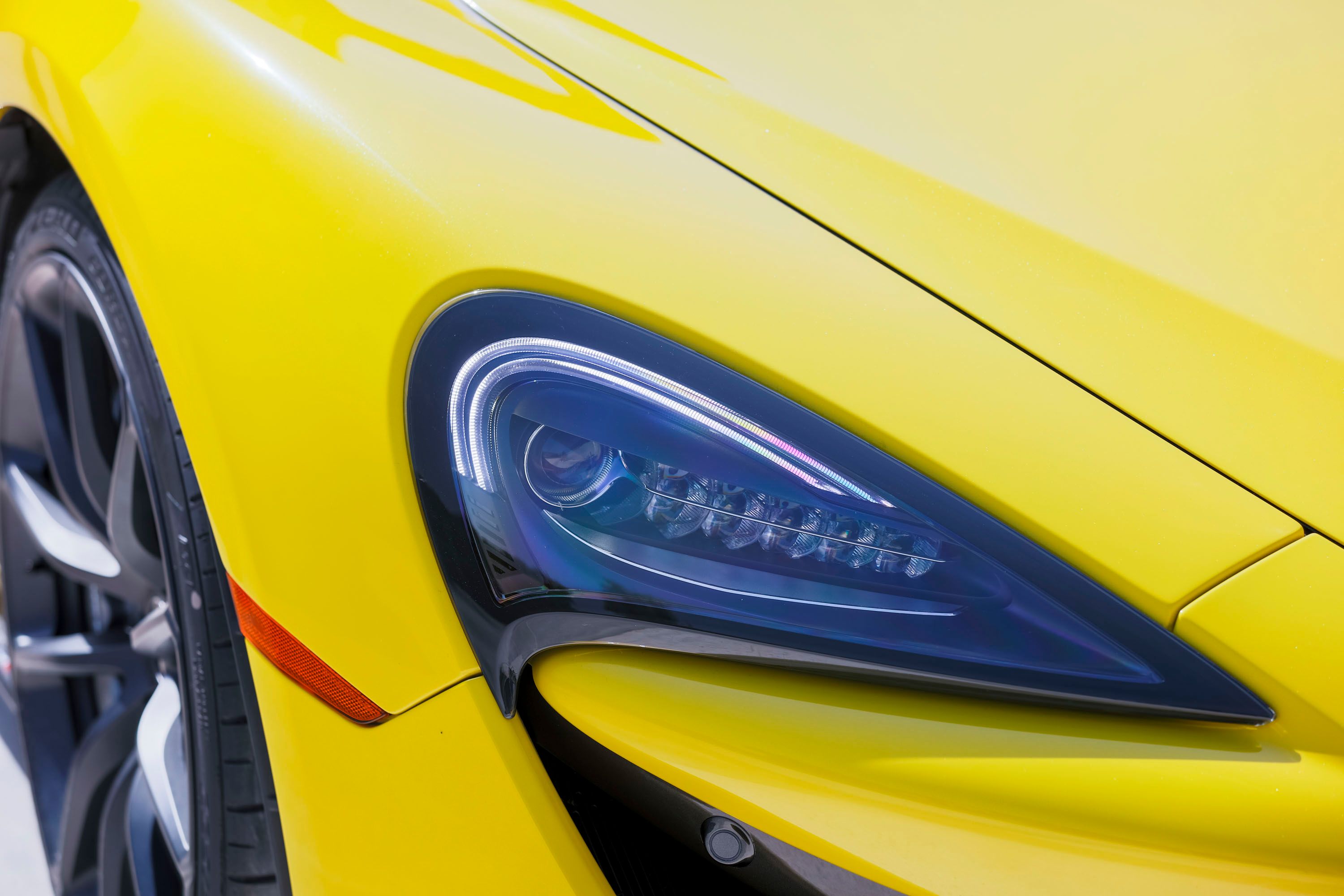
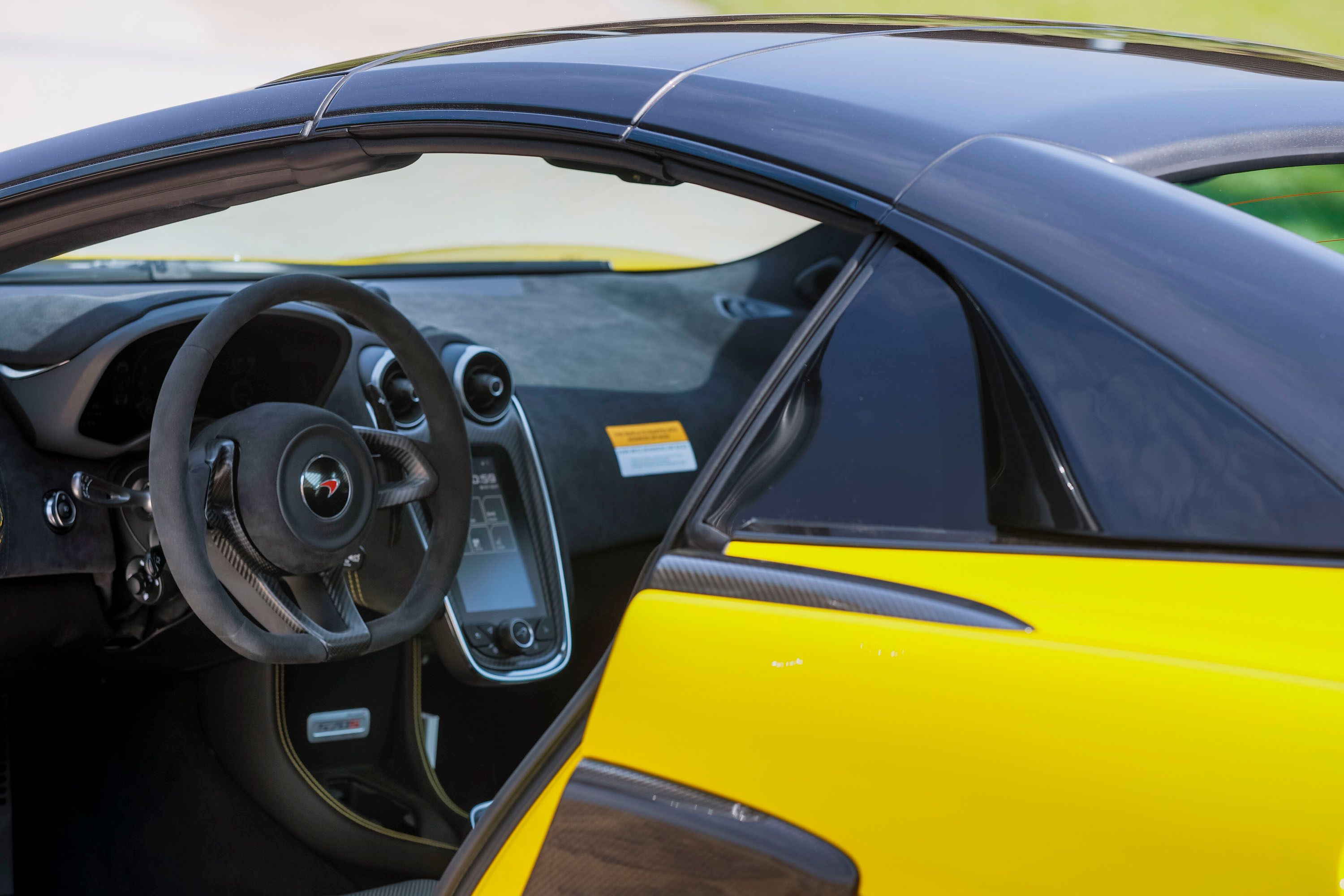
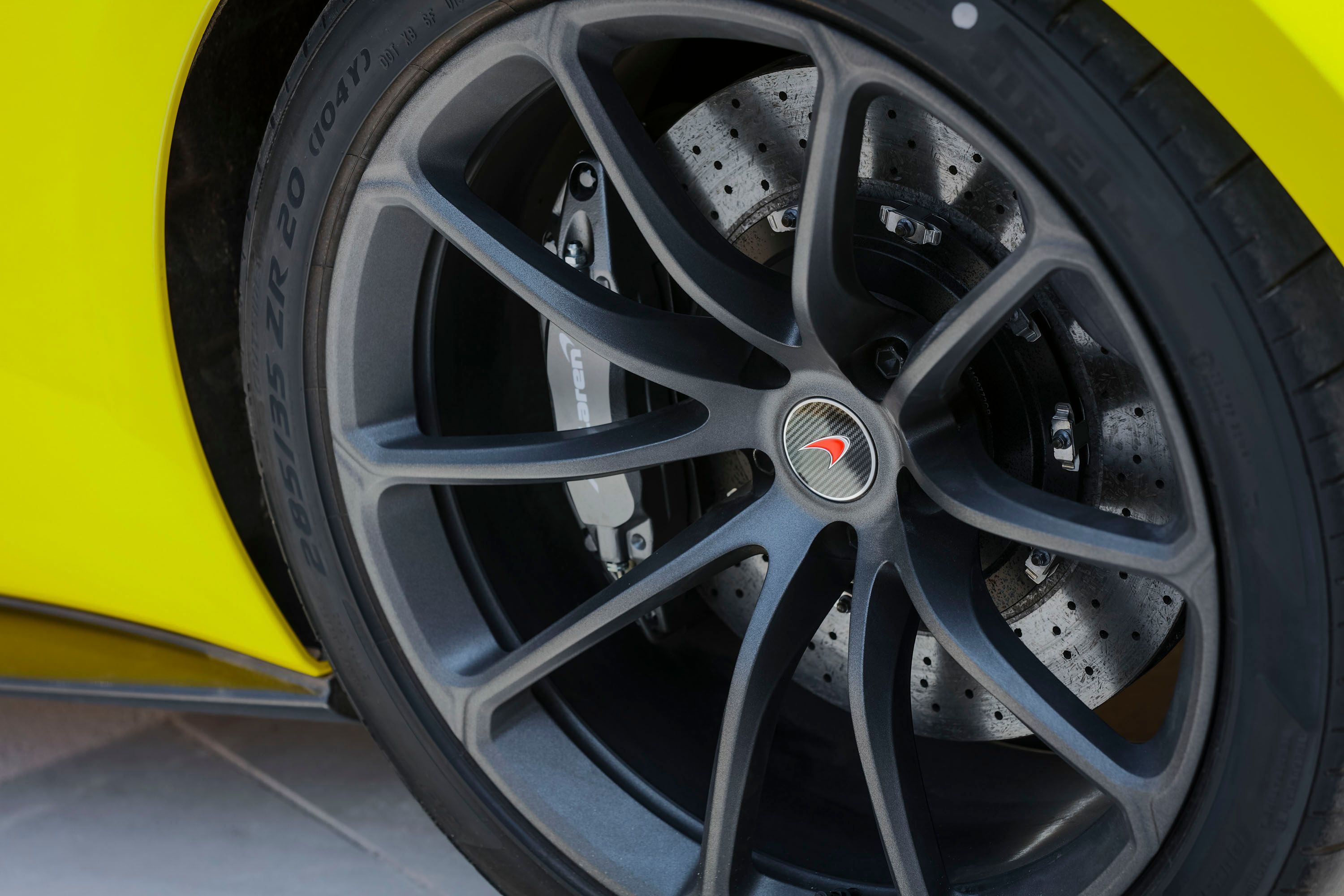
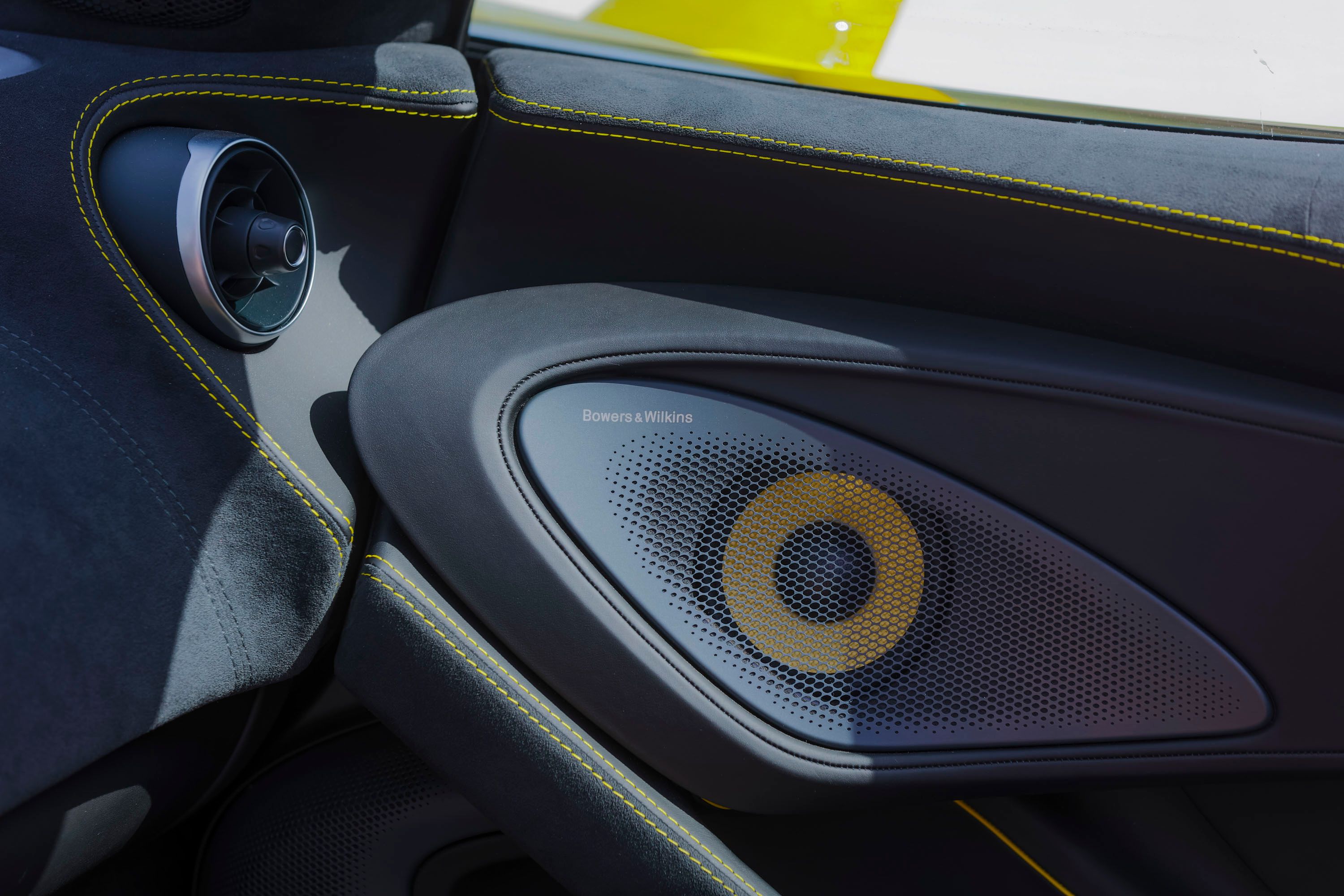
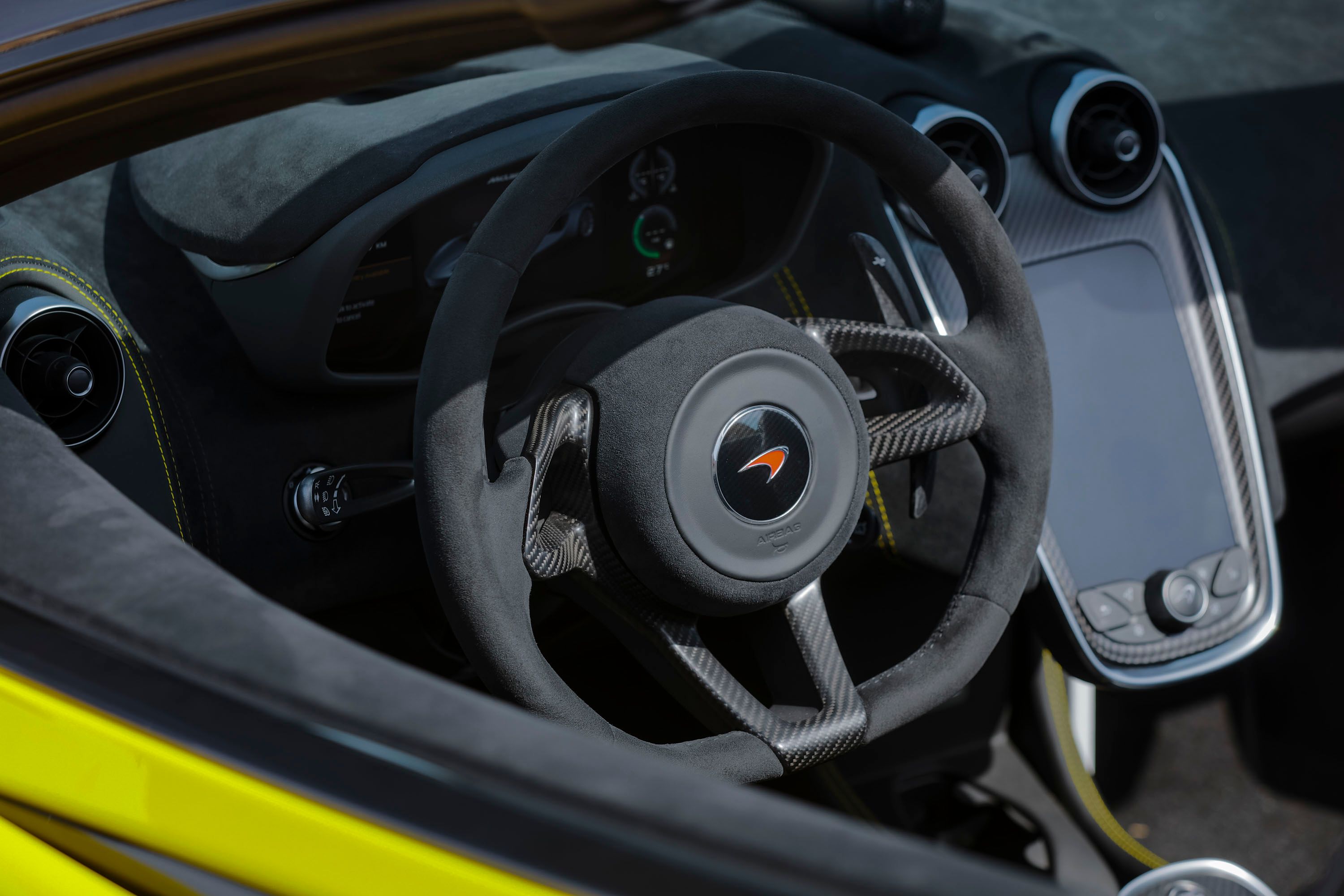
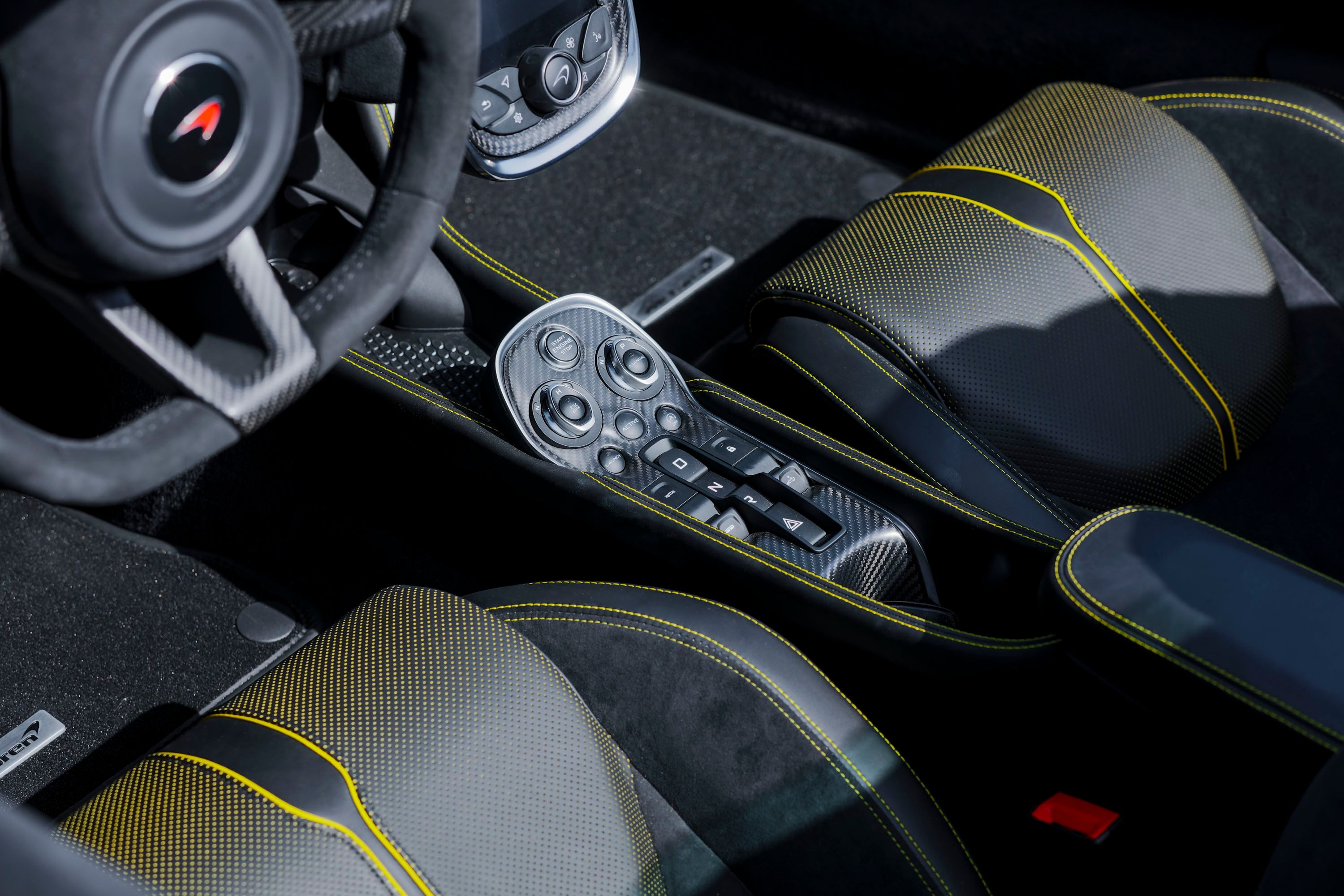
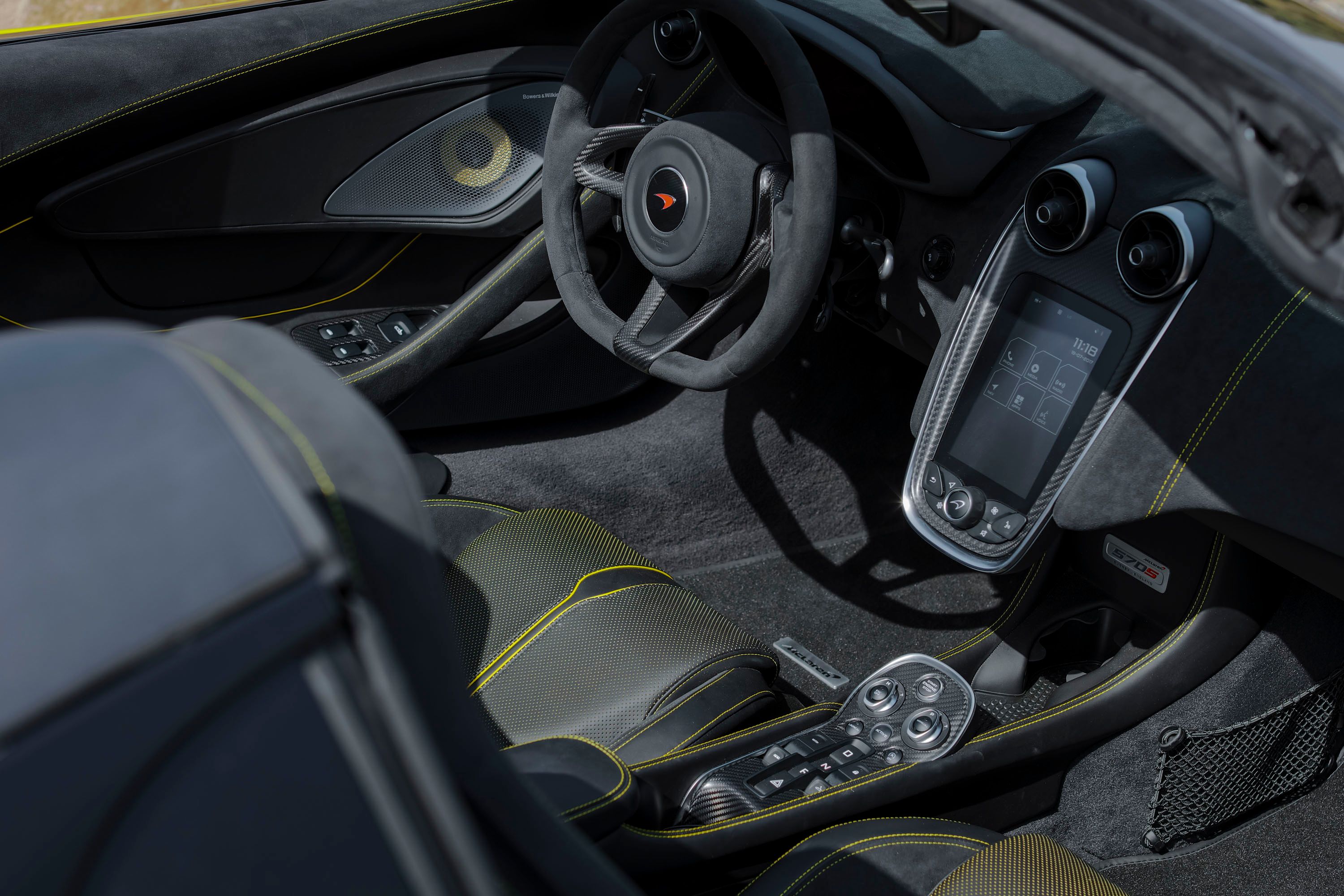
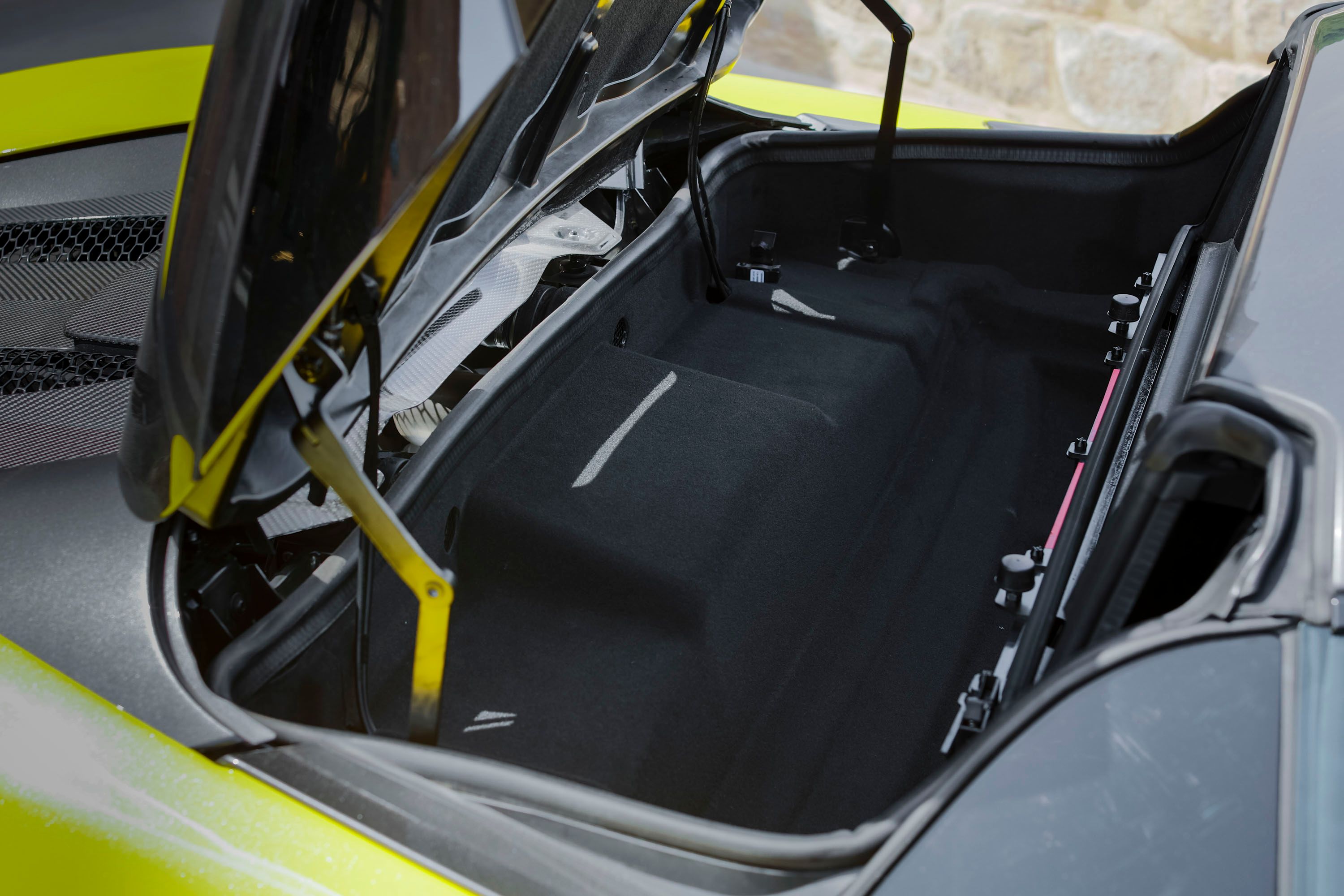
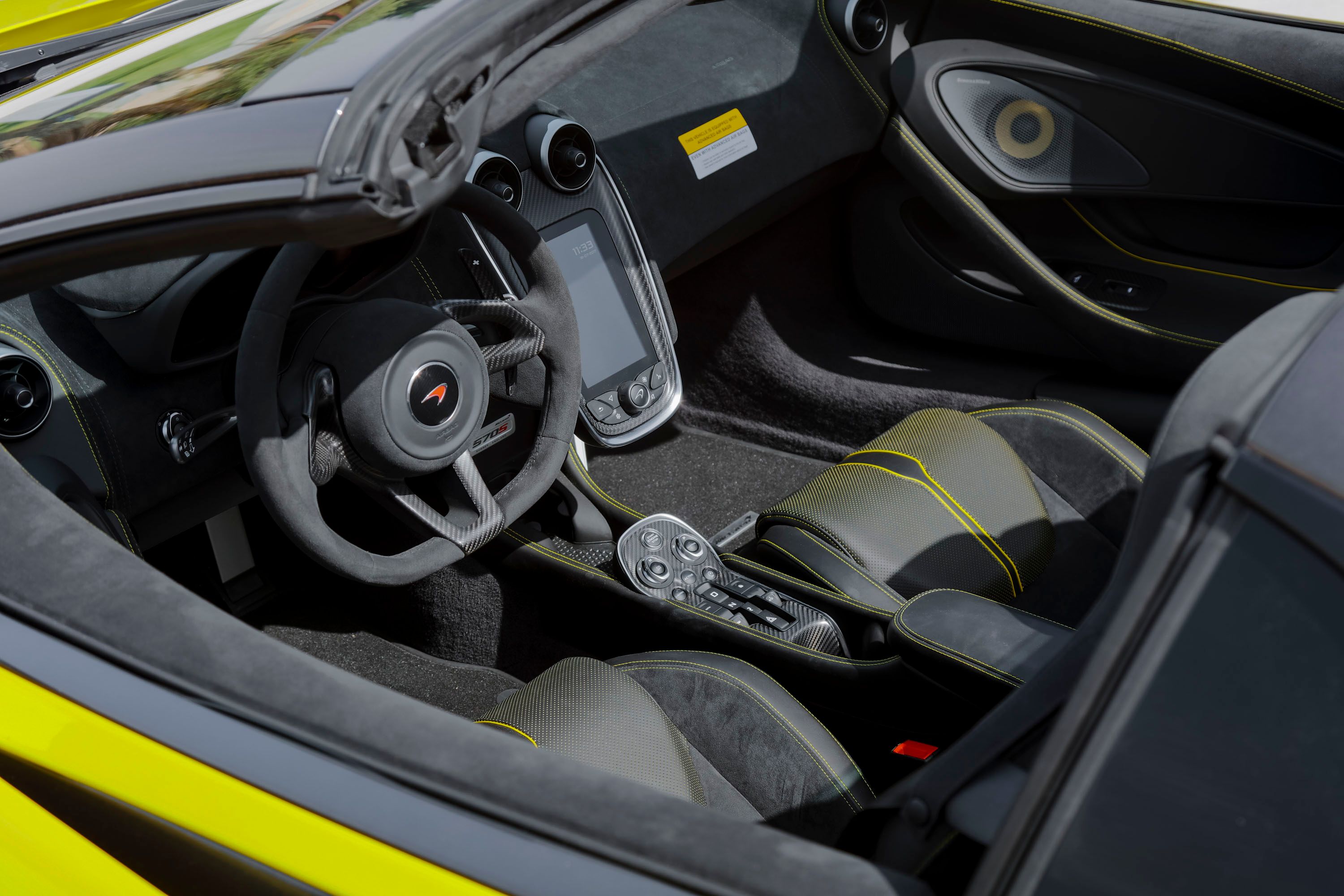
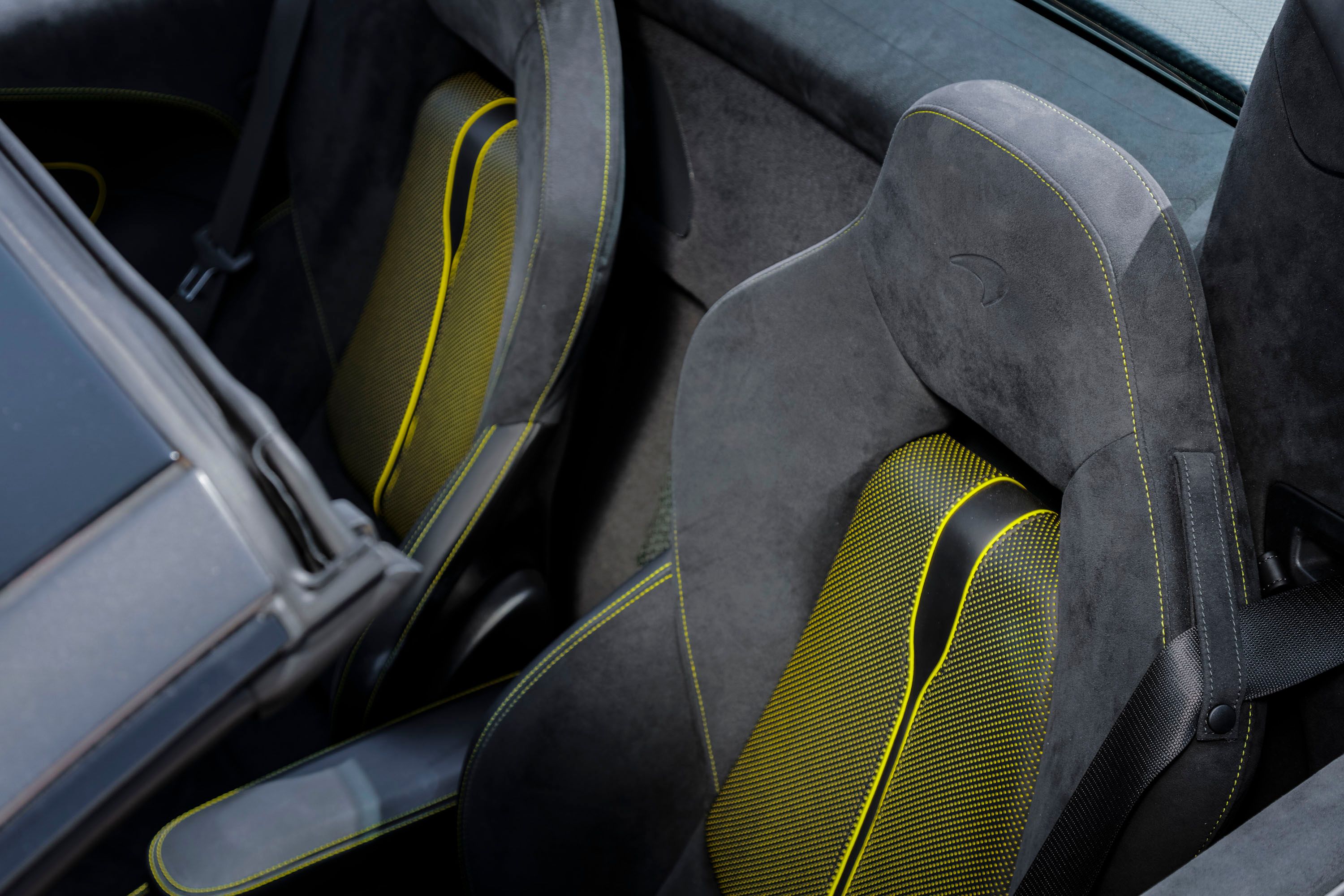
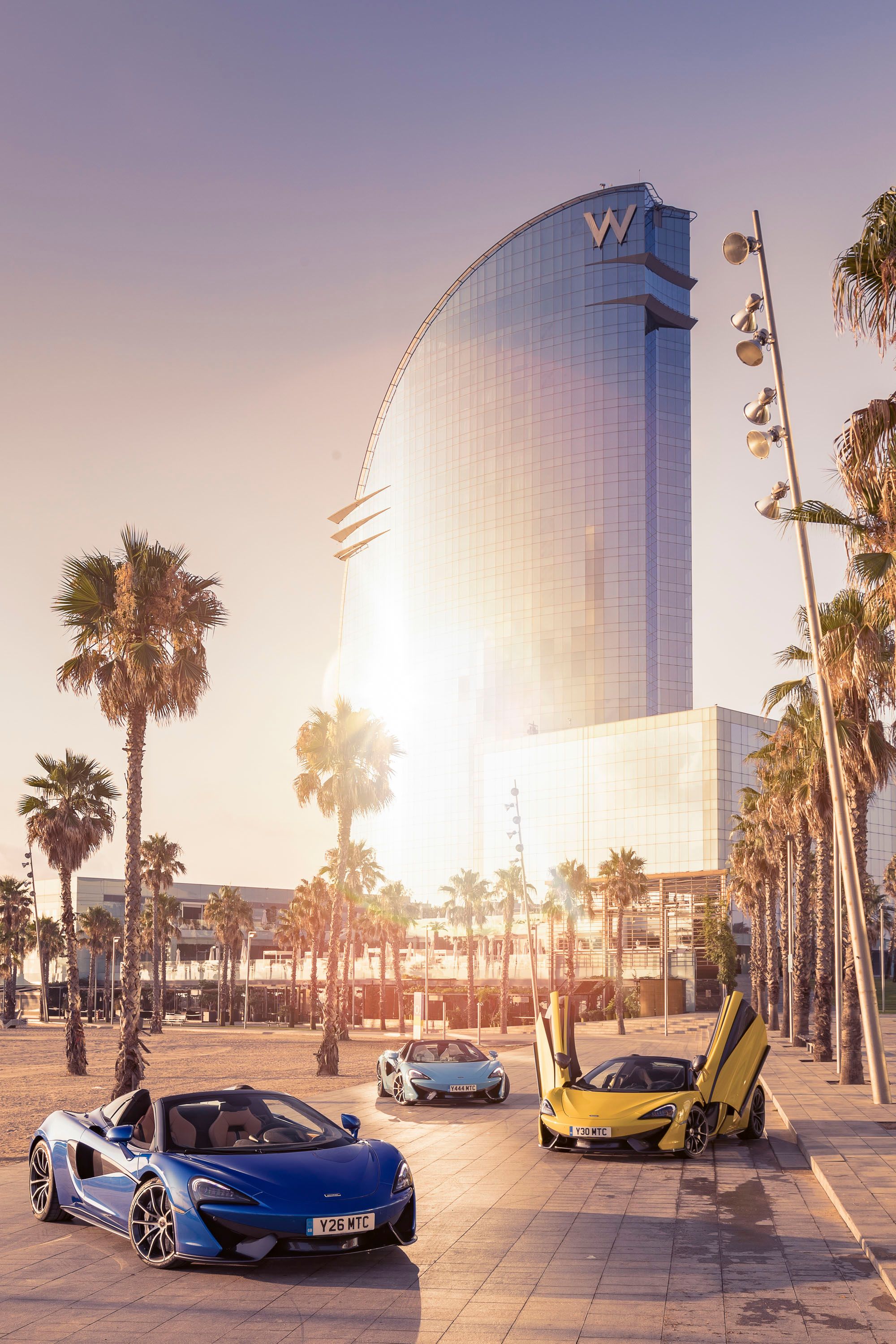
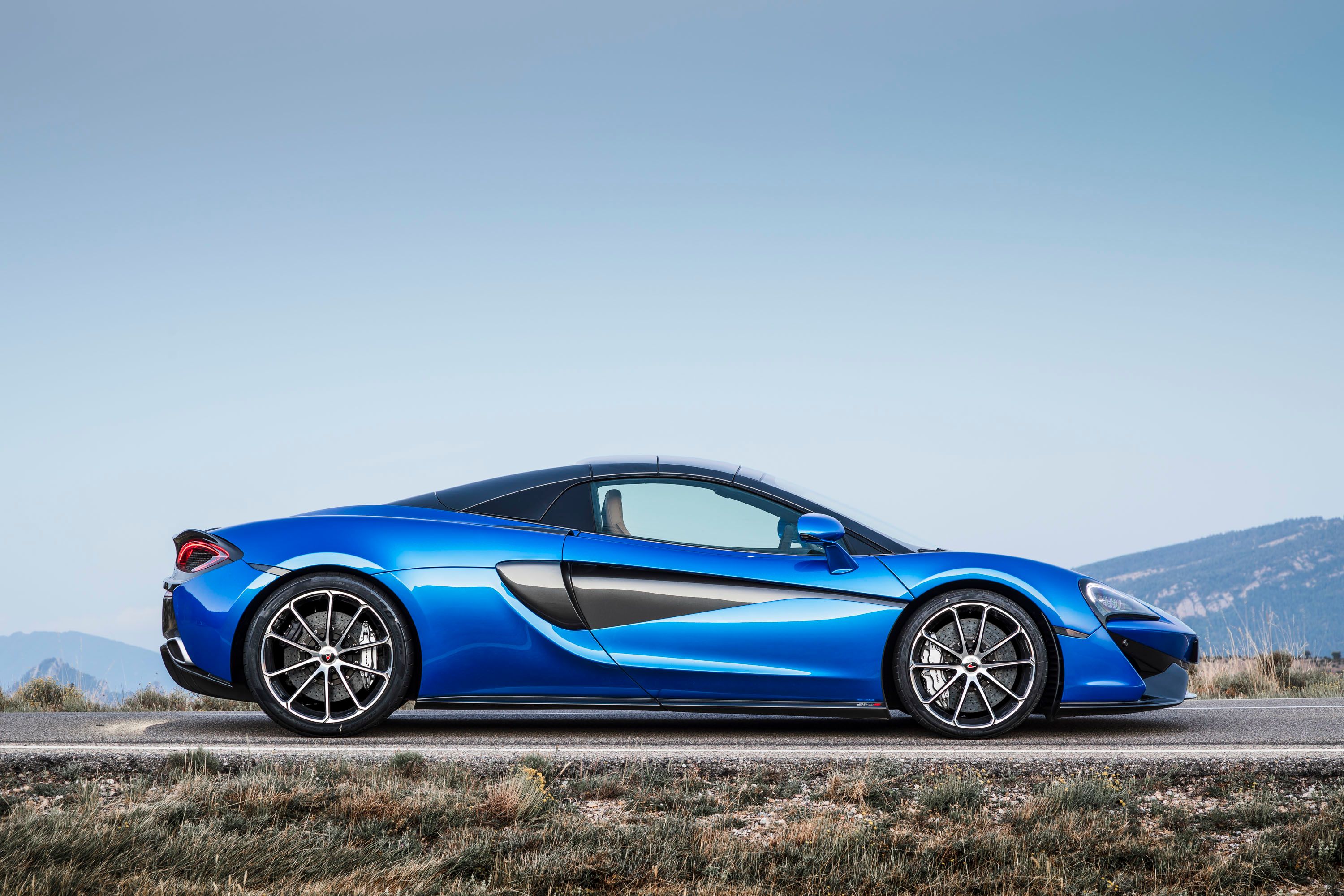
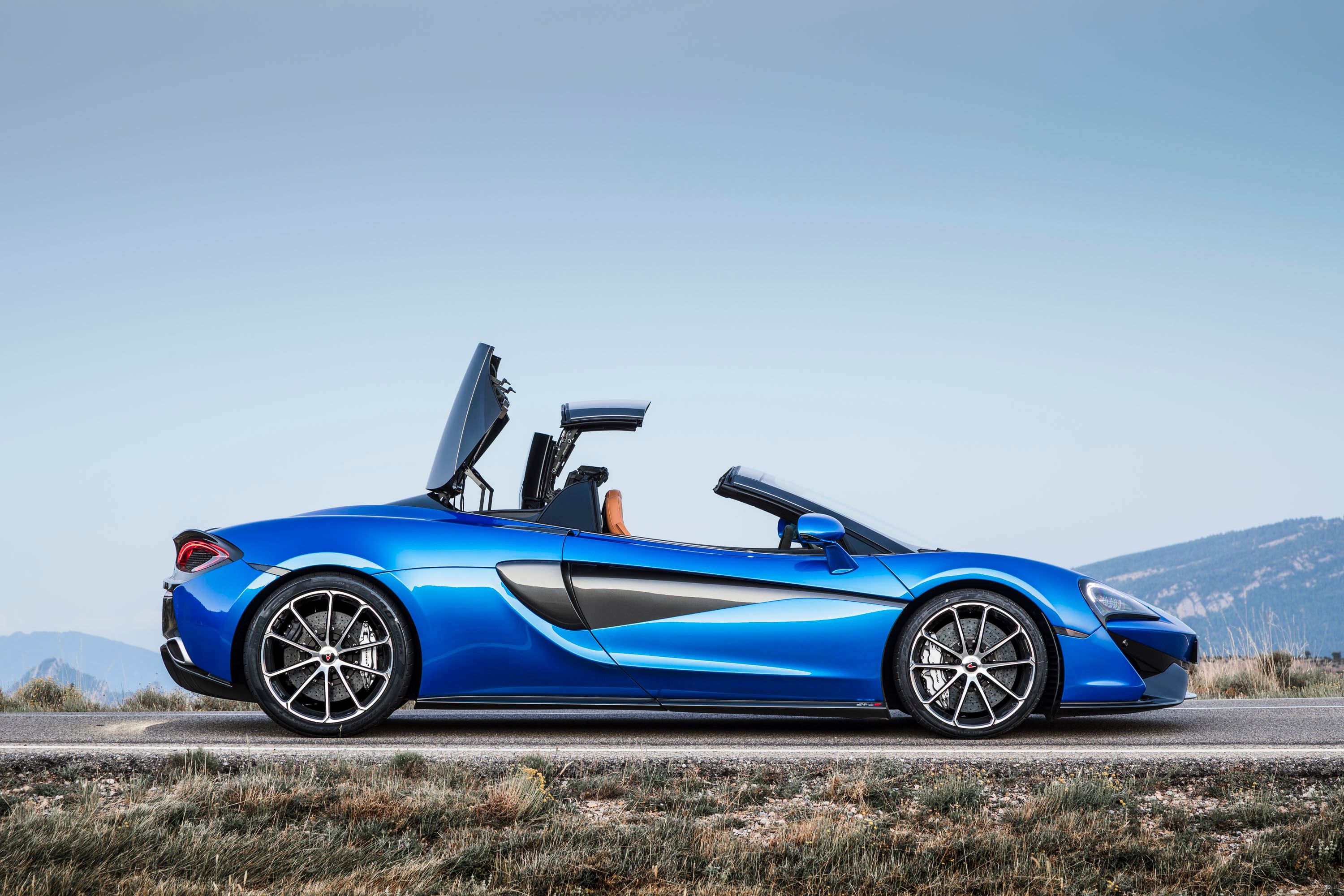
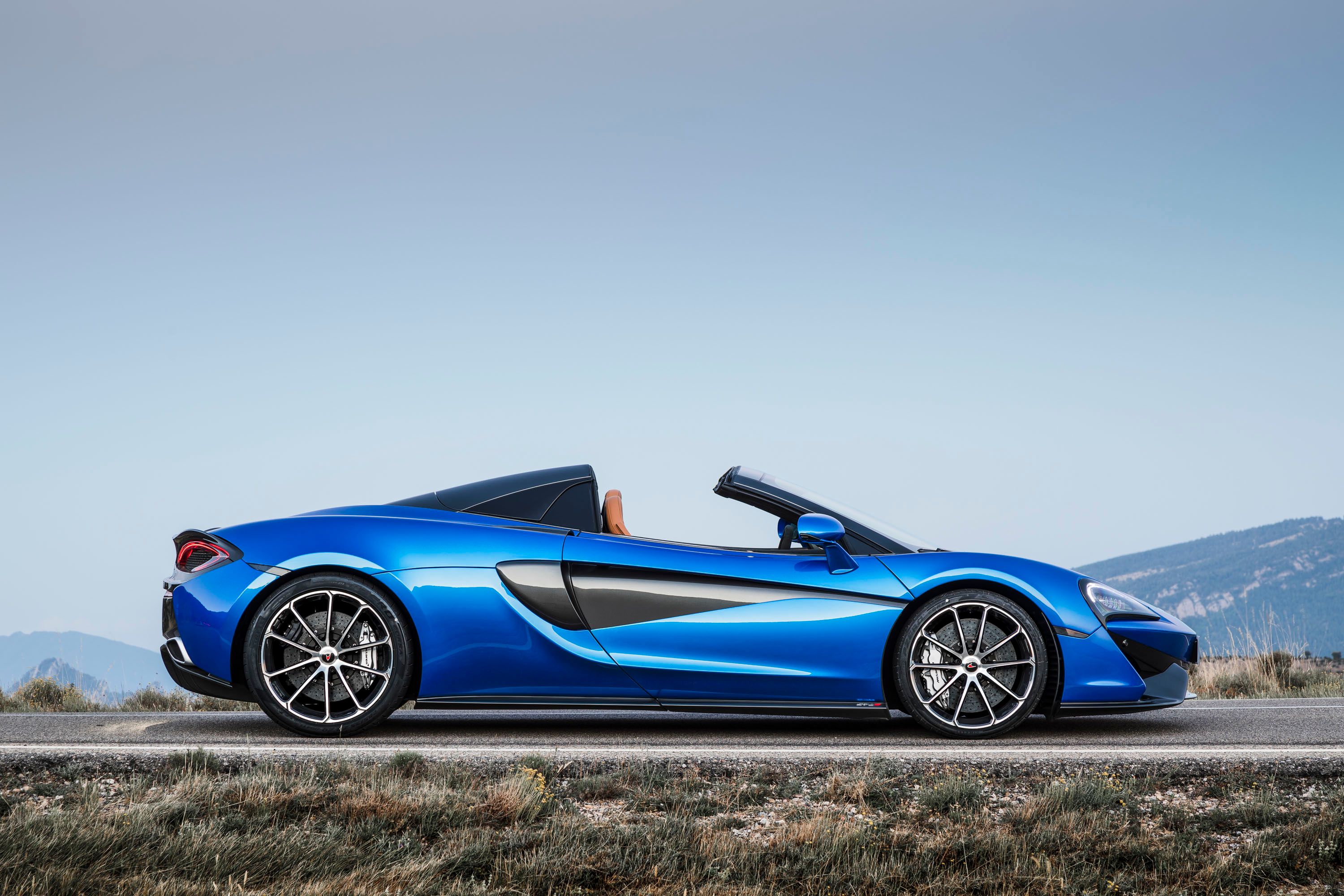
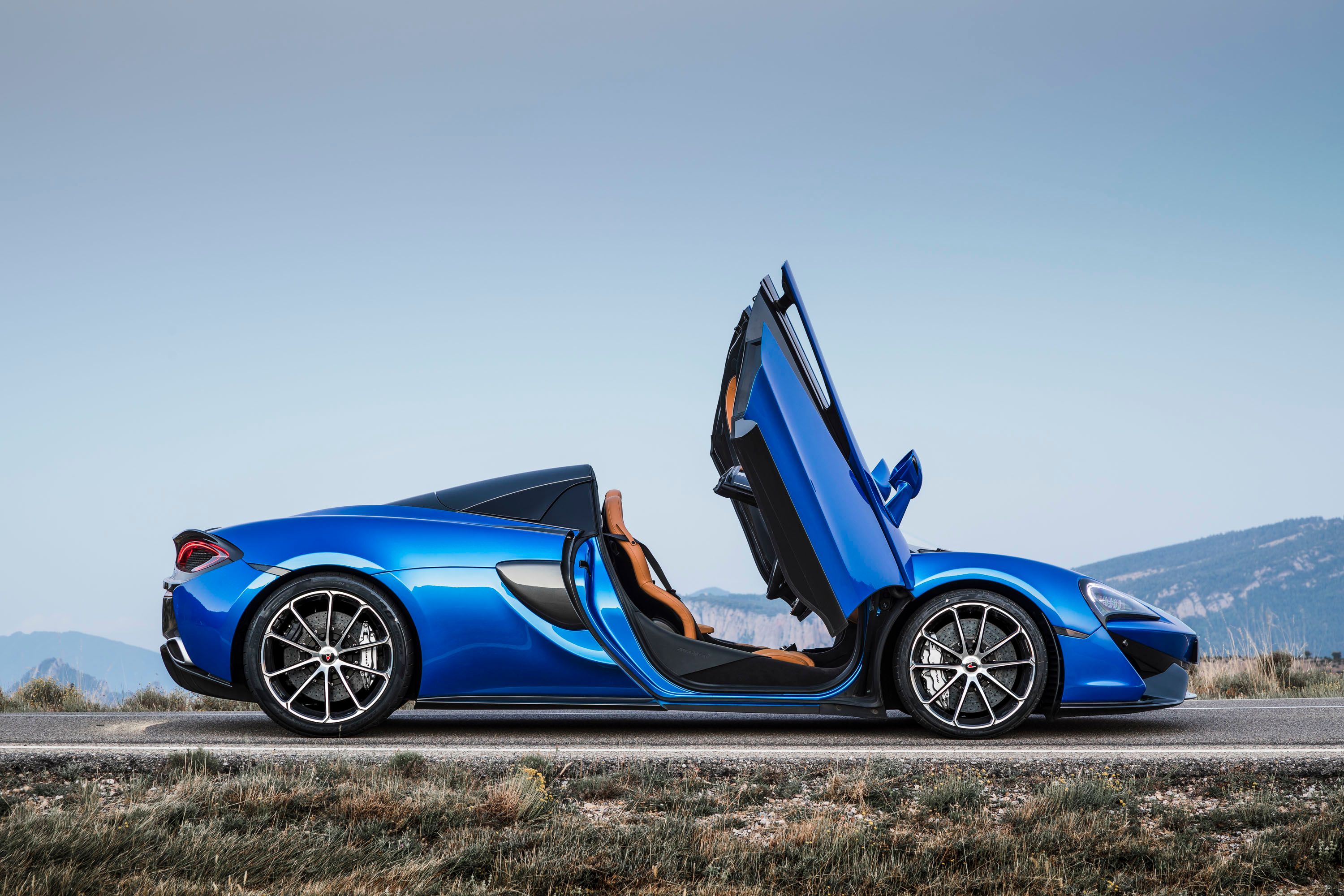
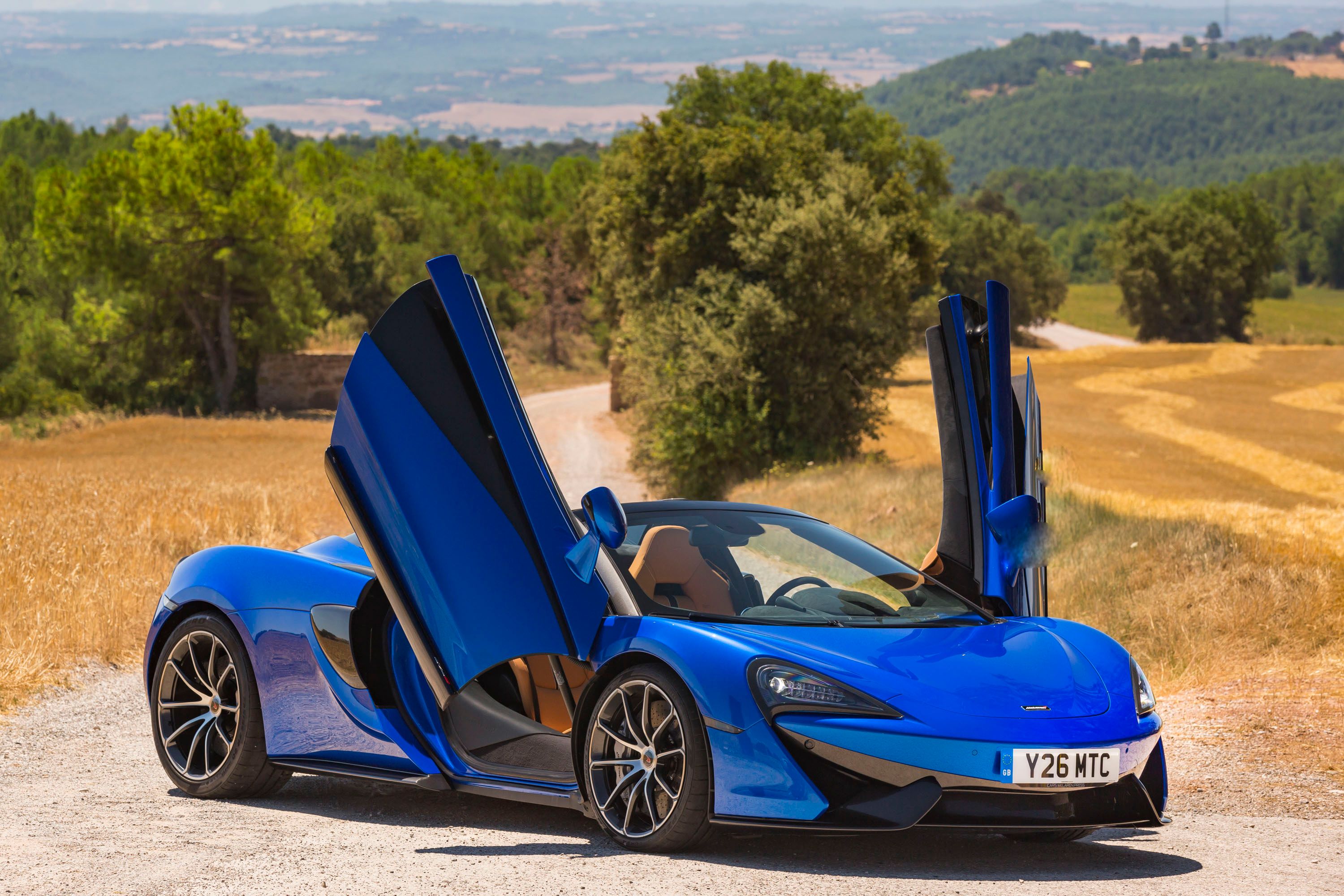
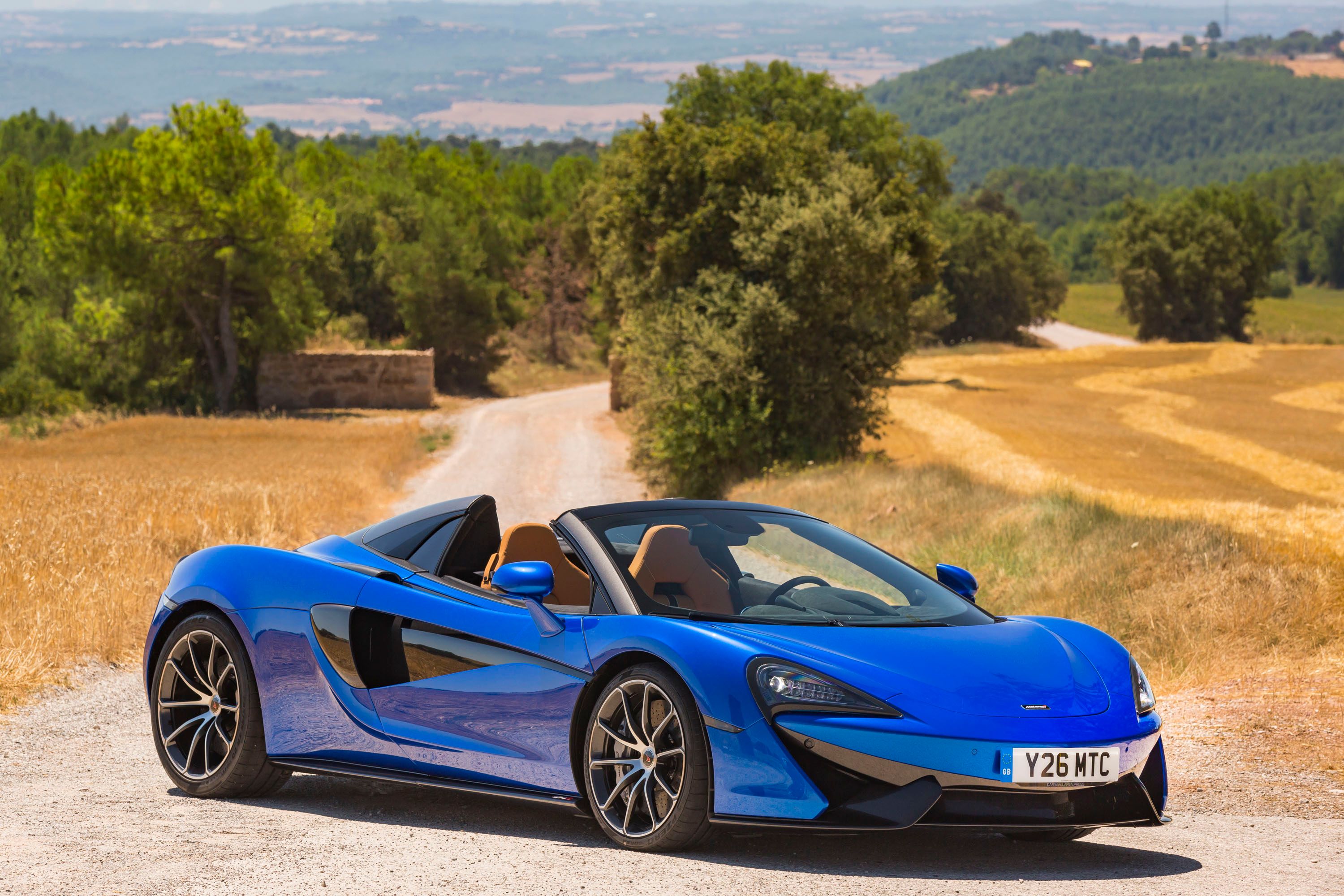
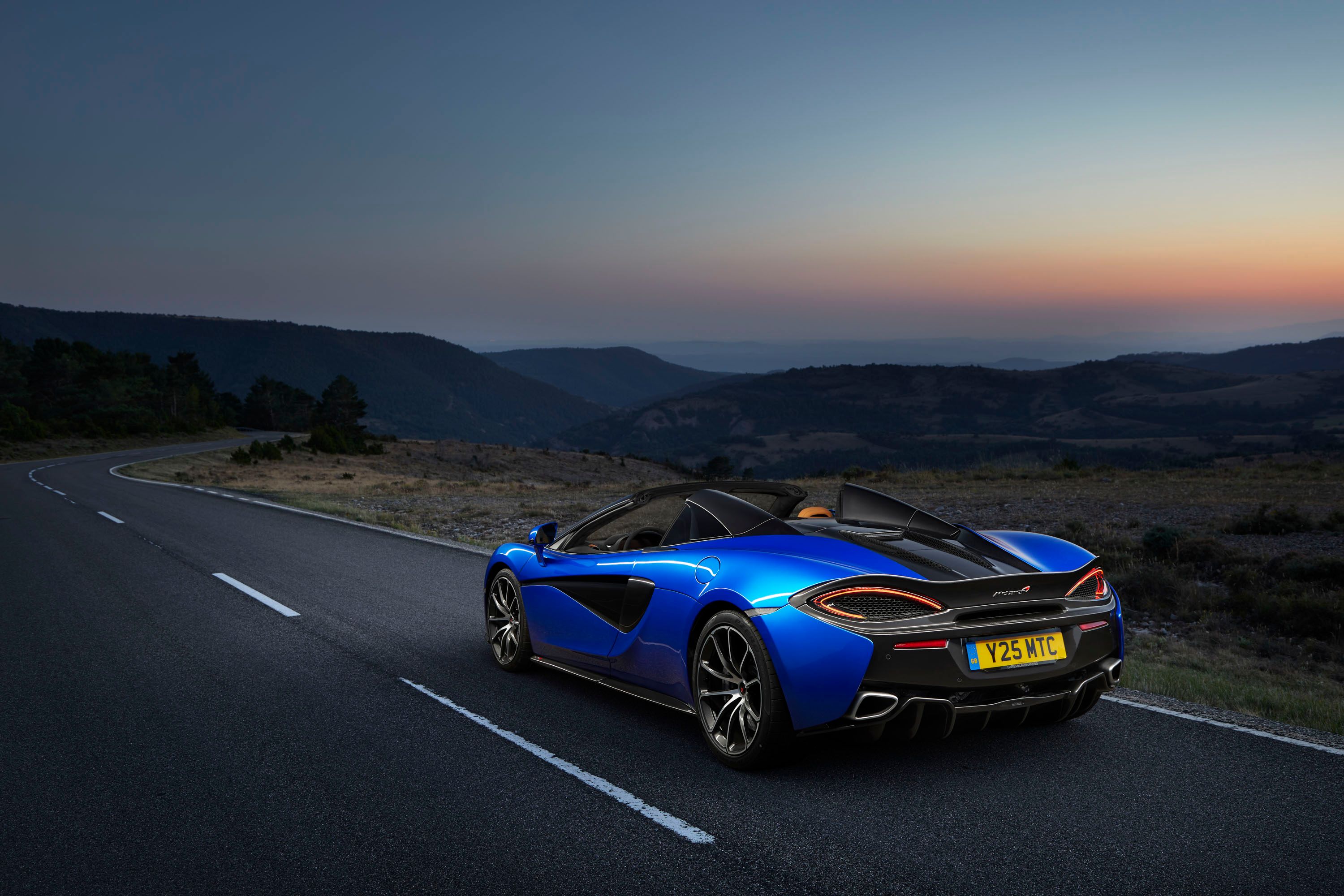
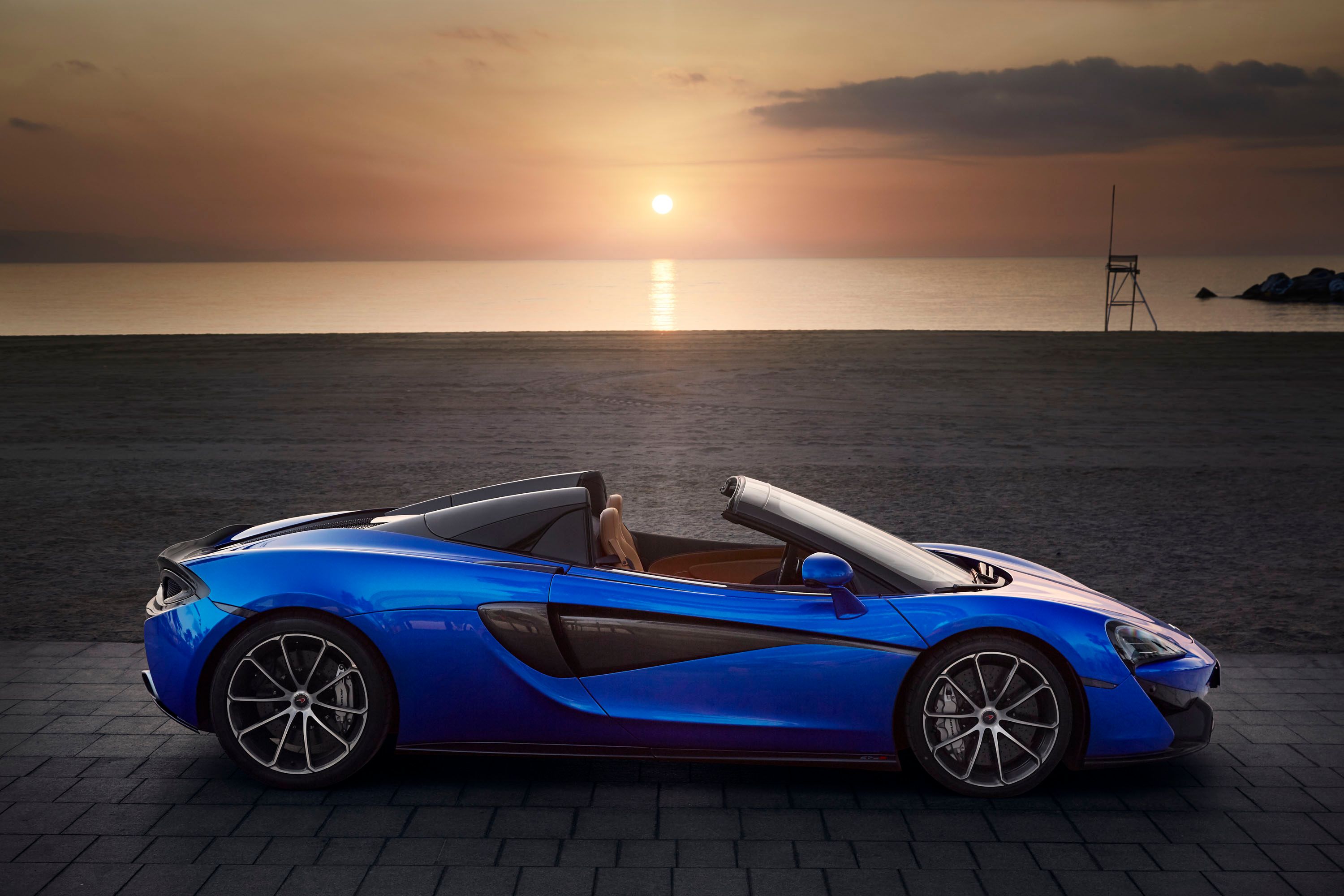
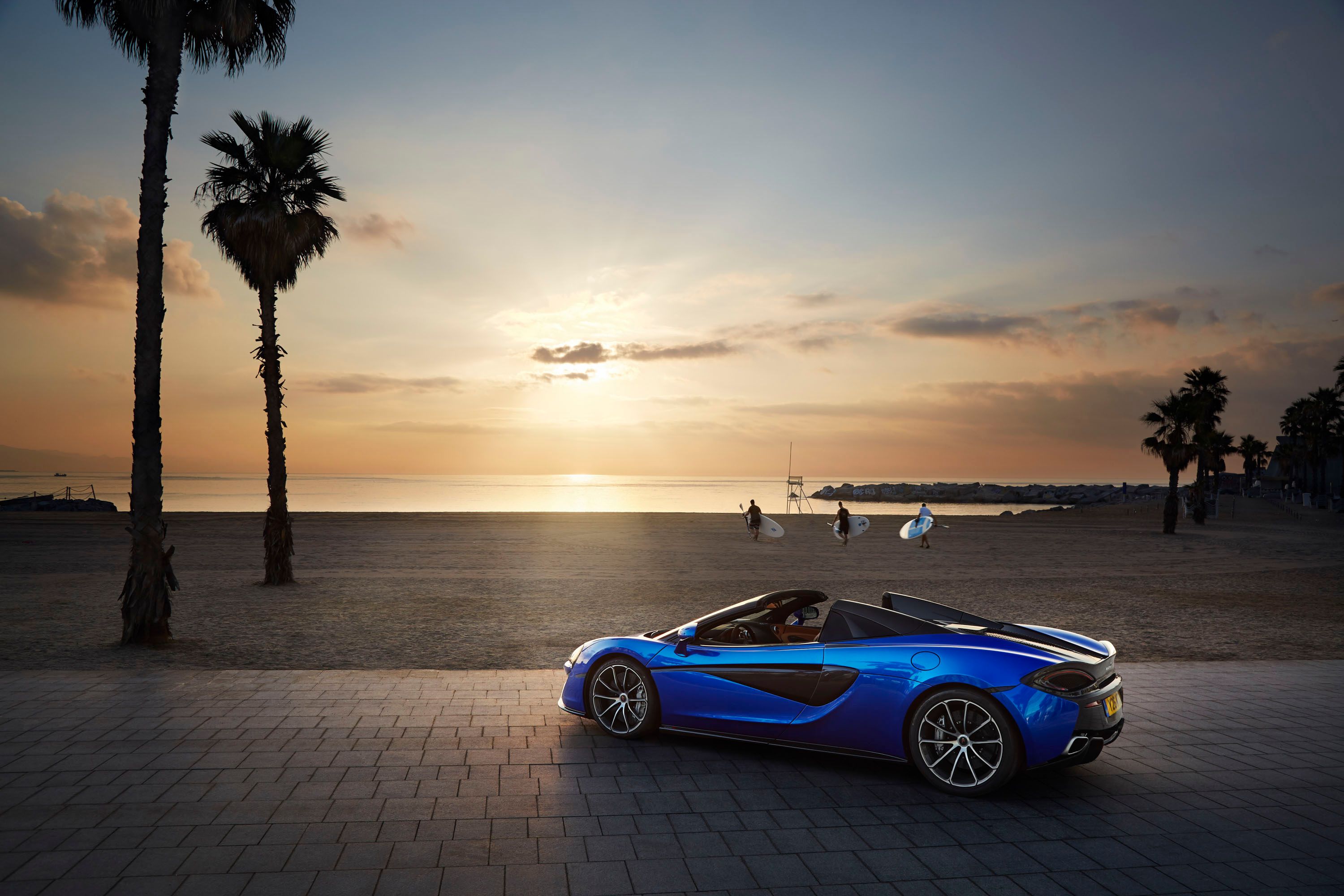
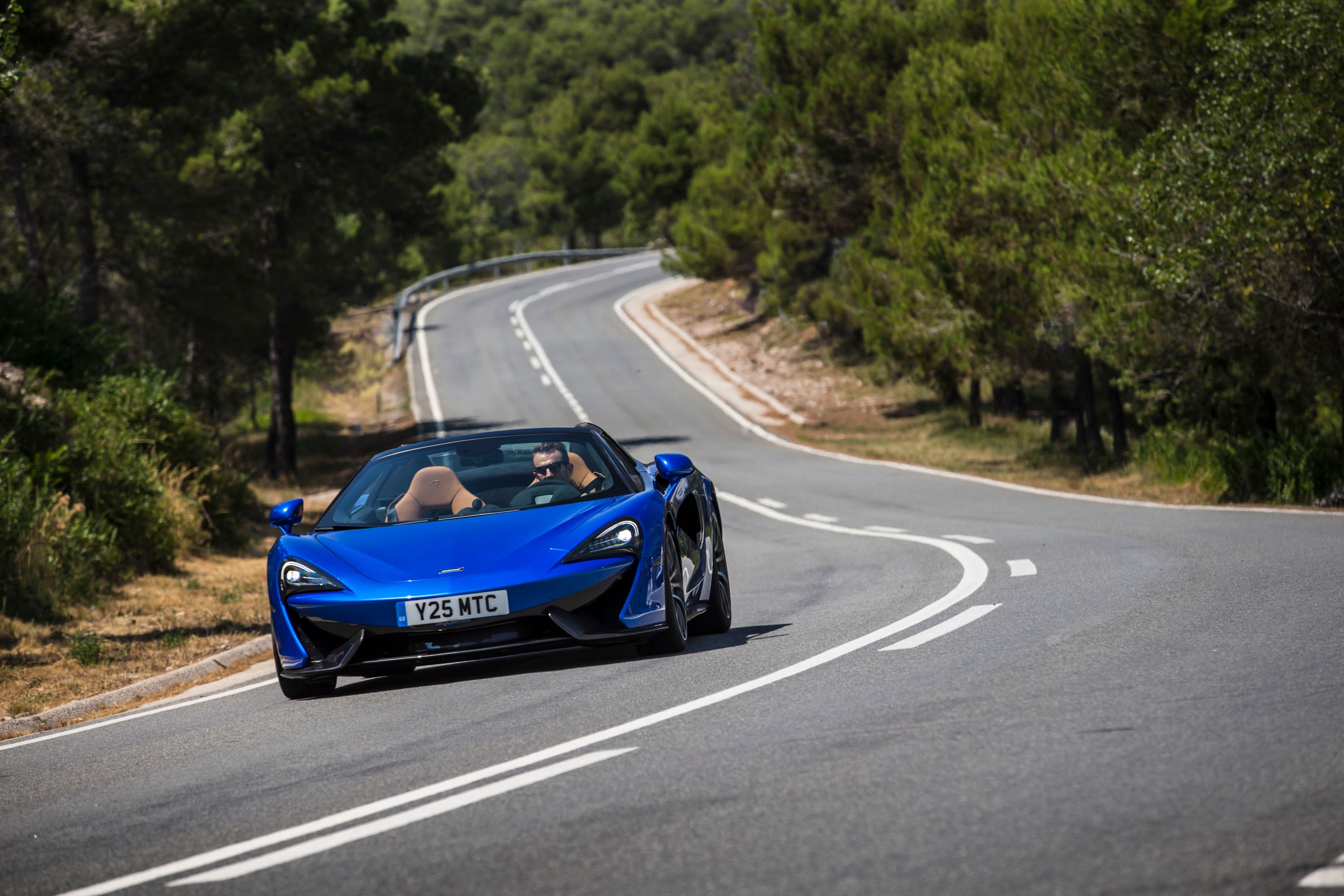
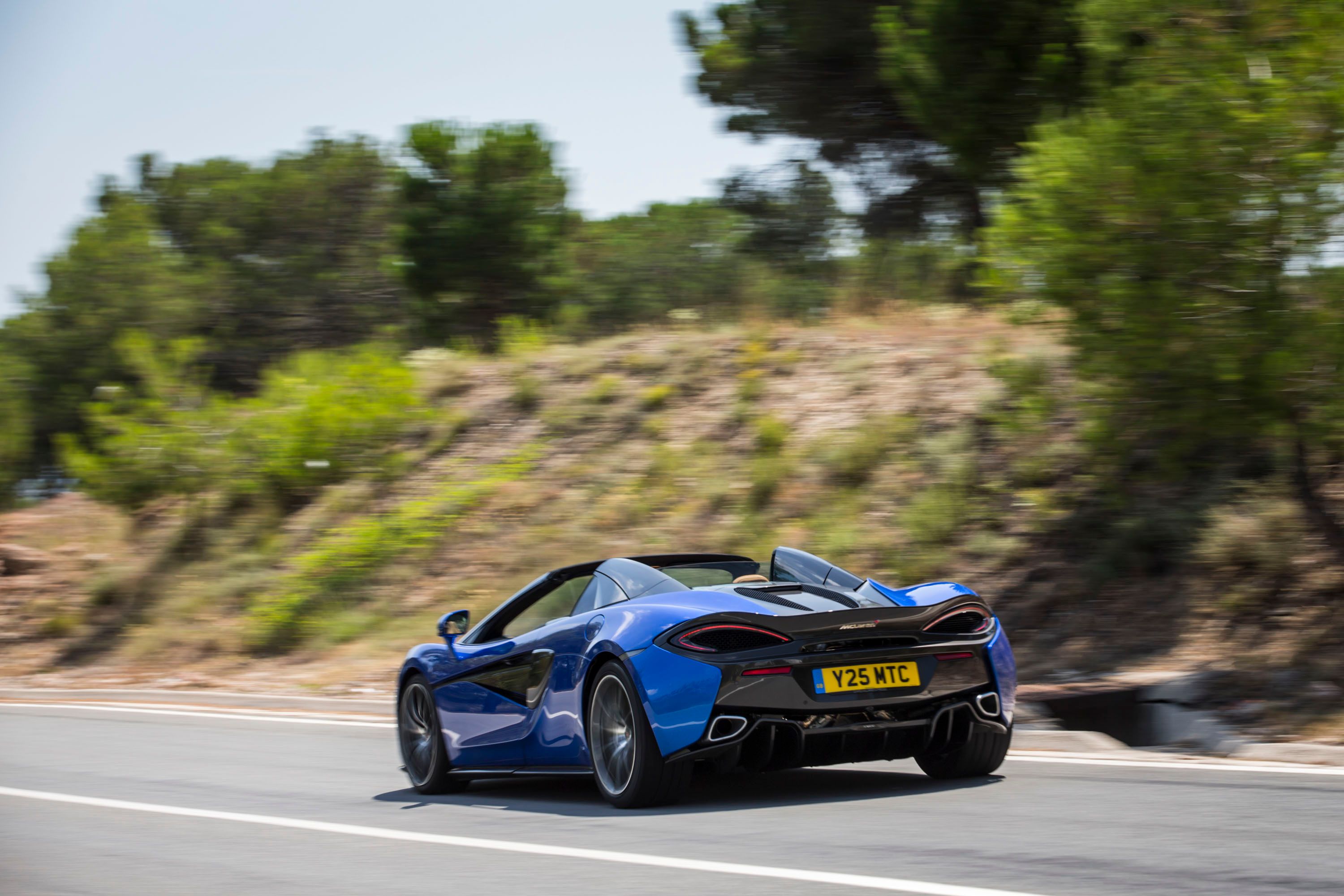
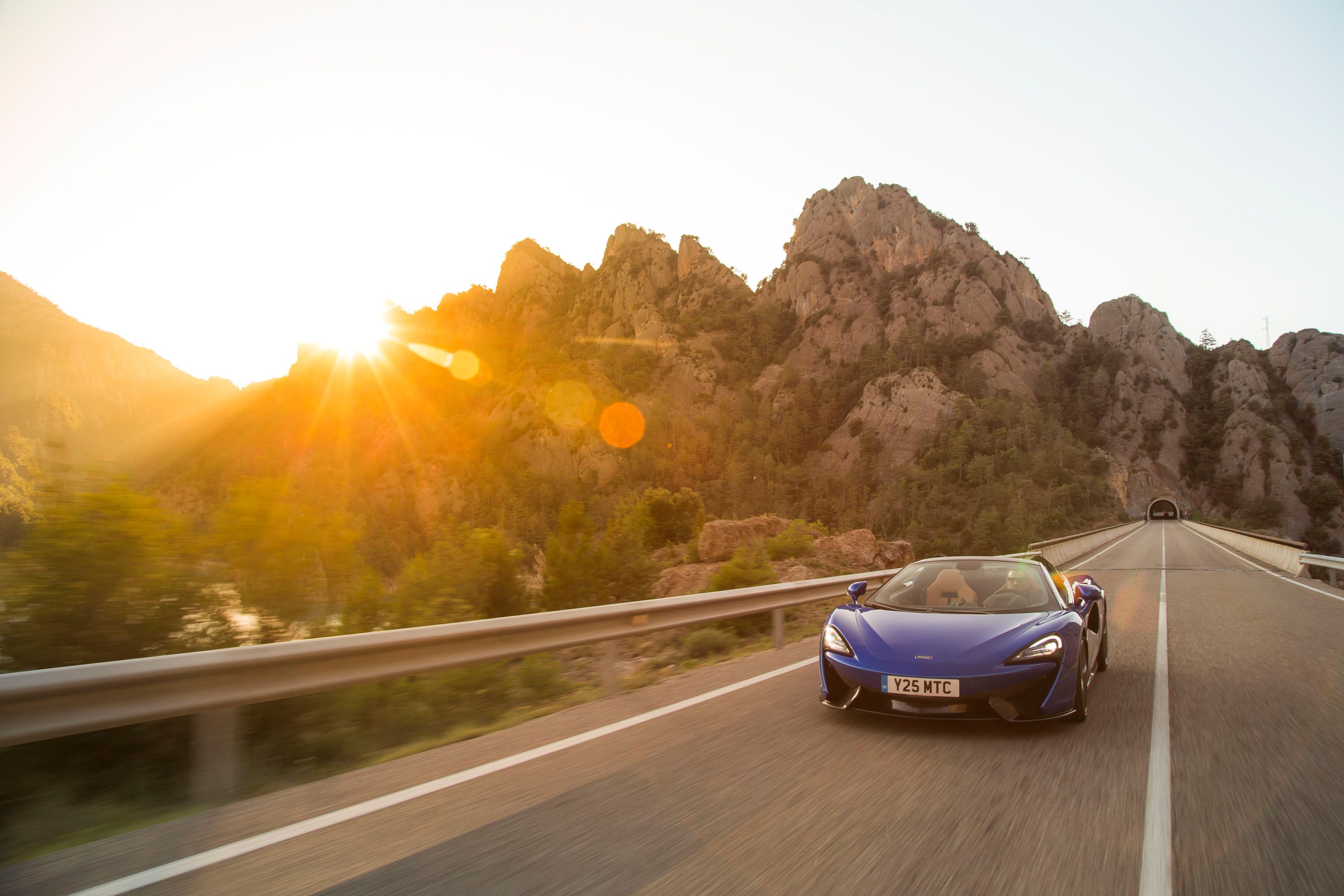
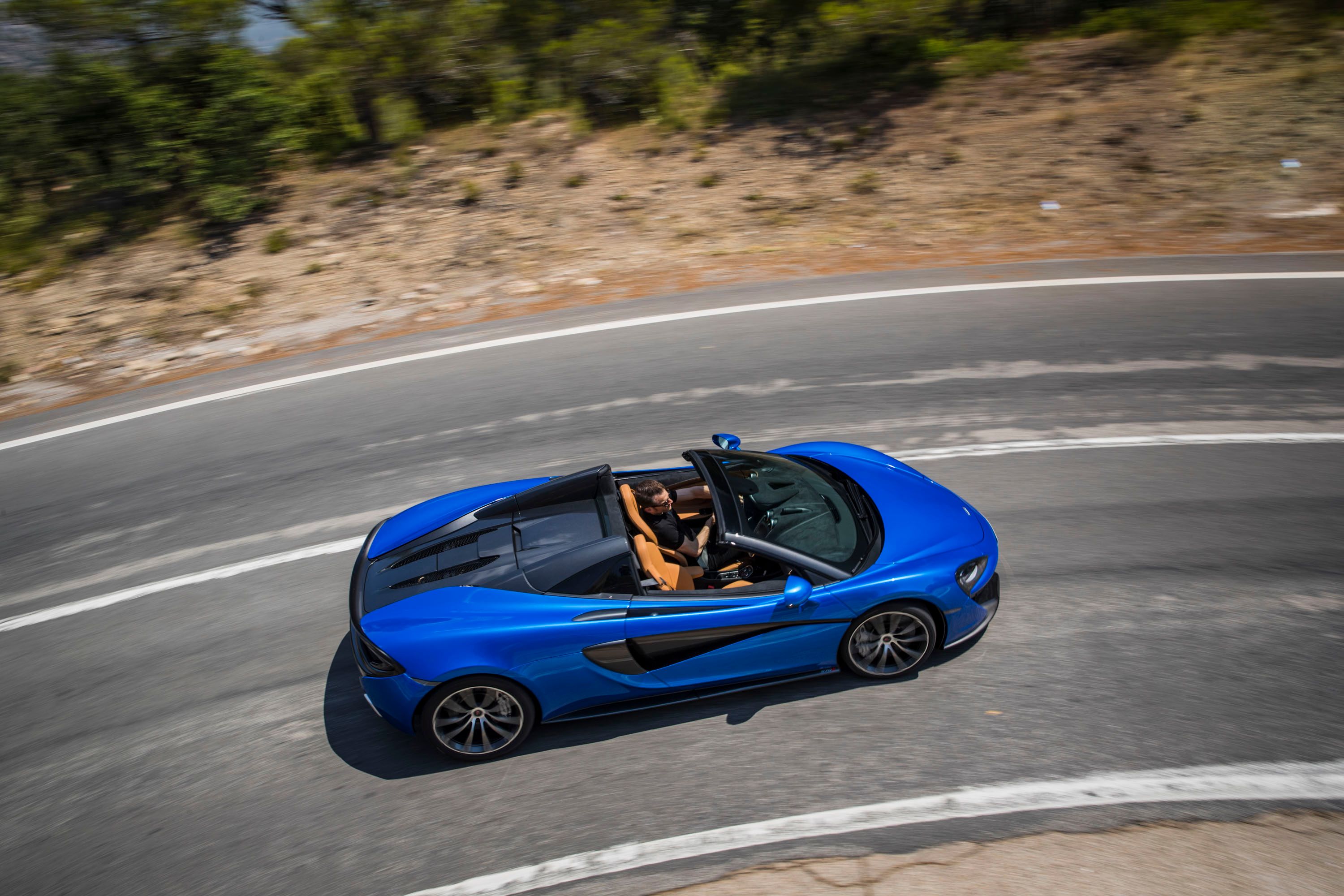
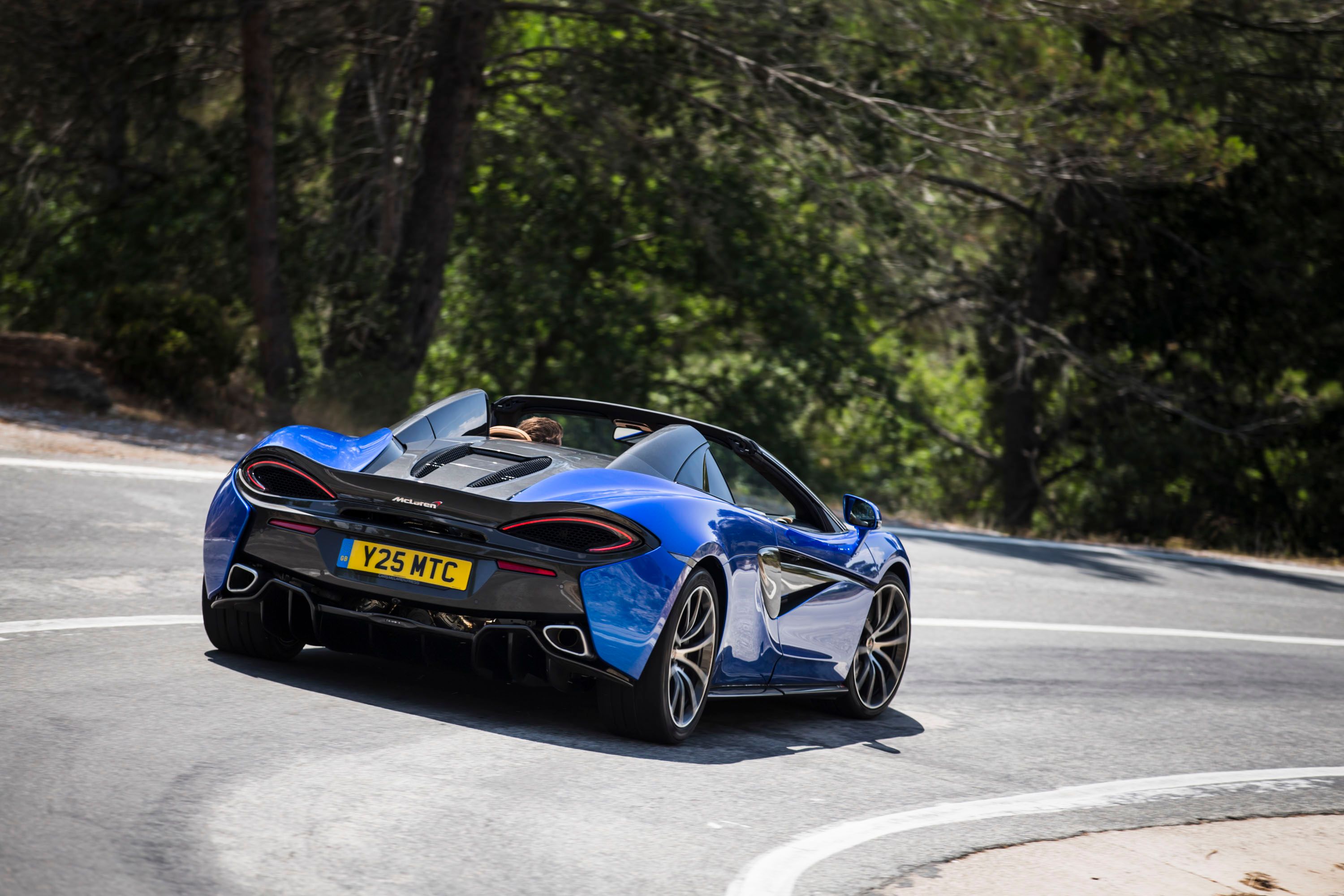
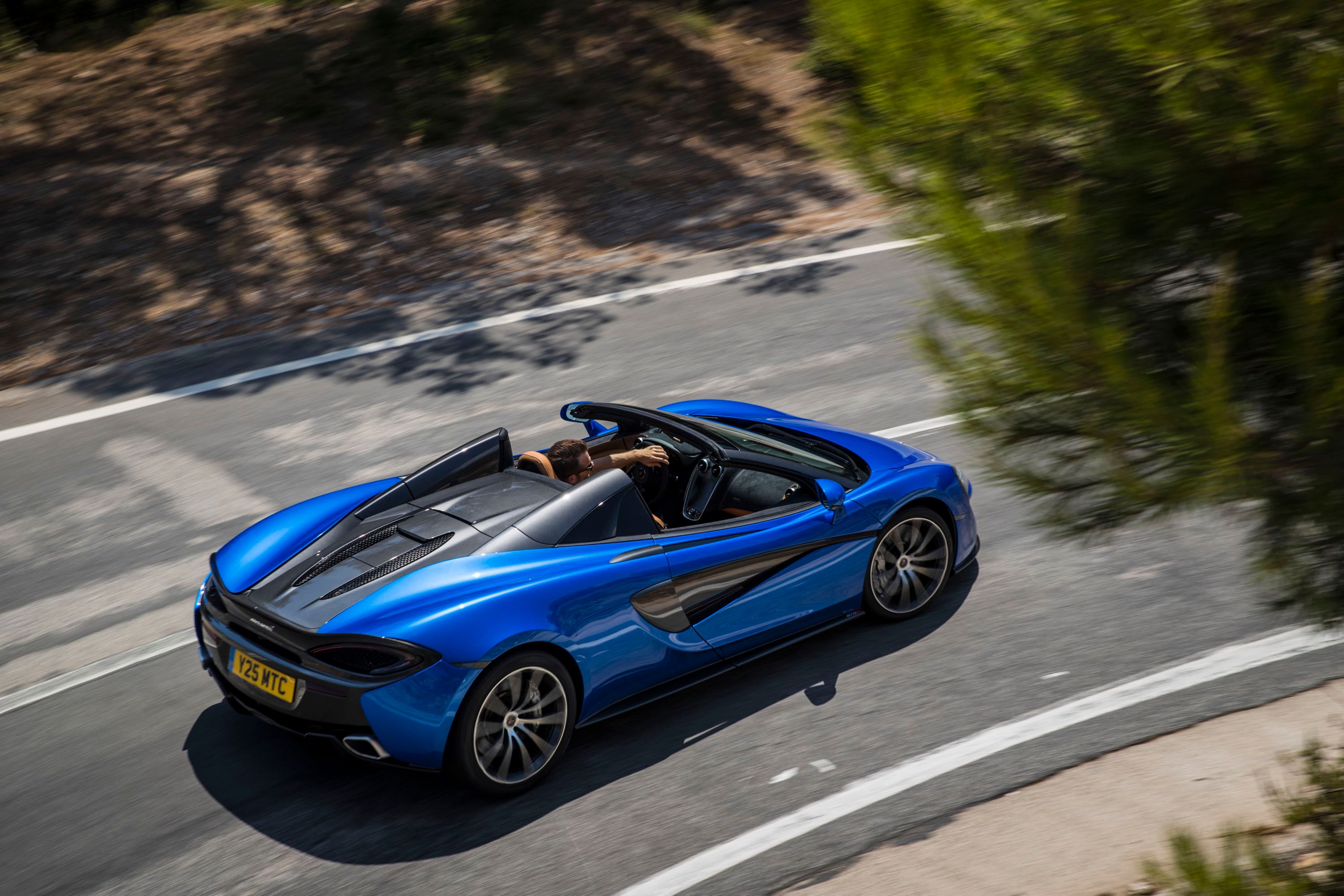
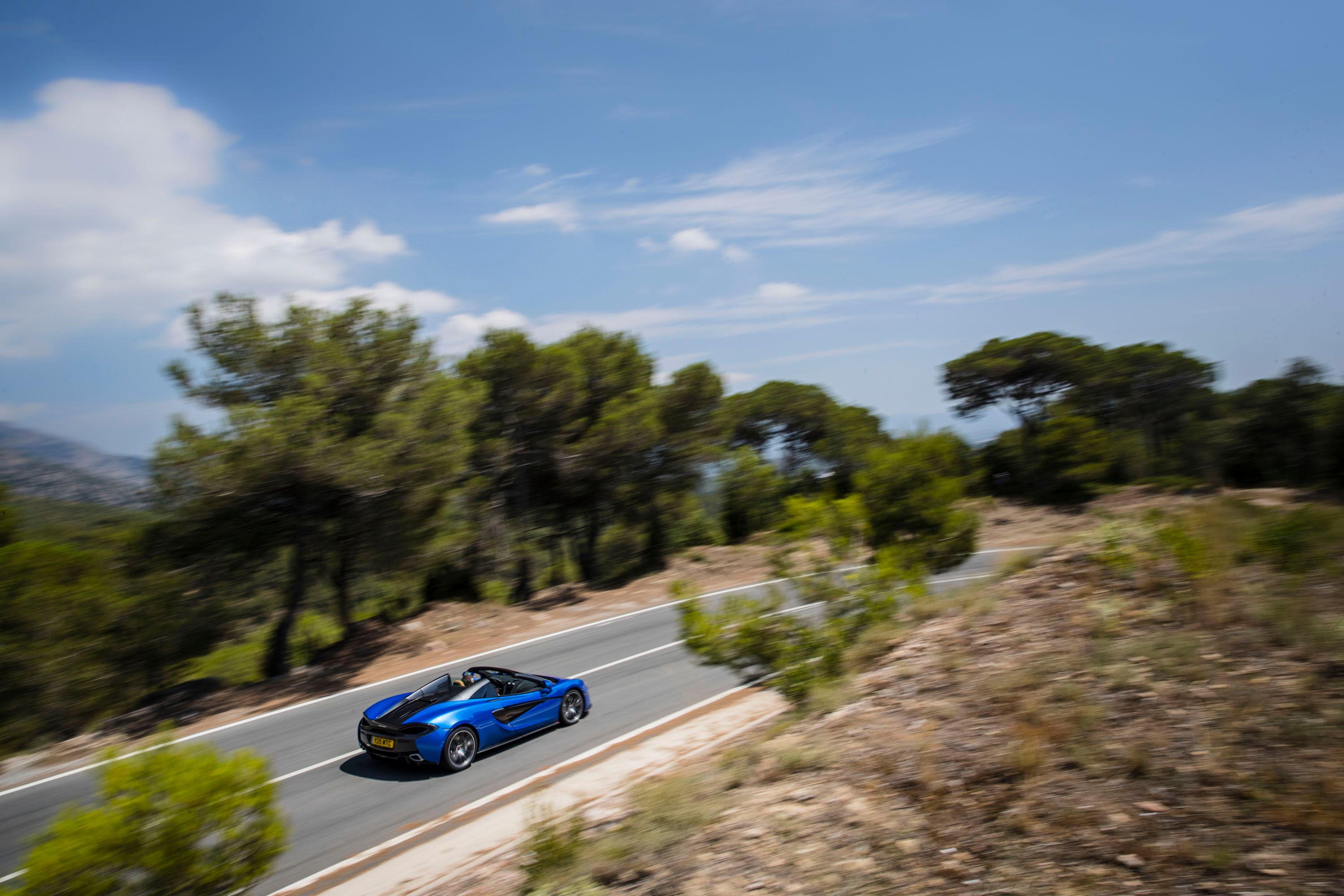
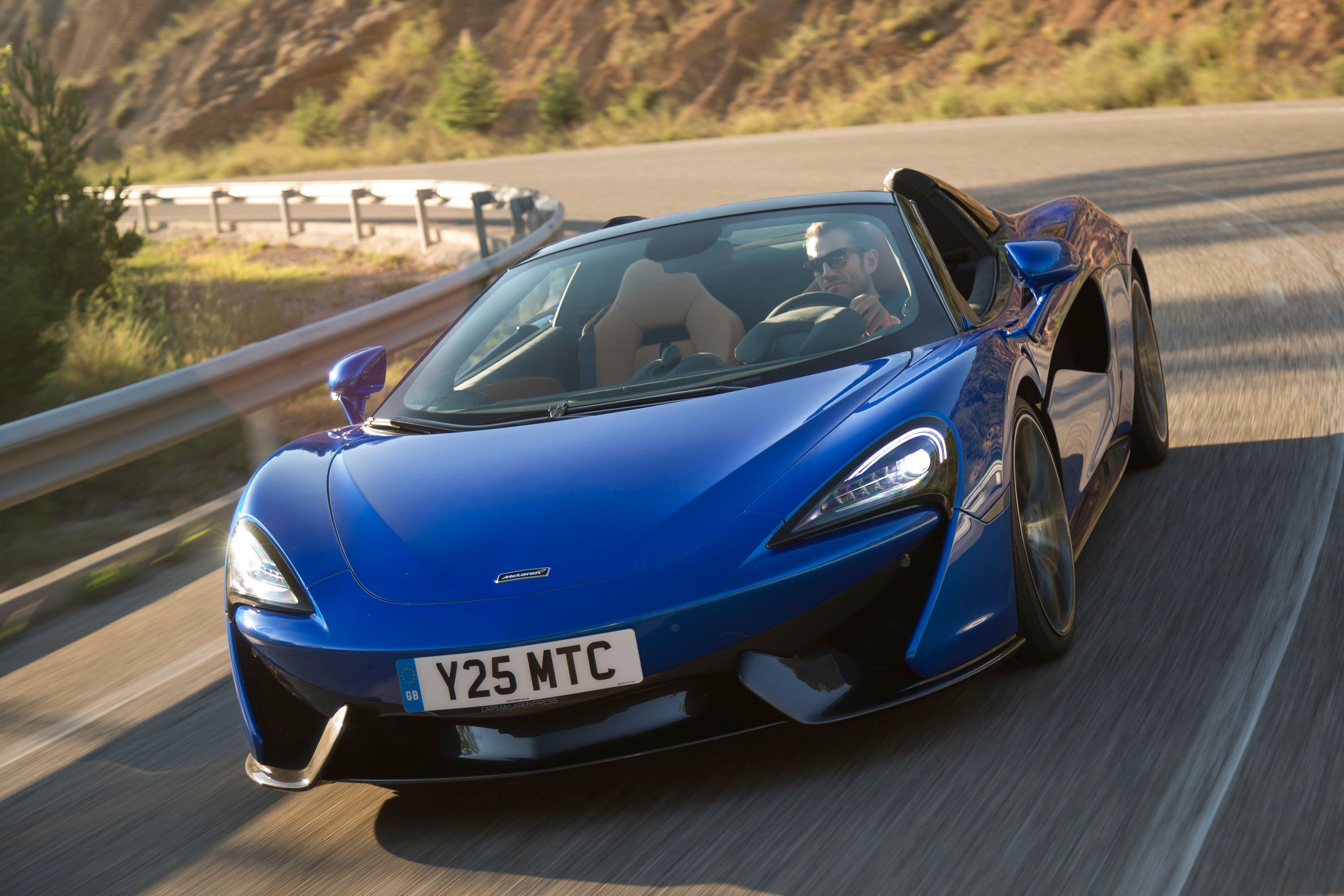
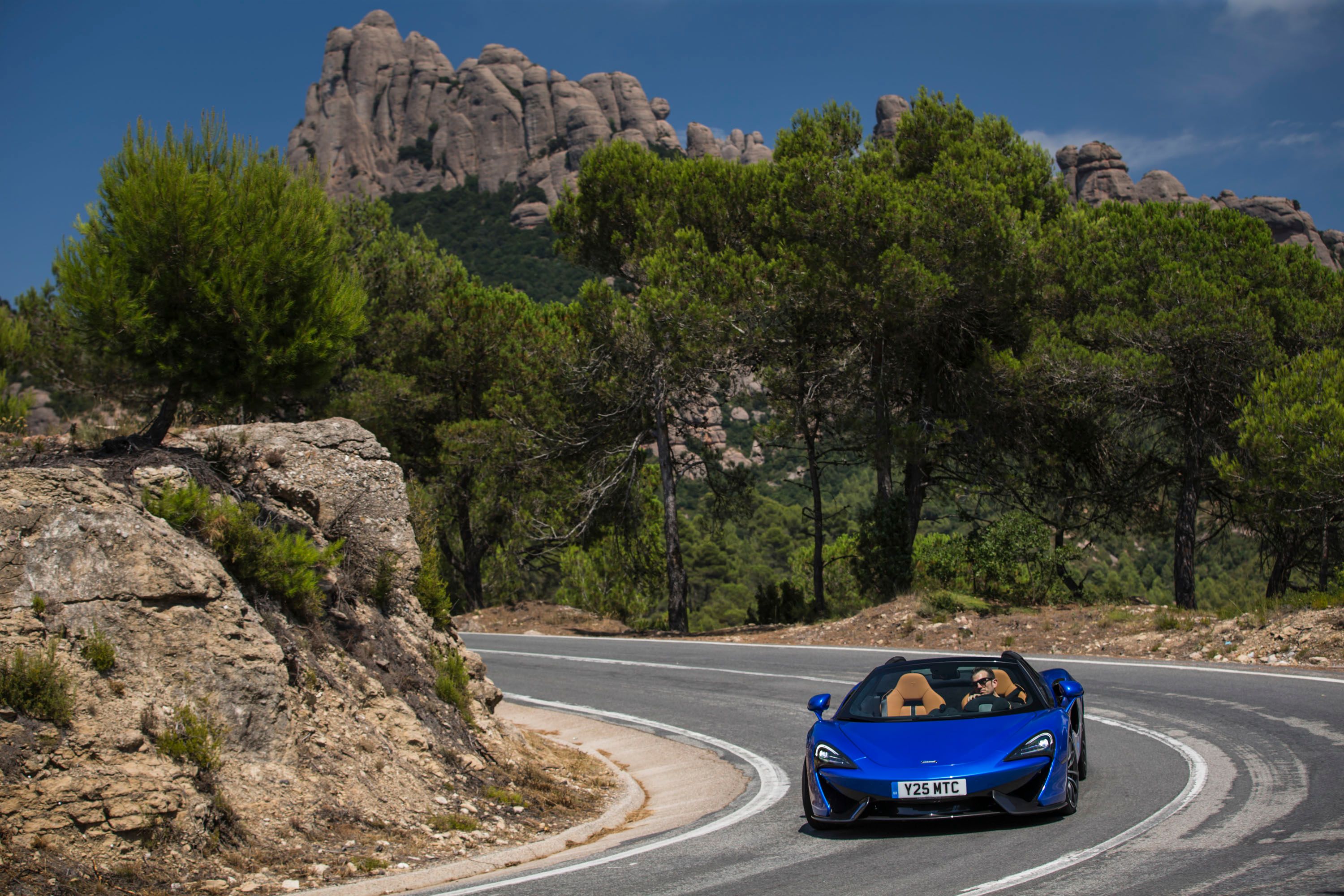
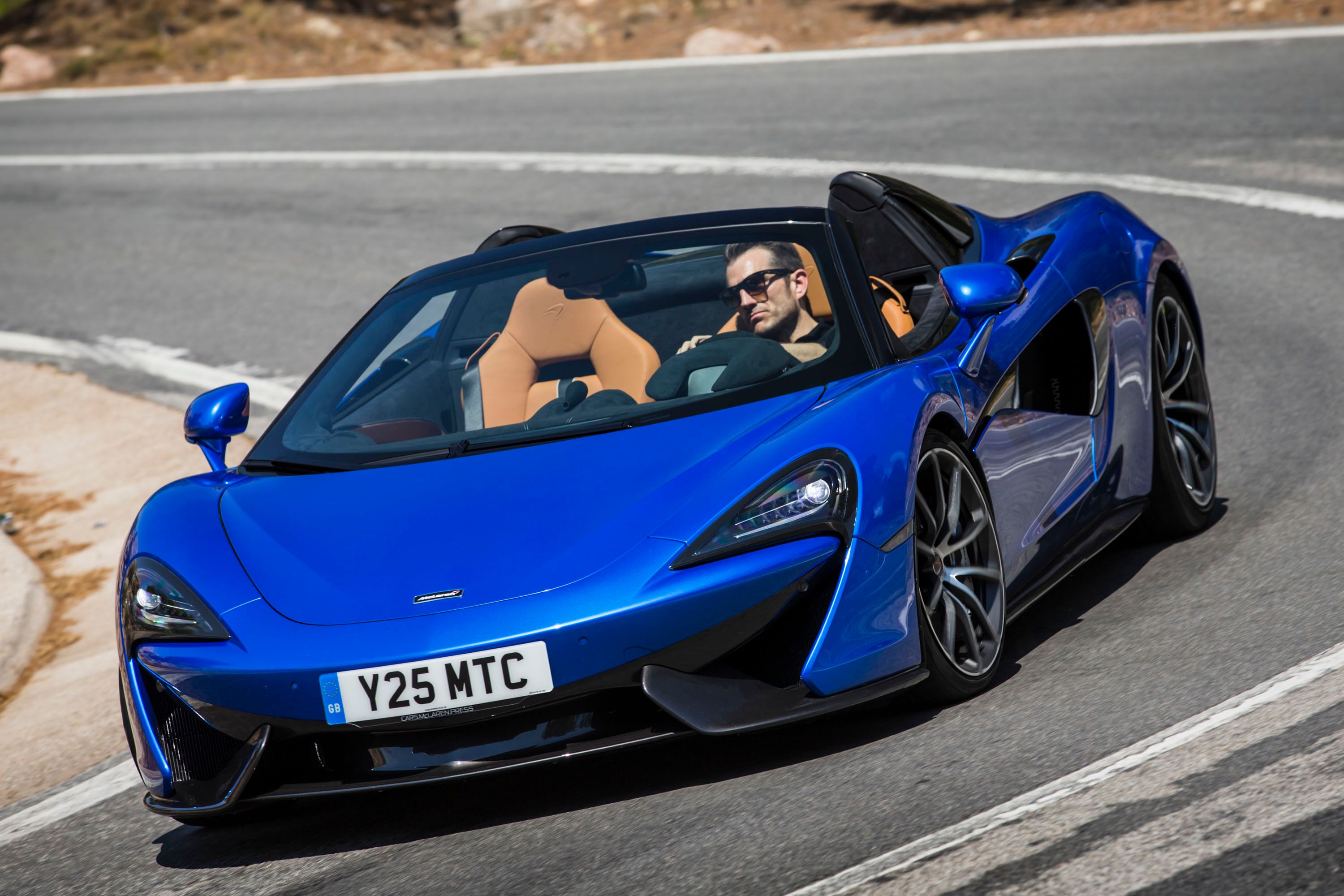
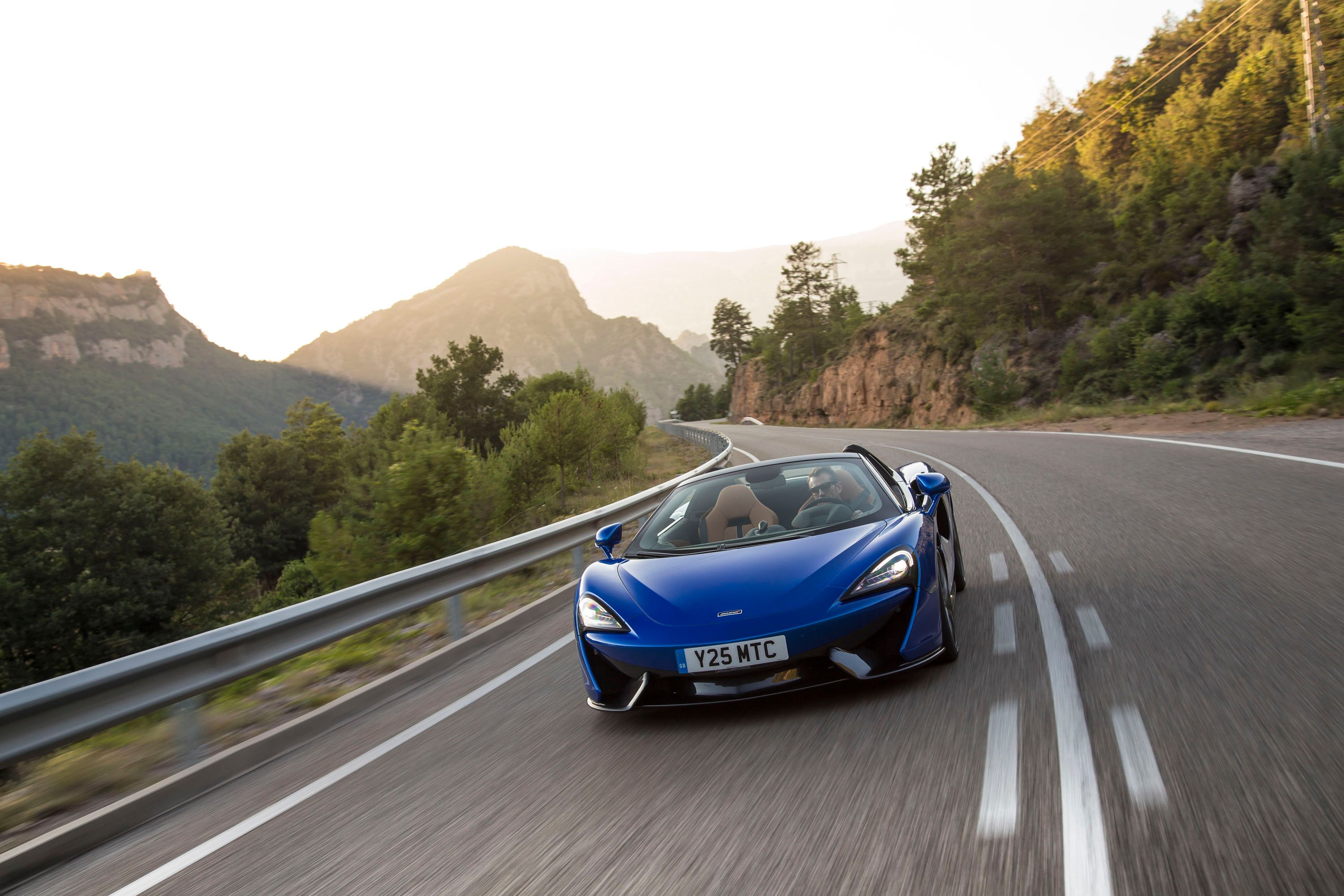
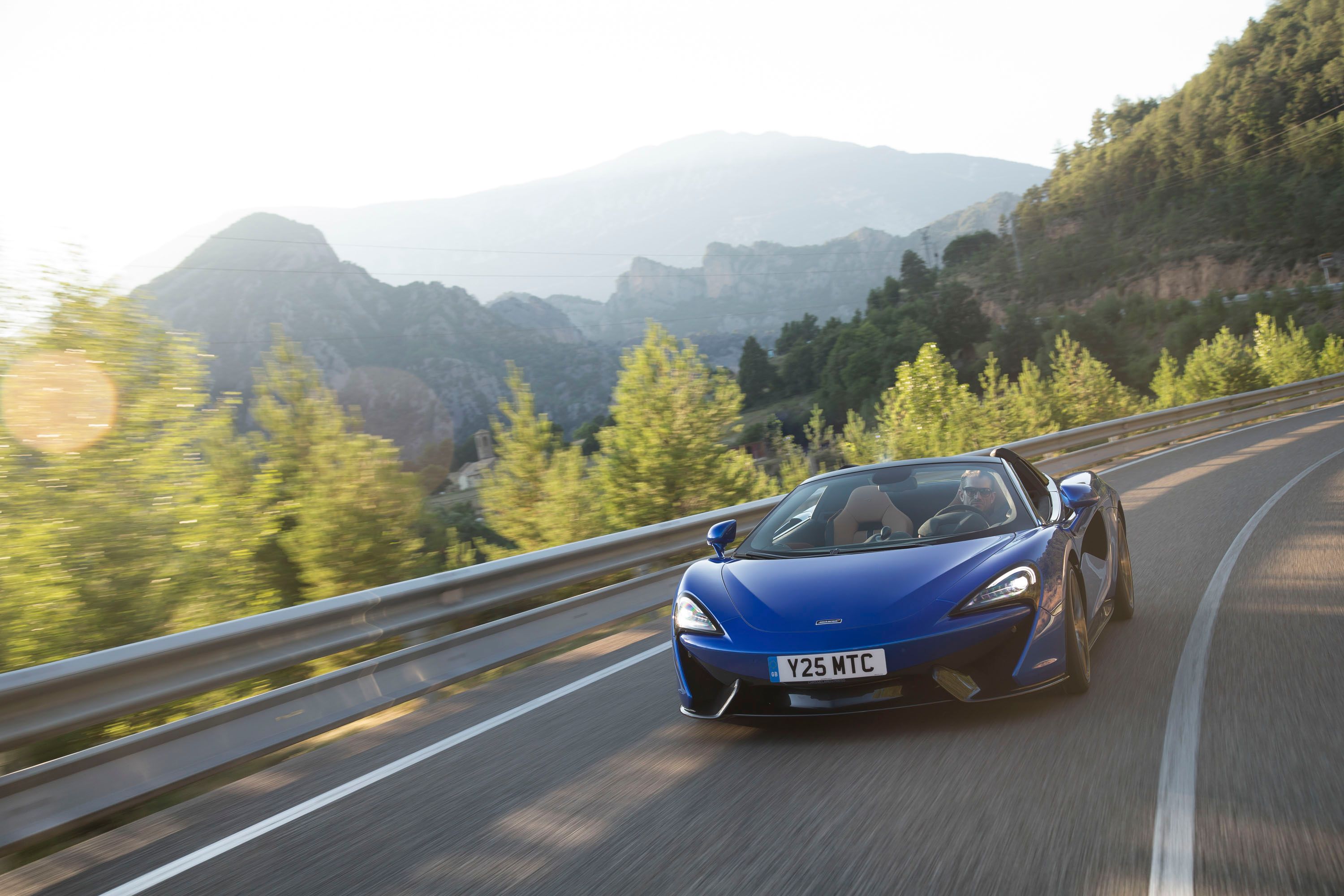
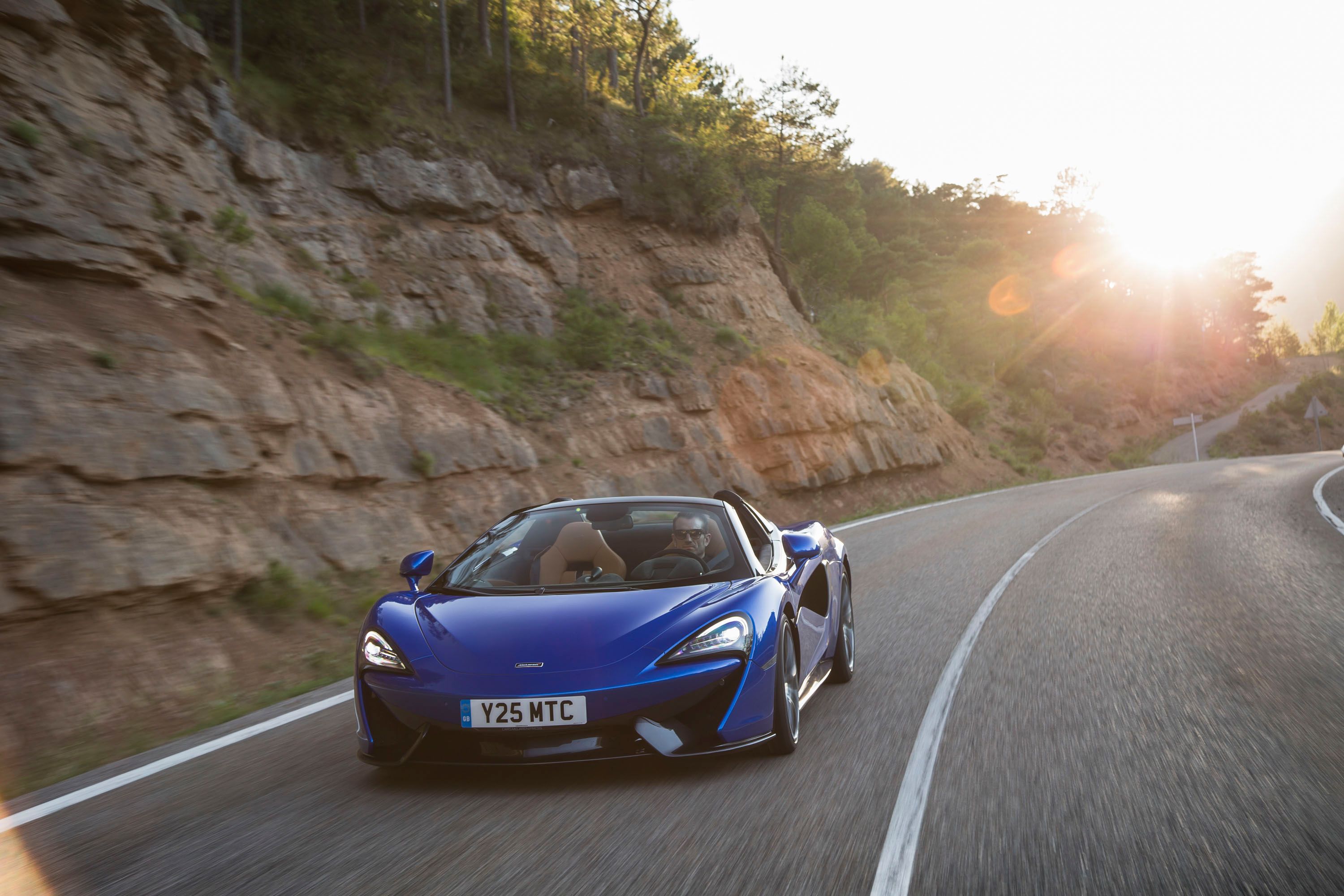
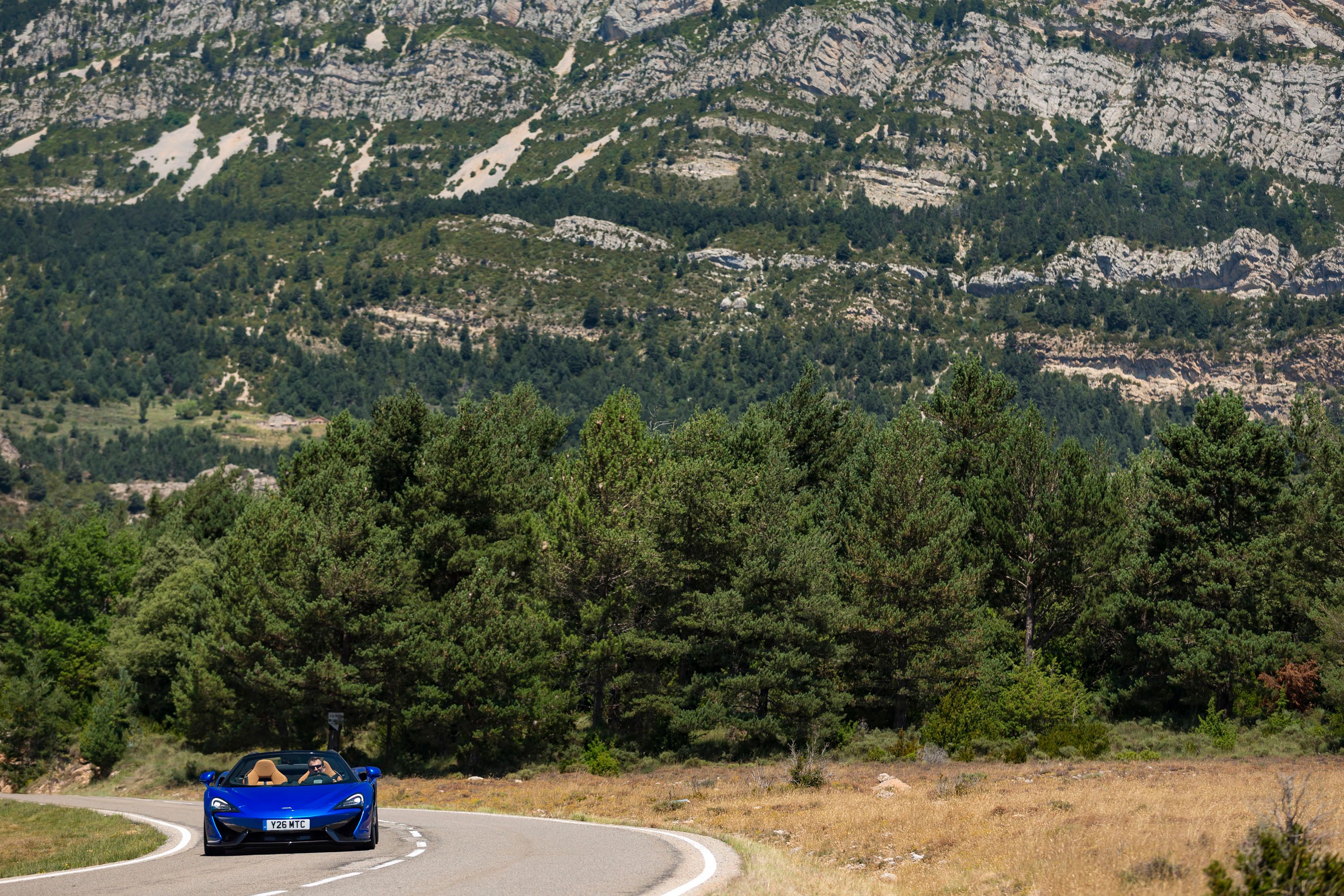
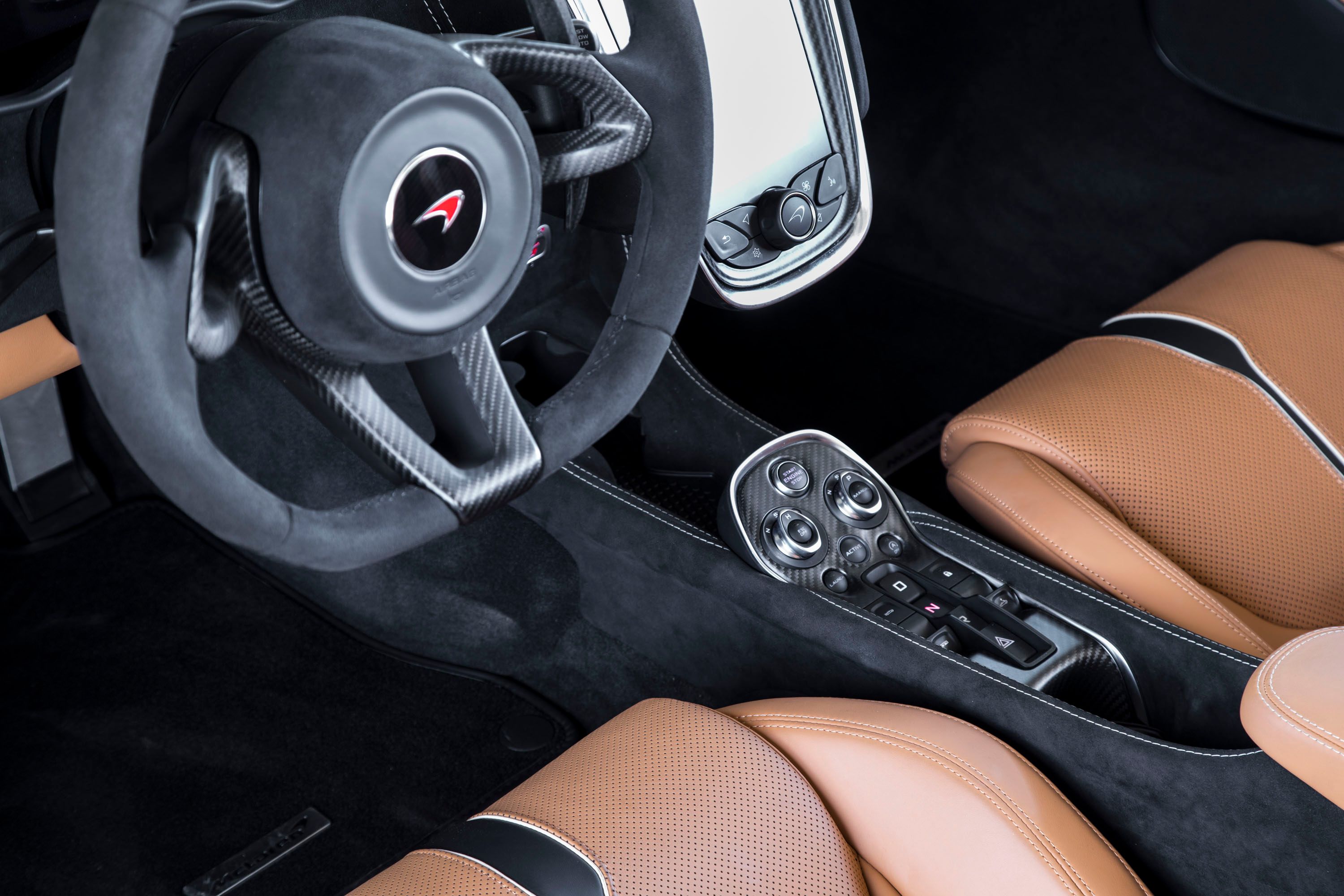
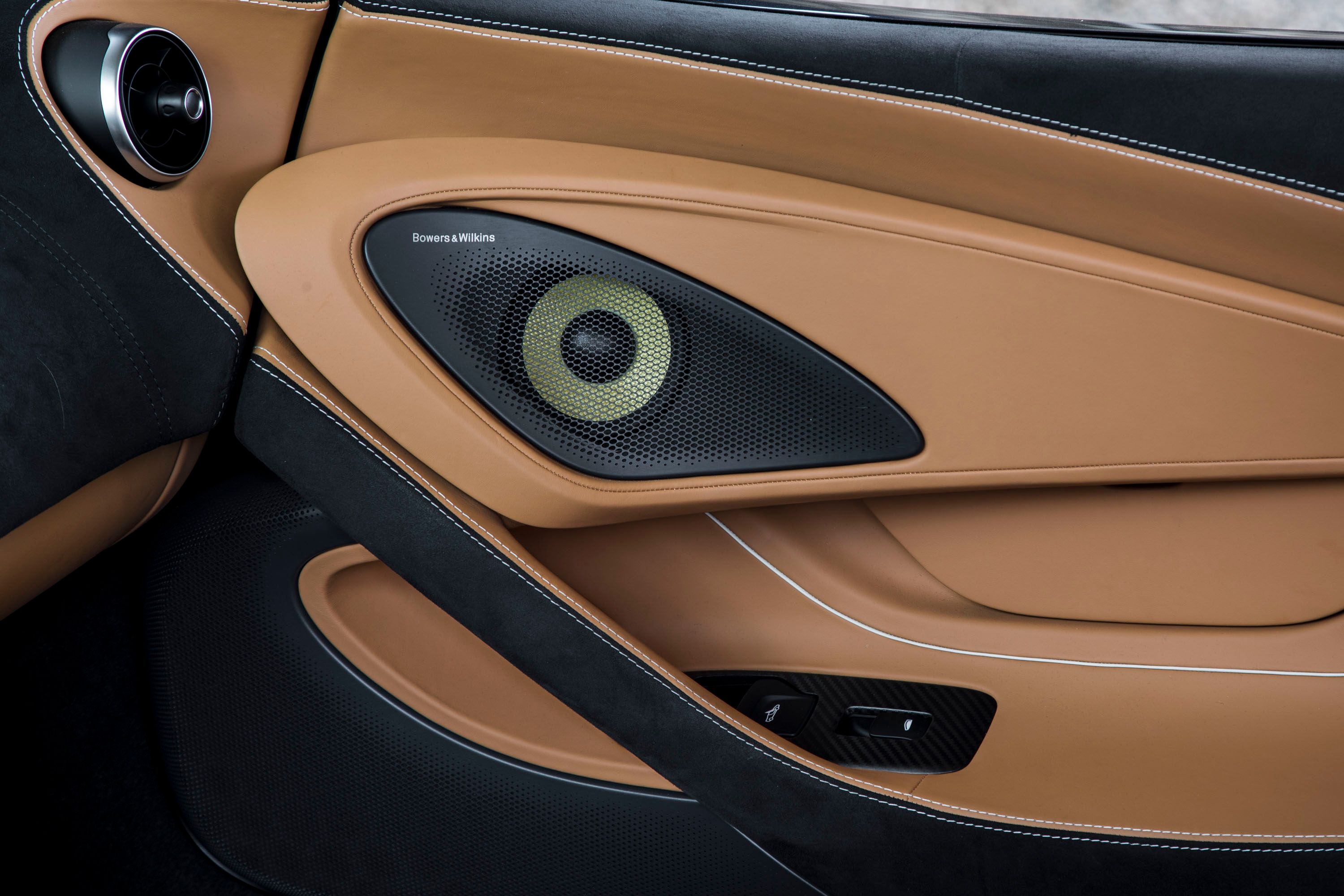
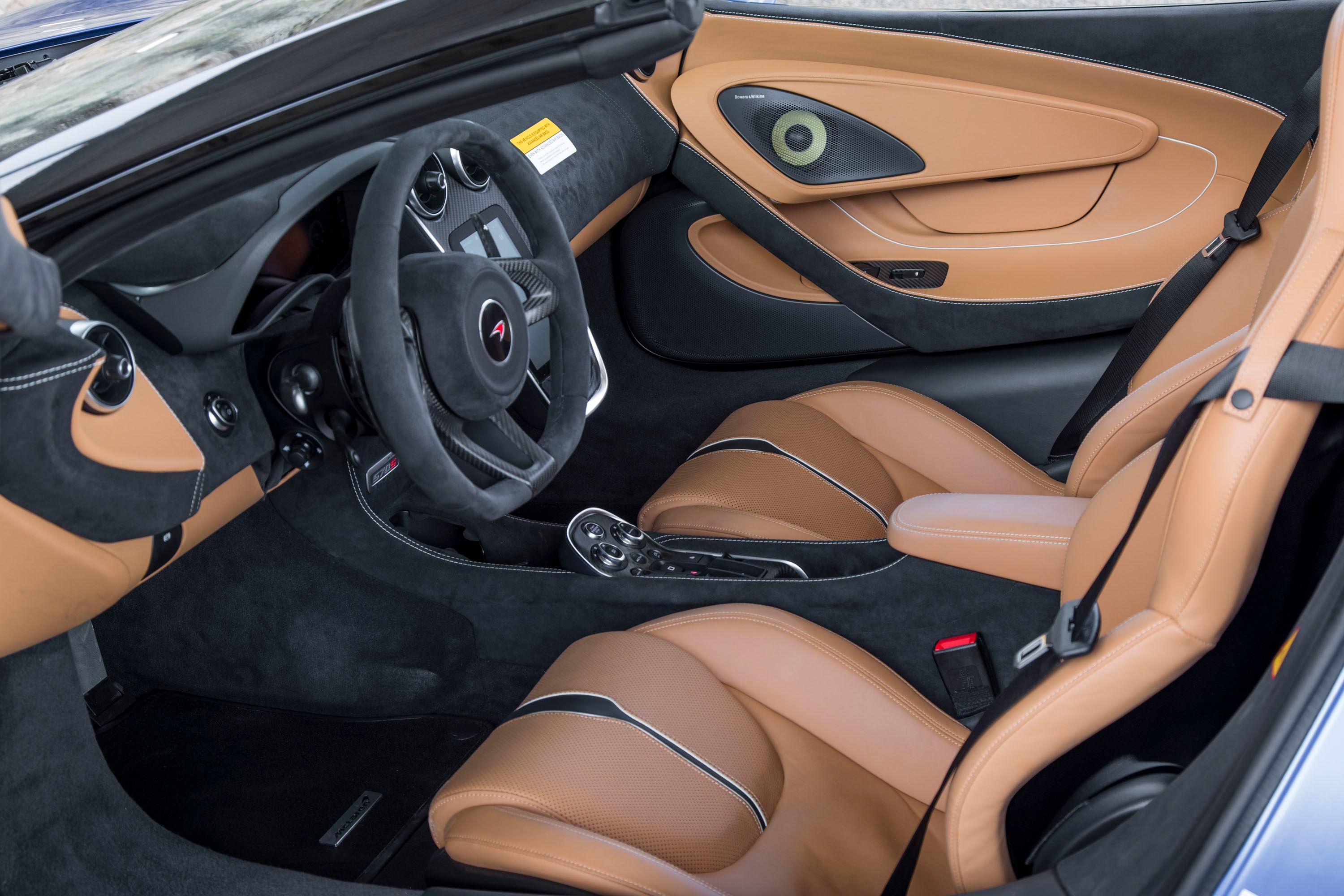
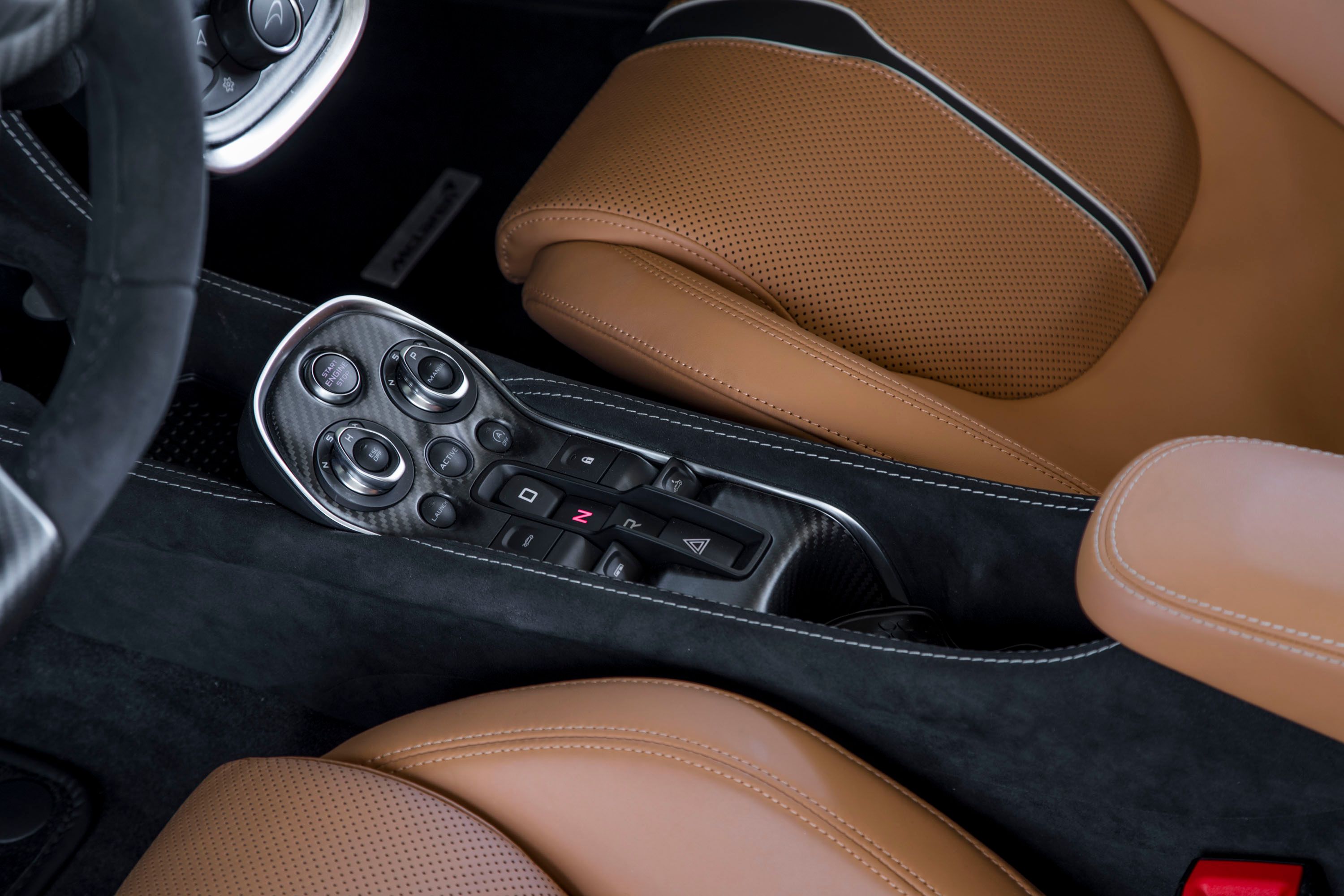
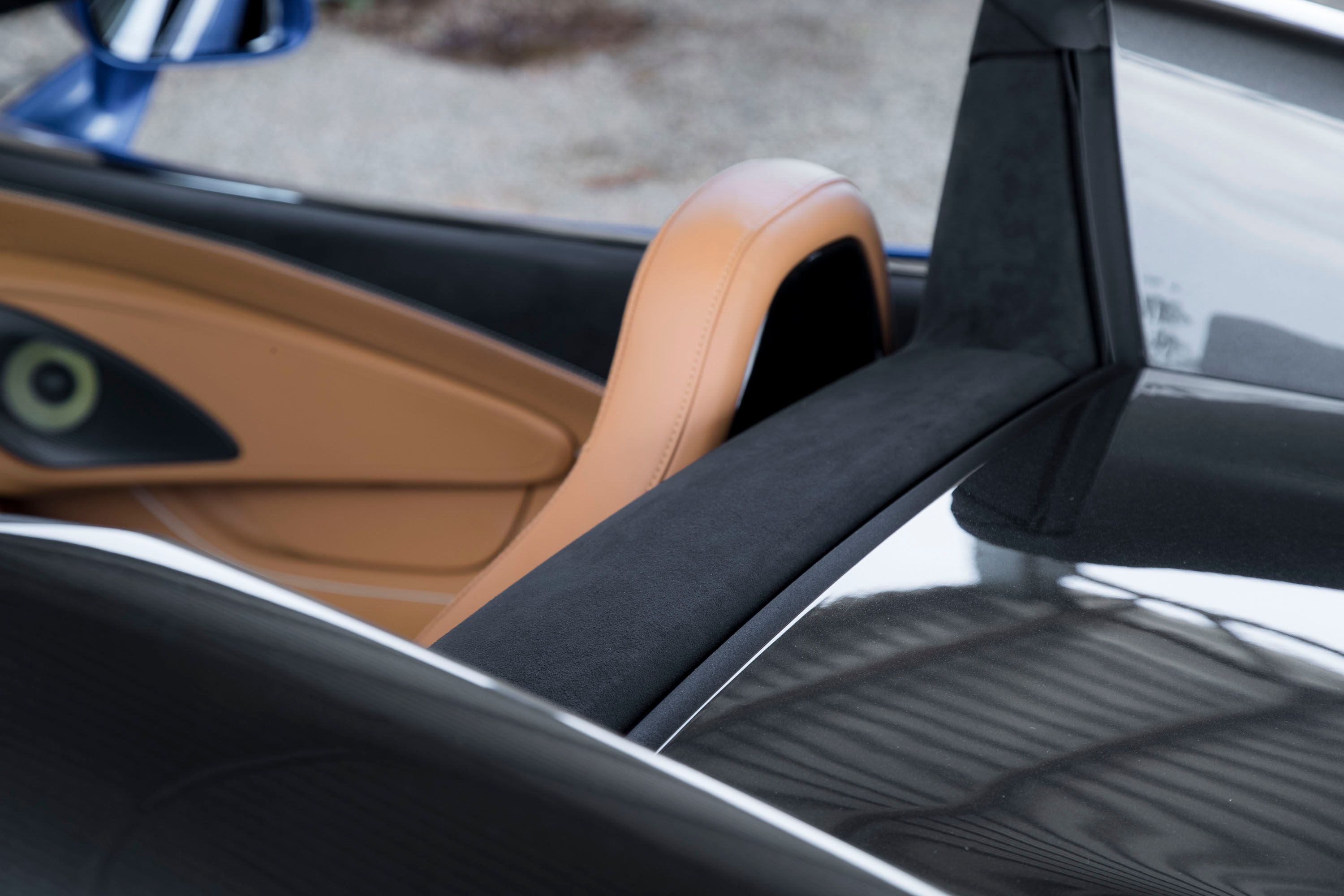
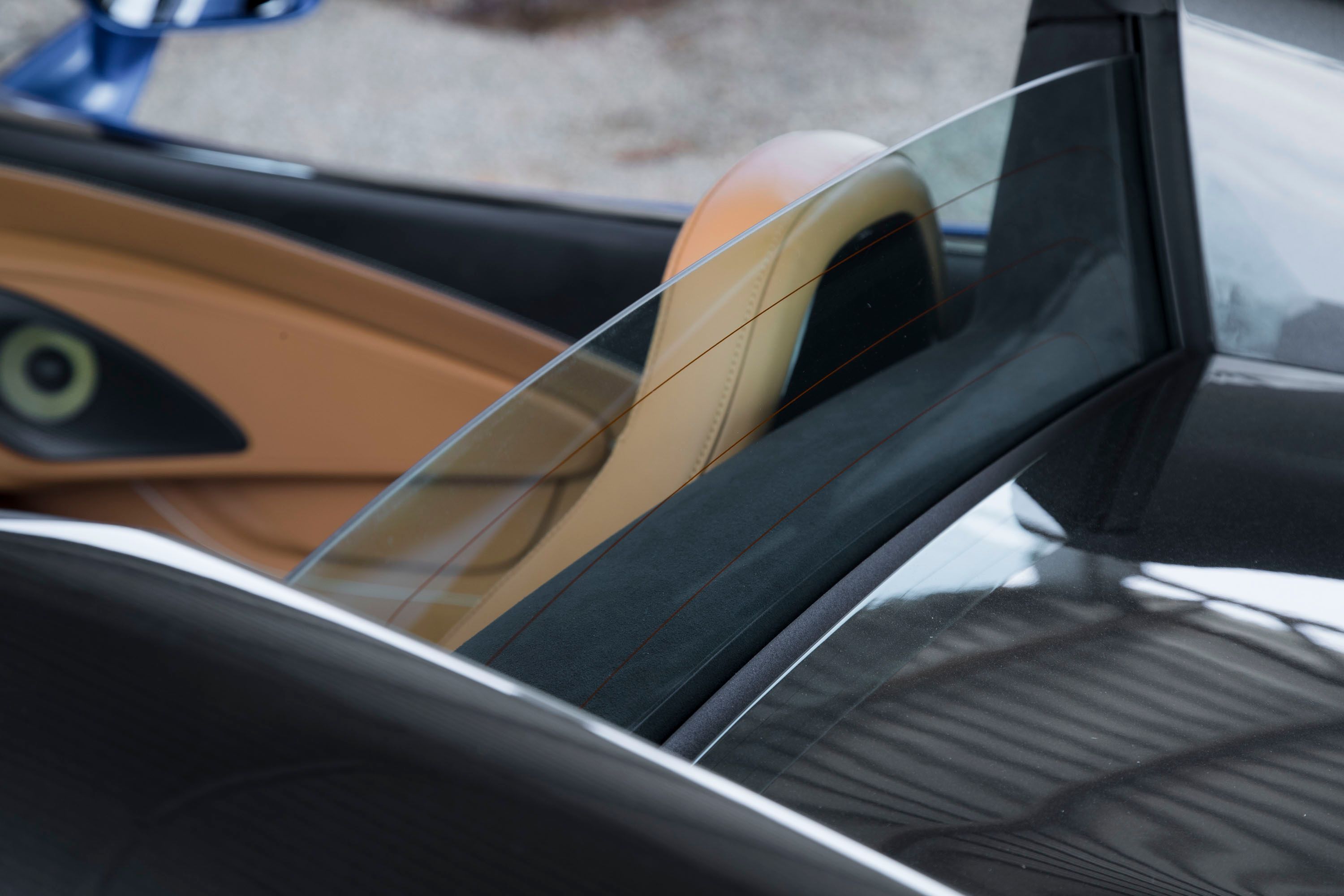
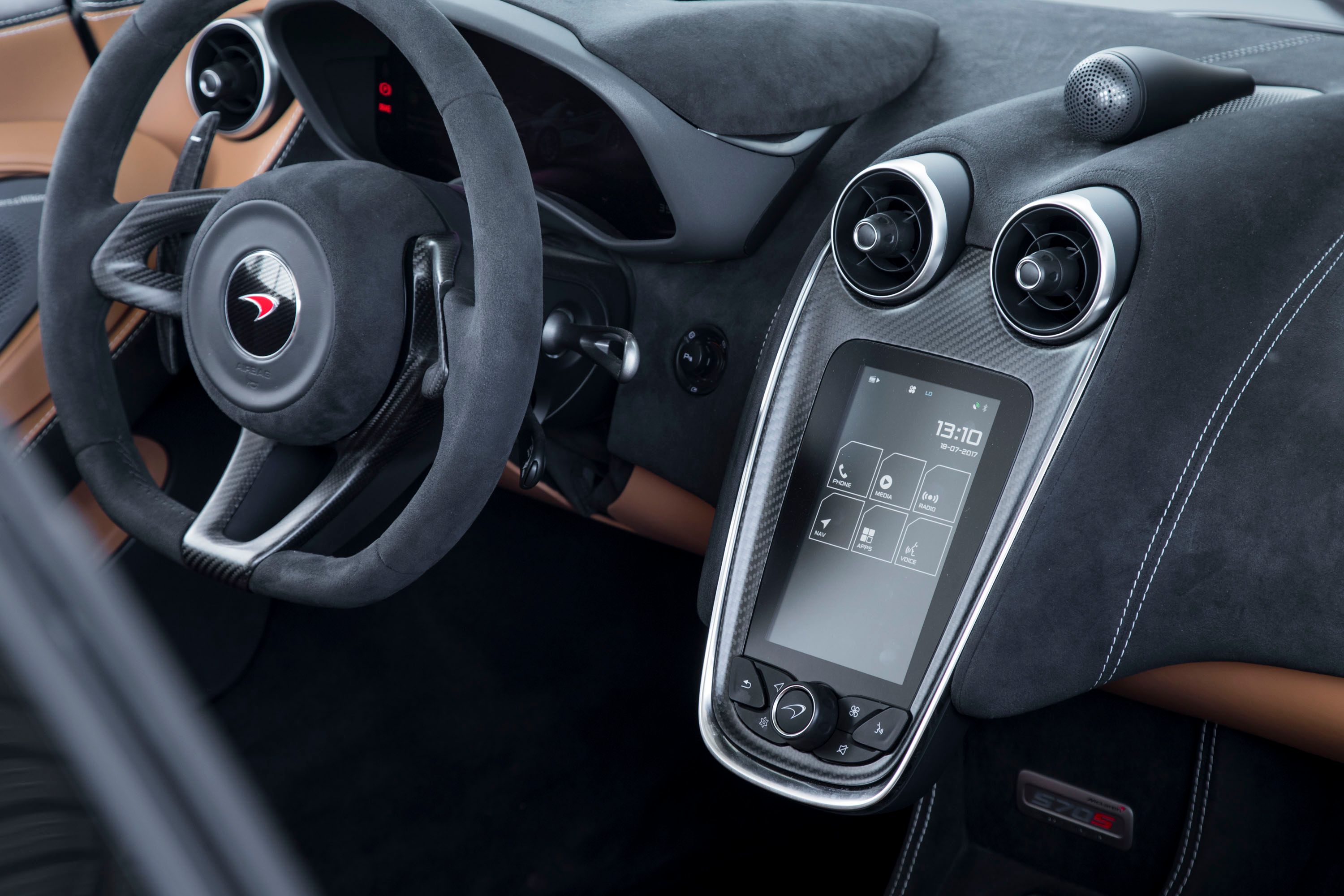
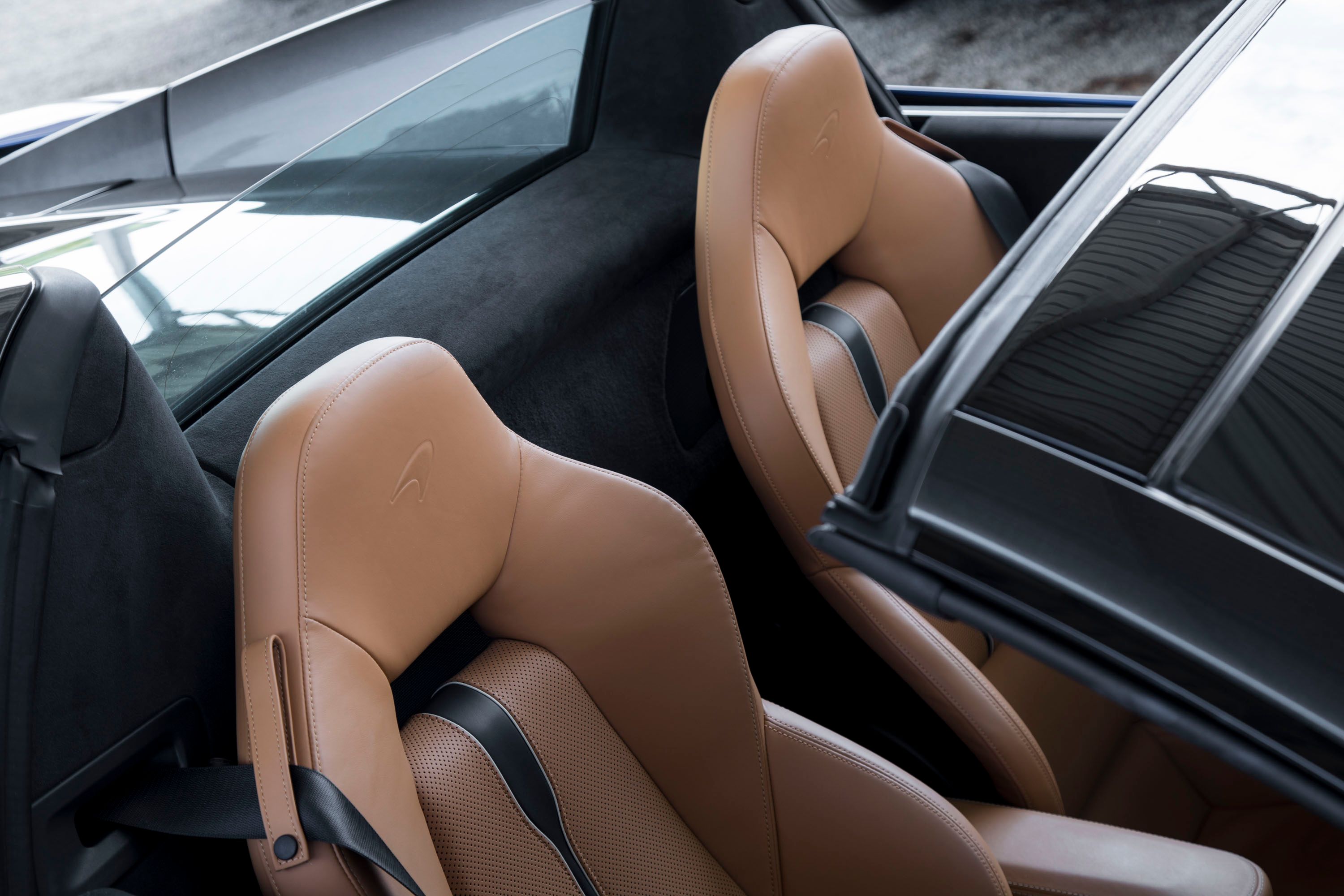
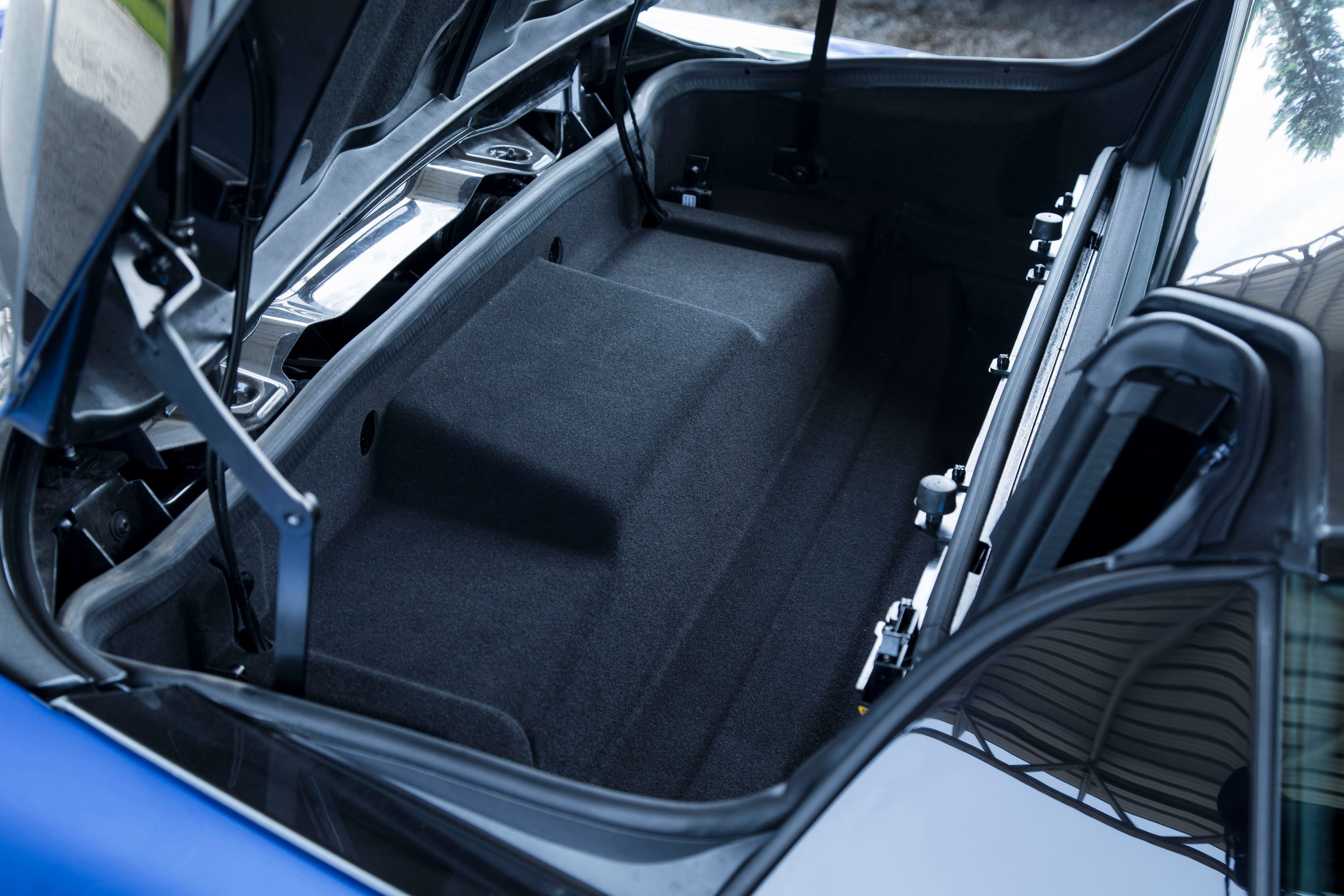
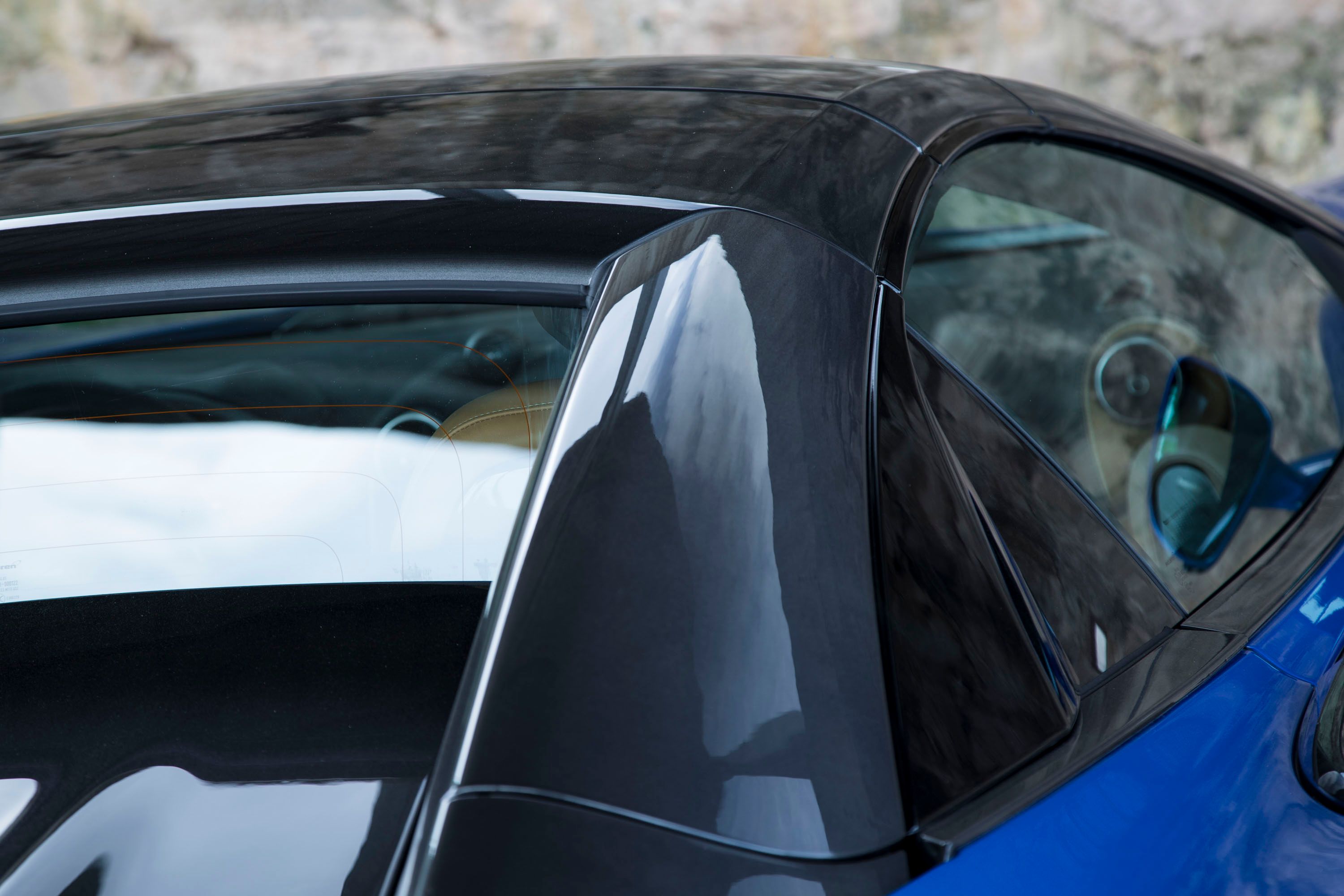
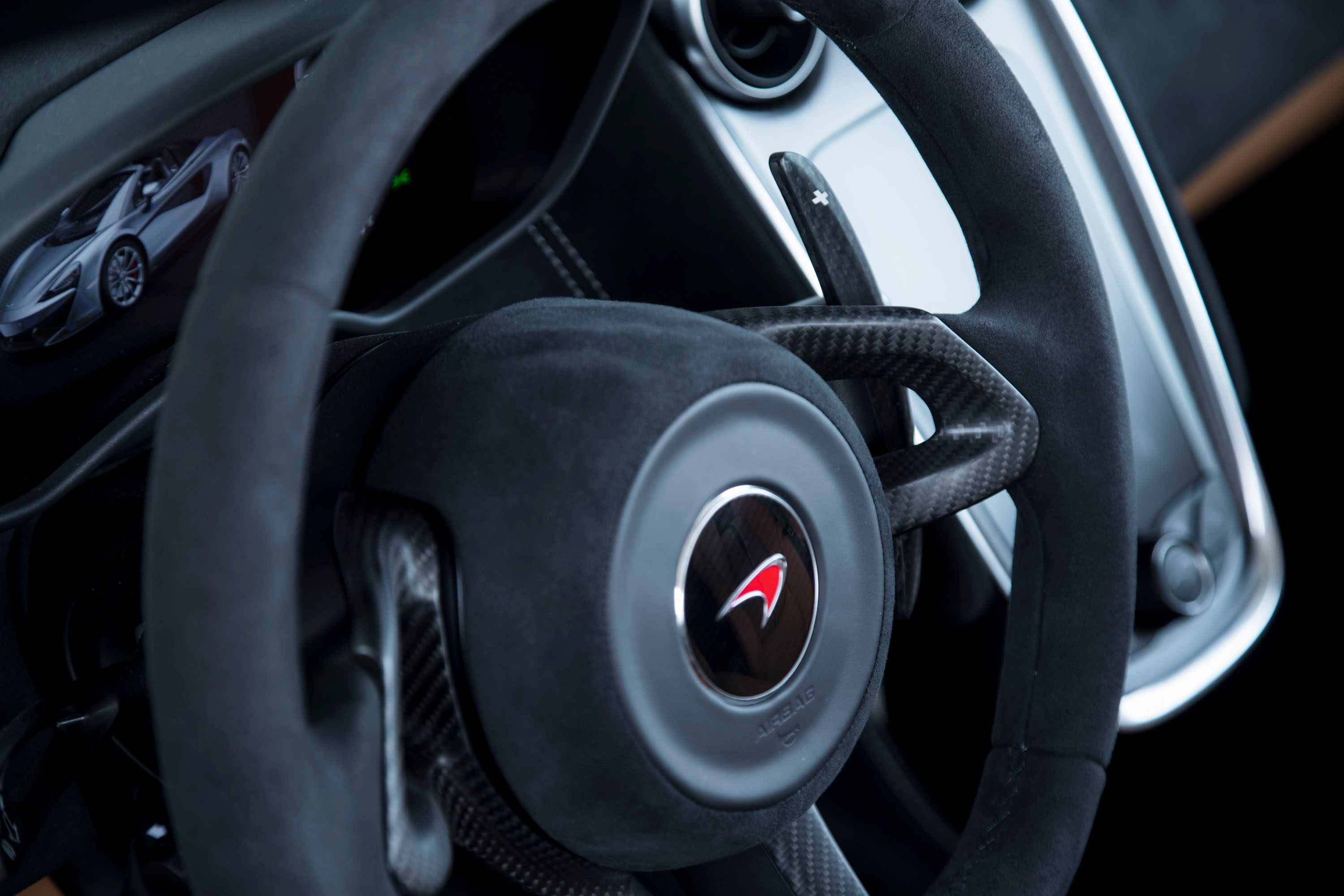
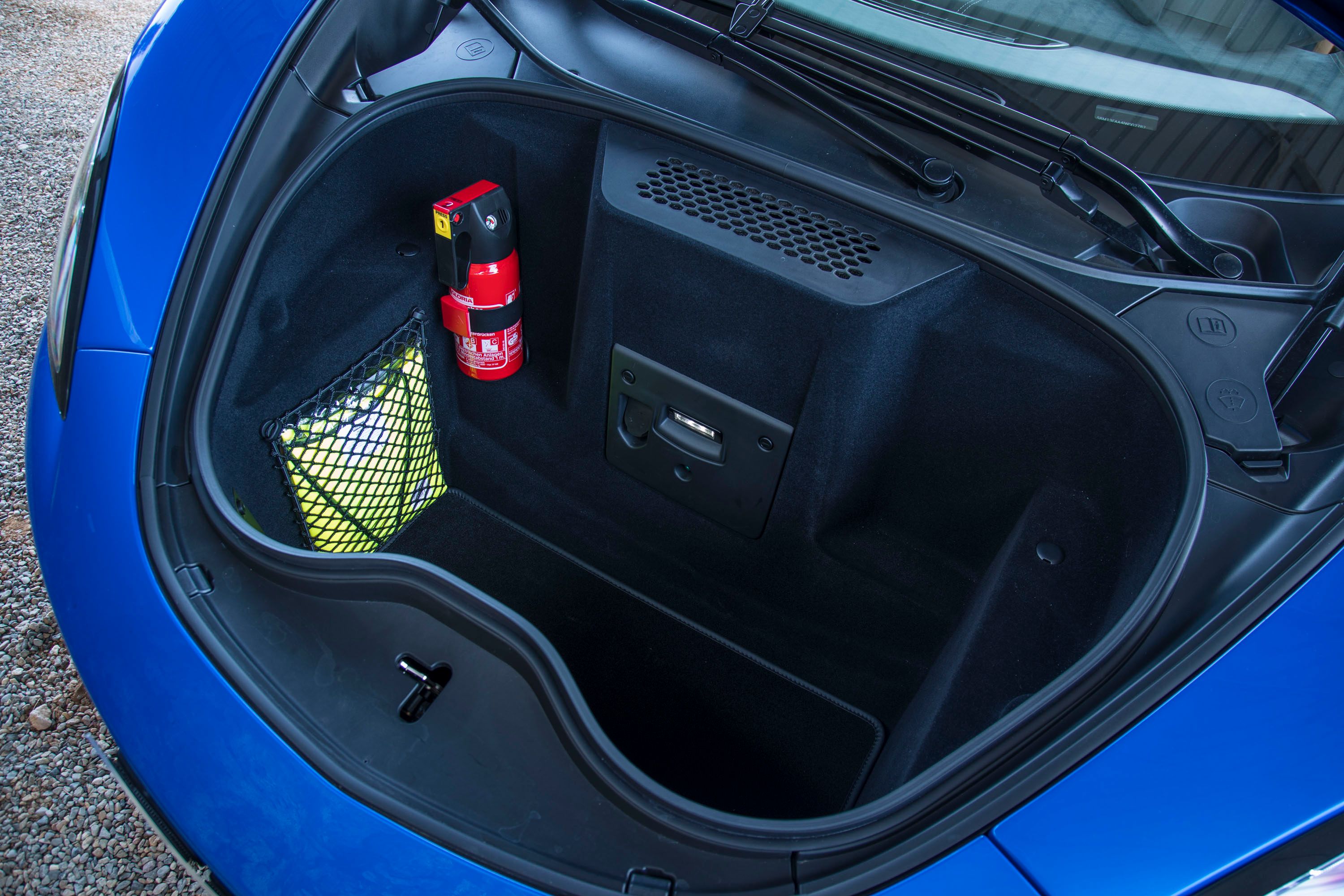
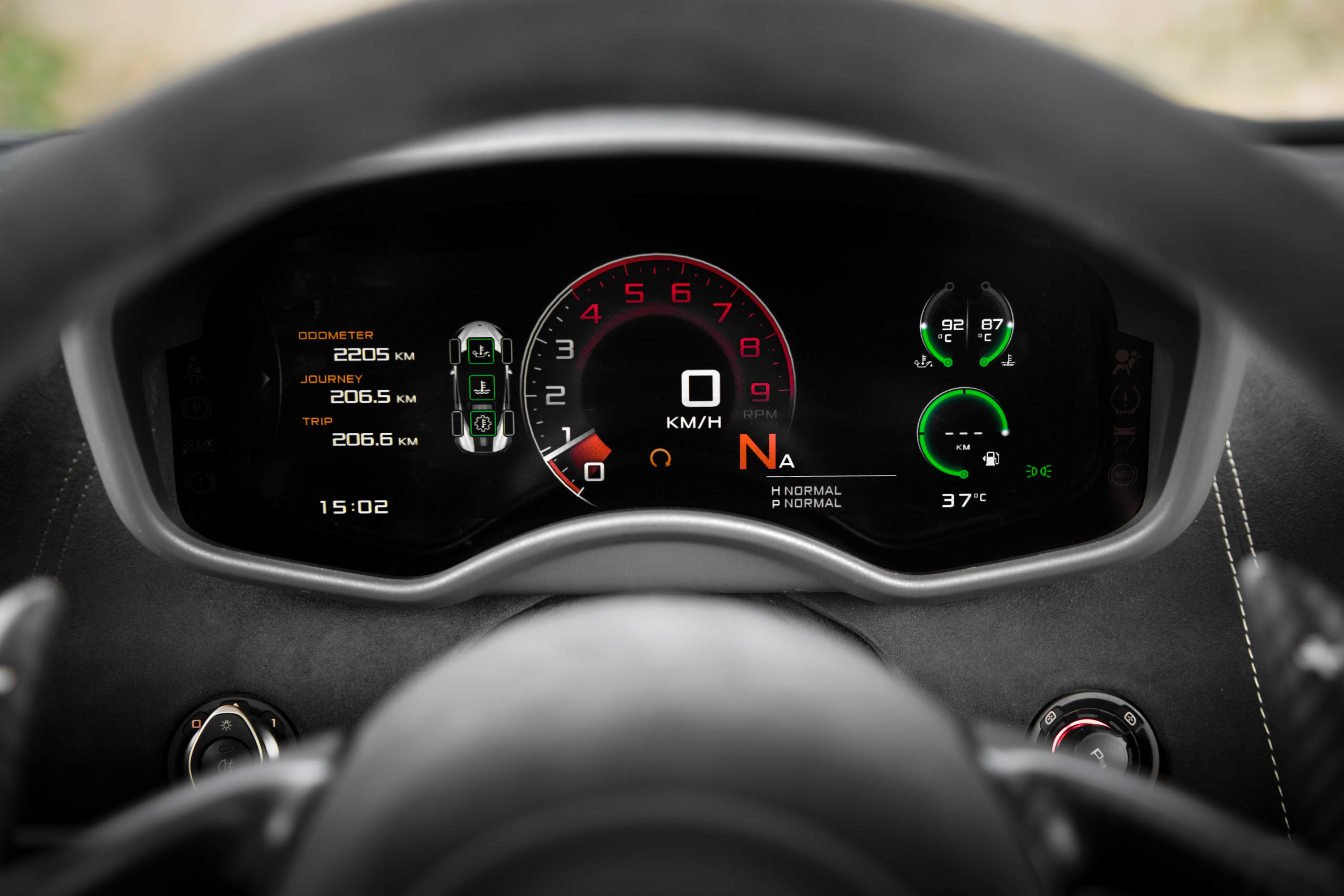
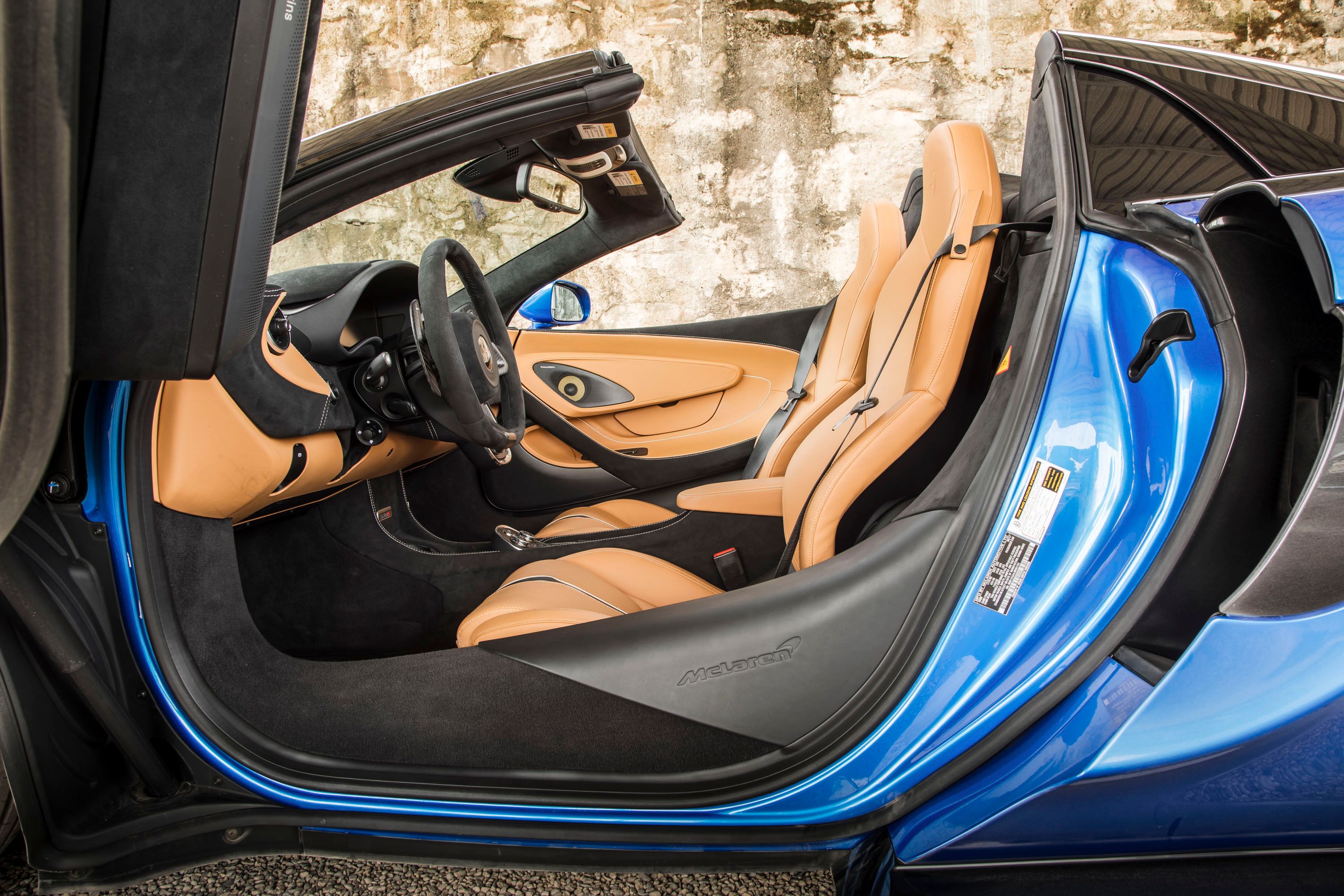
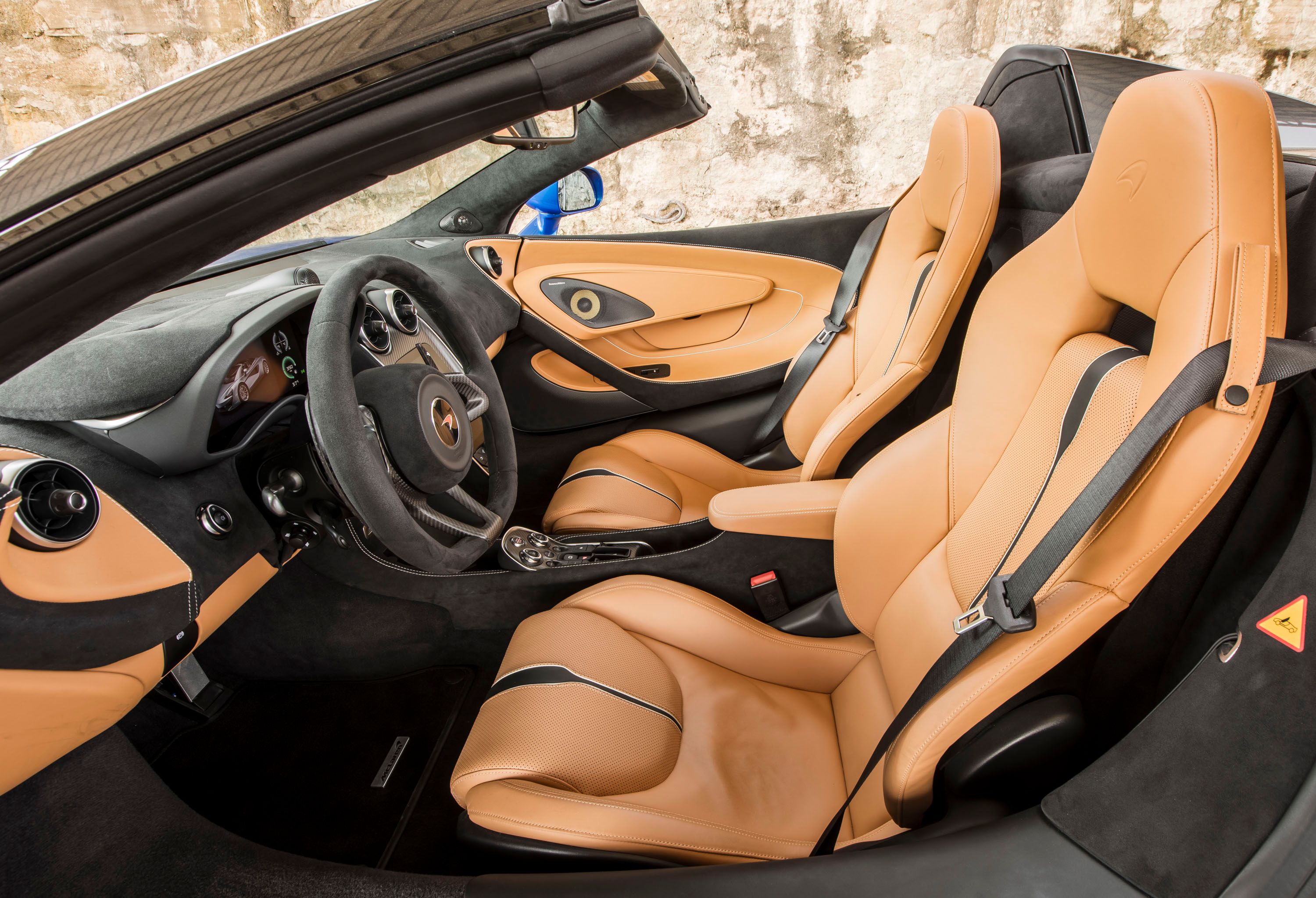
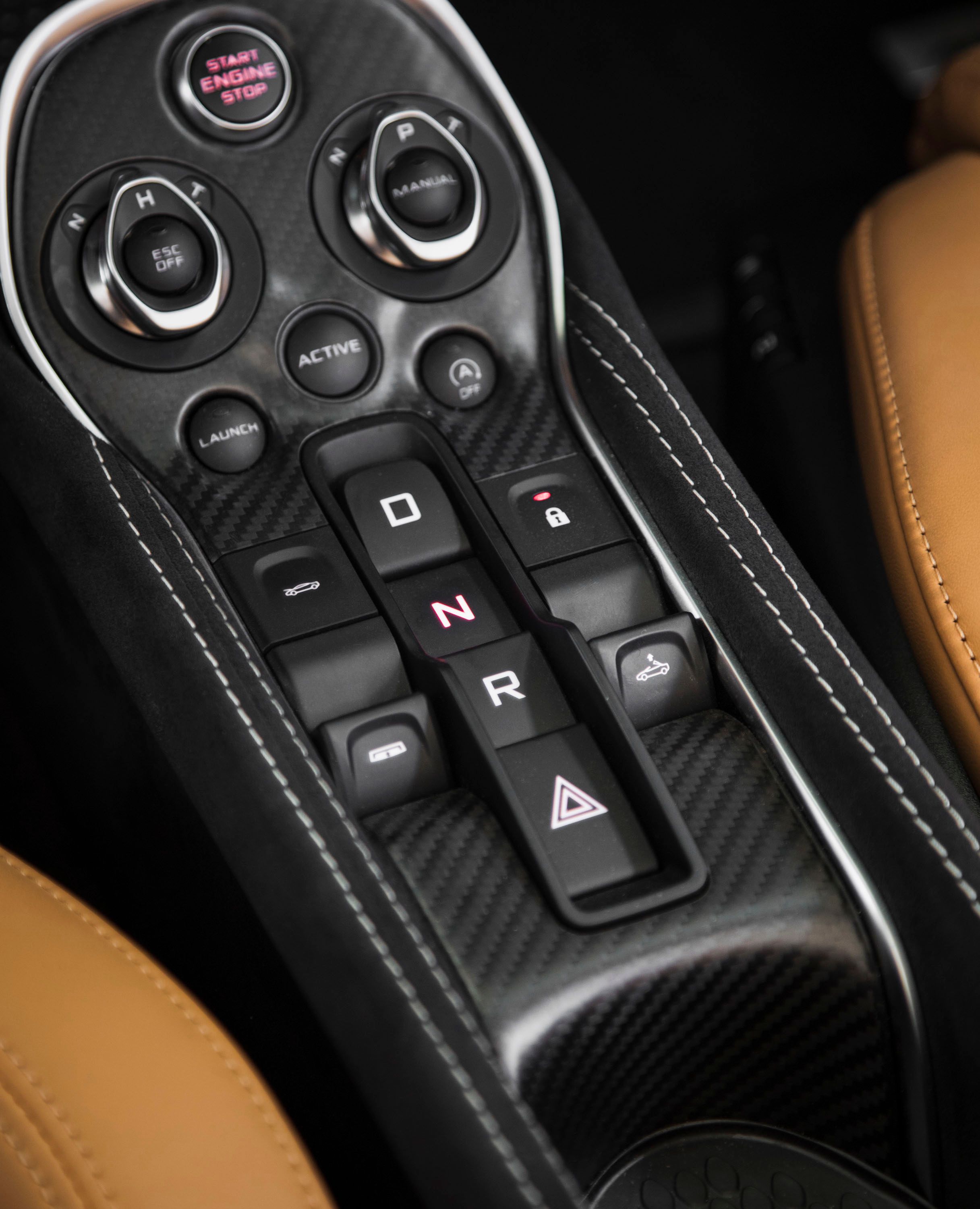
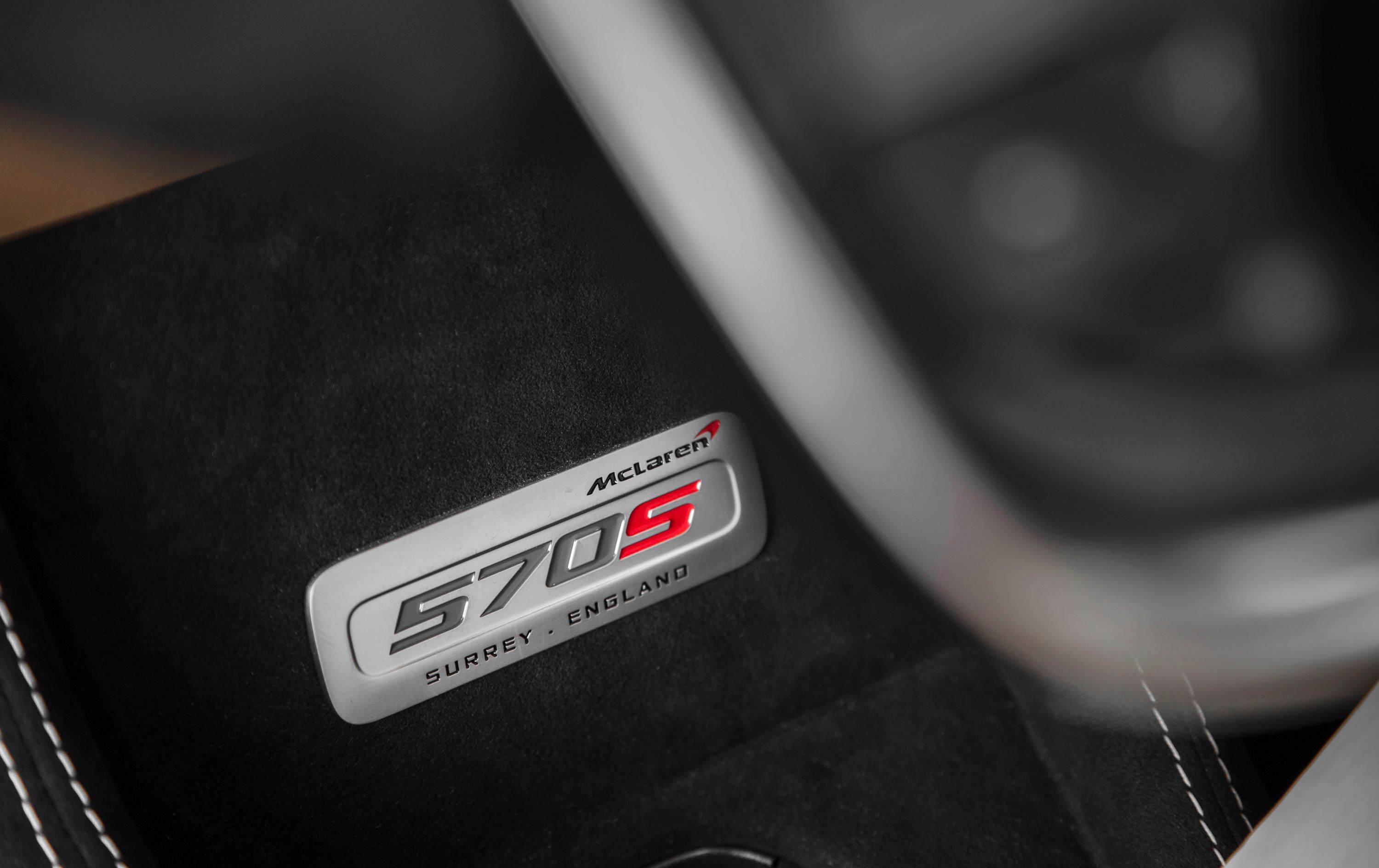
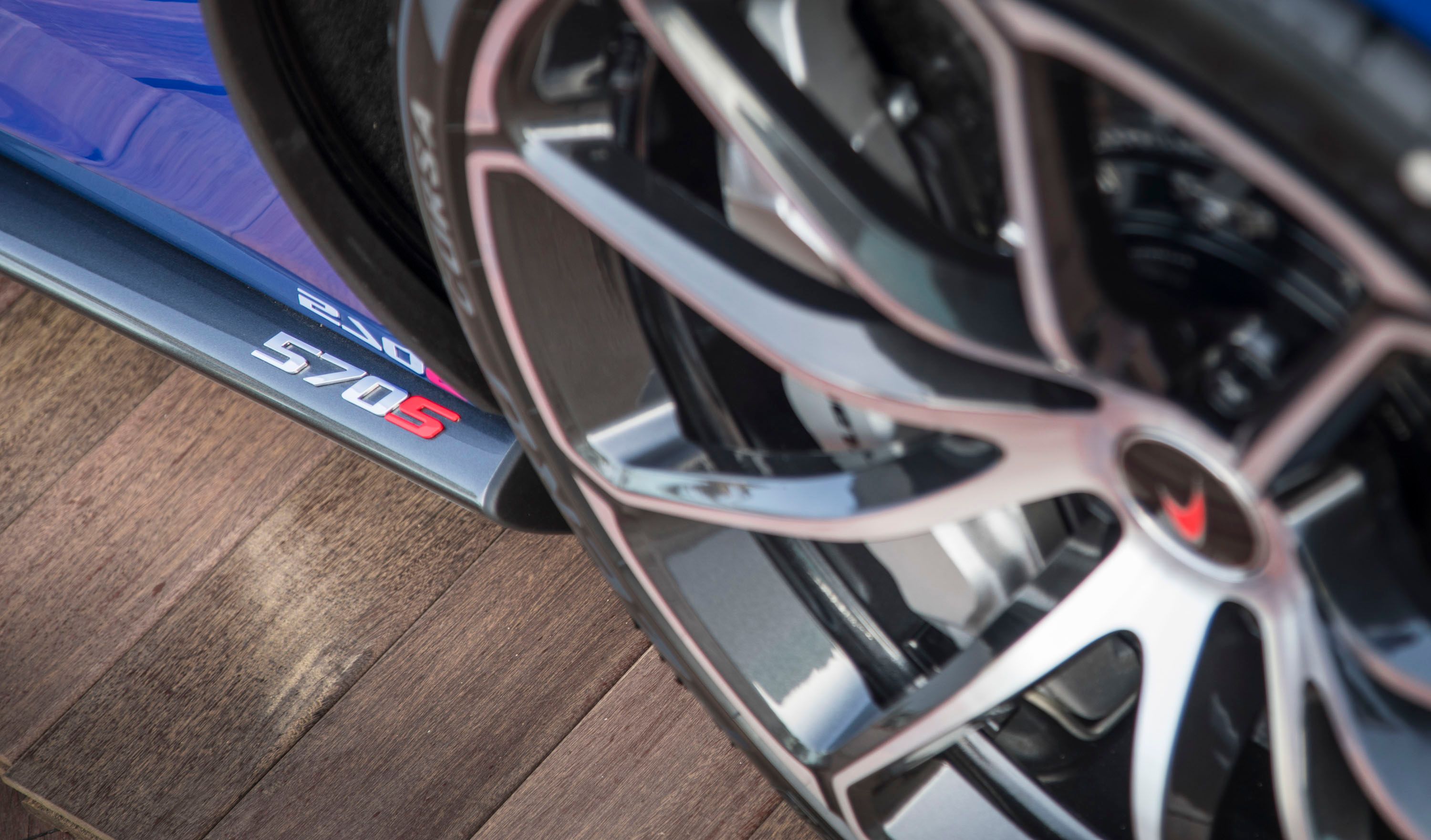
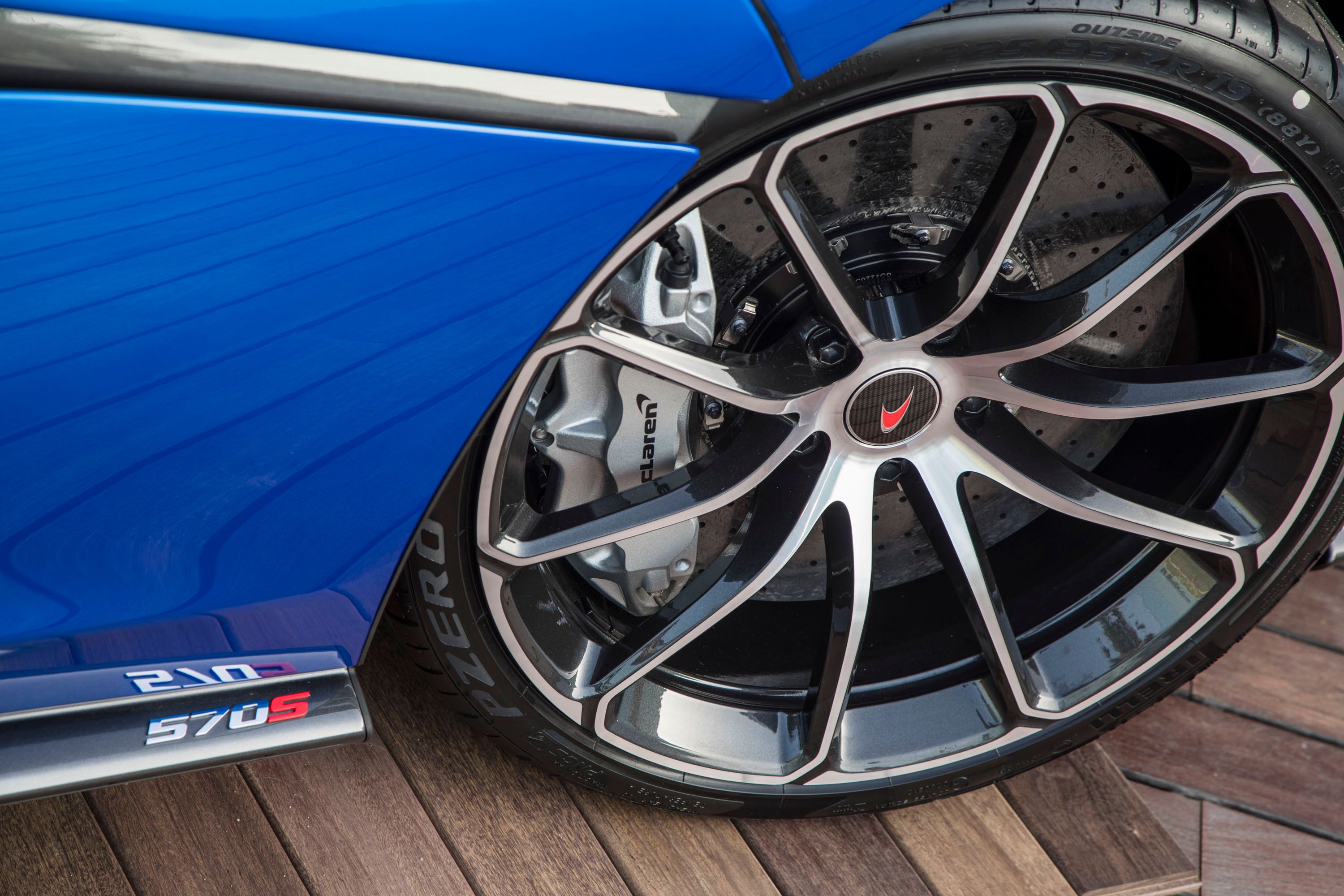
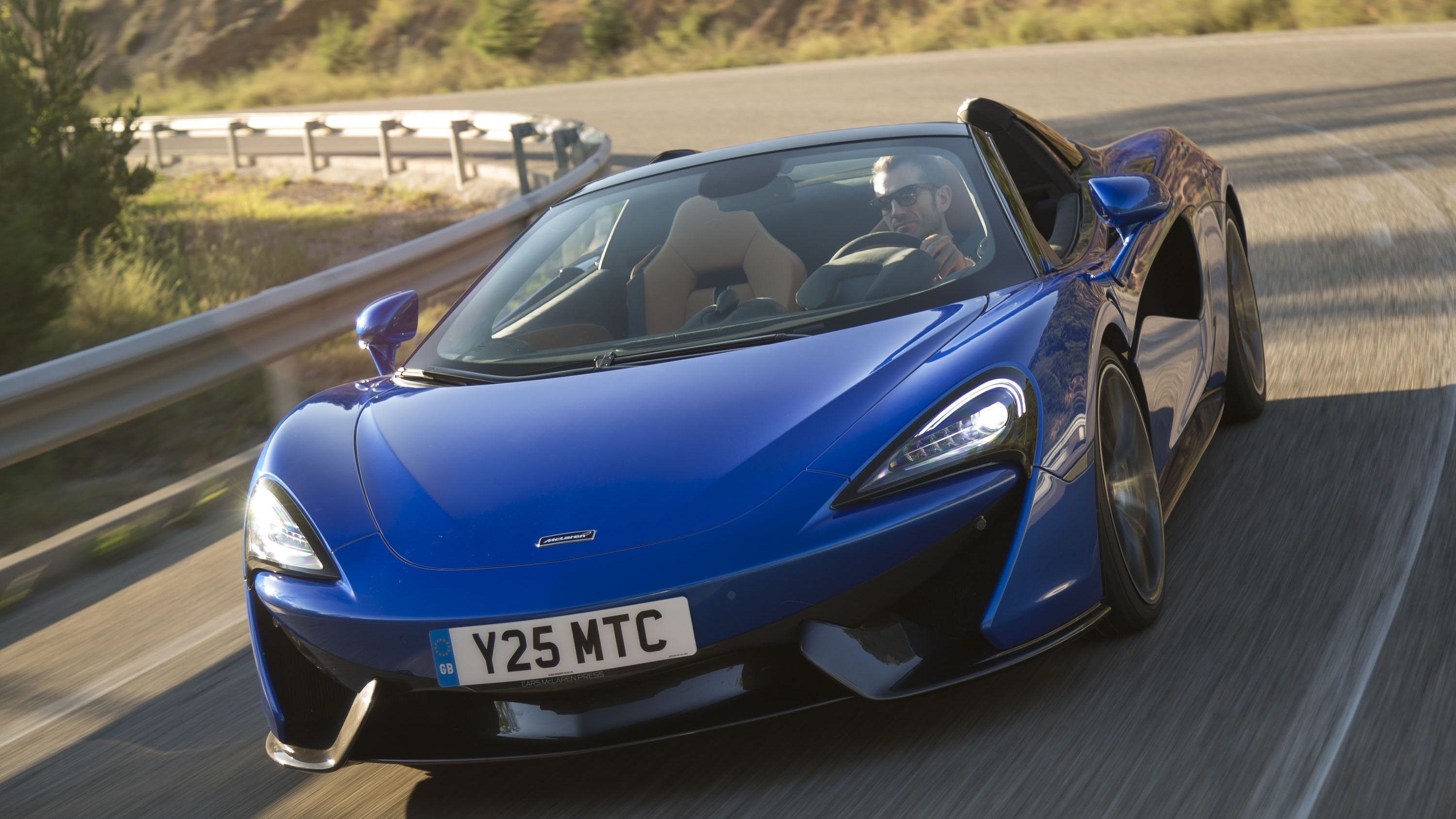
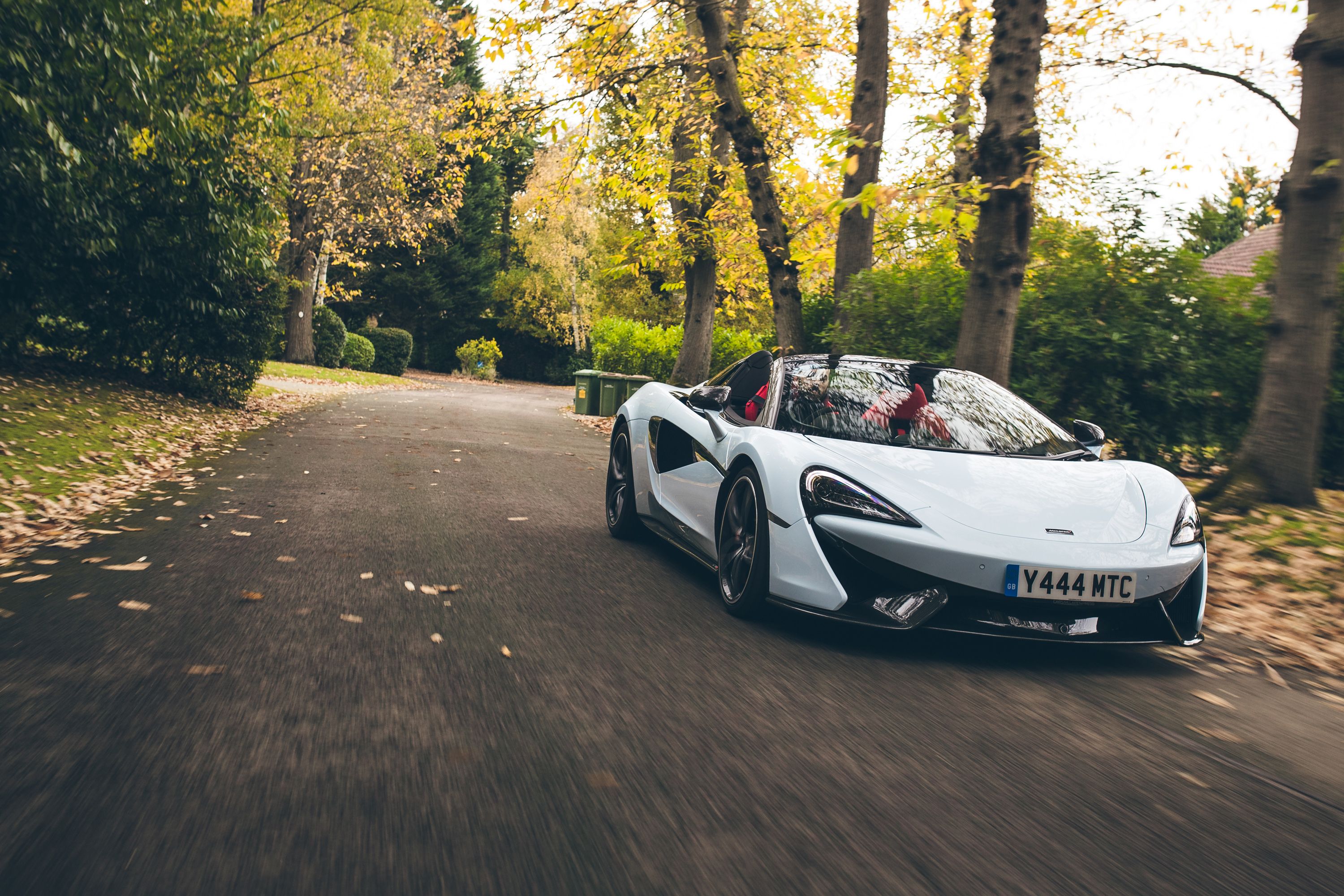
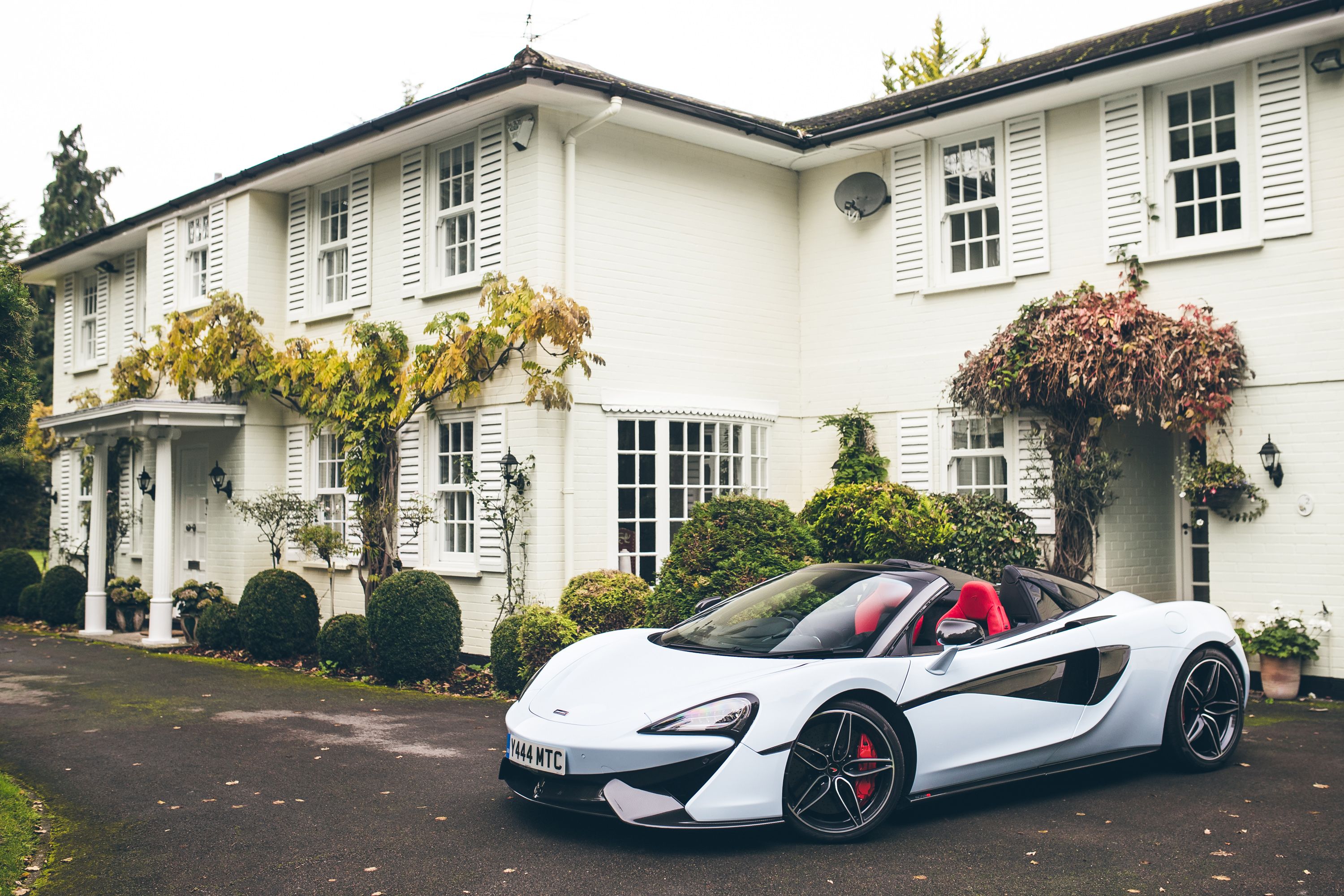
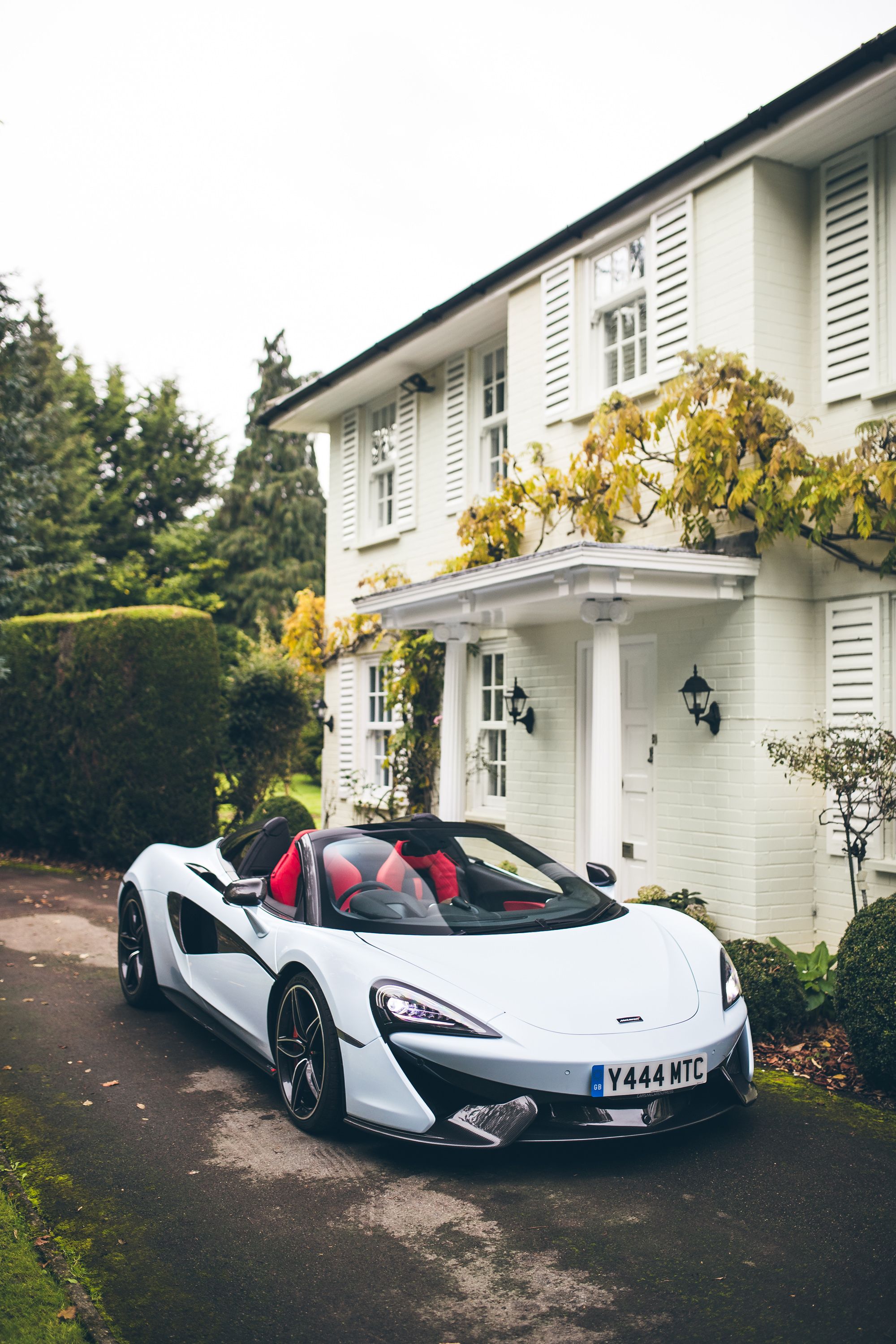
- Make: Array
- Model: 2018 McLaren 570S Spider
- [do not use] Vehicle Model: Array
Exterior
When the 650S, which replaced the McLaren MP4-12C, it arrived with a front fascia inspired by the P1, it became clear that the supercar’s design had become McLaren’s new corporate look. Not surprisingly, the smaller 570S received a similar front end with slightly bigger headlamps and a different bumper. But that’s not to say the 570S doesn’t have its own styling features.
The dihedral doors employ a "floating tendon" to divide the airflow, channeling it into the side intakes, while the rear section, unique to the Sports Series, features flying buttresses and teardrop-shaped glass. A pair of exhaust pipes flanking the diffuser and a new engine lid further set the 570S apart from the 650S.
All these details are also present on the 570S Spider, which is identical to the coupe, except for the folding hard-top roof. But, unlike most convertibles, the 570S Spider remains true to the coupe's original design behind the seats. While cars such as the Lamborghini Huracan or Audi R8 gained redesigned engine covers, the 570S Spider's is identical to the coupe's. This is also due to the fact that the 570S Spider is actually a targa-style model and not a true convertible.
The top is electrically operated from the driver’s seat using one simple control that folds it beneath a tonneau cover that rises automatically to accommodate the lowered panels. The roof can be opened or closed in just 15 seconds, at vehicle speeds of up to 40 km/h (25 mph). A glazed wind deflector can be electrically raised or lowered at the push of a button, providing further protection at high speeds. The deflector reduces wind-buffeting when the roof is down and it can be lowered when the roof is raised to allow additional sound and fresh air into the cabin.
Owners wanting to enjoy more of the V-8's powerful exhaust note can specify an optional sports system that features an ESG to channel exhaust sound towards the cabin, via the area beneath the tonneau cover.
McLaren claims that the retractable hardtop was designed "to withstand the severest conditions and is significantly more weather- and fade-resistant than fabric." Despite the more complex construction, the operating mechanism adds just 46 kg (101 pounds) to the weight of the coupe.
Exterior Dimensions
|
Length (Inches) |
178.3 |
|
Wheelbase (Inches) |
105 |
|
Height (Inches) |
47.3 |
|
Width, with mirrors, (Inches) |
82.5 |
|
Width, mirrors folded, (Inches) |
80.5 |
|
Width, without mirrors, (Inches) |
76 |
|
Track front/rear (Inches) |
65.9/63.7 |
Interior
As you might have already guessed, the 570S Spider’s interior is also identical to the Coupe’s, with the added feature of infinite headroom when the roof is packed away.
Like every McLaren cabin so far, the 570S’ has been designed around the driver, with a focus on functionality and visibility. But the new model was also conceived to offer improved day-to-day usability and enhanced roominess, two very important features when competing against the popular Porsche 911. The ergonomic design of the cabin provides the most usable space of any McLaren to date, which is paired with a full infotainment system including a newly launched digital instrument cluster and seven-inch touchscreen with climate control, Bluetooth connectivity, and either DAB digital or Sirius satellite radio.
But is it luxurious enough to compete against the 911? Definitely; as McLaren provides leather-wrapped seats, leather-trimmed dashboard, and steering wheel as standard. Further customization is possible using McLaren’s extensive options list, which includes a wide range of Alcantara, Nappa leather, and carbon-fiber selections. A McLaren Audio Plus 8-Speaker Upgrade System and bespoke Bowers & Wilkins 12-Speaker Premium Audio System with 1,280-Watt surround sound are also available. The Brits also mention the availability of custom interior specification similar to those introduced on the 675LT.
Customers looking for a race-inspired feel behind the wheel can have the standard seats replaced by racing units. The 570S Spider might be a convertible, but that doesn't mean it can't handle a weekend at the race track.
Drivetrain
Motivation is obviously provided by the same twin-turbo, 3.8-liter V-8 engine powering McLaren’s entire lineup of supercars and sports cars (minus the 720S, which uses a larger, 4.0-liter unit). The mill comes with the exact same specs as the 570S Coupe, meaning it cranks out 570 PS (hence the name), which converts to 562 horsepower, and 443 pound-feet of torque.
Interestingly enough, despite the Spider being 101 pounds heavier than the Coupe, it's just as fast from 0 to 62 mph, with the benchmark set at 3.2 seconds for both vehicles. The drop-top is indeed a tenth-second slower from 0 to 124 mph (9.6 versus 9.5 seconds), but it doesn't sound like something customers would complain about.
Much like its coupe sibling, the drop-top is slower than its Porsche-badged rival, which charges from 0 to 62 mph in three seconds flat. However, the McLaren has a superior top speed at 204 mph, but it's important to note that this figure is only available with the roof in place. In convertible mode, top speed drops to 196 mph, which places it two mph below the slower Porsche 911 Turbo Cabriolet.
But maybe more importantly to sports car enthusiasts, the 570S Spider is significantly lighter that its German rival. Despite gaining some 100 pounds, the 570S Spider is more than 500 pounds lighter than the 911 Turbo S and at least 100 pounds lighter than the Porsche 911 GT3. Likewise, it should deliver a class-leading power-to-weight ratio of at least 400 horses per ton.
The 570S Spider is also equipped with a stop-start system that contributes to overall efficiency; the sports car returns fuel economy of 10.7 liters per 100km (26.6 mpg) on the NEDC combined cycle and CO2 emissions of just 249g/km. By no means a Prius, but not bad for a performance vehicle.
Drivetrain Specifications
|
Engine configuration |
M838TE engine, 3.8 litre twin-turbo V8, 3,799cc |
|
Drivetrain layout |
Longitudinal mid-engined, RWD |
|
Power |
562 HP @ 7,500 RPM |
|
Torque |
443 LB-FT @ 5,000-6,500 RPM |
|
Transmission |
7-Speed seamless-shift gearbox (SSG) |
|
0 -60mph |
3.1 seconds |
|
0-200 km/h (0-124 mph) |
9.6 seconds |
|
0-400 m / ¼ mile |
11.0 seconds |
|
Maximum speed (roof raised/roof lowered) |
204/196 mph |
|
200 – 0 km/h (124 mph – 0) braking |
5.3 seconds |
|
100 – 0 km/h (62 mph – 0) braking |
3.2 seconds/32 metres |
|
Weight |
3,302 Lbs |
Chassis, Suspension And Brakes
The 570S Spider also employs McLaren’s carbon-fiber, MonoCell II chassis, specifically tuned for day-to-day usability. The chassis weighs less than 176 pounds in the 570S Coupe, but it’s strong and stiff enough to provide optimum levels of performance and protection, according to the company. The suspension system uses independent adaptive dampers with front and rear anti-rollbars and dual wishbones, and it should be transferred into the Spider with the same specifications and three modes -- "Normal", "Sport" and "Track." Stopping power comes from carbon-ceramic brakes, while grip is provided by Pirelli P Zero Corsa tires.
Prices
U.S. pricing for the 570S Spider starts from $208,800, which accounts for a $23,900 premium over the coupe, which retails from $184,900. In the U.K., the sports car costs £164,750 in the U.K., a £21,500 or 15-percent premium over the coupe.
References
Read our full review on the 2018 McLaren 570S Coupe.
Competition
Porsche 911 Turbo Cabriolet
The Porsche 911 Turbo is already an established icon and McLaren's main contender in this niche. Updated recently with new features front and rear and revised tech inside the cabin, the 911 Turbo Cabriolet is faster and more powerful than ever. The 3.8-liter flat-six engine cranks out 540 horsepower in the Turbo model, sending flying from 0 to 60 mph in three seconds with the Sport Chrono package. Top speed is limited at 198 mph. If that's not enough, the Turbo S comes with 580 horsepower on tap and a 0-to-60 mph sprint only 2.9 seconds with Sport Chrono. Top speed for this model is estimated at 205, just a hair faster than the 570S. The 911 Turbo's tremendous performance is also the results of an all-wheel-drive system, which makes it less of a purists's car compared to any McLaren out there. Prices are pretty much similar, starting from $174,100 for the Turbo Cabriolet and $203,000 for the Turbo S Cabriolet.
Find out more about the Porsche 911 Turbo Cabriolet here.
Audi R8 Spyder
Although not as old as the 911, the R8 is also an established vehicle in the sports car market and the 2017 model year is the first for the redesigned Spyder model. Now sporting the more angular lines of the second-gen R8, the Spyder has a more menacing stance and a unique design compared to anything else on the market. It's also better suited to go against the 570S Spider due to its mid-engined configuration (remember, the 911 Turbo is rear-engined!). The R8 also has the biggest engine of the pack, using a 5.2-liter V-10 shared with the Lamborghini Huracan. Output is rated at 540 horsepower and 398 pound-feet of torque, which returns a 0-to-60 mph sprint of 3.5 seconds and a top speed of 197 mph. For 2018, Audi also launched the Spyder Plus, which comes with 610 horses and a quicker, 3.2-second sprint to 60 mph, to go with a top speed of 204 mph. Pricing for the R8 Spyder starts from $175,100, while the Spyder Plus is expected to fetch in excess of $200,000.
Find out more about the Audi R8 Spyder here.
Conclusion
Along with the 540C Spider and 570S GT, the 570S Spider is part of the next logical step in expanding the Sports Series lineup. Granted, it didn't bring anything new except for the removal top, but that's exactly what makes it special, because being able to cruise in an open sports car is a remarkable experience. What's more, with Porsche already offering a convertible version of the 911 Turbo S and Audi->ke14 having launched a drop-top R8, McLaren had no choice but to join this niche in order to keep customers happy.

